December 1 - 31, 2025: Issue 649
Profiles of the Year: 2025
Some of what's been happening and has happened in 2025 runs below.
January
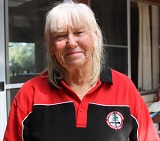 Virginia Head: Tribute
Virginia Head: TributeOn Boxing Day, December 26 2024, Virginia Head, Beloved Wife of Malcolm and Loving Mother of Diana and Michele, lost her battle with cancer.
A long-term Member of Avalon Beach SL:SC, the Barrenjoey Breakers swimming group, Pittwater Outrigger Racing Club and the Manly Warringah Kayak Club, Virginia had a passion for watersports and was a very kind lady who sought to save lives in the water.
Virginia made her time available to all who had never swum to teach them 'how to' and extended this to looking after those who had never swum in the ocean and wanted to have someone beside them who would introduce them to this environment.
Virginia Head was that lady who would stand beside you, or more accurately, swim beside you.
Thousands of people were enabled to take to the water through her six decades of teaching others to swim.
In 2023 she was spotted taking part in the Bilgola SLSC 'Billy Ocean swims' - she could still kick, still swim, even if her legs made it hard to negotiate the sand when walking.
Virginia still made it through, and threw her fist up in triumph when she made it back to the beach.
Her love for children, for other people, for inspiring others to 'get in the swim' or try paddling, her favourites, will remain in the hearts of all those whose lives she touched.
As a volunteer Patrol member of Avalon Beach SLSC Virginia was known for her sharp eyes and not missing her duties until she could no longer serve the community in this capacity.
As a member of two paddling clubs in our area Virginia would encourage people to get involved either as a team member or as a solo athlete, sharing how fit and free taking to the water and exploring our area via kayak or outrigger will make you, and how getting to represent your club, state or country will connect you to those who share this passion across the world.
As a mark of respect, love and celebration of a lovely lady who will be much missed in our community, her Profile from 2014 runs this Issue.
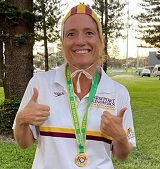 Rebecca Capell: Vice President of Newport SLSC
Rebecca Capell: Vice President of Newport SLSCAs the proud mum of two boys and a girl 'Bec' Capell has long been focussed on equipping her by no young adults with everything and anything they need to become all they want to be.
Her focus has been on keeping it real and relative. After joining Newport SLSC as a Nippers mum, Bec has undertaken various roles in the club - everything from womanning the shop to looking after the littlies and now looking after members across the club structure as VP of Newport surf club.
Bec introduced 'The Top 5' at Newport, a newsletter featuring the top five stories for club members, when her role was Member Protection Information Officer, contributing a story for the first edition on Tips for Schoolies and how to stay safe if attending. The other 4 stories for that edition were about Newport athletes excelling at surf sports, a working bee on the garden at the front of the club, and the Return and Earn scheme for bottles the club had recently signed up to and Bec again penned an update on Taking 3 for the Sea the Nippers were involved in, setting up the under 7s, 8s and 9s to be current and future custodians of their own and any other beach they find themselves on.
Bec is also an athlete - especially in water sports; a love and passion that commenced when she was young and has been renewed through the opportunities being a member of a surf club provides for all ages and all genders.
Bec won Gold in the 2022 Aussies in the Champion Lifesaver event. That had been preceded by a Silver in the same event at the NSW State Championships in 2020. Bec also takes part in the Patrol Competition team event, again with great team results from Newport SLSC's volunteers working as one crew.
However, getting in the swim of things runs in the family with her daughter Abigail part of the next generation of athletes coming out of the club that sees commentators at Branch, State and National carnivals calling out 'Newport!, Newport!, Newport!' as competitors cross the finish line.
Surf sports have their grounding in honing the skills that enable surf lifesaver volunteers to save lives on the beach and in the water; everything from sprinting on the sand to being able to successfully complete a surf rescue via a range of equipment, and should that be needed, complete first aid and resuscitation once a patient is brought back to the shore.
The carnivals held locally and across Australia also bring together old friends and continue to foster the camaraderie of one team all working together to look after each other and the hundreds of thousands of people who visit our beaches each Season. This, in essence, creates an extended family centred in every surf club - a foundation available for all Bec says gives everyone a place to belong to because all are welcome as all belong - there is something you can do in your local surf club to help your community, help complete strangers, even if you are not an athlete.
This week a few insights into a Season at Newport SLSC from a lady who has undertaken 'Vigilance and Service' for over two decades on glorious Newport Beach.
New Fire Truck for Ingleside Rural Fire Brigade
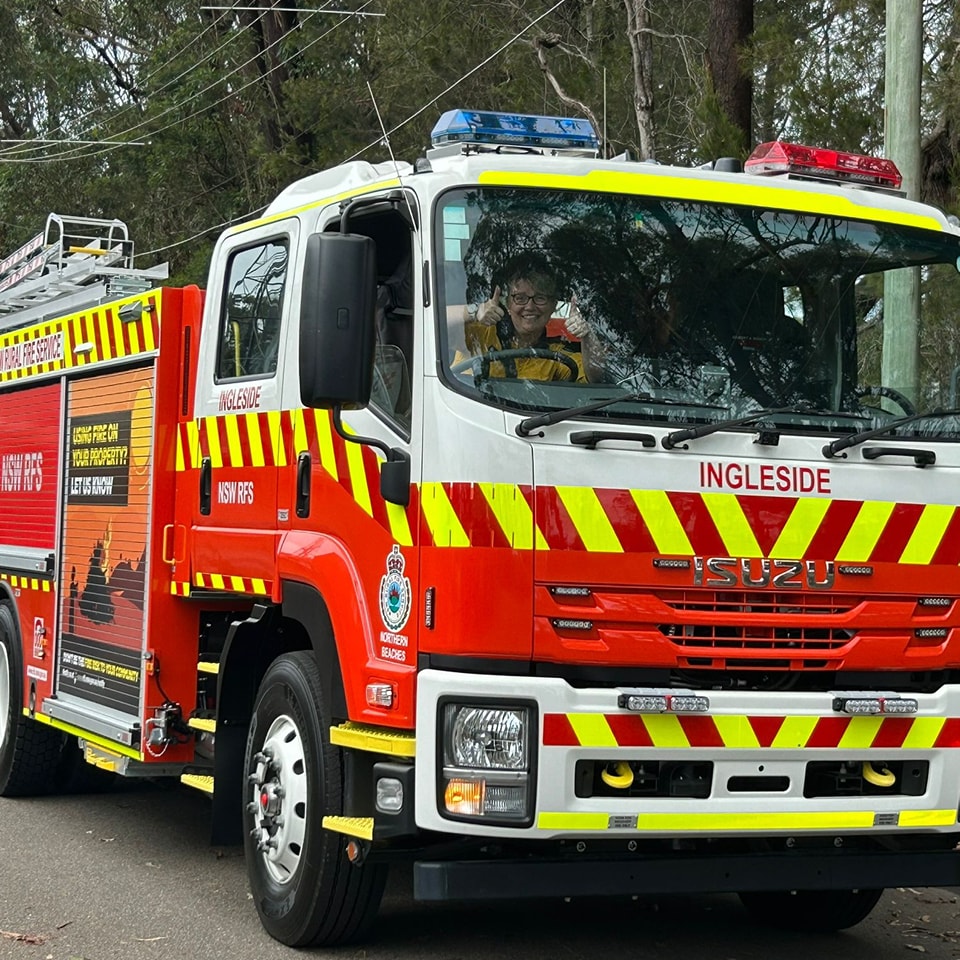
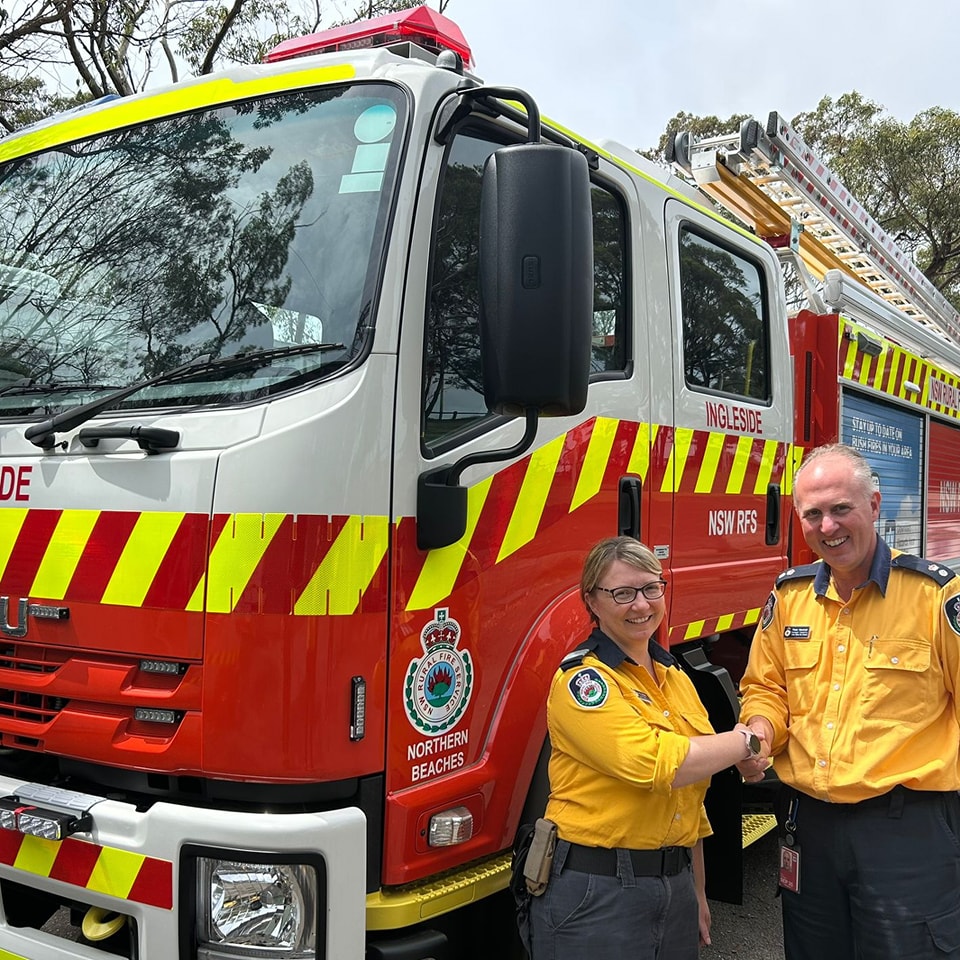
.jpeg?timestamp=1737197871072)
Tilly Rose Cooper's Swimwear Drive For Fijian Youngsters
Anyone interested in having a clean out of children’s outgrown swimwear, rashies and wetsuits in the next few weeks, please bring them along to your local surf club and put them in the special bin for a clothing drive for youngsters in Fiji. Community surf clubs from Palm Beach to Collaroy are supporting Tilly Rose Cooper, a 13-year-old Mona Vale SLSC SRC member, who is collecting these items for the community of Tagaqe Village in Fiji.
Tilly explained during the week her family had gone to Fiji as her grandparents were renewing their vows.
‘’Tagaqe Village in Fiji is a very special place, you have to be invited to be allowed to go there. I started talking with the other kids there – they asked if I played football – and then we went for a swim.’’ Tilly told the news service this week
‘’I noticed then they didn’t have any swimmers – they were going in in their everyday gear or their school uniforms because they didn’t have swimmers. With Christmas, and so many of us getting new swimmers because we have outgrown our other ones, I thought it would be good to repurpose these so they could have swimgear too.
‘’This would allow them to go swimming in swimgear instead of their clothes, which is a drowning hazard. We’d also be saving them from landfill by repurposing them.’’ Tilly said
How much gear do you need Tilly?
‘’As much as possible and whatever people can give. We need swimmers, rashies, t-shirts, shorts, hats, thongs, sunblock in ages from littlies through to teenagers. Everything really, and gently used or new would be great. We’re hoping to collect around 20 boxes of swimgear to send over. ‘’
‘’The surf clubs from Palm Beach to Collaroy will have a box with this sign people can drop it off to – that way our community will be helping this community.’’
Tilly is also looking for a sponsor to help her ship the swim wear over. If you want to be the sponsor for this, or can help out in another way, please email her mum Allison: allison@steamit.com.au
Details of the Fijian Clothes Drive for Youngsters
- What to Donate: Gently used or new swimwear, rashies, board shorts, and t-shirts.
- When: Now until February 9th.
- Where: Donation boxes will be placed at participating Surf Life Saving Clubs, including during nippers and other club activities, from Palm Beach SLSC to Collaroy SLSC.
More via Instagram at: www.instagram.com/myfijianclothesdrive
Pittwater MP Jacqui Scruby said this week; ‘‘There aren’t many 13-year-olds who come back from a holiday in Fiji with a mission to give back to the community they have visited. Tilly is a changemaker and embodies the Spirit of Pittwater, making a difference in our community as a member of Mona Vale Surf Lifesaving Club and beyond.
‘’I encourage everyone to donate swimwear for this wonderful cause. I look forward to recognising Tilly in parliament with a Community Recognition Statement in the upcoming sitting weeks.’’
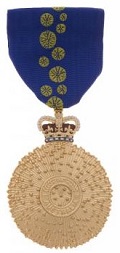 Australia Day 2025 Honours List
Australia Day 2025 Honours ListAustralian Honours: Dr Cameron John Bell of Ingleside (AM), Deborah Killelea of Newport (AM), Lisa Blair of Warriewood (OAM), Lynette Foley of Collaroy (OAM), Martin Meredith of Collaroy (OAM, Peter Owens of Terrey Hills (OAM).
Council's Recognitions: Kevin Lee of Belrose, Ian Hocking of Bilgola Plateau, Saskia Rundle Trowbridge of Narrabeen, Chris Turnbull of Clontarf, Glenn and Clare Wysman of The Link Church, Lifeline Northern Beaches Book Fair Volunteers
Council's Outstanding Community Service Awards 2025: Nicholas Chambers of Cromer, Roland Davies of North Manly, Bruce Davis of Curl Curl, Vipul Jajal of Dee Why, Laurelei Moore and sister, Gay McLindin of Dee Why, Leanne Shanahan of Warriewood, and Mel Thomas of Clontarf.
Avalon Beach SLSC's Volunteers on Patrol: January Long Weekend
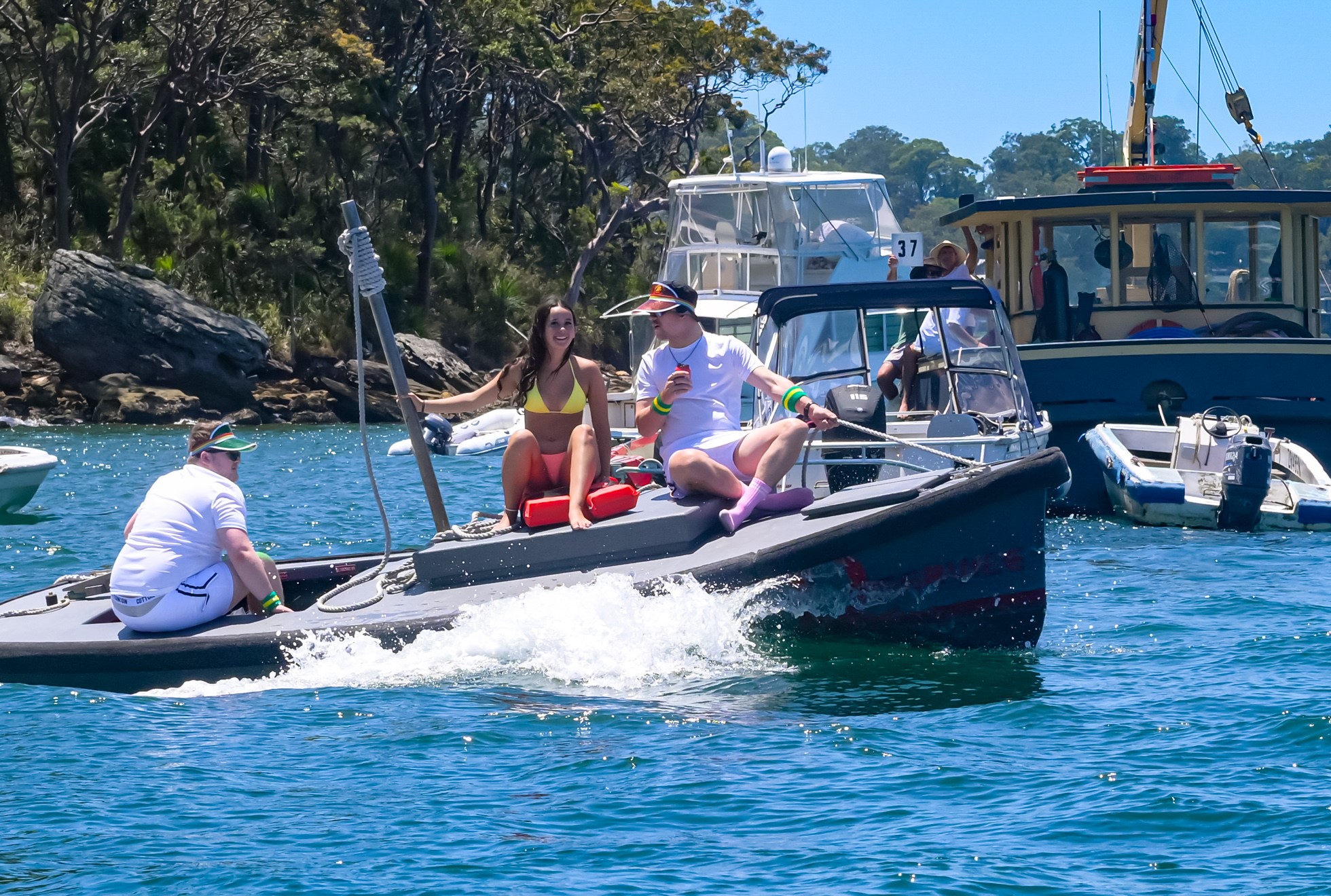
Louis Tilly Crowned 2025 Australian WASZP Champion
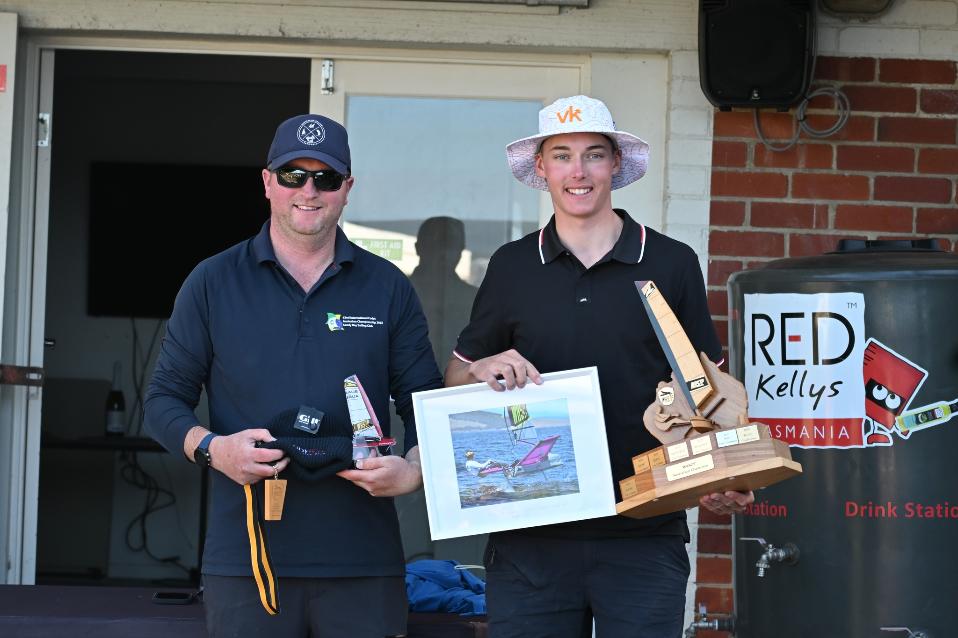
February
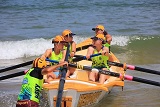 Newport SLSC's 'Stingers' are 2025 Trans-Tasman Australian representatives
Newport SLSC's 'Stingers' are 2025 Trans-Tasman Australian representatives On December 6 2025 Surf Life Saving Australia announced the Australian Surf Boat Team and the Australian Development Surf Boat Team, selected to represent Australia in the upcoming Trans-Tasman Surf Boat Test Series in New Zealand.
Fifty-nine surf boat crews from Victoria, Queensland and New South Wales competed at the National Team Selection Event (NTSE) at Ocean Beach, NSW, with the top crews earning the honour of representing Australia at Waihi Beach, New Zealand in 2025.
The Australian Surf Boat Team will be represented by back-to-back representatives, Currumbin Cockatoos (Open Women) and Bulli Gold (Open Men), who were successful in the Open Women and Open Male competitions at the NTSE. Both Open crews were victorious in seven out of eight races.
The Australian Development Surf Boat Team will be represented by Newport Stingers (U23 Women), who were undefeated in all eight races, and South Curl Curl Burley (U23 Men).
Newport's U23 Female team, the 'Stingers', are Alani Barros, Zoe Ellis, Ella Gale, April McCarney and Michael King – Sweep.
This is the second time in recent years a crew from Newport SLSC has represented Australia in the Trans Tasman in New Zealand and on the waters off Waihi Beach. In 2017 the Newport 'Pistol Shrimps', which included Michael's then 19 year old daughter Zoe, along with Under 23 2017 Trans-Tasman Representatives Celestine May, Katy Hulton, Piret May and Michael King.
First NSW Maritime Blitz for 2025 Now on
- Keep speed to under four knots when entering North Harbour, Manly
- Be extra careful at dawn and dusk
- Don’t anchor in seagrass beds
- Don’t bring dogs or cats onto beaches
Warriewood SLSC News: Junior Lifesaver of the Year Awards + More
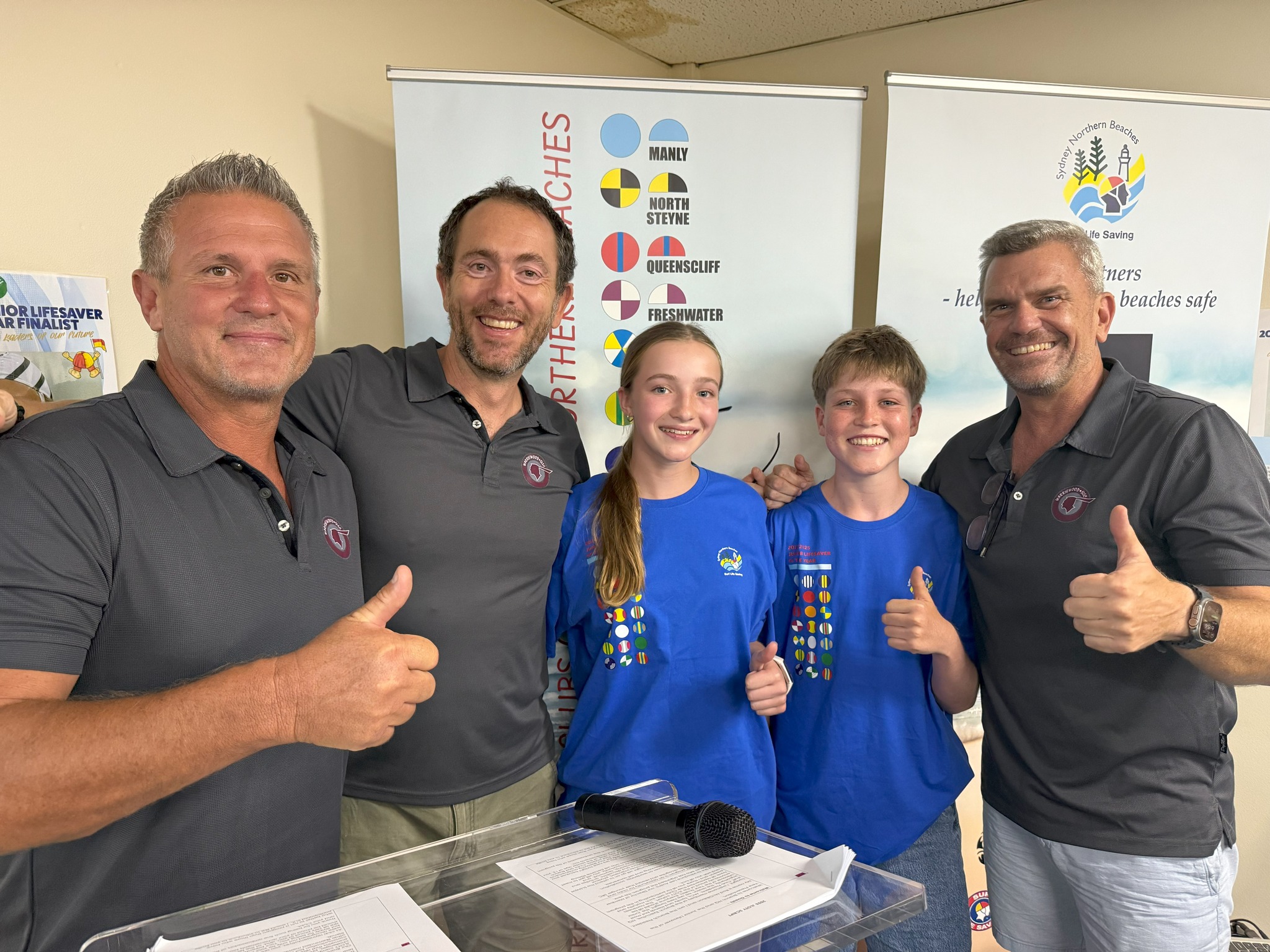
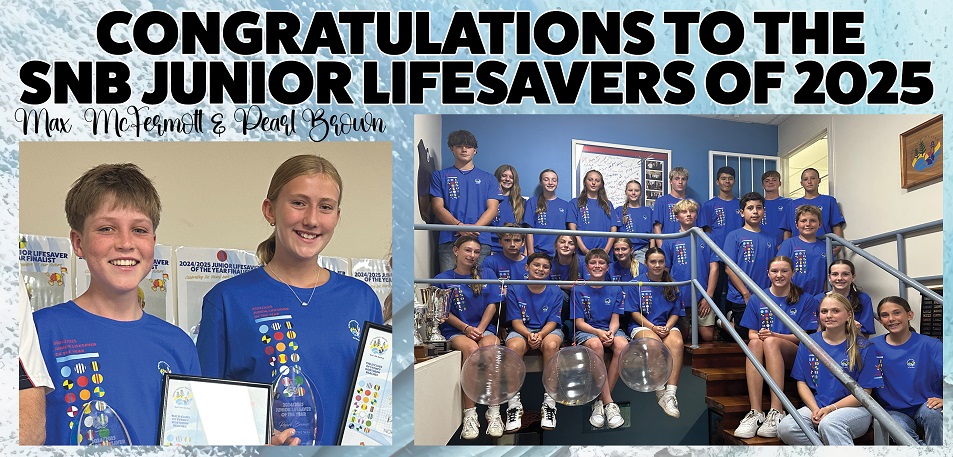
Anzac Community Grant Recipients 2024
- New amenities now open at Barrenjoey Headland
- Newport’s Conner Maggs wins 2024/25 Iron Series
- New Bus Timetable Leaving Commuters Stranded Along Essential Routes, again
- Pittwater Regatta 2025 by Di Pearson
- Australia's climate in 2024: 2nd warmest and 8th wettest year on record: BOM + It’s official: Australia’s ocean surface was the hottest on record in 2024 + Extra Recent Related reports
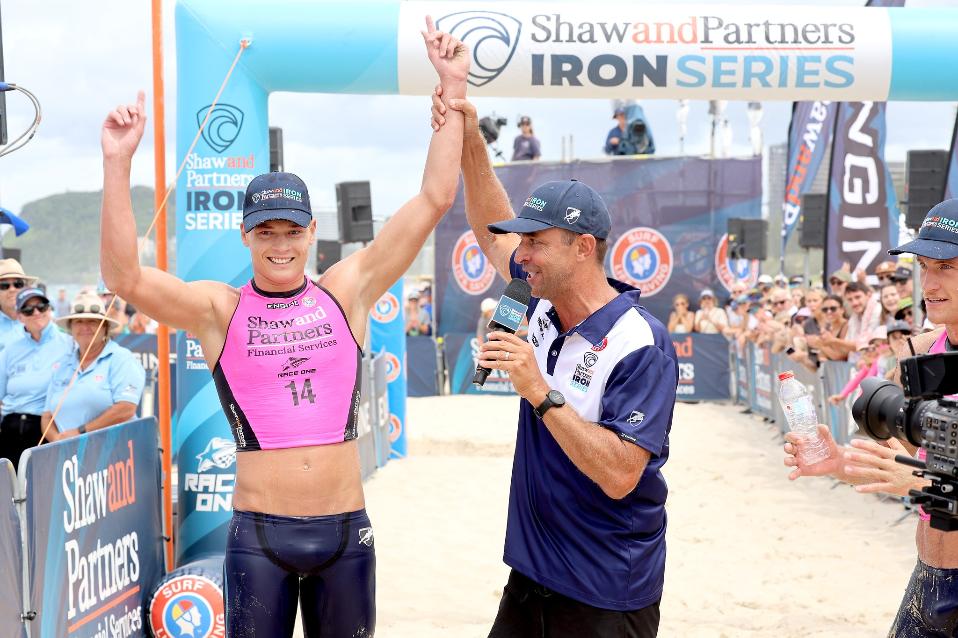
Photo: Conner Maggs Wins!
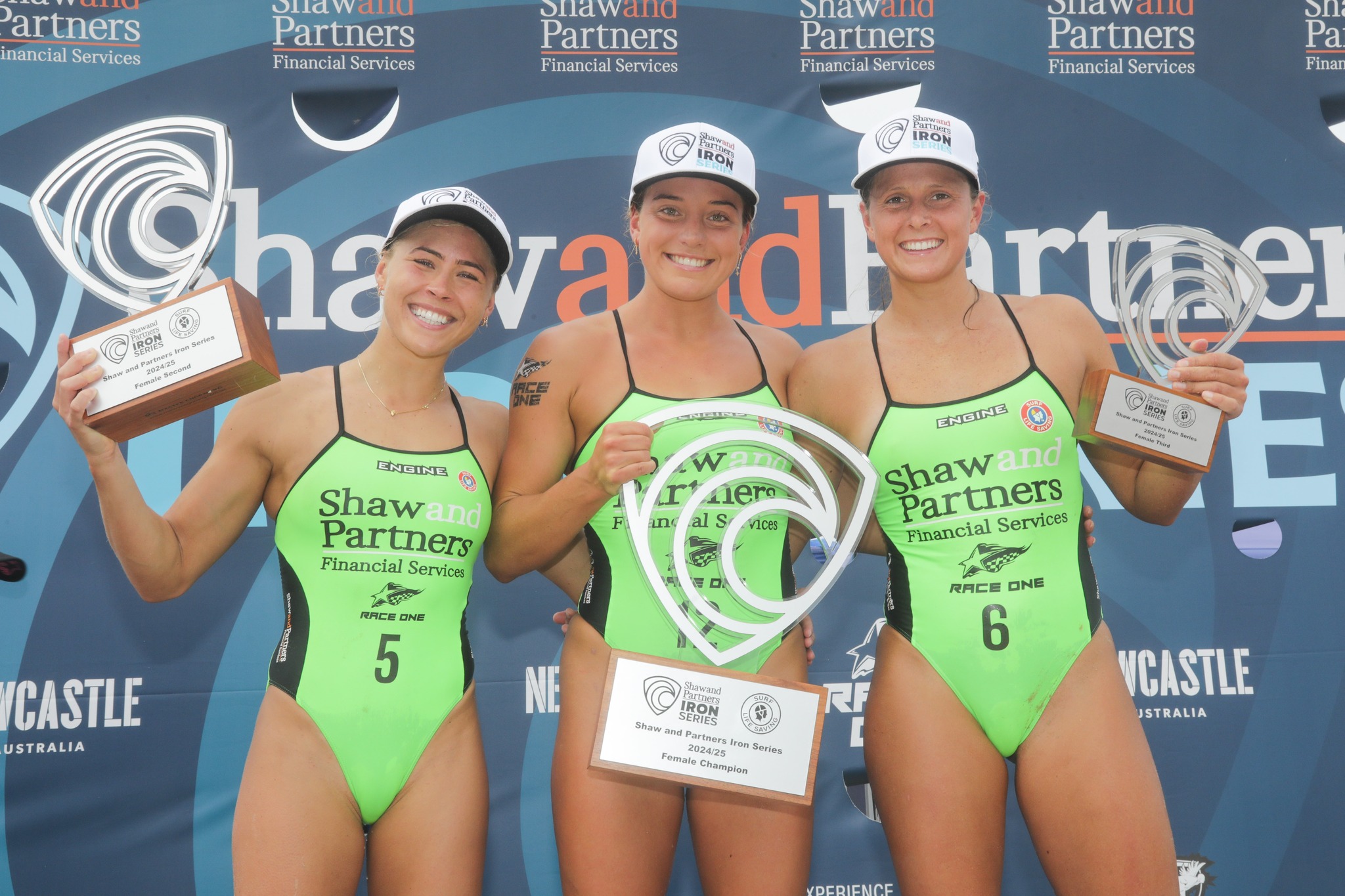
Photos: Shaw and Partners Iron Series. Reports: Shaw and Partners Ironman & Ironwoman Series Updates and Surf Life Saving New South Wales
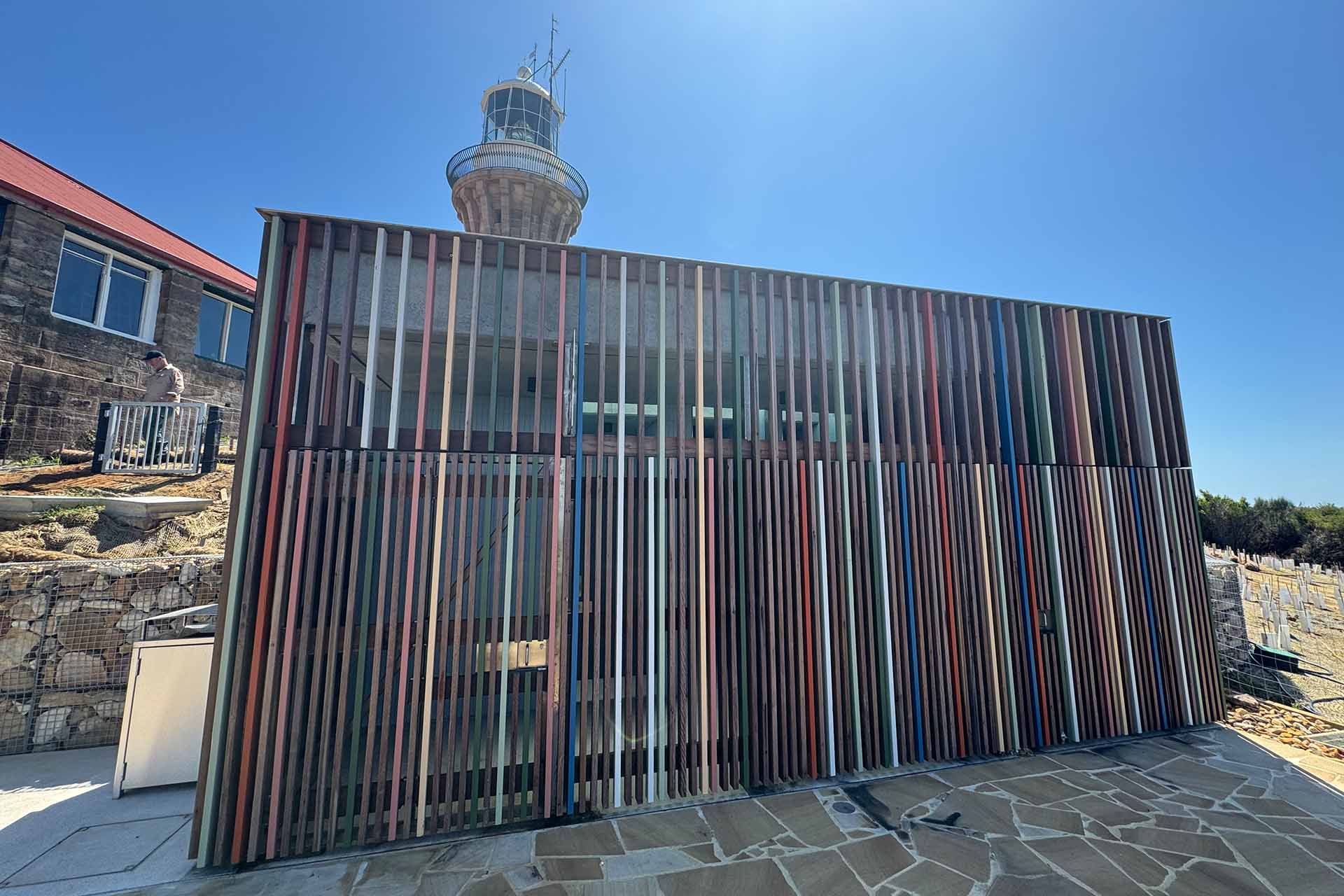
Barrenjoey facilities, Ku-ring-gai Chase National Park. Image Credit: DCCEEW
%20160.jpg?timestamp=1739016143331) Avalon Quilters 'The Sum of Us' Raffle Quilt for Mito Foundation
Avalon Quilters 'The Sum of Us' Raffle Quilt for Mito FoundationThe Avalon Quilters have an amazing raffle quilt they have made to raise funds for the Mito Foundation.
The quilt, appropriately named “The Sum Of Us”, was made last year by Avalon Quilter’s 25 members. It is completely handmade and totals over 4500 one-inch pieces, then finished off with hand quilting.
Details show the personal and colourful choices made by Avalon Quilters for each piece, underlining the title of this beautiful quilt.
Raffle tickets at $2 each, are available from members, who meet in the Uniting Church at Avalon every Thursday, 10-2.30, at Patchwork on Pittwater at Mona Vale, and Avalon Fabrics and Craft, in Avalon Parade.
All tickets sales will go to the Mito Foundation, which Avalon Quilters have been supporting for over a decade through making raffle quilts.
The Mito Foundation supports people affected by mitochondrial disease (mito), funds essential research into the prevention, diagnosis, treatment and cures of mitochondrial disorders, and increases awareness and education about mito.
Narrabeen sports High School's New outdoor seating
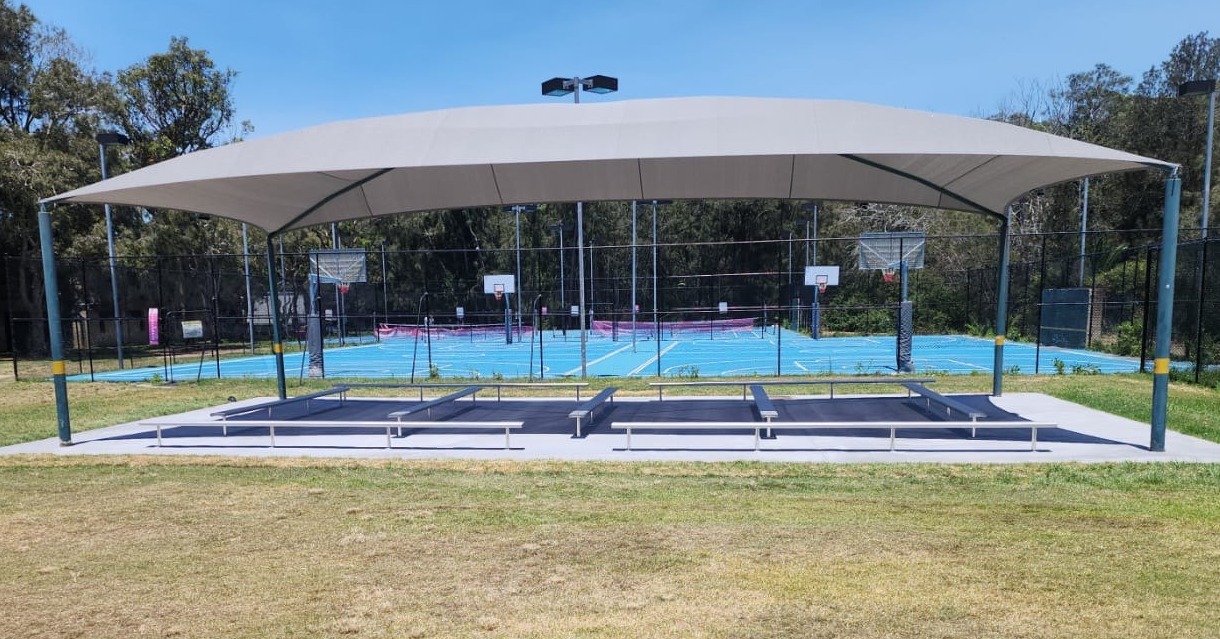
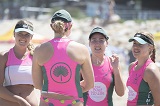 Palm Beach SLSC’s Boat Section: the ‘Palmy Army’
Palm Beach SLSC’s Boat Section: the ‘Palmy Army’The Team Navy Australian Surf Rowers League 2025 Open is currently taking place at Coffs Harbour. Running February 13 to 16, this annual event is one of the favourites of surf boat rowers and sweeps from all over Australia, bringing together old mates and new friends for a long weekend of surf boat competitions which includes the Interstate Championship.
Known as the ‘Palmy Army’, with participants across all Age Divisions, some of these rowers have been team mates for years – with the results you’d expect from people who work for each other in the boat and have finessed their racing and have sweeps who can read the water. Others are just coming into the sport and learning how to get out over dumpers, how to catch a wave back in so you shoot past those who fell off the back of the swell.
Led by Boat Captain Peter Spence, who explains the Palmy Army has built its Boat Section up over the past 20-25 years, the love of this sport has been an integral part of Palm Beach SLSC since just after it was formed in 1921. That passion for surf boats translates to very fit and water-savvy people looking after others as volunteer Patrol Members on the sand each Season.
As we head into the final and BIG Carnivals of the Season; SNB Branch (Feb. 5 to March 1 at Newport and Palm Beach), NSW State Championships (Feb. 28 to March 16 at Freshwater and Queenscliff) and Aussies (on the Gold Coast, Queensland at North Kirra SLSC and Tugun SLSC from 29 March – 6 April) a catch-up with Mr. Spence.
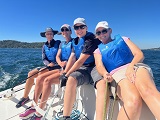 Saltwater Veterans: Sailing For Connection, Healing & Growth
Saltwater Veterans: Sailing For Connection, Healing & GrowthWebsite: saltwaterveterans.org
With the last weekend of Summer upon us - and although they sail year round - a 'dip into the briny' courtesy of the Saltwater Veterans, is more than an appropriate way to bid farewell to the 2024/2025 Season and 'welcome' to all we can do this Autumn.
Saltwater Veterans, originally known as ‘Four Men in a Boat’, was Co-founder Scott Reynolds and three veteran friends with no sailing experience taking to the waters to reconnect with life and each other. Following an 18-year naval career, Scott found the camaraderie, the movement, and the sheer enjoyment of being out on the water had immediate benefits for each veteran’s physical and mental health. Inspired by the effects on his wellbeing, Scott and his wife Jen started volunteering, encouraging more veterans to get involved in sailing.Saltwater Veterans has been operating since 2017, and commenced here, on the waters of Pittwater's estuary.
In 2018 they became the Saltwater Veterans.With a crew of ‘salty volunteers, yacht clubs and sponsors such as Young Veterans and more recently local RSL sub-branches, Saltwater Veterans are now fostering overlapping communities in Sydney, Newcastle, Adelaide, Nowra, Perth and Mooloolaba, and upwards of 80–100 veterans each month on water.
reached an important milestone in September 2022 by officially establishing the SWV Ltd trading as Saltwater Veterans Sailing Project (SVSP) as an Australian Charities and Not-For-Profits Commission (ACNC) registered health promotion charity with Deductible Gift Recipient (DGR) status and as a recognised Australian Sailing club.Your support will ensure a future of camaraderie, skill-building, and meaningful engagement for those who have served our nation.
This week, Manly residents Scott and Jen Reynolds, Co-Founders of the Saltwater Veterans & Saltwater Veterans Sailing Project kindly lend a few more insights into this outstanding organisation.
Marine Rescue Broken Bay News
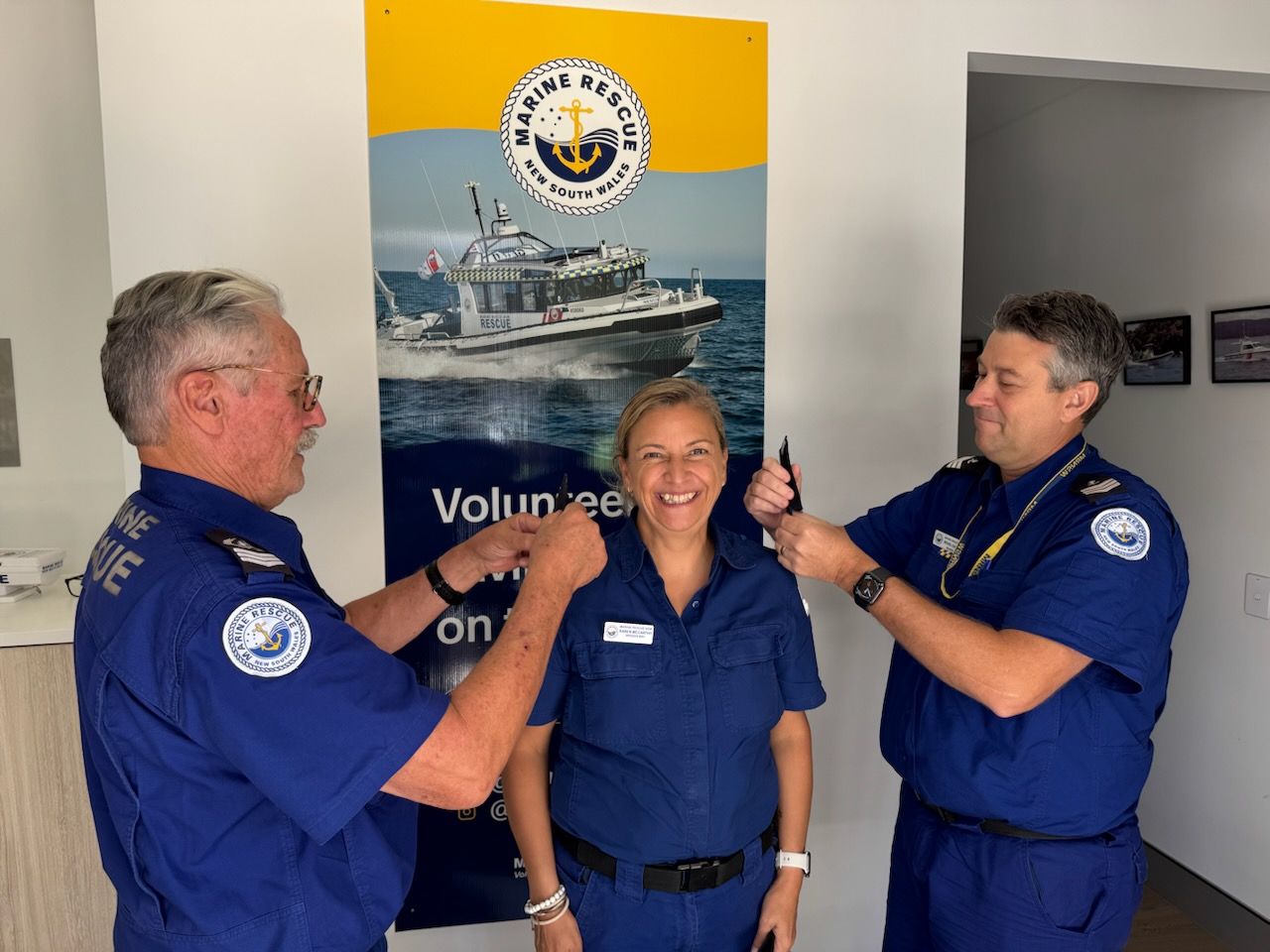
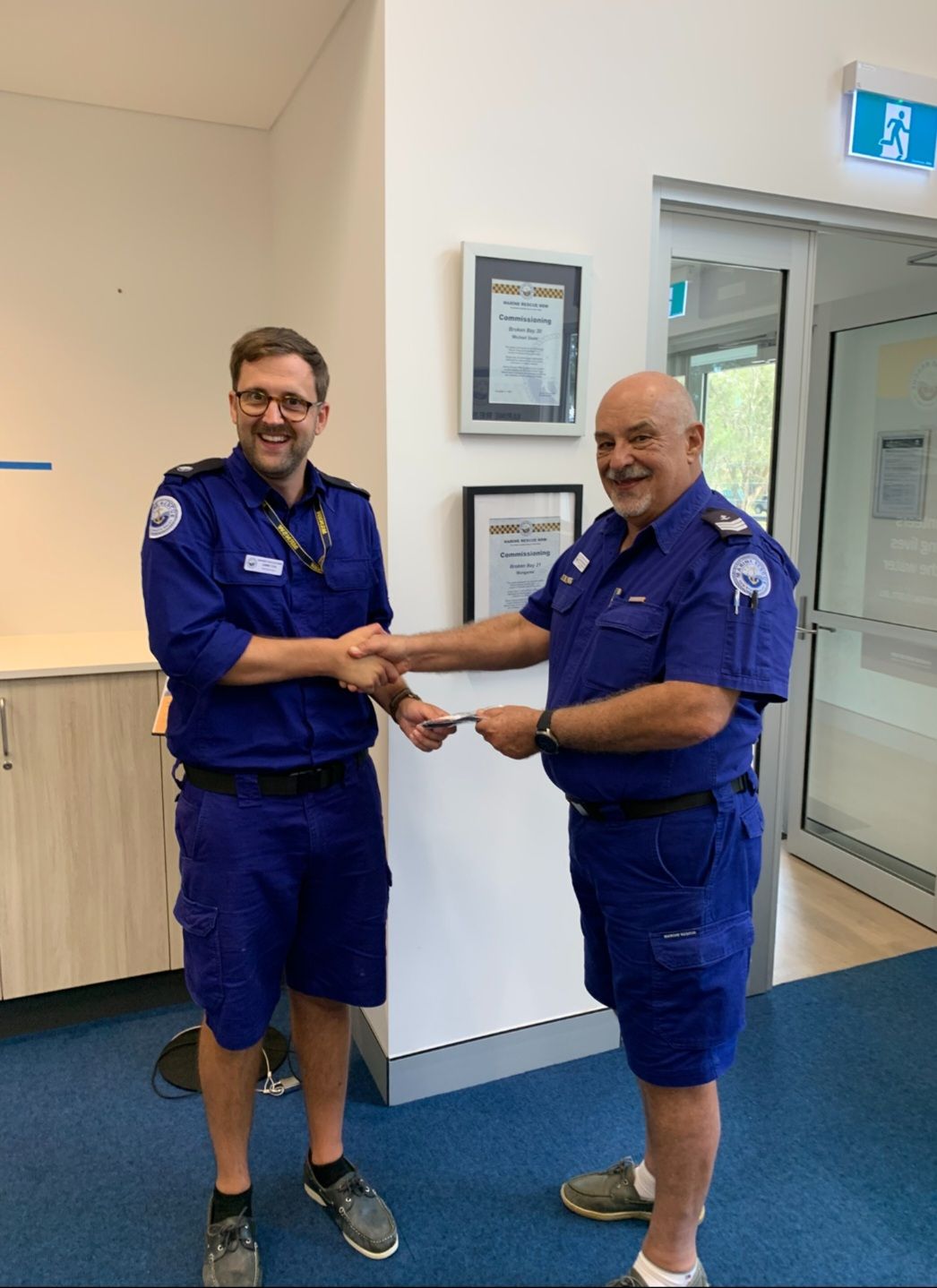
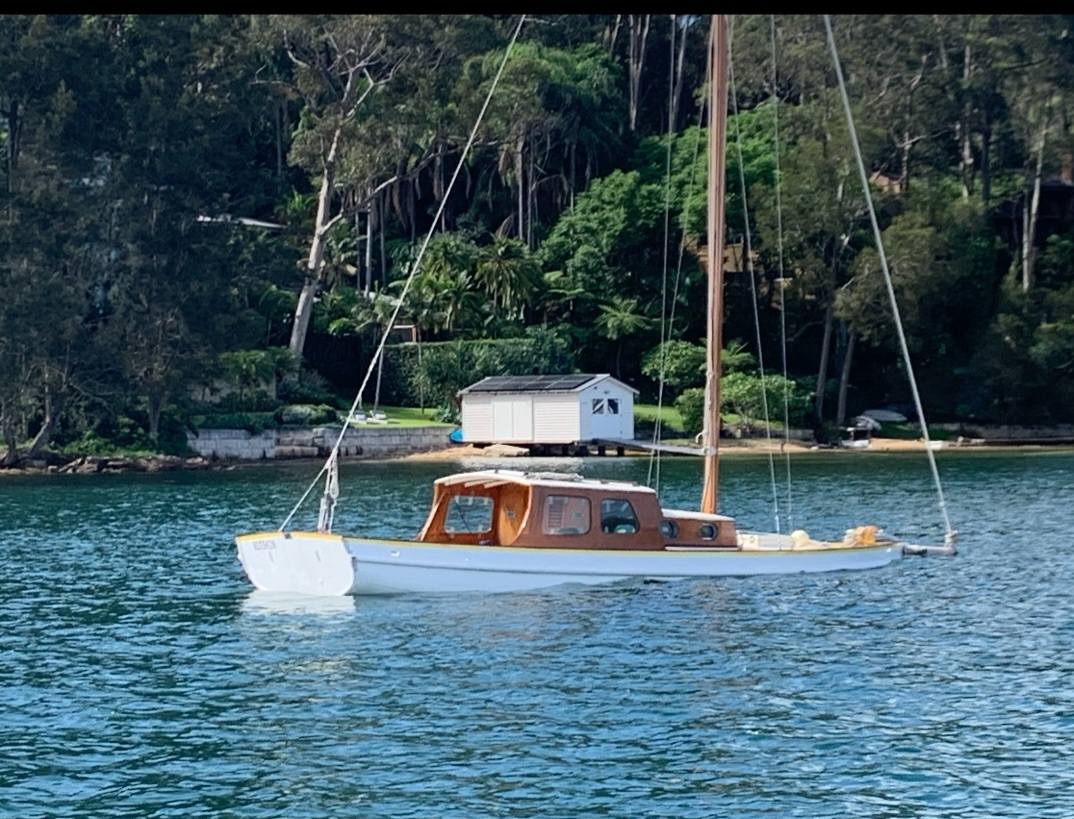
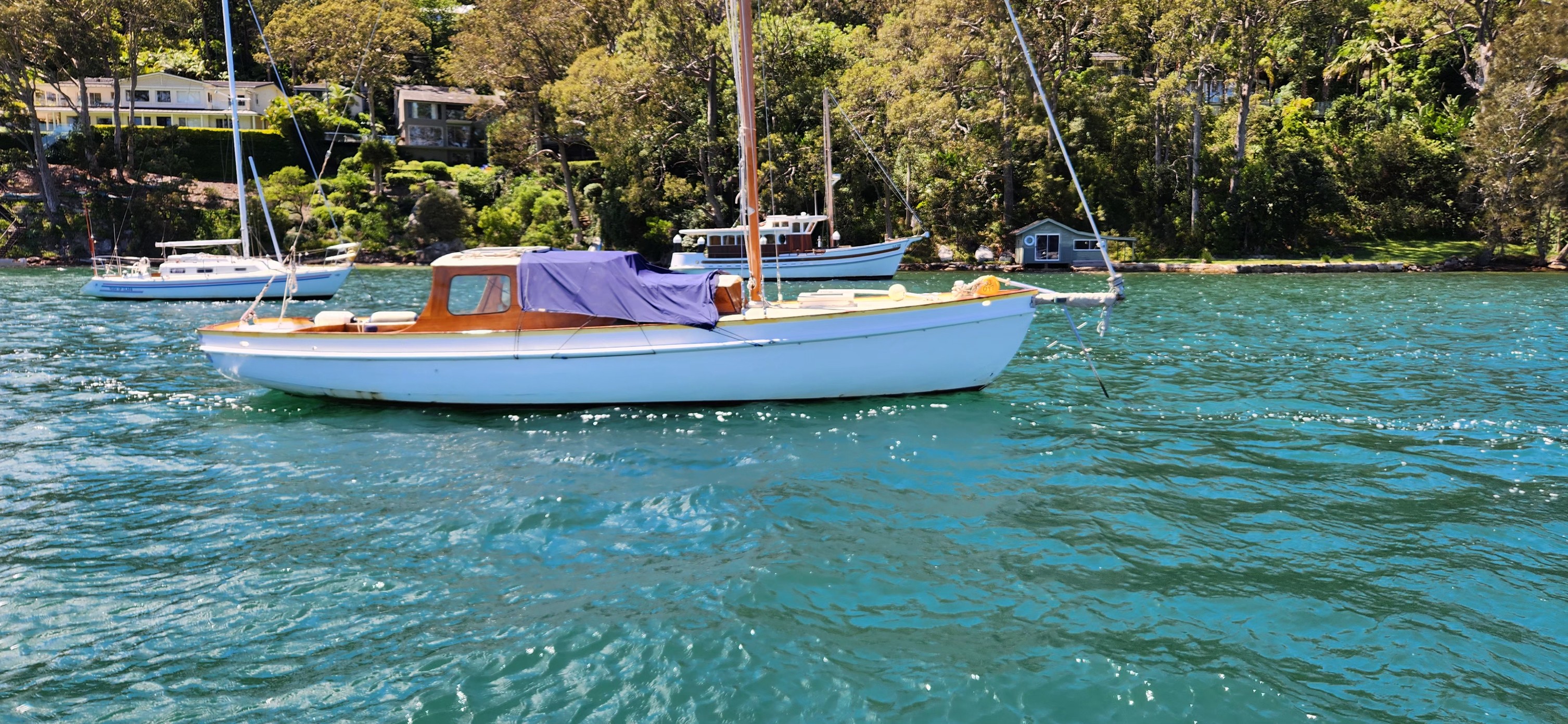
National Medals for Dedicated NSW Lifesavers
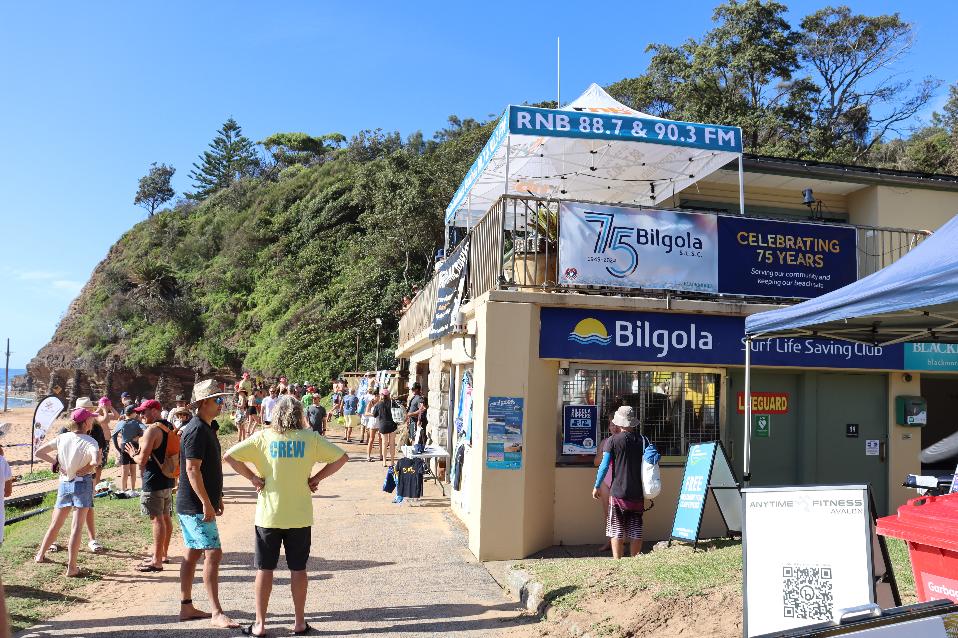
Surf Life Saving NSW would like to congratulate a host of surf lifesavers who have been awarded the National Medal, as well as Second Clasps and First Clasps for their sustained service and commitment to Surf Life Saving.
Established in 1975 as a military recognition award, the National Medal has since branched out into government and voluntary organisations and is now Australia’s most awarded civil medal.
The National Medal is awarded to individuals on behalf of the Governor-General of Australia, His Excellency General the Honourable David Hurley AC DSC (Retd) and recognises long and diligent service in organisations that are dedicated to protecting life and property at a degree of risk to their members.
National Medals can also be awarded to those who risk their lives or safety to protect or assist the community in enforcement of the law or in times of emergency or natural disaster.
“The National Medal is a prestigious award, and it always fills me with pride to see a large number of our NSW members among the recipients,” said Surf Life Saving NSW President, Peter Agnew AM.
“We are very lucky as a gazetted emergency service to be supported by 80,000 dedicated and passionate members, and this honour, in a way, is testament to their commitment to the movement and their character as individuals.”
Heading the list of those honoured in Batch 52 are six members from NSW receiving 2nd Clasps for 35 years of service, led by former SLSNSW Vice President, John Restuccia OAM (Maroubra SLSC).
Clubmate, Michael Gray was also honoured with a 2nd Clasp, as was Paul Johnson (Bronte SLSC), Peter Brown (Dixon Park SLSC), Darren Palmer (North Bondi SLSC), and Bruce Kejda (Shellharbour SLSC).
SLS SNB Branch recipients include:
National Medal – 1st Clasp (25 Years)
- Warren Young OAM – Avalon Beach SLSC
National Medal (15 Years)
- Robert Hopton – Avalon Beach SLSC
- Richard Cole – Avalon Beach SLSC
- Geoffrey Ward – Avalon Beach SLSC
- Peter Brennan – Avalon Beach SLSC
- Jeffrey Nesbitt – Avalon Beach SLSC
- William Elliott – Avalon Beach SLSC
- Colin Campbell – Avalon Beach SLSC
- Nicholas Wood – Avalon Beach SLSC
- Michael Stanley-Jones – Avalon Beach SLSC
- Roland Luke – Avalon Beach SLSC
- Tim Hixson – Avalon Beach SLSC
- Mark Heffernan – Avalon Beach SLSC
- Jason Brown – Avalon Beach SLSC
- Romilly Madew – Bilgola SLSC
- Peter Fenley – Bilgola SLSC
- Levi Broughton-Rouse – Bilgola SLSC
- Robert Farr – Bilgola SLSC
- Andrea Whittet – Bilgola SLSC
- Bruce Scheffers – Bilgola SLSC
- Geoff Raper – Bilgola SLSC
- Craig Poppleton – Bilgola SLSC
- John Lawson – Bilgola SLSC
- David Gillard – Bilgola SLSC
- Greg Franks – Bilgola SLSC
- Louise Edgley – Bilgola SLSC
- David Edgley – Bilgola SLSC
- Nigel Penn – Bilgola SLSC
- Jodie Trim – Collaroy SLSC
- Allen Lakeman – Dee Why SLSC
- Timothy Cuthbert – Manly LSC
- Michael Studden – Manly LSC
- Robin Barham – Manly LSC
- Mark Fletcher – Newport SLSC
- Benjamin Matthews – Newport SLSC
- Andrew Thomson-Ko – Newport SLSC
- Gordon Cockburn – North Narrabeen SLSC
- Benjamin Neighbour – Palm Beach SLSC
- Ian Johnston – Queenscliff SLSC
- Talia Field – Queenscliff SLSC
- Kevin Harris PSM – Queenscliff SLSC
- Robert McNamara – Queenscliff SLSC
- Garth Hickey – Queenscliff SLSC
- Peter Shapcott – South Narrabeen SLSC
- Troy Stephen – South Narrabeen SLSC
Surf Life Saving NSW would like to congratulate a host of surf lifesavers who have been awarded the National Medal, as well as Second Clasps and First Clasps for their sustained service and commitment to Surf Life Saving.
Established in 1975 as a military recognition award, the National Medal has since branched out into government and voluntary organisations and is now Australia’s most awarded civil medal.
The National Medal is awarded to individuals on behalf of the Governor-General of Australia, His Excellency General the Honourable David Hurley AC DSC (Retd) and recognises long and diligent service in organisations that are dedicated to protecting life and property at a degree of risk to their members.
National Medals can also be awarded to those who risk their lives or safety to protect or assist the community in enforcement of the law or in times of emergency or natural disaster.
“The National Medal is a prestigious award, and it always fills me with pride to see a large number of our NSW members among the recipients,” said Surf Life Saving NSW President, Peter Agnew AM.
“We are very lucky as a gazetted emergency service to be supported by 80,000 dedicated and passionate members, and this honour, in a way, is testament to their commitment to the movement and their character as individuals.”
Heading the list of those honoured in Batch 52 are six members from NSW receiving 2nd Clasps for 35 years of service, led by former SLSNSW Vice President, John Restuccia OAM (Maroubra SLSC).
Clubmate, Michael Gray was also honoured with a 2nd Clasp, as was Paul Johnson (Bronte SLSC), Peter Brown (Dixon Park SLSC), Darren Palmer (North Bondi SLSC), and Bruce Kejda (Shellharbour SLSC).
SLS SNB Branch recipients include:
National Medal – 1st Clasp (25 Years)
- Warren Young OAM – Avalon Beach SLSC
National Medal (15 Years)
- Robert Hopton – Avalon Beach SLSC
- Richard Cole – Avalon Beach SLSC
- Geoffrey Ward – Avalon Beach SLSC
- Peter Brennan – Avalon Beach SLSC
- Jeffrey Nesbitt – Avalon Beach SLSC
- William Elliott – Avalon Beach SLSC
- Colin Campbell – Avalon Beach SLSC
- Nicholas Wood – Avalon Beach SLSC
- Michael Stanley-Jones – Avalon Beach SLSC
- Roland Luke – Avalon Beach SLSC
- Tim Hixson – Avalon Beach SLSC
- Mark Heffernan – Avalon Beach SLSC
- Jason Brown – Avalon Beach SLSC
- Romilly Madew – Bilgola SLSC
- Peter Fenley – Bilgola SLSC
- Levi Broughton-Rouse – Bilgola SLSC
- Robert Farr – Bilgola SLSC
- Andrea Whittet – Bilgola SLSC
- Bruce Scheffers – Bilgola SLSC
- Geoff Raper – Bilgola SLSC
- Craig Poppleton – Bilgola SLSC
- John Lawson – Bilgola SLSC
- David Gillard – Bilgola SLSC
- Greg Franks – Bilgola SLSC
- Louise Edgley – Bilgola SLSC
- David Edgley – Bilgola SLSC
- Nigel Penn – Bilgola SLSC
- Jodie Trim – Collaroy SLSC
- Allen Lakeman – Dee Why SLSC
- Timothy Cuthbert – Manly LSC
- Michael Studden – Manly LSC
- Robin Barham – Manly LSC
- Mark Fletcher – Newport SLSC
- Benjamin Matthews – Newport SLSC
- Andrew Thomson-Ko – Newport SLSC
- Gordon Cockburn – North Narrabeen SLSC
- Benjamin Neighbour – Palm Beach SLSC
- Ian Johnston – Queenscliff SLSC
- Talia Field – Queenscliff SLSC
- Kevin Harris PSM – Queenscliff SLSC
- Robert McNamara – Queenscliff SLSC
- Garth Hickey – Queenscliff SLSC
- Peter Shapcott – South Narrabeen SLSC
- Troy Stephen – South Narrabeen SLSC
President of ABHS Heads South on Historic Replica HMB Endeavour
Geoff Searl OAM, president of the Avalon Beach Historical Society, was aboard the HMB Endeavour that sailed south to take part in the Australian Wooden Boat Festival a few weeks back.
The Australian-built replica of James Cook's HMB Endeavour is one of the world's most accurate maritime replica vessels.
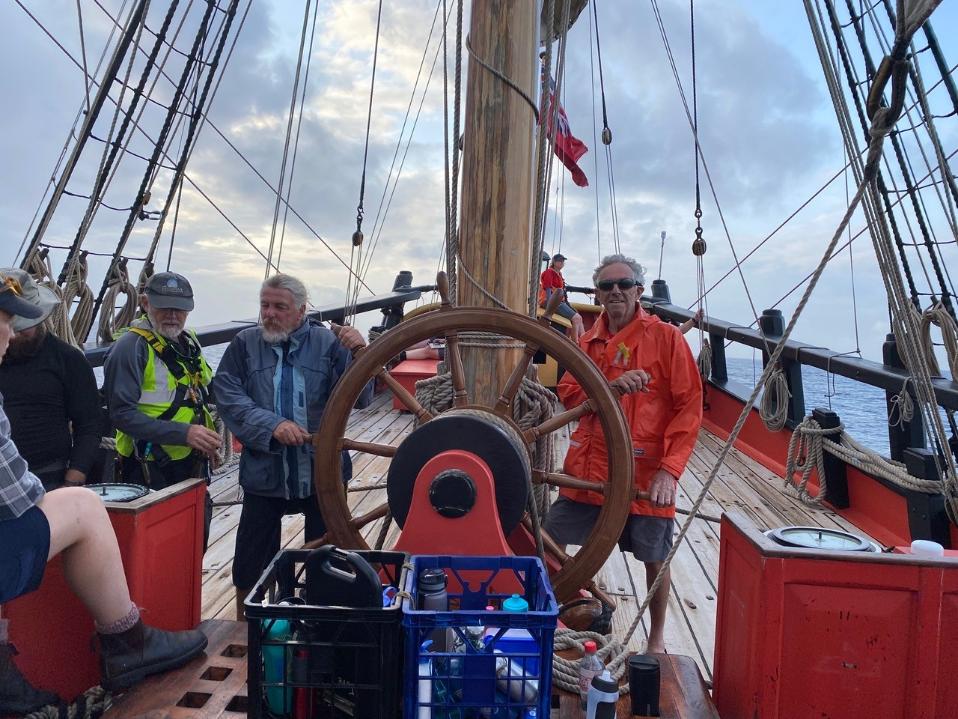 'Helming during one of our watches east of Gabo Island - 2 of our watch on the helm and the navigator in fluoro.' - GS (Geoff is in orange on right)
'Helming during one of our watches east of Gabo Island - 2 of our watch on the helm and the navigator in fluoro.' - GS (Geoff is in orange on right)
At right in orange: Geoff Helming during one of his watches east of Gabo Island - '2 of our watch on the helm and the navigator in fluoro' - GS. Photo supplied.
The 'Follow the Wind' Endeavour voyage ran from Sydney to Hobart, Tasmania, from January 28 to February 7, 2025.
This was an opportunity to experience eighteenth-century historic replica sailing and an obvious match for a gentleman who has done so much for decades to honour and celebrate our local history in between his 'voyages' on the estuary aboard his own vessel or being on Patrol on the sands of Avalon Beach itself, his eyes always turned seawards.
The Australian National Maritime Museum (ANMM) offered thirty positions for active crew and a further four for supernumeraries (non-working passengers) on each voyage - getting there, and then a return voyage back to Sydney. Geoff securd a place on the southward 'Follow the Wind' stage.
Geoff explained: ''I was one of 34 applicants from 360 who applied to be a part of the crew.
We were warned that it wasn’t going to be a cruise and we would not be referred to as passengers but part of a team responsible for getting her to Hobart for the National Classic and Wooden Boat Festival.''
Insights on the HMB Endeavour, AWBF and from the Captain's Log run as this week's Aquatics Feature: Local Historian Geoff Searl Sails south on Historic Replica Vessel HMB Endeavour To 2025 Australian Wooden Boat Festival

Insights on the HMB Endeavour, AWBF and from the Captain's Log run as this week's Aquatics Feature: Local Historian Geoff Searl Sails south on Historic Replica Vessel HMB Endeavour To 2025 Australian Wooden Boat Festival
- Mona Vale Set to Become the Dee Why of Pittwater Under NSW Government's Low and Mid-Rise policy
- National Medals for Dedicated NSW Lifesavers - local recipients
- Commissioning of three new vessels to boost NSW's marine policing capability
- ACCC's compliance and enforcement priorities update 2025-26: Chair Gina Cass-Gottlieb's address
- Defending line honours winner in mix for Pittwater to Coffs Harbour Yacht Race 2025 by Di Pearson
- Local Historian Geoff Searl Sails south on Historic Replica Vessel HMB Endeavour To 2025 Australian Wooden Boat Festival
- The ASRL Open 2025 + Surf Life Saving Australia Interstate Surf Boat Championships 2025
- Just Two Trees (the Great Ruskin Row): Council's Draft Tree Management Policy Opens for Feedback
- Proposal to rename Warriewood Greenspace as 'Ronda Alterator Reserve' Endorsed
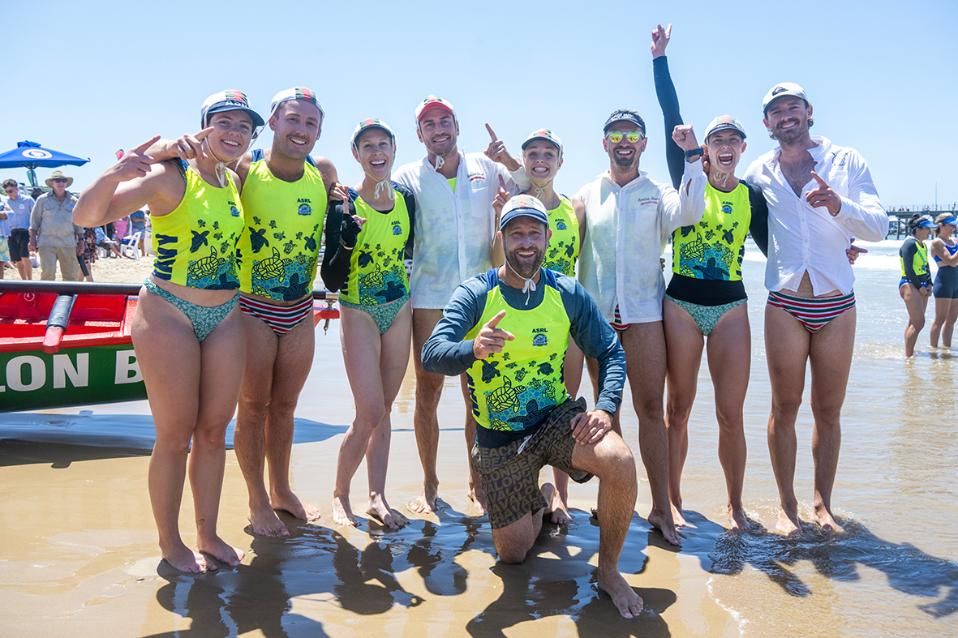
.jpg?timestamp=1739922202257)
Newport SLSC's 'Stingers; Alani Barros, Zoe Ellis, Ella Gale, Michael King (sweep) and April McCarney. Photo: Malcolm Trees
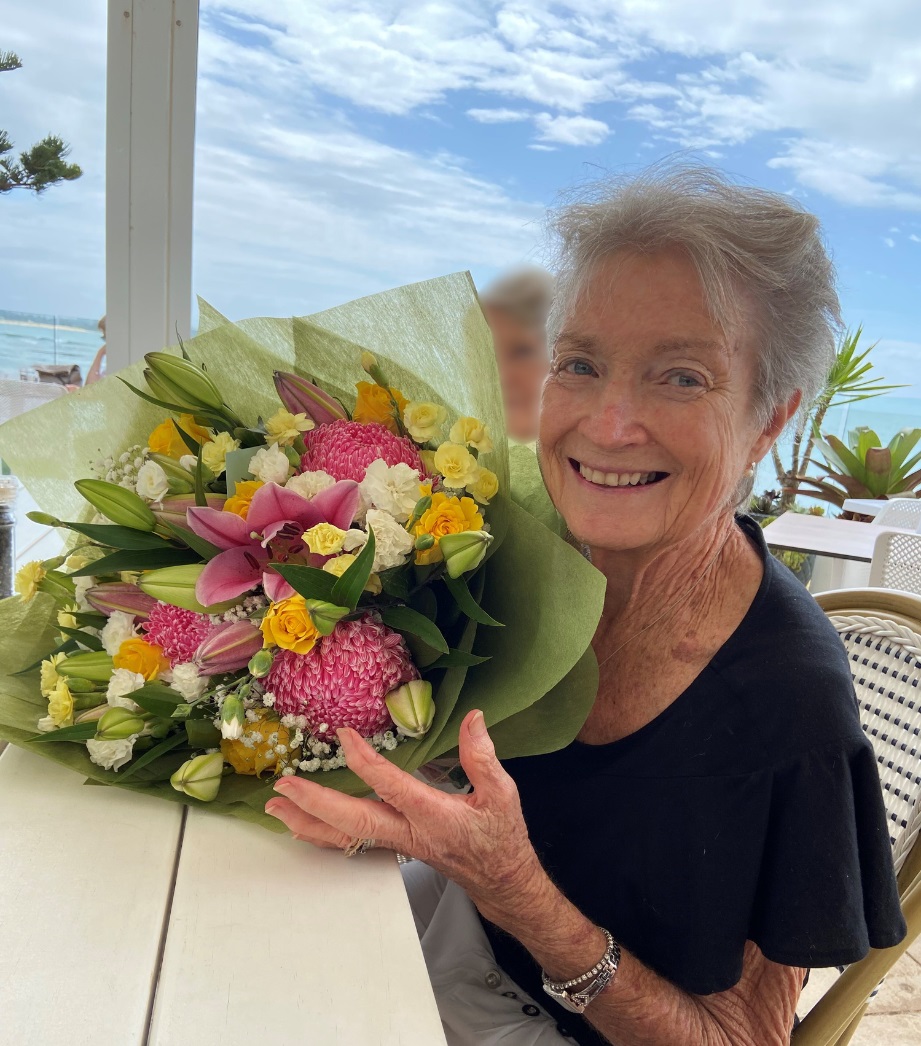
March
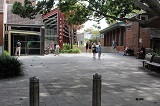 The Better Cities Initiative: Mona Vale public forum on housing and development reveals strong support for a more community-driven approach
The Better Cities Initiative: Mona Vale public forum on housing and development reveals strong support for a more community-driven approach- Happy 100th Birthday Avalon Beach SLSC!
- Expanded mental health services for young people at Brookvale: Design-Services Consultation With Community Now Open
- NSW Pet Laws (dog and cat regulations) go under the microscope - Have your say until May 4
- Purple Poppy Day 2025: Flag of the Republic of Türkiye raised at Simpson Memorial of Narrabeen War Veterans - Pittwater RSL Honours All Animals who Served or Serve still in Moving Tribute
- Lime Cordiale Tees for Green Music Australia + Green Venue Program - Free Workshops this month
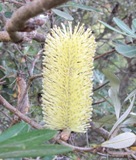 Pittwater Women of the Year 2025: Lisbeth Lawsen - Simone Allan + 2025 Manly Local Woman of the Year: Melissa Burgess + NSW Women of the Year 2025 Award Recipients
Pittwater Women of the Year 2025: Lisbeth Lawsen - Simone Allan + 2025 Manly Local Woman of the Year: Melissa Burgess + NSW Women of the Year 2025 Award Recipients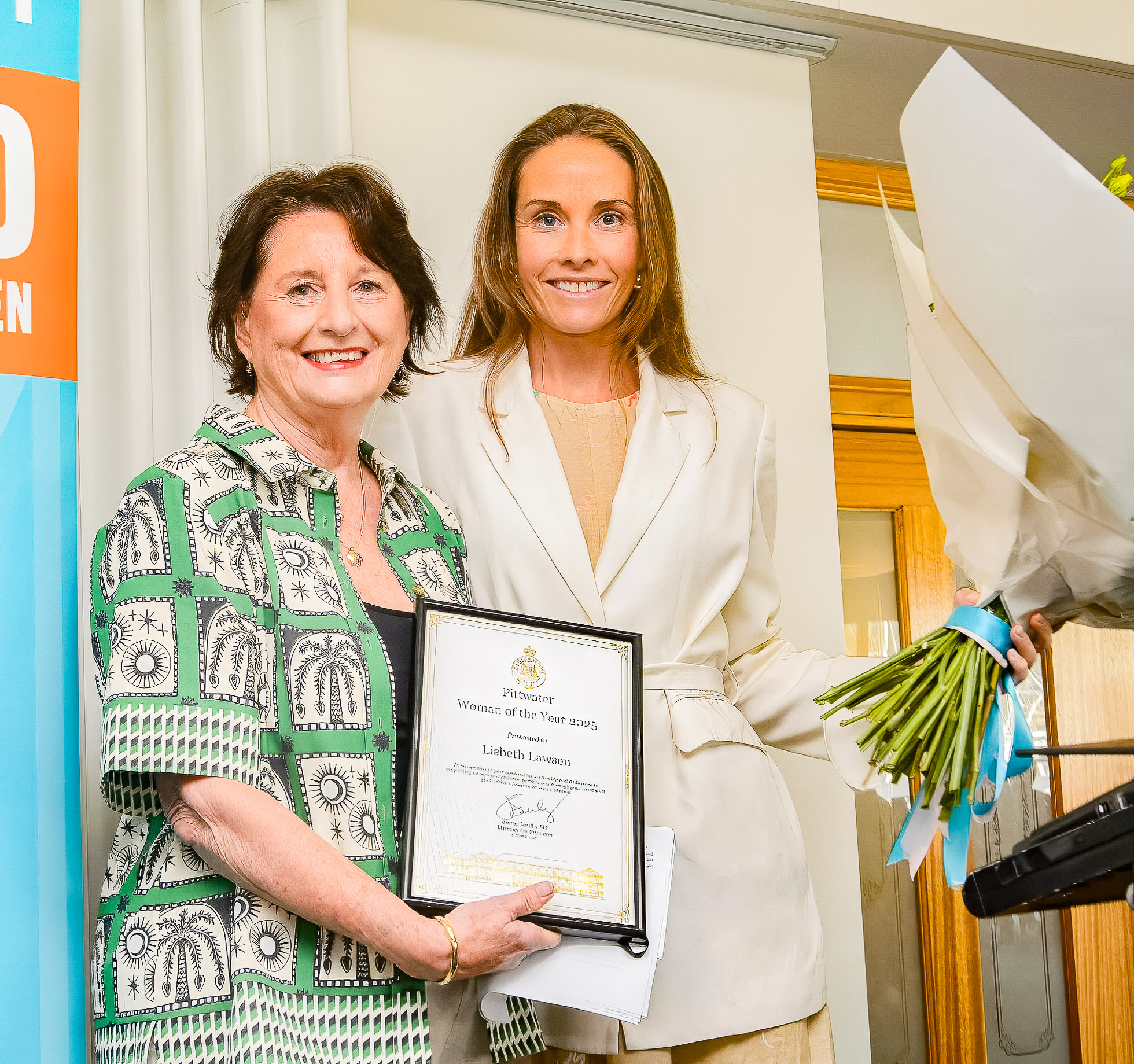
Pittwater MP Jacqui Scruby and Beth Lawsen at the Zonta Women's Day Breakfast, held Wednesday March 5, 2025. Photo by Michael Mannington OAM, Community Photography and Pittwater Online News
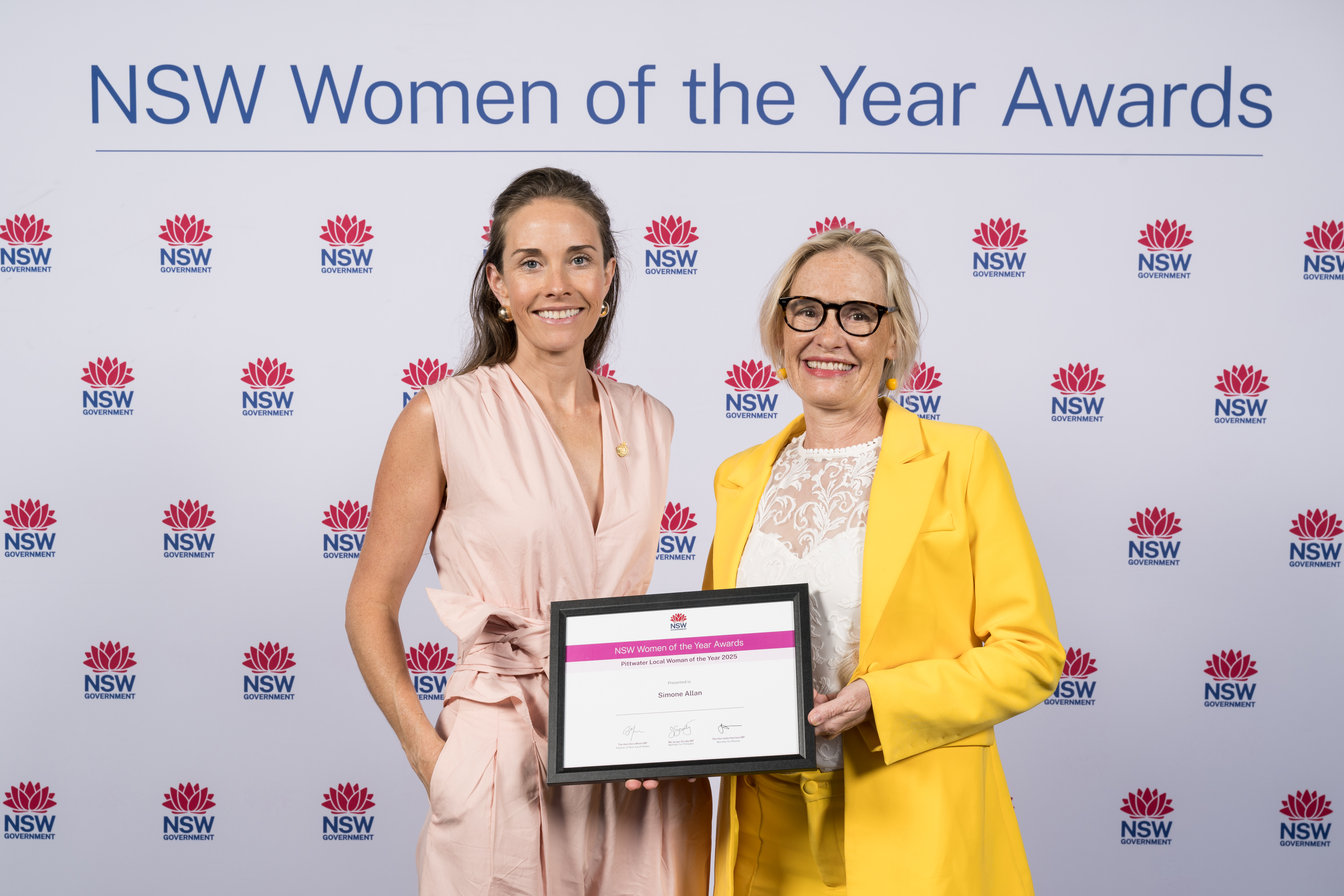
Pittwater MP Jacqui Scruby and Simone Allan
Women and girls' football participation soars in 2024
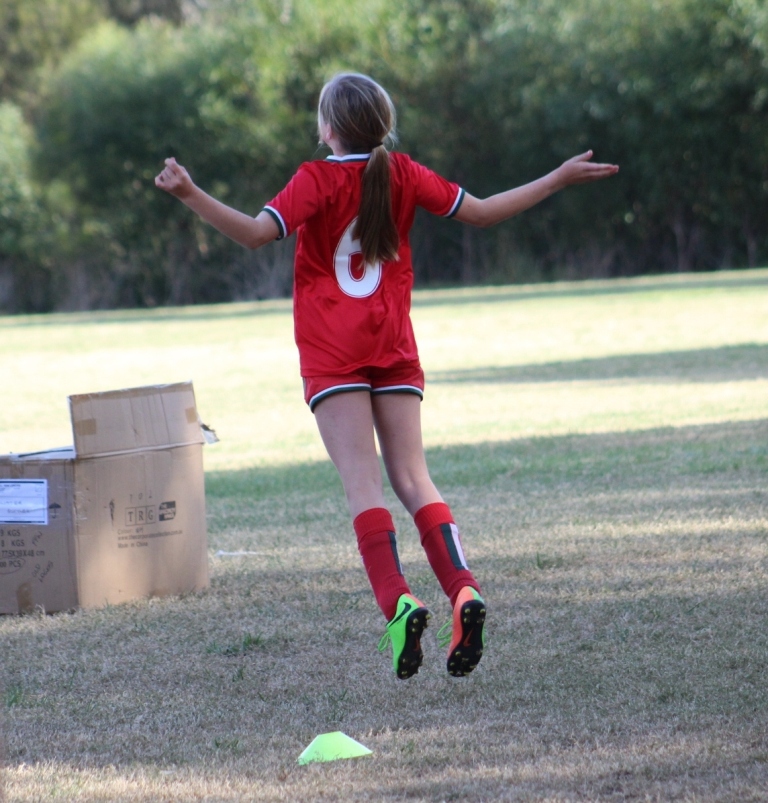
- The Zonta Club of the Northern Beaches: Celebrating 50 years of Action in 2025 - The Zonta Northern Beaches Annual Women's Day Breakfast photos by Michael Mannington OAM, Zonta Club of Northern Beaches and others!
- Saltwater Veterans in Hansa Worlds on Pittwater: Let’s Support Our Girls!
- Aquatics Marine Rescue NSW Women in Flood Rescue leadership seminar
- Urgent Care Clinic for Dee Why + What Services are Available 24/7 at Mona Vale Hospital UCC: Reminder + Tribute to Eileen Gordon Unveiled

Pittwater Woman of the Year in 2021, Lynleigh Greig OAM, Mackellar MP Sophie Scamps and Pittwater Woman of the Year 2020 Roberta Conroy OAM
Manly Warringah Sapphires Claim 2025 HeartKids Cup
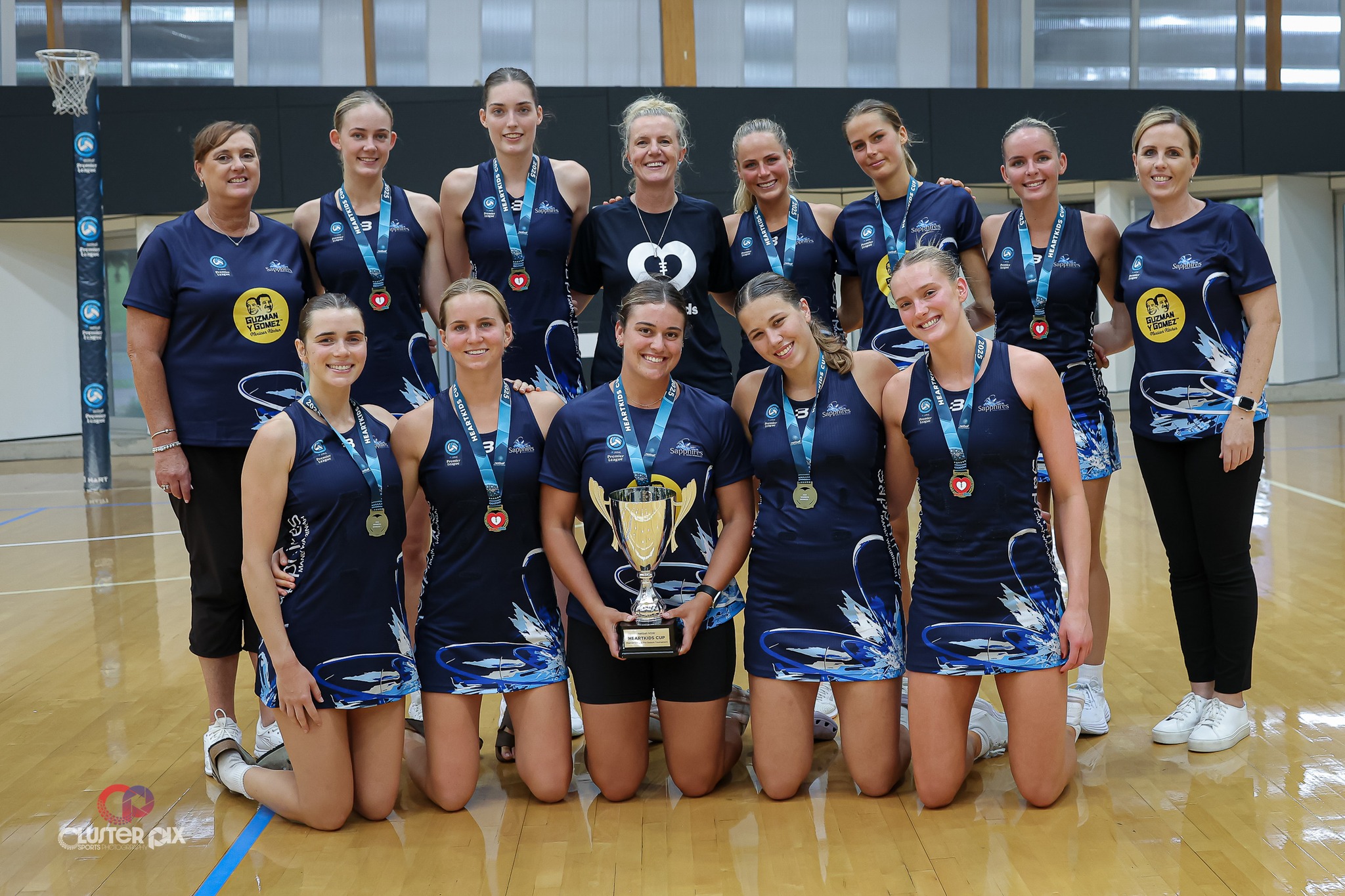
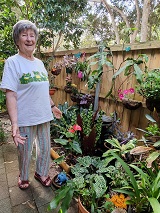 Judith Friezer
Judith Friezer- 2025 NSW Surf Life Saving Championships: Masters Report + Results
- Double celebration for two long-serving Marine Rescue Cottage Point volunteers
- Parliamentary inquiry into Safety and Quality of Northern Beaches Hospital Services Announced
- It's a 'Bit Sharky' out there: 5 Tagged Bull Sharks Pinged at North Narrabeen on Same Day - Bull Shark spotted at Bayview + some historical insights into Sharks in the estuary and along our beaches
- Bus Problems set to Ease: Repaired Buses returning to Service in April - New Buses slated for local routes by end of 2025
- Warriewood Community Centre Build: March 2025 Update by Joe Mills
Marine Rescue Cottage Points' Chris Gillett and Paul Millar
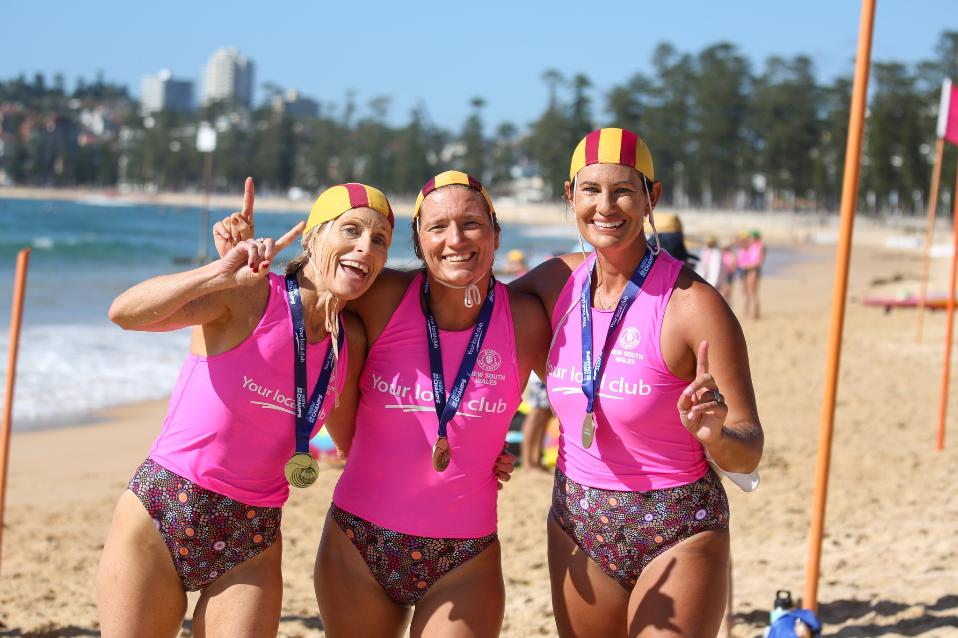
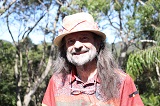 Loosely Woven Celebrates 30th Anniversary with 'Unwound' Concerts - A Few Insights from and Into Founder Wayne Richmond
Loosely Woven Celebrates 30th Anniversary with 'Unwound' Concerts - A Few Insights from and Into Founder Wayne Richmond%20this%20one.jpg?timestamp=1742851035085)
- Hansa Worlds + Para Worlds Will Fire Up the estuary This Week: 'Welcome to Pittwater Athletes'! by Di Pearson and RPAYC (runs March 23-30)
- 2025 NSW Surf Life Saving Championships: Opens - Newport Wins 11th Straight Title!
- Terms of Reference for 2025 Inquiry Into the Safety and Quality of Health Services provided by Northern Beaches Hospital Released: Pittwater MP's Clarion Speech in NSW Parliament on Tuesday March 18
- Scamps' Call for Residential Battery Subsidies May Ease Council's EV-Charging Stations Dilemma + Solar for Apartment Residents incentive open until December 31 + EV and Hybrid vehicle data for our area by postcode + NSW Inquiry into Infrastructure for electric and alternative energy source vehicles in NSW (closing date for submissions is Friday 2 May 2025) + ‘A house battery you can drive around’: how a handful of Australians are selling power from their cars back to the grid
- Tender Accepted for Female friendly Accessible change facilities at Pittwater Rugby Park: Construction Scheduled to commence in April
- Boaters reminded not to get complacent on the water: MRNSW's February 2025 Rescues - Boating Season Closes Anzac Day 2025
- Elanora's Kalang Road - Newport's Robertson Road Permits Approved by Traffic Committee for Plug & Play: Fairlight + Brookvale approved too
- Digital Parking permits coming for across the Peninsula + CellOPark Dispute 2024-2025 + NSW Government's Ticketless Parking Reforms and Consultation on Equal Access to Beach Parking Permits (open until April 17 2025)
- Australia has promised to end domestic violence within a generation. Jess Hill asks: are our strategies working?
- Seas The Day 2025 returns to Kingscliff Beach
Seniors Festival Local Achievement Awards
Seven outstanding Pittwater residents have been honoured for their valuable contribution to the community with a Local Achievement Award, as part of the 2025 NSW Seniors Festival.
Jacqui Scruby, Independent MP for Pittwater, presented six of the awards at a celebratory morning tea at Narrabeen Surf Club on Monday 24 March.
“Warm congratulations to the recipients of the 2025 NSW Seniors Festival Local Achievement Awards, who are doing so much to make our community better every day,” Ms Scruby said.
“We have a wonderful, diverse group of seniors in Pittwater who generously share their time and expertise and make a really positive impact on our whole community. They are part of what makes Pittwater special.”
Recipients for the Pittwater Local Achievement Awards 2025 are:- Margaret White, Zonta Club of Northern Beaches
- Philip Jackson, Warringah Rats Rugby Club.
- Vivien Jackson, Women’s Resilience Centre
- Christine Boyce, Cicada Australia
- Marita Macrae, Pittwater Natural Heritage Association
- John Pratten, Whale Beach Surf Life Saving Club
- George Wester, Bei Loon Dragon Boat Club.
The Local Achievement Awards are among a range of exciting events taking place across the state as part of the 2025 NSW Seniors Festival, which celebrates older people and helps keep them active and engaged with their community.
Minister for Seniors, Jodie Harrison said the 2025 NSW Seniors Festival and Local Achievement Awards are key initiatives in the NSW Government’s ongoing commitment to supporting seniors. “The theme for the 2025 NSW Seniors Festival is ‘Time to Shine’ and there is no better sentiment to express the contribution older people make to this state,” Minister Harrison said.
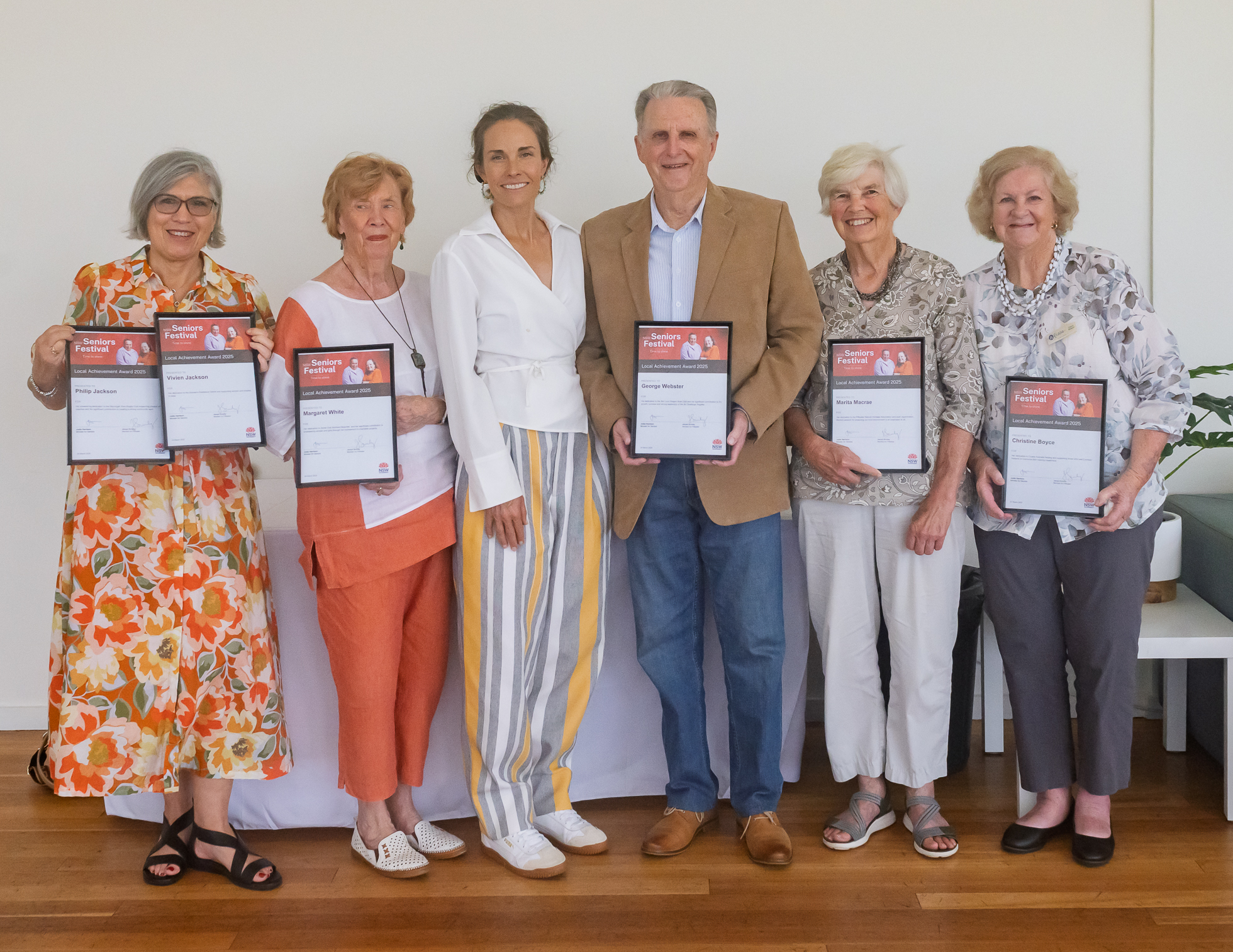
Pictured left to right: Vivien Jackson, Margaret White, Jacqui Scruby MP, George Webster, Marita Macrae, Christine BoyceUnable to attend the presentation: Philip Jackson & Jon Pratten. Photo credit: Michael Mannington OAM, Community Photography
- Margaret White, Zonta Club of Northern Beaches
- Philip Jackson, Warringah Rats Rugby Club.
- Vivien Jackson, Women’s Resilience Centre
- Christine Boyce, Cicada Australia
- Marita Macrae, Pittwater Natural Heritage Association
- John Pratten, Whale Beach Surf Life Saving Club
- George Wester, Bei Loon Dragon Boat Club.

Palmgrove Park Avalon planting morning
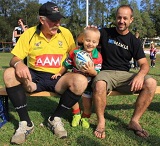 Brian Friend OAM, Q.C., B.C., - on 50 Years of Coaching Avalon Bulldogs Rugby League Littlies
Brian Friend OAM, Q.C., B.C., - on 50 Years of Coaching Avalon Bulldogs Rugby League LittliesBrian Friend, known is ‘Friendly’ and now 82-years-young, has commenced his 50th year of coaching the little ones at Avalon Bulldogs Junior Rugby League Club for the Winter Season.
After the Season for youngsters closes in August, there's a short pause, and then the Touch Footy Season, to keep the kids outdoors in the fresh air having some fun with their mates, begins - a few years ago the Avalon JRLC they had 730 youngsters doing handstands and cartwheels in between sprints down the field with the ball tucked firmly under one arm.
- Good Luck to All Aussies 2025 Athletes
- The 2025 Hansa - Para Worlds on Pittwater: by Di Pearson, photos by Alex Dare
- Australian Para Surfing Titles + Australian Pro Adaptive Surfing Championships 2025
- Minns Government Announces 'Joe's Law' to End Private-Public Hospital Model As Inquiry into Safety and Quality of Services at Northern Beach Hospital Opens for Submissions
- ABSLSC's 100th Anniversary Ocean Swims by Roger Sayers OAM
- Monika's Doggie Rescue: 3 x Chihuahua Pup Litters need ongoing care
- ANZAC Day 2025 Commemoration Services: when and where
- Turimetta Moods: mid-February to Mid- March 2025 by Joe Mills
- Shark Nets to Come out Monday March 31 Due to Increased Turtle Migrations + Research: Green lights on fishing nets could slash bycatch of sea turtles + Record number of sea turtle nests rescued before cyclone
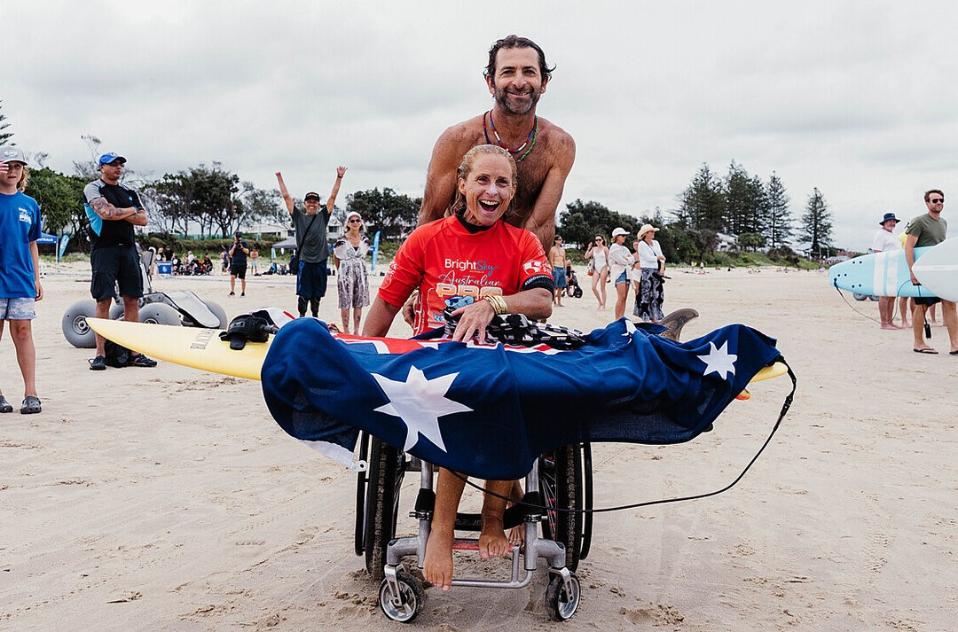
Sam Bloom wins the Prone 1 Women's Australian Title, pictured here with husband Cameron. Photo Credit: Surfing Australia
April
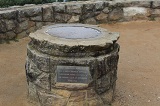 Richard Jeffery Is Working to Reinstall the North Bilgola Lookout Direction Indicator: photos of Surface or original Casting plans needed
Richard Jeffery Is Working to Reinstall the North Bilgola Lookout Direction Indicator: photos of Surface or original Casting plans neededThose who visited the North Bilgola Lookout during the 1980’s and early 1990’s will remember a direction marker or toposcope of brass installed on the stone plinth that still stands in the centre of this lookout today.
The original, made of brass, was unveiled in June 1988 as a present to the community from the Rotary Club of Pittwater.
Having seen it and photographed, but now being unable to locate those images (yet), we recall it as being a simple version flat version with lines pointing to geographical features alike that atop Barrenjoey headland.
Others recall something more elaborate, alike that raised surface map at Long Reef point.
Around 20 years later, someone stole it - probably due to the value of material it had been cast from.
Now Richard Jeffery, who has been looking after the lookout for years, wants the North Bilgola Direction Indicator replaced. But first he needs to locate either a photo of the surface which shows how it was or the plans used to cast the sphere. This Issue a few insights from Richard on this project.
Narrabeen Lakes Sailing Club Last Sail for the Season
- - Our Learn to Sail kids and Intermediate Squad kids took part to their very first race.
- - Dev Squad did some more training ahead of CHS and had a nice adventure in some areas we rarely explore.
- - Mums and daughters (no grand-mother this year) had a nice contest for the coveted Ladies Champion title.
- - Afternoon sailing was as pleasant as it is possible to be.
- - And everyone helped to prepare the club for winter!
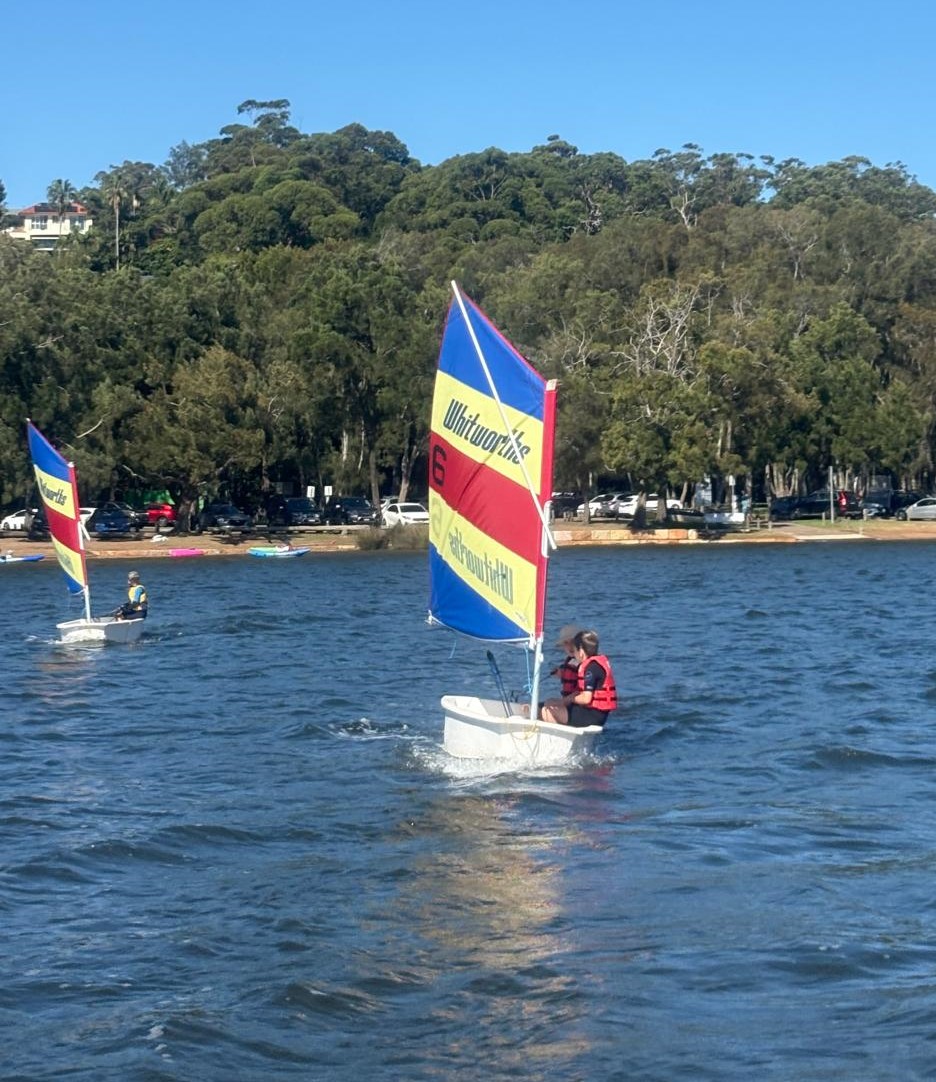
- Bilgola Big Winner in 2024-25 NSW Government's Surf Club Facilities Grants: Over 1.3 Million allocated to local clubs
- Australian Boardriders Battle 2025 Grand Final: Seven Local Clubs Have Qualified - runs next weekend 12-13 April and will be broadcast LIVE
Marine Rescue Broken Bay News
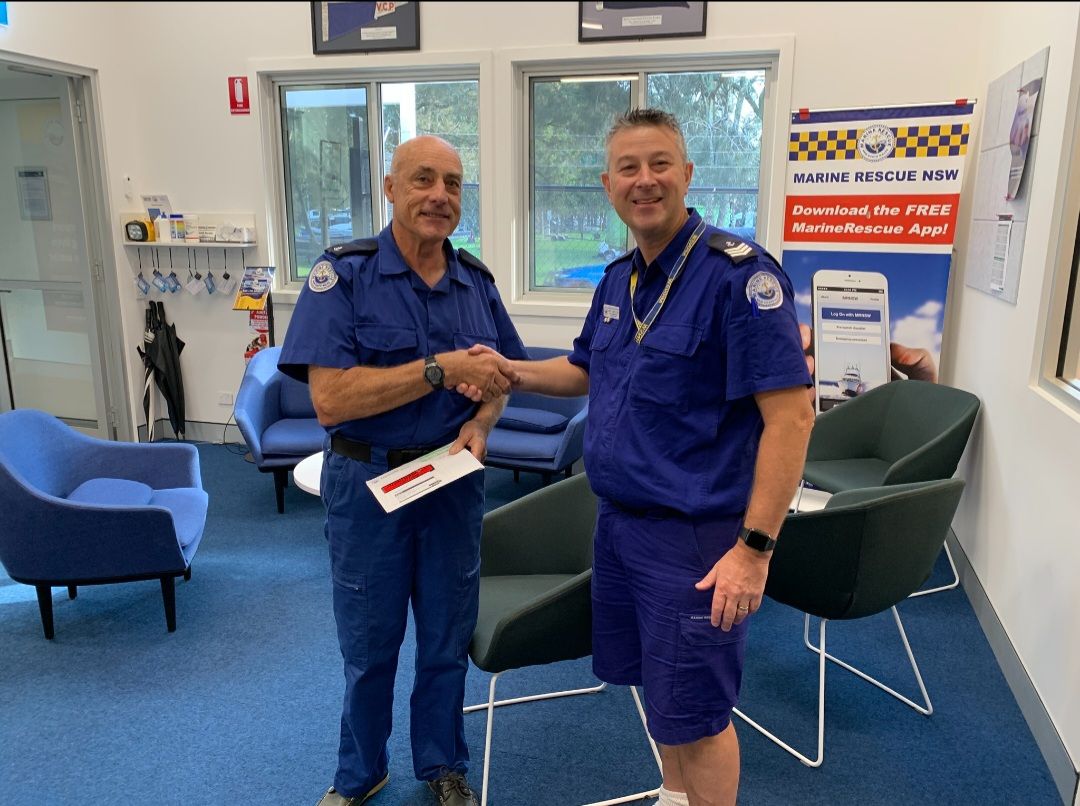
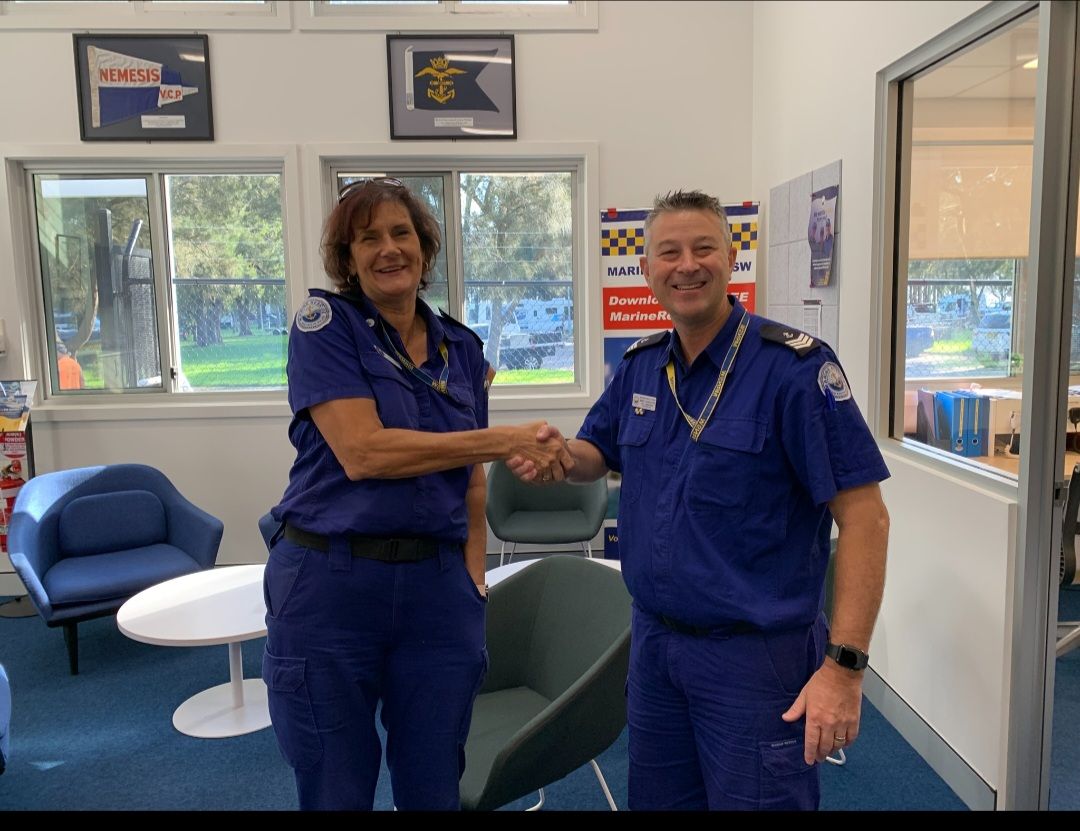
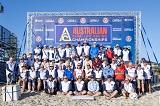 The Australian Surf Life Saving Championships 2025: Finals Results + 'Wrap'
The Australian Surf Life Saving Championships 2025: Finals Results + 'Wrap' This year's Australian Surf Life Saving Championships 'wrap' of members efforts from the Surf Life Saving Sydney Northern Beaches Branch is a compilation of Surf Lifesaving Australia, Surf Life Saving New South Wales, Avalon Beach and Newport surf club reports.
Newport SLSC excelled again this year, finishing the championships ranked 2nd on 249 points, with their Newport Kinghorn Academy Surf Racing Academy accounting for a swathe of those - although all local clubs had members winning points for their club in each Age Division or ensuring their club's colours were front and centre on the sand or in the water.
The peninsula also saw a large crew of officials heading north to ensure the championships could take place, happily giving their time, energy, and a fair amount of money, to be where they could support the events.
On a special note during the week of Aussies, Newport's Life Member Gary Cook received a recognition award for his 30 years of service as an official which is an outstanding contribution to his club and lifesaving as a whole.
Three great peninsula March Past teams made the Finals with the Collaroy Ladies being awarded the Gold, the Freshwater Maroon in 5th and the Collaroy Bears in 8th.
Some of the biggest smiles came from more than 30 athletes hitting the beach for the Adaptive Program events on Day Eight of the Australian Surf Life Saving Championships.
Gold, Silver, Bronze, points and 'having a go' is still brimming over across all ages - it's a good thing everyone has an Autumn School Holidays break to wind down in.
This Issue the full list of Finalists across all Age Divisions and Events.
- Happy Dance Time! Narrabeen Sports High School to receive new Performing Arts Hall as part of major upgrade
- Electric Day 1 of 2025 Australian Boardriders Battle Grand Final - NASA, North Steyne into Quarterfinal rounds
- Dr Scamps’ plan to protect Pittwater: Nomination For Heritage Listing
- Pittwater to Coffs Harbour Yacht Race 2025: The Race reports by Di Pearson
- Mackellar - Warringah 2025 Candidates by Ballot draw + Record Voters this Election + Community Fed up with Juvenile behaviour during election campaigns + How Preferential Voting works: YOU Determine which way your vote flows
- Healthscope Announces it Wants to Exit Northern Beaches Hospital, Return it to the Government
- Manly to Barrenjoey Peninsula Tops Uptake of NSW Government's Household Battery Incentive + Mackellar MP's Residential Batteries Policy Adopted by Labor + Warringah MP Steggall's Comment + Labor’s home battery plan must be properly targeted to be fair
- Fewer rescues, smarter boaters: Marine Rescue NSW sees drop in March 2025 missions - Cottage Point tops local unit rescues
- Partnership Expands Surf Lifesaving NSW's Drone Operations Out of Sight
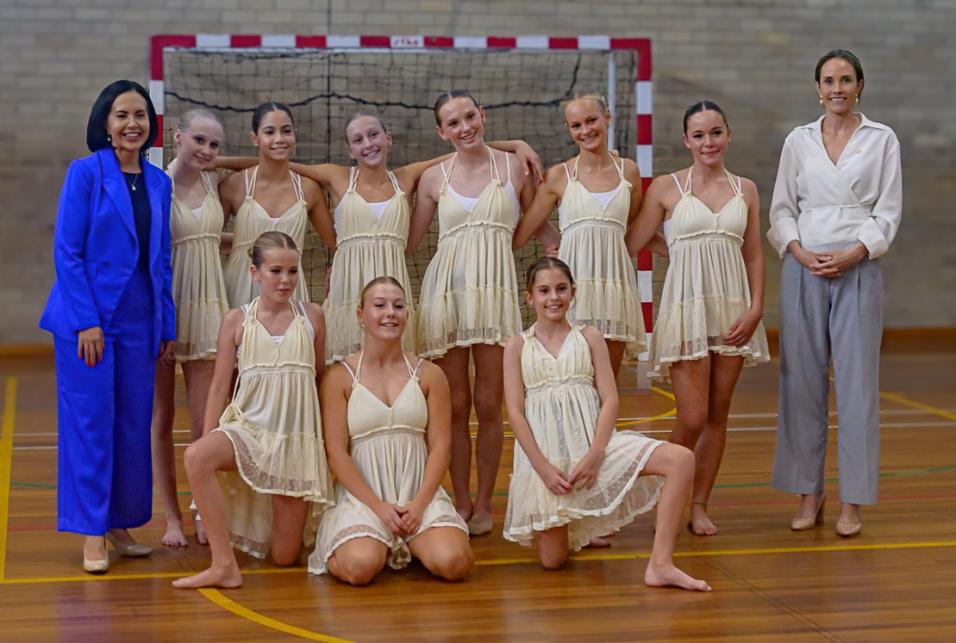
Deputy Premier and Minister for Education and Early Learning, The Hon. Prue Car, and Pittwater MP Jacqui Scruby with NSHS Dance Academy students. Photo: Michael Mannington OAM
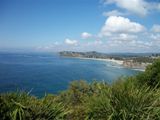 Mackellar 2025 Candidates
Mackellar 2025 CandidatesOn Saturday, May 3rd 2025, the 2025 Australian Election will be held. If people can’t vote on election day then they may vote at early voting centres now open across the Mackellar Electorate until Friday May 2nd.
Time to cast your Ballot
Your closest early voting centres in Mackellar are:
Avalon Recreation Centre - Activity Room 4, Level 1, 59A Old Barrenjoey Rd, Avalon Beach
Bilarong Community Hall - Bilarong Reserve, Wakehurst Pkwy, North Narrabeen
Terrey Hills Community Centre - Yulong Ave, Terrey Hills
Opening hours for all three centres are:
Mon 28 Apr – Thu 1 May: 8:30 am–5:30 pm
Fri 2 May: 8:30 am–6 pm
For those voting on Saturday May 3rd you can find your nearest polling booth on the AEC's Where To Vote tool.
Although the AEC states over one million people have cast their ballots early, with over 18 million people voting this election, there are likely to be queues at some centres a certain times across the day.
Postal Votes
The AEC is asking anyone who needs a postal vote, but has not yet applied, to do so ASAP. The latest urging from the AEC follows earlier advice for people to plan their vote early and, if needed, apply for a postal vote early in the election period.
''Australia has some of the best in-person voting options in the world. If a voter can turn up to a voting centre, then that is what they must do.'' the AEC states
While the legislated deadline for postal vote applications is this Wednesday 30 April, anyone who leaves it until the final week risks their postal vote pack not arriving in time.
People can apply for a postal vote on the AEC website.
As of COB on March 22, around 2.39m people had applied for a postal vote with 2.2m postal vote packs distributed so far.
This Issue the Mackellar 2025 Candidates responses to YOUR questions.
- Anzac Day in Pittwater: 2025
- Audit Office of NSW Report on Northern Beaches Hospital Released
- Lifesaving Future in Good Hands with 2025 SLS NSW Junior Lifesavers of the Year - Congratulations Max of Warriewood SLSC!
- SLSA Masters Legends 2025 - Congratulations Ted Smithies of Newport SLSC
- Tragic Easter Long Weekend on NSW Coastline As flags come down for 2024-2025 Patrol Season
- People's Choice Winning Paintings from Northern Beaches Art Society Autumn Exhibition 2025
- Australian Vehicle-to-Grid Technology: tried, tested, network ready!
- NSW Government launches updated strategy to support veterans and their families
- Australia’s First Wildlife Specialist Teaching Hospital at Taronga
- Currently flowering: Swamp Mahogany - Eucalyptus Robusta
- Narrabeen's RSL ANZAC Village Renewal Project: Feedback Invited - History Insights Sought
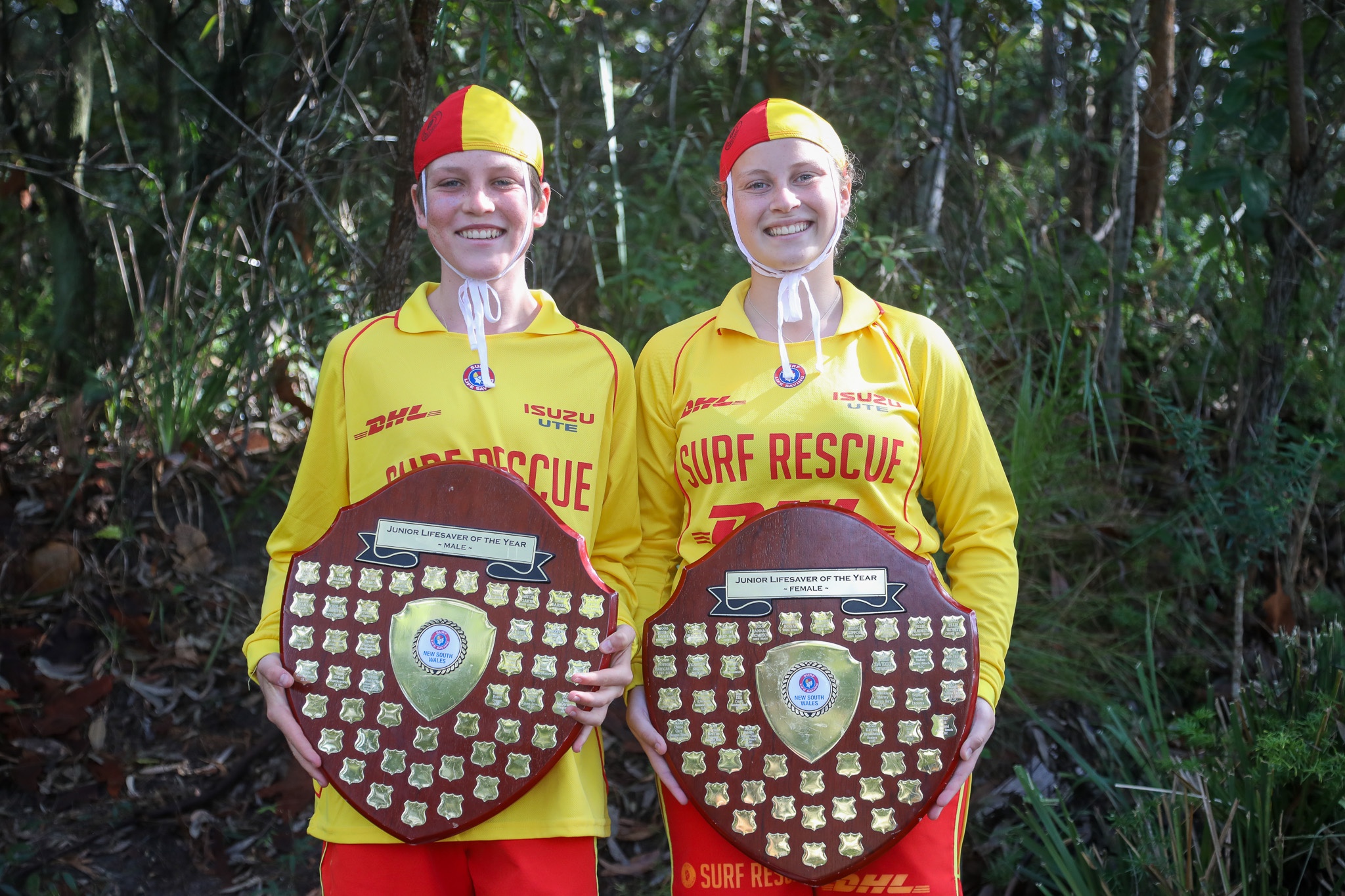
Max McDermott of Warriewood SLSC and Mia Jamal of Avoca Beach SLSC. Photo: SLSNSW
RPAYC Shines at the 2025 Sail Port Stephens IRC NSW Championship
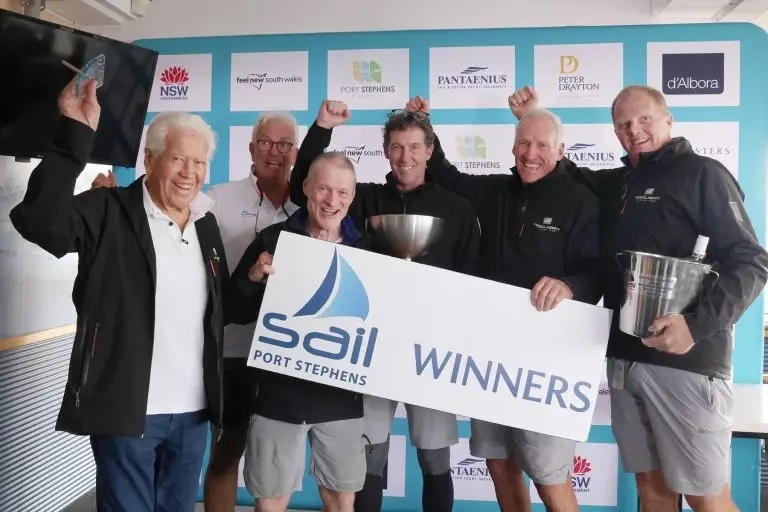
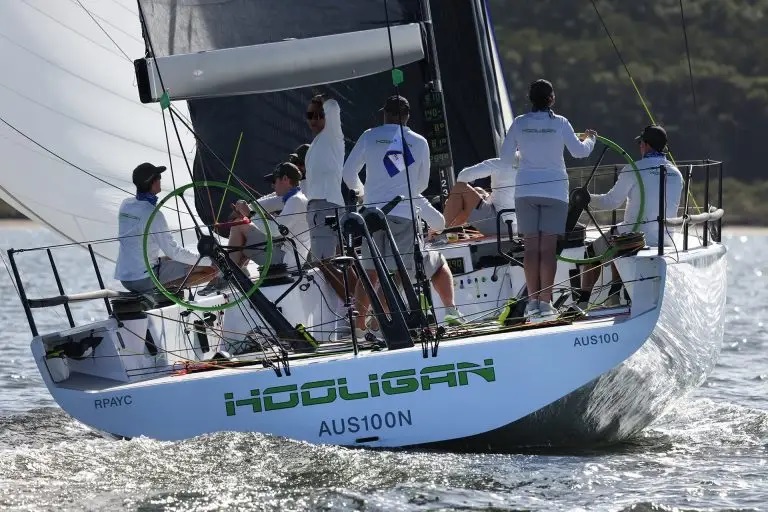
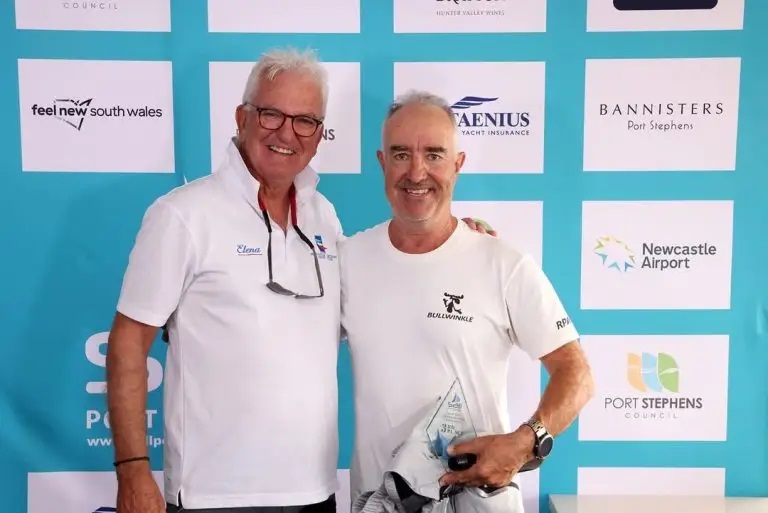
May
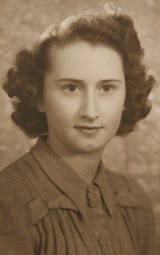
VALE Gwenyth Sneesby (June 17, 1924 - April 10, 2025)
At 2025 Pittwater RSL Sub-Branch Anzac Day Commemorative Service the Sub-Branch President, Deborah Carter, broke the news that our community has lost World War Two Veteran Gwenyth Sneesby just days before this year's Services.
President Carter stated:
''Anzac Day is not just about WW1 (the war to end all wars) but is a remembrance of all campaigns in theatres of war and sadly many wars have followed.
In my view, the war that changed Australia was WW2 because the enemy was close on our doorstep and the Brisbane line was proposed. With the fear of occupation of the Japanese, the government decided that the Japanese could live north of Brisbane, and the Australians could live south of Brisbane.
I pay tribute to our WW2 veterans, the young men of the militia of Kokoda, Templeton’s Crossing, the battles Milne Bay, Gona and Buna which broke the back of the Japanese from further aspirations to take Australia.
I also pay tribute to the 7th division on returning from the Middle East who assisted with this triumph.
Sadly, on Thursday 10 April this year, we lost WW2 Veteran, Gwen Sneesby, nee Forster. Service no. WR379. (17 June 1924 – 10 April 2025, just 9 weeks short of her 101st birthday).
Gwen was a Mona Vale girl who attended Mona Vale Public School and her name is on the WW2 Honour Roll; Gwen Forster.
Gwen’s father was in the Australian Navy in WW1. He was seconded to England to work with the Royal Navy. As a small child, Gwen returned to Australia by ship and this is when she decided she wanted to join the Navy.
With the outbreak of WW2, Gwen went to the recruiting office was in Loftus street, Circular Quay and signed up to become a WRAN; she was 18 years.
After basic training at HMAS Penguin, Gwen spent the next three years at Bradley’s Head Degaussing Range. This was built and staffed by the US Navy who trained eight WRANS (where Gwen was Leading Writer) to operate the instruments required for the testing of the ship’s Magnetic Field. This was essential for the electrical officers to calculate settings required to repel magnetic mines. The Degaussing Range was later taken over by the RAN and at the end of the war the building was completely demolished.
On June 1st 1942, at 2:30am, the Japanese Midget Subs entered Sydney Harbour and torpedoed the steam ferry HMAS Kuttabul which was docked at Garden Island where 21 sailors were killed. Fatefully, Gwen happened to be off duty when the HMAS Kuttabul was sunk.
Anzac Day is not just a day we remember our ANZACS, but we salute all veterans who have put on the uniform, in particular, our current serving members and Reservists who have kept us safe during fire assist, Covid safe, floods and border control. Thanks also to our Kiwi cousins.''
A service for Gwen was held on Monday, 28 April 2025 at the Ann Wilson Funerals Mona Vale Chapel on the corner of Barrenjoey Road and Darley Street Mona Vale so family members and friends could celebrate Gwenyth.
The news service was very fortunate to meet and speak with Gwen when she was in her late 80's, in 2013, to speak about her Service during World War Two.
As a mark of respect, and Tribute, her story in her words runs this week.
Thank you for your Service Gwen - and for a lifetime of being a kind and gentle lady who cared about her community.
Commissioner Webb APM to retire in September
Wednesday, May 7, 2025NSW Police Commissioner Karen Webb APM today confirmed she will retire this September after 38 years in the NSW Police Force.
Commissioner Webb said she had decided to retire following discussions with her family.
Commissioner Webb had planned to announce her retirement on May 18 to commemorate the date she walked into the Goulburn Police Academy 38 years ago.
The Commissioner said her role as the first female police commissioner has been her greatest honour.
“I have recommended to the government that Deputy Commissioner Peter Thurtell act in my role,” Commissioner Webb said.
“I knew when the time was right I would know, and I wanted to give the State Government time to recruit and appoint a new Commissioner going into an election period in less than two years’ time,” she said.
Commissioner Webb will officially be farewelled from the force when she walks off the parade ground at the Goulburn Police Academy at the next attestation in August.
The Commissioner is in discussions with the Government about working in critical areas specifically around women’s safety and domestic violence.
Premier Chris Minns stated:''I want to congratulate Commissioner Webb on what is an historic career in the New South Wales Police Force.
Commissioner Webb has stood tall in moments of crisis, led significant reform to policing, and staunchly defended law and order in this state.''
''She leaves behind a legacy of substance, both as the first female Police Commissioner of New South Wales, and someone who made lasting changes in that position, including:- Leading our response to the Bondi tragedy
- Establishing the Domestic Violence Registry
- Implementing new winding laws to get knives off our streets
- Establishing Strike Force Pearl and Operation Shelter to tackle antisemitism and hate crimes
- Tackling regional crime through Operation Regional Mongoose and Operation Soteria
- Achieving an historic pay rise for NSW Police Officers, including payment for student officers
- Overseeing the largest student police clast in 11 years, just last week
- And delivering critical infrastructure upgrades including a new police station at Helensburgh and critical upgrades to the Nemesis
Commissioner Webb will always be remembered as a trailblazing leader and a first-rate police officer. I wish her and her family the very best in the years to come.'' the Premier stated
Commissioner Karen Webb joined NSW Police Force in May 1987 and has performed general duties and criminal investigations both in the metropolitan area of Sydney and Regional NSW. She has performed duties at the Child Mistreatment Unit, Drug Enforcement Agency, Detectives Training Unit and command roles at Forensic Services Group, Local Area Commands, Operations Manager, North West Metropolitan Region Commander, State Surveillance Branch and Assistant Commissioner Police Transport & Public Safety Command and Traffic and Highway Patrol Command.
Commissioner Webb has led high-level projects including a joint National Institute of Forensic Science/Prime Minister & Cabinet research project, National Accreditation of NSW Police Forensic Services laboratories, 90 Years and 100 Years of Women in Policing celebrations. She was awarded the Australian Police Medal in 2015.
Commissioner Webb has also commanded several operations including Invictus Games 2018, Australia Day 2018 & 2019, sporting events, crime reduction and public safety strategies and was a member of the World Youth Day command team. She was a Local Area Commander for the Merrylands High School riot, bias-crimes such as the Sri-Lankan acid burn attack and multiple drive-by shootings. These events received national and international media attention requiring high-level discussions and stakeholder engagement.
Commissioner Webb has undertaken numerous internal and external courses. Career highlights include the Detectives Education Program, Bachelor of Professional Studies, Executive Master of Public Administration, overseas study tours of the UK and USA. She completed the Australia and New Zealand Police Leadership Strategy and International Action Learning Group Pearls in Policing program and has also participated in the NSW Government Leadership Academy program.
Commissioner Webb has also served as the Corporate Sponsor for Women in Policing, LGBTI and Victims of Crime & Customer Service.
In August 2017 she was promoted to the rank of Assistant Commissioner at the Police Transport & Public Safety Command where she was responsible for several frontline and specialist commands including the Police Transport, Aviation, Dog, Major Events & Emergency Management Command, Marine Area Command, Mounted Unit and State Planning Unit.
In 2018, Commissioner Webb was appointed to the NSW Police Legacy Board and to the State Rescue Board. She was appointed the Deputy State Emergency Operations Controller in 2019 and worked closely with the emergency service agencies during the bushfires, floods and COVID-19 pandemic.
In June 2020, Commissioner Webb was appointed as the first female Commander of the Traffic & Highway Patrol Command before being promoted to Deputy Commissioner, Corporate Services a year later.
In November 2021, Premier Dominic Perrottet announced Commissioner Webb’s appointment as the 23rd Commissioner of the NSW Police Force. Commissioner Webb was formally sworn in at a ceremony in her hometown of Boorowa in February 2022, becoming the first woman to hold the position in the history of the state.
Commissioner Webb is a proud working parent of two sons.
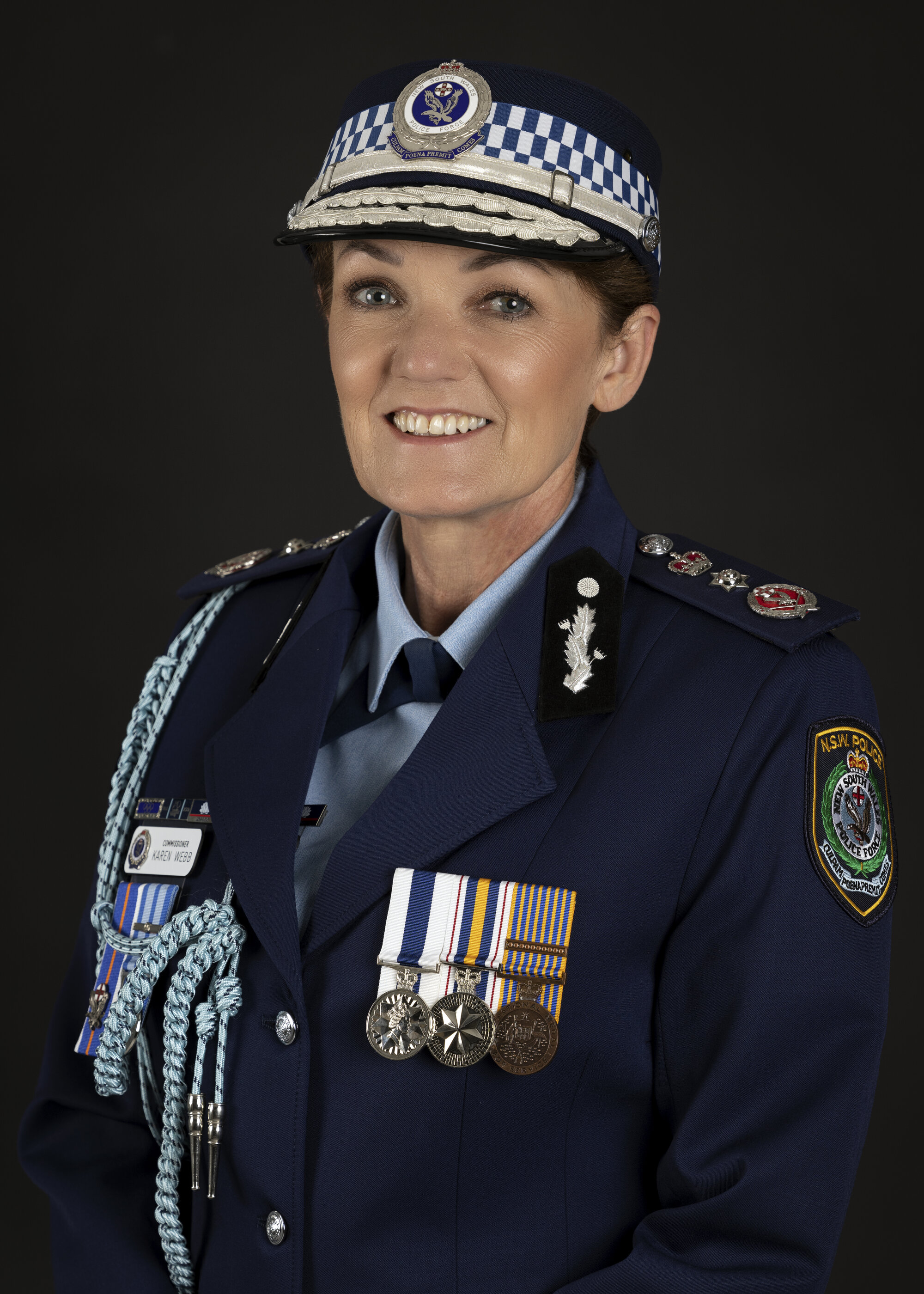 Photo: NSW Police Force
Photo: NSW Police Force
- Leading our response to the Bondi tragedy
- Establishing the Domestic Violence Registry
- Implementing new winding laws to get knives off our streets
- Establishing Strike Force Pearl and Operation Shelter to tackle antisemitism and hate crimes
- Tackling regional crime through Operation Regional Mongoose and Operation Soteria
- Achieving an historic pay rise for NSW Police Officers, including payment for student officers
- Overseeing the largest student police clast in 11 years, just last week
- And delivering critical infrastructure upgrades including a new police station at Helensburgh and critical upgrades to the Nemesis

PBWBA visits MP for Pittwater in Parliament
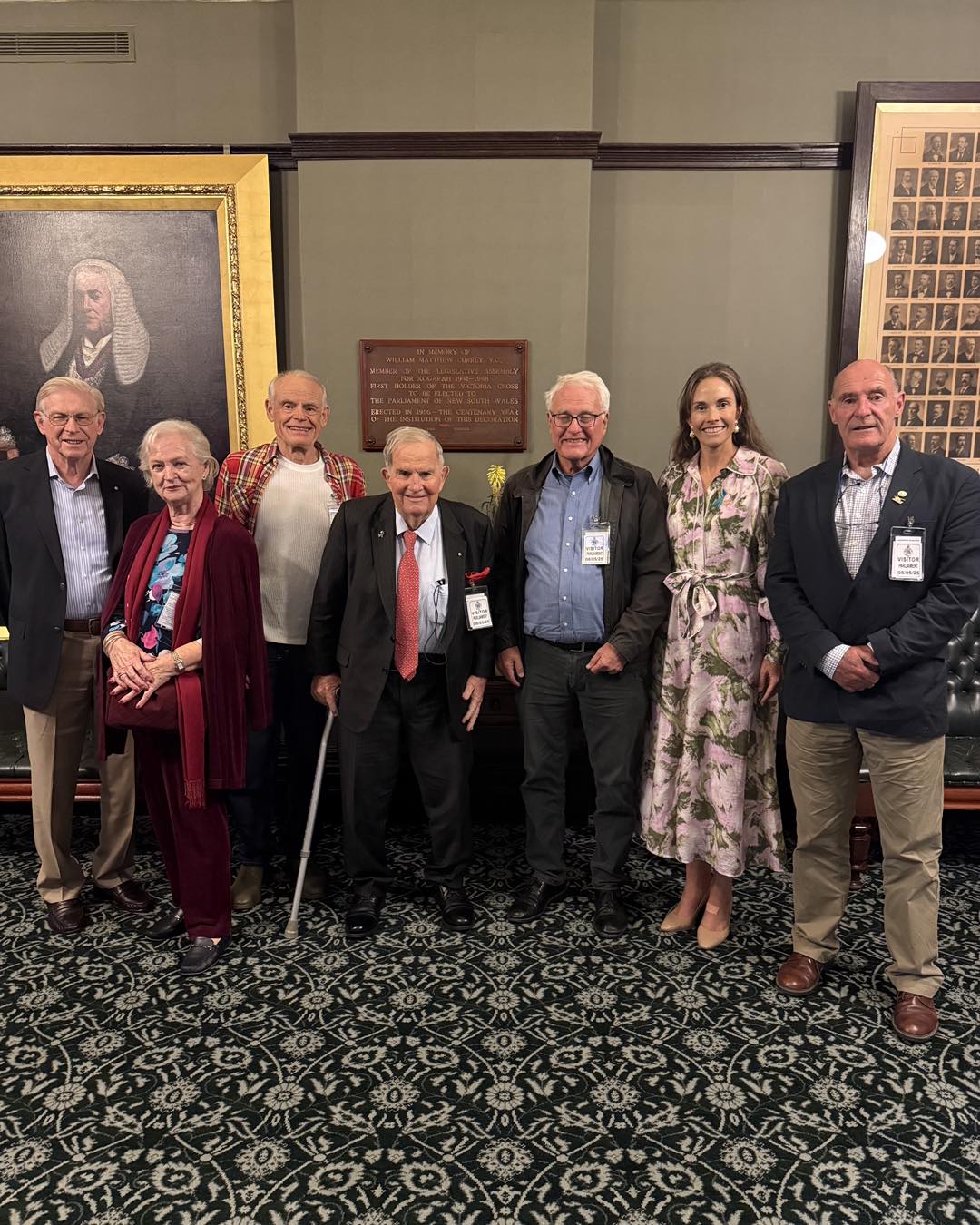
Stay Safe Jools!
Pittwater lady Jools Farrell, a long time Sydney Chapter Coordinator and current offshore crew member with the Captain Paul Watson Foundation, whose namesake was released from from prison in Greenland after Denmark rejected a Japanese request to extradite him, is currently heading into the northern Summer to persist in what she has been doing for years now - trying to save whales.
On Wednesday May 7 Pittwater MP Jacqui Scruby made the following Community Recognition statement in the NSW Parliament:
''I recognise the dedication of Jools Farrell, who bravely protects our local and global marine life while placing herself in harm's way. Jools is currently en route to Dublin with the Captain Paul Watson Foundation, where she and the crew will be ready to depart if the Icelandic whale fleet decide to whale off the coast this summer.
During that campaign, the crew will put themselves between the harpoon of a boat and whales to prevent the killings of those gentle giants. These campaigns require months of dedication, both onshore and at sea, where Jools acts as a medic and quartermaster.
Jools is motivated by her passion for marine life. Her inspiration is Paul Watson, who has worked tirelessly to protect marine life across the world. Jools has been on several campaigns, including to Antarctica, which requires months of perseverance. I thank Jools for her outstanding commitment to protecting the marine animals we hold so dear in Pittwater and extend my deepest gratitude for her work.''
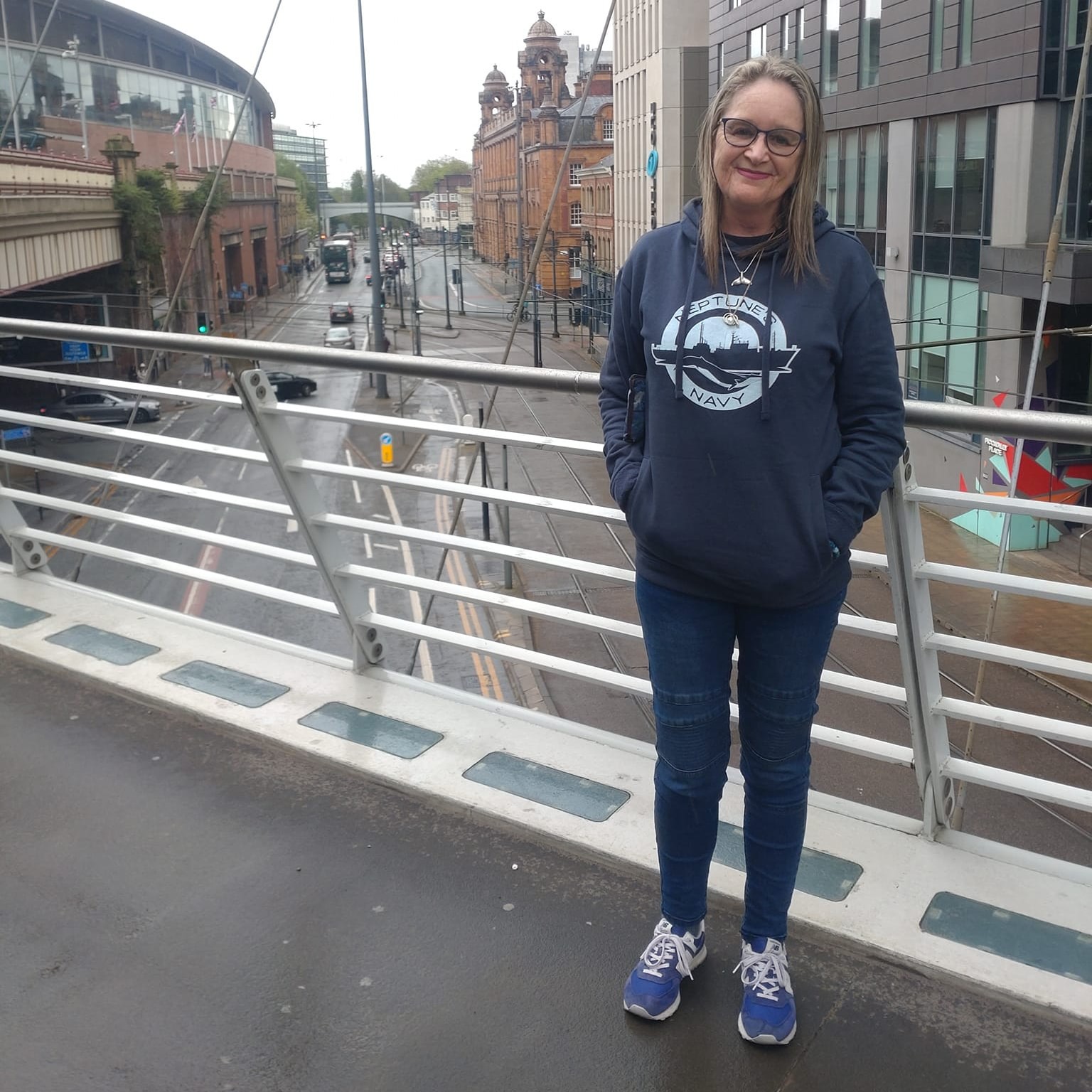
On Thursday May 8 2025 Captain Paul Watson updated us all with:
''The JOHN PAUL DEJORIA has arrived in Dublin from Bermuda.Now we look to Iceland for confirmation that whaling has been cancelled for the third year in a row.
In 2023 on the very day that the JPD arrived in Icelandic waters, the Icelandic government called for a moratorium on whaling for the summer. In September 24 Fin whales were illegally killed but Denmark blocked the return to Iceland.
In 2024 while on route to Iceland, the whale hunt was again cancelled. Now in 2025 it appears that Fin whale murdering by Iceland has been cancelled. We shall see. Kristján Loftsson has never been a man of his word.''
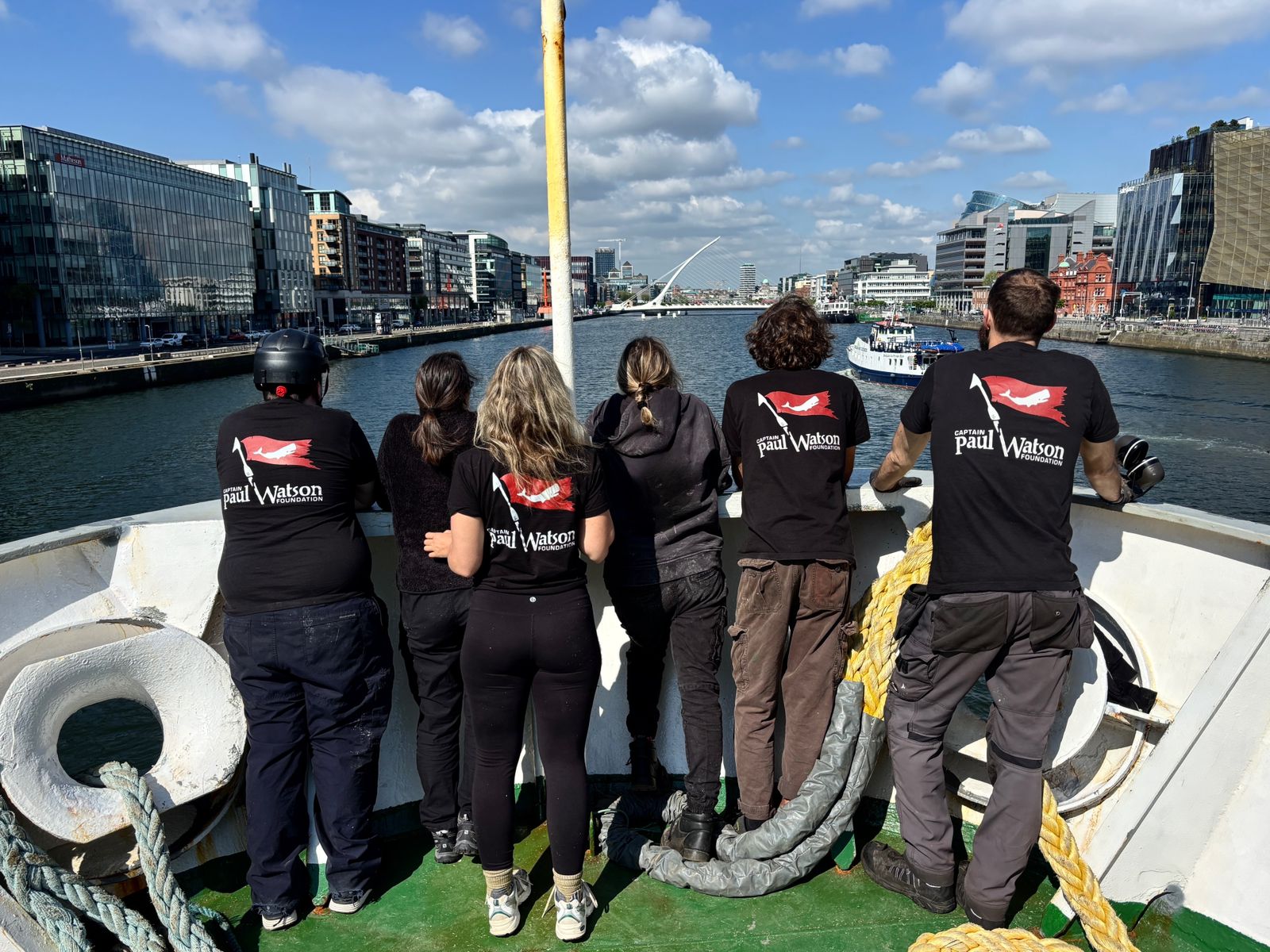
Photos; courtesy Jools and Paul.
''I recognise the dedication of Jools Farrell, who bravely protects our local and global marine life while placing herself in harm's way. Jools is currently en route to Dublin with the Captain Paul Watson Foundation, where she and the crew will be ready to depart if the Icelandic whale fleet decide to whale off the coast this summer.During that campaign, the crew will put themselves between the harpoon of a boat and whales to prevent the killings of those gentle giants. These campaigns require months of dedication, both onshore and at sea, where Jools acts as a medic and quartermaster.Jools is motivated by her passion for marine life. Her inspiration is Paul Watson, who has worked tirelessly to protect marine life across the world. Jools has been on several campaigns, including to Antarctica, which requires months of perseverance. I thank Jools for her outstanding commitment to protecting the marine animals we hold so dear in Pittwater and extend my deepest gratitude for her work.''


Congratulations Michelle!
The Warringah Pittwater SES unit is delighted to announce that member Michelle Puhl won the Champion of Change Award at the NSW SES International Women's Day Awards (delayed due to operational activity with TC Alfred).
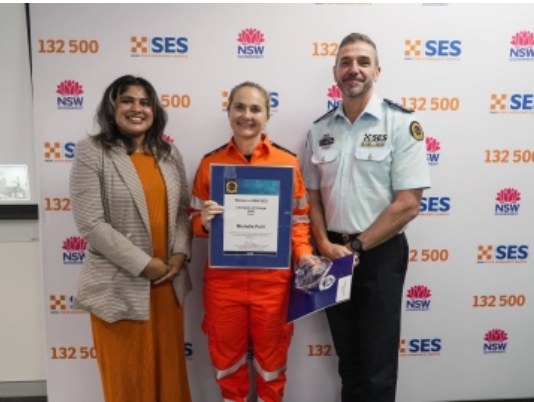
"Michelle has brought a level of fun and enthusiasm while leading a variety of activities which has led to significantly increased participation and interest in the unit".
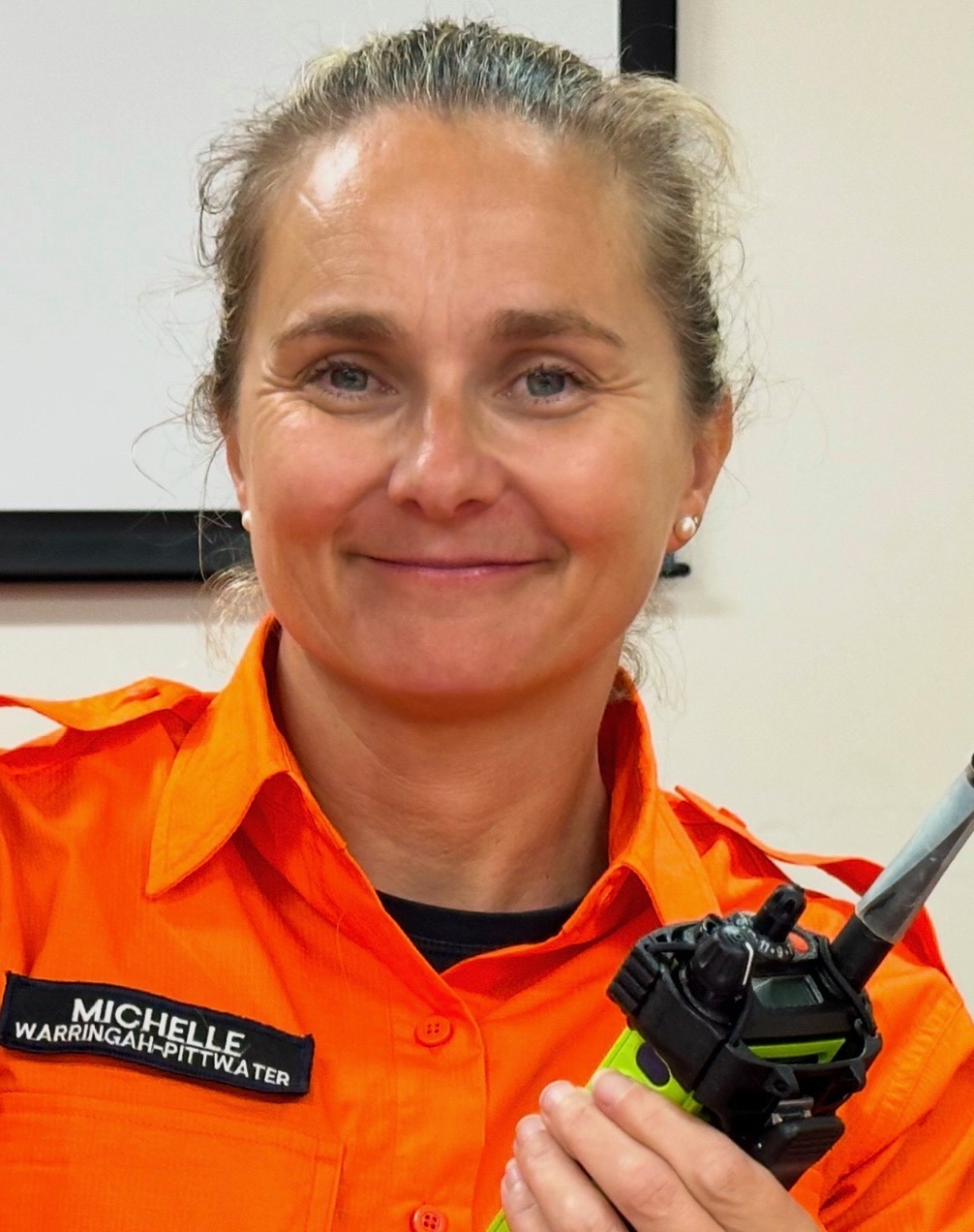
Congratulations Michelle! We love having you in our unit and cannot wait to see what you will achieve in the future.
NSW SES Warringah / Pittwater Unit


- Scamps Retains Mackellar, Increases Margin, Steggall Retains Warringah, Increases Margin, Independent Nicolette Boele Looks set to Win Bradfield – Landslide win for Labor: The Data
- Avalon Bulldogs A Grade 2025: Three Pittwater A Grade Teams this Season
- A Field Guide to the Marine Life of Coastal Reefs and Rock Pools: by Phil Colman - Peter Mitchell - an expanded + updated 'Exploring Tidal Waters on Australia’s Temperate Coast' for all who live here
- 'Wedding Island' The new island play opening this month report by Roy Baker, Editor, Pittwater Offshore Newsletter
- Attestation of Class 365 - Largest class to graduate in 11 years: 7 New Probationary Constables for Northern Beaches PAC
- Australia Post Community Grant to First Hand Solutions' IndigiGrow - Grevillea Caleyi propagators - Continues the Saving of Critically Endangered Species
- 2025 APRA Music Award winners announced
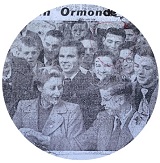 Big Brother Movement Celebrates 1925 to 2025 Centenary: Now Sends Australians Out into the World - Scholarships Now open for All Young Australians - Celebrating Courage, Care and Connection
Big Brother Movement Celebrates 1925 to 2025 Centenary: Now Sends Australians Out into the World - Scholarships Now open for All Young Australians - Celebrating Courage, Care and ConnectionFor a century, the Big Brother Movement (BBM) has been a catalyst for change and opportunity, opening doors for young people to explore the world and make their mark.
It began as Australia’s most successful migration program for young men moving from the UK to Australia, the Big Brother Movement.
Today, built on this legacy, BBM continues to empower young people to venture overseas for work experience through their Global Footprints Scholarships program.
So instead of bringing young people to Australia to access all the opportunities here, they are providing a chance for young Australians to follow their vocational dreams overseas.
A National Monument to Migration Ceremony took place yesterday, Saturday 10 May 2025. This moving ceremony included the unveiling of names on The Welcome Wall, Australia’s National Monument to Migration, highlighting migrant stories and the Australian National Maritime Museum’s role in shaping Australia’s identity.
Their BIG Centenary Grand Celebration at the Maritime Museum will take place on Tuesday 12 August 2025 at the Australian National Maritime Museum and they are currently reaching out and asking all former 'Little Brothers' to contact them and get involved.
Join them as they continue to champion the remarkable journeys of young people in this world.
- 100 years of opening up the world to young people
- The legacy of Australia's most successful historic migration program, the Big Brother Movement
- 40 years of scholarships for vocational work experience around the world
- Celebrating stories of courage, care, and connection
Join us in championing the remarkable journeys of young people growing a better world.
This week a look into their Global Footprints Scholarship, now open for applications and closing June 1 (for young men and women aged 18 to 24), some history of the movement, and an insight from a former Mona Vale resident and Manly Daily gentleman who was a 1950 'Little Brother'.
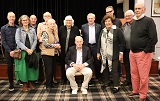 Palm Beach & Whale Beach Association Annual Report 2024/2025 + Guest Speaker: “Two Lives: Beverlie & Midget Farrelly”
Palm Beach & Whale Beach Association Annual Report 2024/2025 + Guest Speaker: “Two Lives: Beverlie & Midget Farrelly”The Palm Beach Whale Beach Association held its 107th AGM on Tuesday May 13 2025.
Assoc. Prof. Richard West AM was re-elected President and tabled his report, made available for the community this Issue - Prof. West has already served 10 years in this capacity.
Prof. West paid tribute to Virginia Christensen at this year's AGM, stepping down after years as a Vice-President, although she will remain active as a member.
Gordon Lang will be taking up the VP role alongside fellow VP Frank Edgell-Bush AM, who continues to represent the community and its residents.
Frank Edgell-Bush received his AM in the 2018 Queens' Birthday Honours List; 'For significant service to business, particularly to improving standards of corporate governance across the private, public and not-for-profit sectors.'
After presenting his report, Beverlie Farrelly, as this year's Guest Speaker, was interviewed by PBWBA Secretary Robert Mackinnon, a gentleman with a passion for local history, who is currently working on the Association's History - a legacy of looking after the local community and environment that stretches over 107 years.
“to preserve and enhance the natural beauty of the area and to protect the local amenity by promoting proper planning of all developments and by expressing positively, in appropriate quarters, the views of residents.”
Prof. Richard West AM Commences 11th Term as Palm Beach Whale Beach Association President
“to preserve and enhance the natural beauty of the area and to protect the local amenity by promoting proper planning of all developments and by expressing positively, in appropriate quarters, the views of residents.”
- Government Response to Upper House inquiry into the ‘Ability of local governments to fund infrastructure and services’ signals Special Rates Variations will be tied to specific projects - time limited
- Wakehurst MP Michael Regan Tables the Northern Beaches Hospital (Voluntary Contract Termination) Bill
- Wedding Island Opening Weekend: 'A Triumph' - Review: Play Time! by Bill Gye OAM
- NSW Architecture Awards 2025: Shortlist announced May 12 + Local Nominations + Australian Institute of Architects 2025 National Prize winners - New President + The Inaugural Murcutt Symposium on this September
- Pittwater Tigers Secure 50k Grant for Auskick field at North Narrabeen + Amenities Upgrade
- Return to Paradise Series 2: Being Filmed in Pittwater Again
- Scruby-Regan-Greenwich Renew Call for Koala Park: Over 100 North Coast Businesses Call for the Immediate Establishment of the Whole Great Koala National Park - Still No Crossings in Place for Sydney's Last Koalas - Forestry Corp. of NSW Half-Yearly Report tabled
- Warringah Golf Club appoints Prime Projects for new clubhouse build
- Thousands reunited with loved ones thanks to tireless Marine Rescue NSW volunteers during high-demand boating season: MAYDAY Appeal 2025
- NSW SES Hawkesbury Unit Celebrates 40 Years of Rescues
- Pittwater's Mother Nature: Mother's Day 2025 - a celebration through some of the best photos taken by Joe Mills and Kevin Murray
- It’s almost winter; Why is Australia still so hot? + Even as emissions level off, carbon dioxide in the atmosphere is growing faster than ever; Here’s why
.jpg?timestamp=1603484552996)
.jpg?timestamp=1603485004272)
Taken from Towler's Bay loop track by Joe Mills
- Don Mitchell: Tribute to A Community-Minded Local Legend
- Mona Vale JRLFC's Inaugural Beau Hewitt Cup on The Raiders Home Ground
- IPART Decision on Council Special Variation Application Approves 25.2% Permanent Increase
- Minns Government commits to returning Northern Beaches Hospital into public hands
- Pittwater MP slams the Government’s Low and Mid-Rise Housing Policy for turning on the tap for developers
- Still No Insurance for e-bikes-e-scooters in NSW: Riders on pedestrian Footpaths still allowed - Government's Response to use of e-micromobility Inquiry tabled
- Future of Sydney’s transport unearths a window to its past: colonial-era merchant, Prosper de Mestre's Pittwater Connection

January 1985: The two Mitchell brothers when Warren received this INNOVATION AWARD from Surf Life Saving Australia. Photo: Geoff Searl OAM, Avalon Beach SLSC Life Member and President of Avalon Beach Historical Society
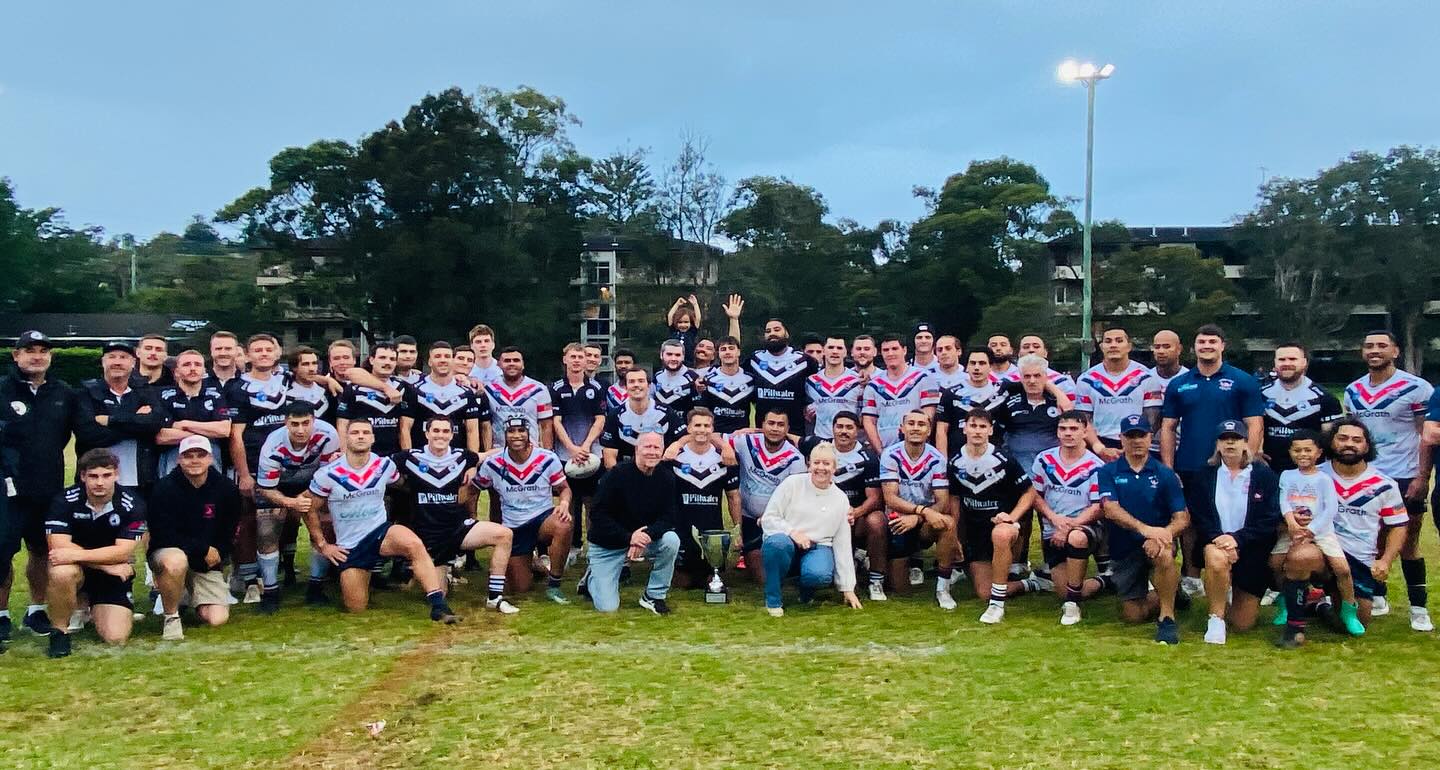
The 2025 Beau Hewitt Cup family. Photo Mona Vale Raiders
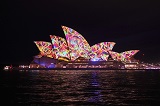 Let There Be Light: Vivid Sydney 2025 Kicks Off
Let There Be Light: Vivid Sydney 2025 Kicks OffThe Harbour City has awakened in colour and creativity as Vivid Sydney 2025, Australia’s largest event, has officially begun for its 15th year.
Under this year's theme of 'Dream', a world class curation of Light, Ideas, Music and Food await festivalgoers until Saturday, 14 June.
This year, the festival comprises over 200 events across five unique zones around the city’s CBD, all designed to inspire wonder, expand thinking and give each visitor the opportunity to see Sydney in a new light.
Making Vivid Sydney more accessible than ever, over 75 per cent of this year’s program is free to enjoy, including the entire Vivid Light Walk, with Martin Place also making a welcome return to the festival footprint after a seven-year absence.
The iconic Vivid Light Walk will connect five zones throughout the city—Circular Quay and The Rocks; Barangaroo; the CBD and Martin Place (returning for the first time since 2018); Darling Harbour; and The Goods Line and Inner City, with each zone offering visitor experiences spanning all four festival pillars; Light, Music, Ideas and Food.
This Issue we step outside of Pittwater to provide an overview.
- Warriewood Community Centre Build update: May 2025 Update + a few Internal pics by Council
- Aquatics Marine Rescue NSW unveils new first-of-its-kind rescue vessel
- Irrawong Falls Walk by Joe Mills
- Volunteers Week 2025: The many ways You Can Give a Bit of your time to Make Your Community Better
Marine Area Command - NSW Police Force News
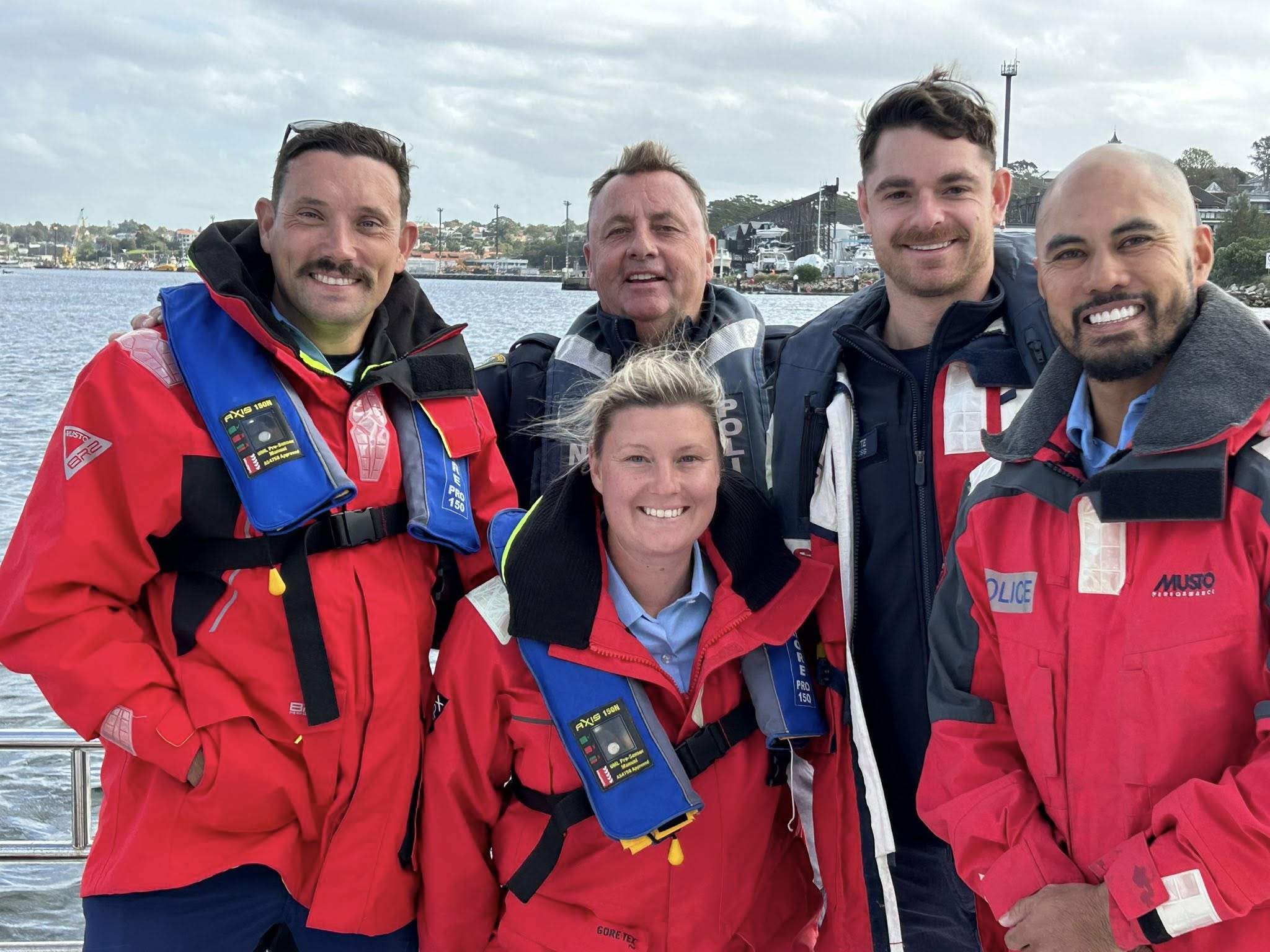 Marine Area Command (MAC) officers from the Sydney and Broken Bay sectors recently completed their Certificate I in Maritime Operations (GPH NC). This qualification prepares these officers to function effectively as integral members of the crew aboard our commercial police vessels.
Marine Area Command (MAC) officers from the Sydney and Broken Bay sectors recently completed their Certificate I in Maritime Operations (GPH NC). This qualification prepares these officers to function effectively as integral members of the crew aboard our commercial police vessels.
These newly certified officers significantly bolster the capabilities of the NSW Police Force, enhancing our ability to combat marine-related crime and execute search and rescue missions with greater efficiency and effectiveness.

VW State Classic 2025 - NSW High School State Titles: Results
Surfing NSW is currently running the 2025 Volkswagen State Classic, a historic event combining five NSW State Titles: Juniors, Masters Shortboard, Longboard, SUP and High School, under one banner for the very first time.
Being held from May 27 to June 1 in Coffs Harbour, the six-day event features more than 700 of the state’s top surfers, aged 10 to 80+, competing across three breaks on the Coffs Coast. This all-ages, inclusive surfing celebration is bringing the community together for a week of competition, connection and experiences that reach far beyond the water.
The results of the NSW High School State Titles, held Wednesday May 28, are already in and record Narrabeen Sports High School had two teams taking part, both of which won a place in the finals, with their junior team winning first place, while St. Augustine's secured the silver in the Seniors Division - congratulations to all who had a go - and especially to the St Augustine's and Narrabeen crews who did so well in their heats and across the competition.
The news service sent through a request for some 'medal pics' late Saturday (May 31) and the great team at Surfing NSW (thanks Zoe!), and your peers, sent back those that run below - we'll run a full 'wrap' next Sunday, including action pics. In the meantime, some results:
Senior Boys- High School (16 teams overall)
- Illawarra Sports High - Ethan Rule and Taj Air
- St Augustine's College Sydney - Aussie Kelaher and Ben Zanatta
- St Francis Xavier's College - Jye Kelly and Felix Byrnes
- Narrabeen Sports High School - Louie Ewing and Rene Galloway
Senior Girls- High School
- Illawarra Sports High
- Cronulla High
- Byron Bay High School
- McAuley Catholic College
Junior Boys- High School
- Narrabeen Sports High School - Jaggar Phillips and Eli Clarke
- Illawarra Sports High - Cruz Air and Ashton Mekisic
- Lindisfarne Anglican Grammar School (2)- Jay Whitfield and Charlie Cairncross
- Lindisfarne Anglican Grammar School (1) - Hunter Sutcliffe and Marvin Freeman
Junior Girls- High School
- Illawarra Sports High
- St Peters Anglican College (1)
- St Peters Anglican College (2)
- McAuley Catholic College (1)
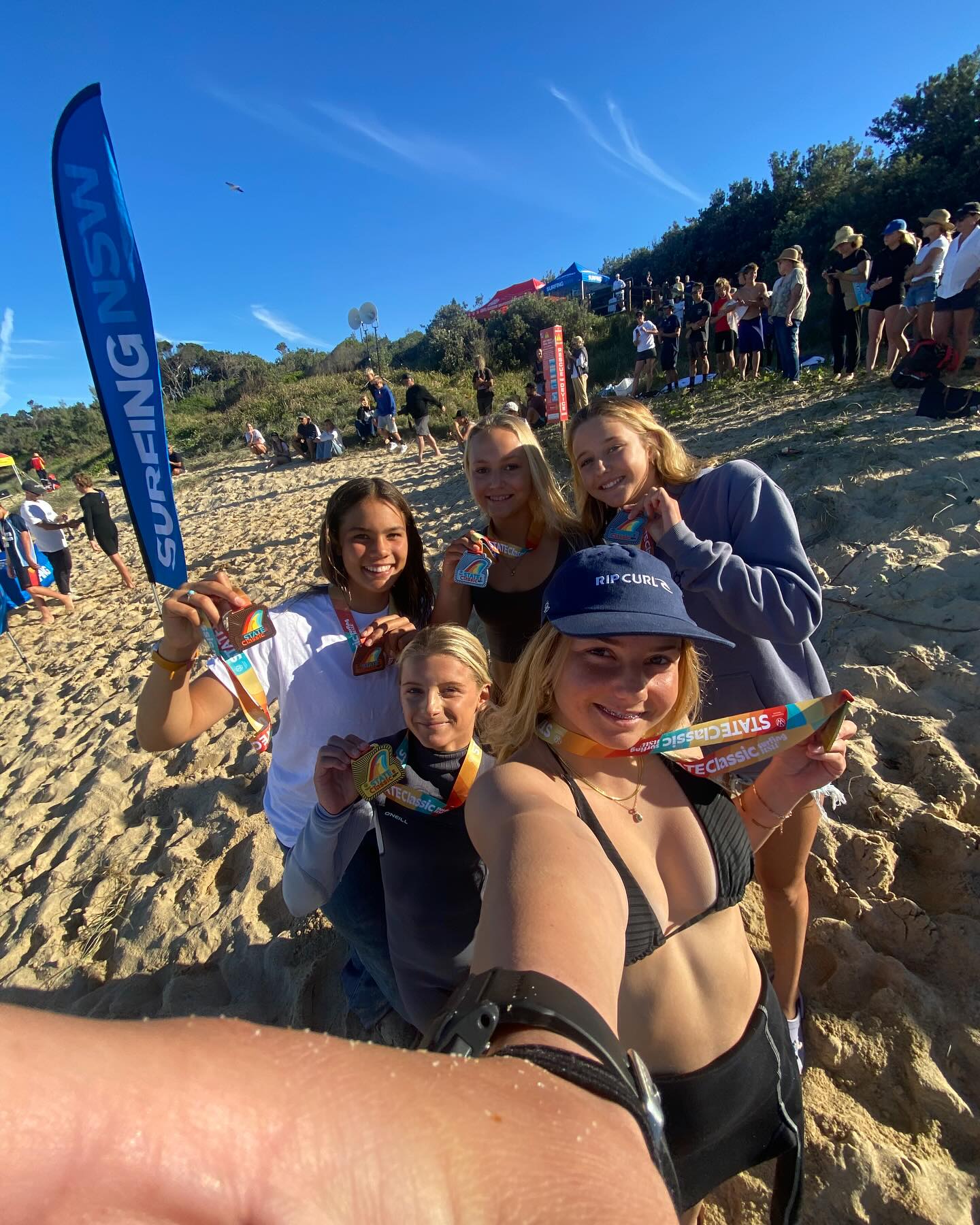
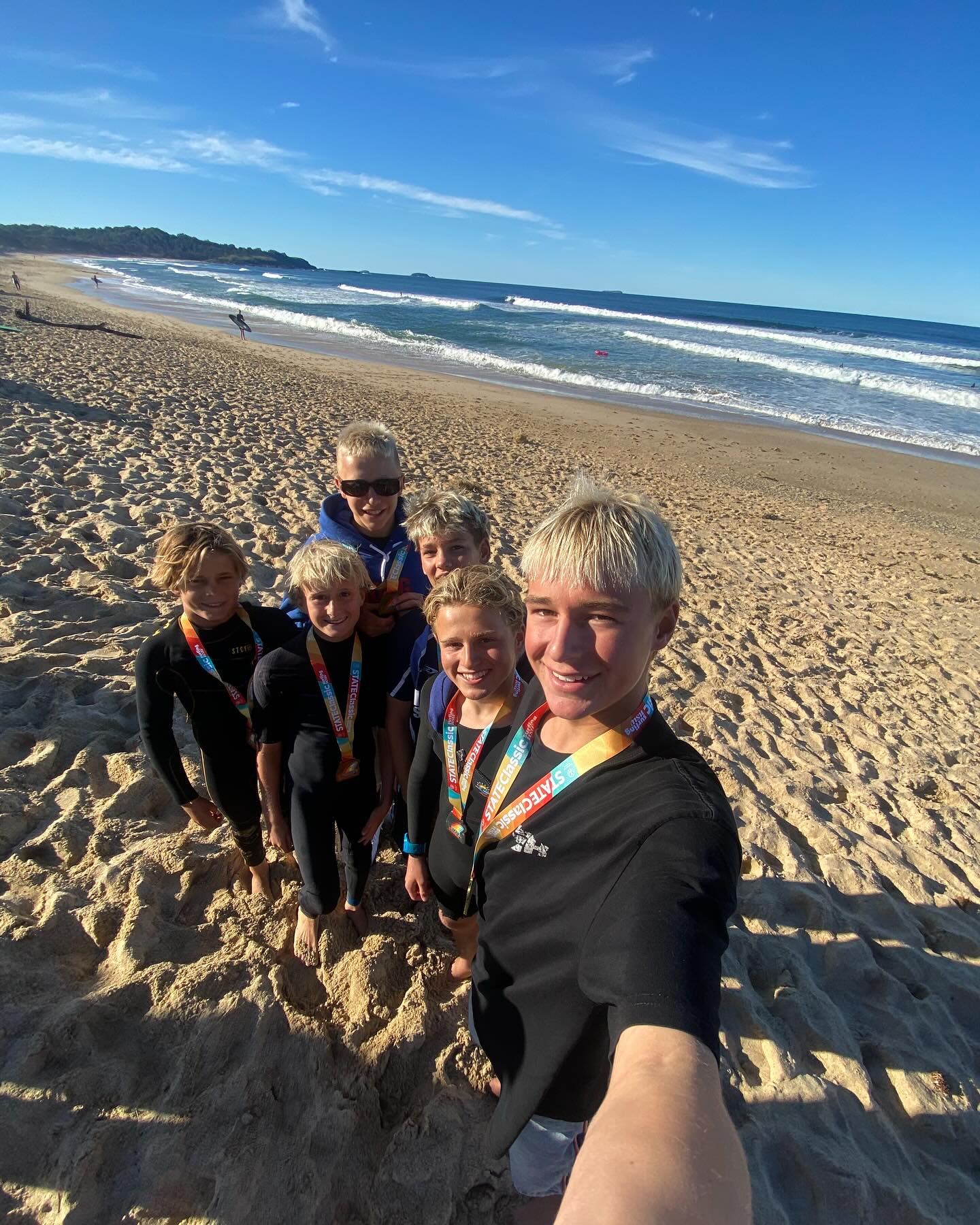
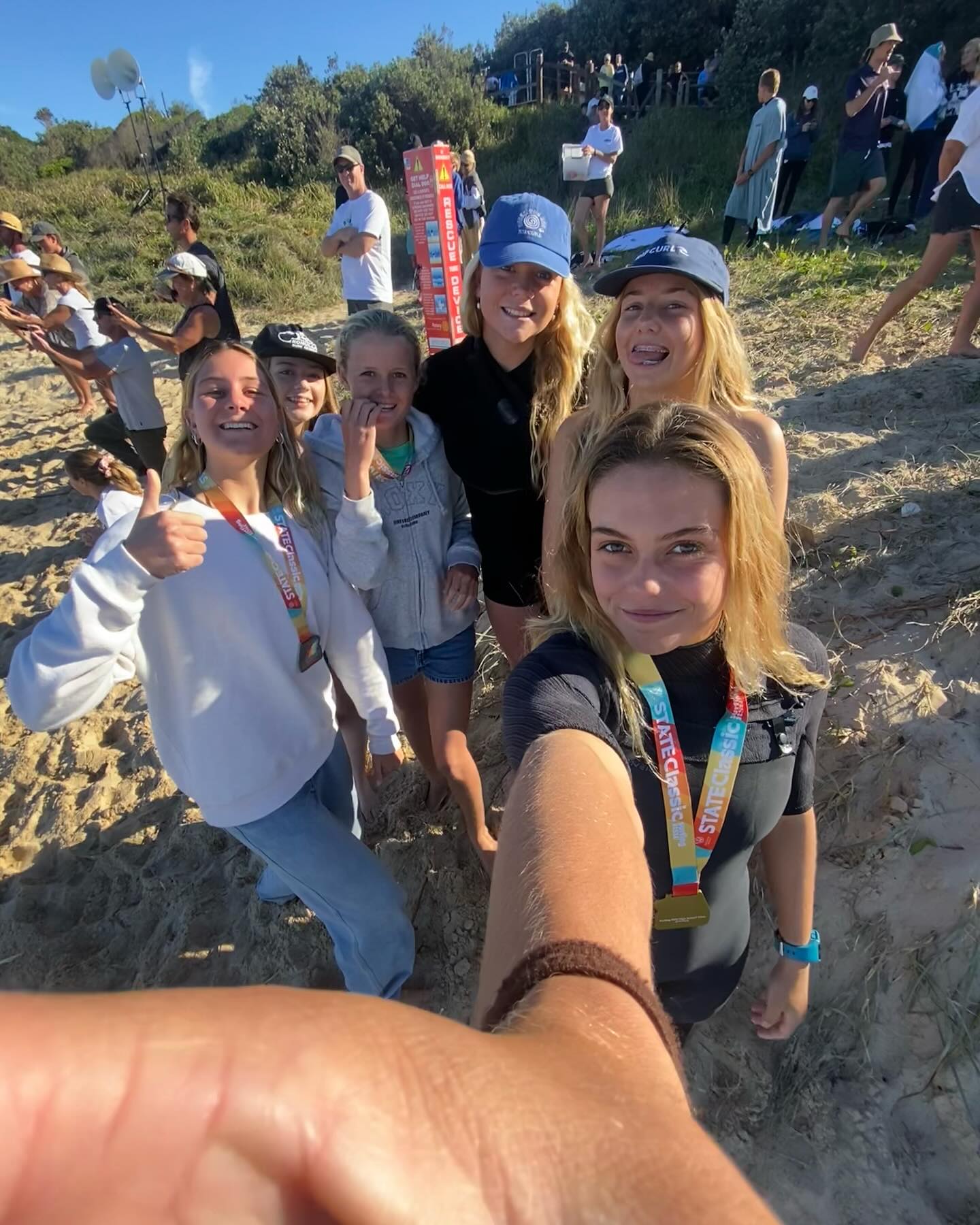
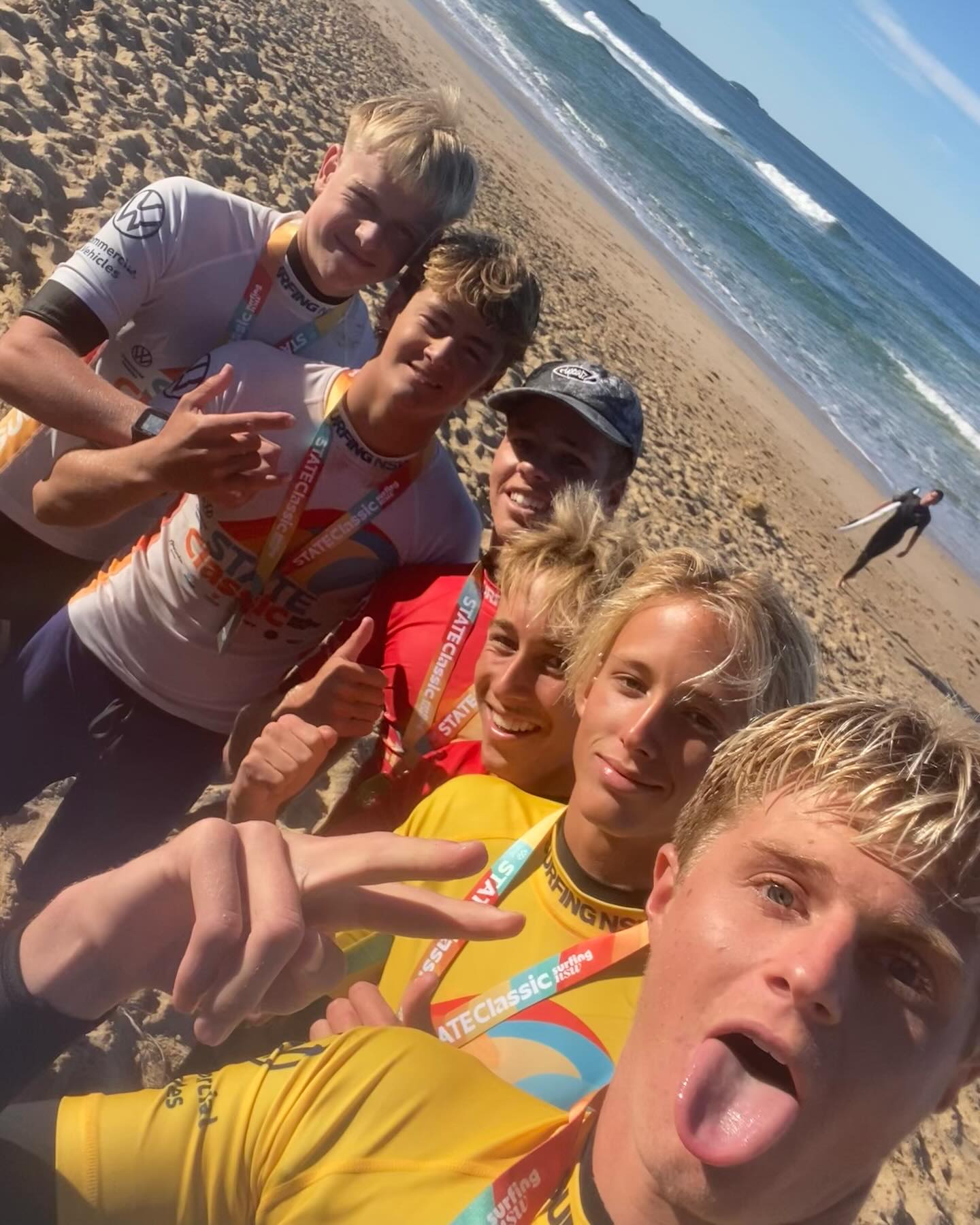
Surfing NSW is currently running the 2025 Volkswagen State Classic, a historic event combining five NSW State Titles: Juniors, Masters Shortboard, Longboard, SUP and High School, under one banner for the very first time.
Being held from May 27 to June 1 in Coffs Harbour, the six-day event features more than 700 of the state’s top surfers, aged 10 to 80+, competing across three breaks on the Coffs Coast. This all-ages, inclusive surfing celebration is bringing the community together for a week of competition, connection and experiences that reach far beyond the water.
The results of the NSW High School State Titles, held Wednesday May 28, are already in and record Narrabeen Sports High School had two teams taking part, both of which won a place in the finals, with their junior team winning first place, while St. Augustine's secured the silver in the Seniors Division - congratulations to all who had a go - and especially to the St Augustine's and Narrabeen crews who did so well in their heats and across the competition.
The news service sent through a request for some 'medal pics' late Saturday (May 31) and the great team at Surfing NSW (thanks Zoe!), and your peers, sent back those that run below - we'll run a full 'wrap' next Sunday, including action pics. In the meantime, some results:
Senior Boys- High School (16 teams overall)
- Illawarra Sports High - Ethan Rule and Taj Air
- St Augustine's College Sydney - Aussie Kelaher and Ben Zanatta
- St Francis Xavier's College - Jye Kelly and Felix Byrnes
- Narrabeen Sports High School - Louie Ewing and Rene Galloway
Senior Girls- High School
- Illawarra Sports High
- Cronulla High
- Byron Bay High School
- McAuley Catholic College
Junior Boys- High School
- Narrabeen Sports High School - Jaggar Phillips and Eli Clarke
- Illawarra Sports High - Cruz Air and Ashton Mekisic
- Lindisfarne Anglican Grammar School (2)- Jay Whitfield and Charlie Cairncross
- Lindisfarne Anglican Grammar School (1) - Hunter Sutcliffe and Marvin Freeman
Junior Girls- High School
- Illawarra Sports High
- St Peters Anglican College (1)
- St Peters Anglican College (2)
- McAuley Catholic College (1)




Vale Jack McCoy
July 31, 1948 - May 26, 2025
Our community is in mourning on hearing of the passing of one of our own and extends love to Jack's wife Kelly, children Cooper and Indiana, and grandchildren Makoha, Kalani, Cloudy, and Isabel.
Jack passed peacefully at home on Monday.
His family stated on Thursday, May 29:
The last couple of days have been a blur however the pain has been eased by the outpouring of tributes and stories being shared. It’s a testament to the amazing life he created and a reminder of how much he touched, moved and inspired so many people from every corner of the world. We thank you all from the bottom of our hearts.
In true Jack McCoy style, we’ll be organising a couple of celebrations in the coming months to allow those from far and wide to join us and pay their respects, beginning with a small paddle out at Scotts Head this Saturday for the local community and friends nearby.
The main ceremony / paddle out will be held at Avalon Beach on July 5th, and then we will return to Hawaii later this year to spread his ashes.
We invite all friends, family, the wider community and beyond to come and respectfully celebrate his amazing life.
Dress: Wear your favourite aloha shirt.
It’s been literally impossible to keep up with the sheer volume of posts and stories that have been shared - if you could please send any special pics and videos you may have to jackmccoyaloha@outlook.com so we can compose something special for the celebrations and our family at this time and forever.
Love, the McCoy ohana
Jack McCoy, who wrapped up two months of touring Blue Horizon for the 20th Anniversary of this award winning film on Saturday May 24th, reminded surf fans that it was he who fed Mark Foo the famous line, 'Eddie Would Go', and closed with a plea to go easy in the lineup, share the waves, and love your brothers and sisters - your brothers and sisters who are everywhere and present in everyone.
Every time any of us saw him out and about, Jack always had a big smile for you - he was about community, surfing, sharing the stoke - living every moment as best you can, and family.
More in this week's Profile: A Celebration of Jack McCoy
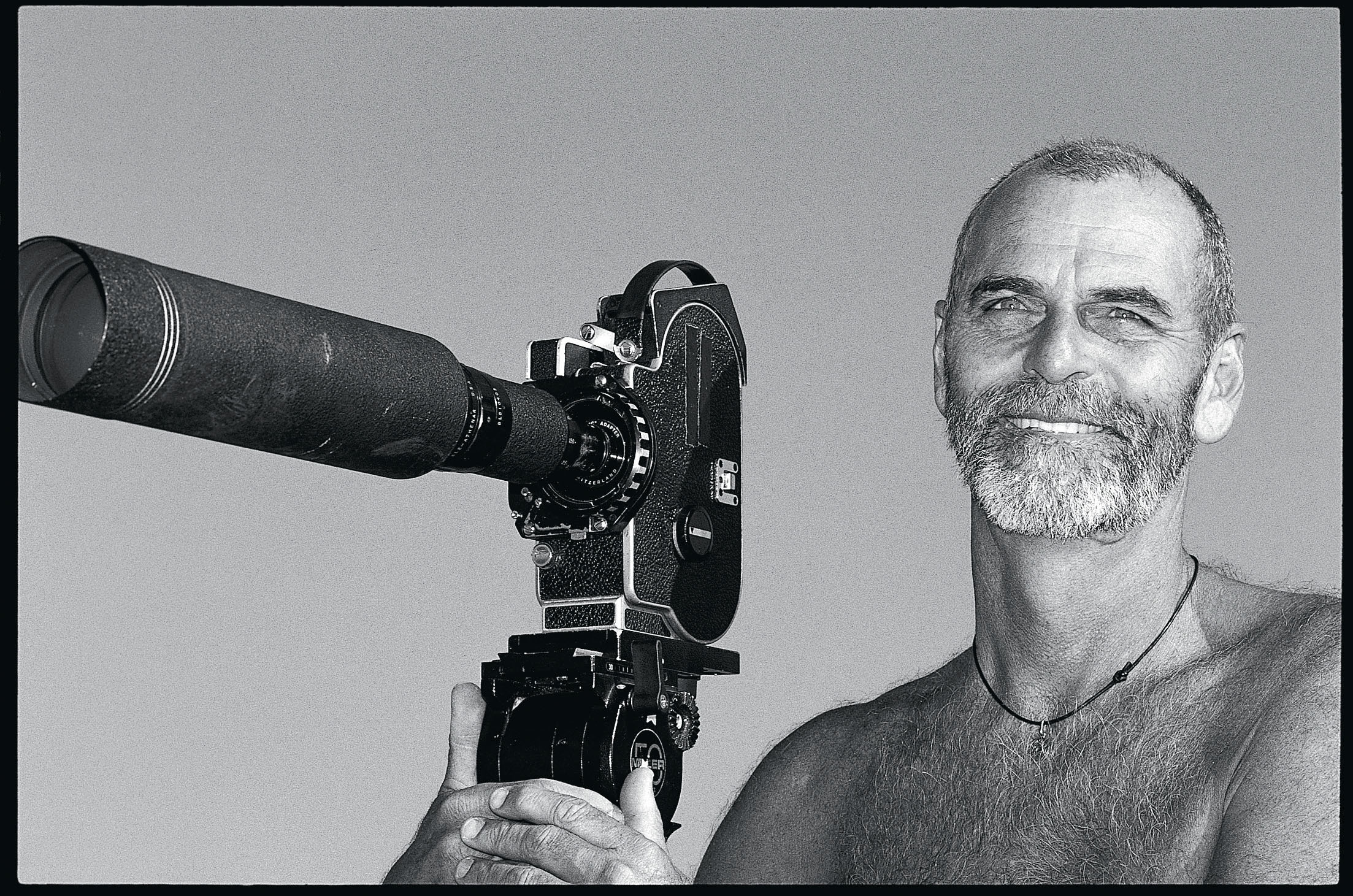
Our community is in mourning on hearing of the passing of one of our own and extends love to Jack's wife Kelly, children Cooper and Indiana, and grandchildren Makoha, Kalani, Cloudy, and Isabel.
Jack passed peacefully at home on Monday.
His family stated on Thursday, May 29:
Jack McCoy, who wrapped up two months of touring Blue Horizon for the 20th Anniversary of this award winning film on Saturday May 24th, reminded surf fans that it was he who fed Mark Foo the famous line, 'Eddie Would Go', and closed with a plea to go easy in the lineup, share the waves, and love your brothers and sisters - your brothers and sisters who are everywhere and present in everyone.The last couple of days have been a blur however the pain has been eased by the outpouring of tributes and stories being shared. It’s a testament to the amazing life he created and a reminder of how much he touched, moved and inspired so many people from every corner of the world. We thank you all from the bottom of our hearts.
In true Jack McCoy style, we’ll be organising a couple of celebrations in the coming months to allow those from far and wide to join us and pay their respects, beginning with a small paddle out at Scotts Head this Saturday for the local community and friends nearby.
The main ceremony / paddle out will be held at Avalon Beach on July 5th, and then we will return to Hawaii later this year to spread his ashes.
We invite all friends, family, the wider community and beyond to come and respectfully celebrate his amazing life.
Dress: Wear your favourite aloha shirt.
It’s been literally impossible to keep up with the sheer volume of posts and stories that have been shared - if you could please send any special pics and videos you may have to jackmccoyaloha@outlook.com so we can compose something special for the celebrations and our family at this time and forever.
Love, the McCoy ohana
Every time any of us saw him out and about, Jack always had a big smile for you - he was about community, surfing, sharing the stoke - living every moment as best you can, and family.
More in this week's Profile: A Celebration of Jack McCoy

- 2025 Environment Art & Design Prize Finalists announced
- A Few Waves for Jack: Little, South + North Av.
- Receivers appointed to Healthscope parent companies: short-term partial rent deferral agreement - EOI received
- World Oceans Day 2025 at Bongin Bongin Bay Mona Vale: The Janice Mason Memorial Swim + Family-Friendly Activities - Sunday June 8, from 8am
- RPAYC's Gwen Slade Regatta 2025 + Upcoming Inaugural Kay Cottee Women's Development Regatta - June 29
- Avalon Computer Pals turns 25
- Local photographer reveals a new wave perspective on South Curl Curl Rockpool in new exhibition 'Immersed' at Manly Library
June
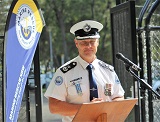 The King's Birthday 2025 Honours List
The King's Birthday 2025 Honours List Her Excellency the Honourable Ms Sam Mostyn AC, Governor-General of the Commonwealth of Australia, announced the King’s Birthday 2025 Honours list on Monday 9 June 2025.
The King’s Birthday 2025 Honours List recognises 830 Australians, including awards in the Order of Australia (General and Military Divisions), meritorious awards and recognition for distinguished and conspicuous service. This represents an increase of awardees of almost 30% since the Australia Day 2025 List.
The list includes people recommended to the Governor-General by the Council of the Order of Australia and organisations responsible for recommending meritorious, gallantry, distinguished and conspicuous honours.
“I am delighted to congratulate all those recognised in The King’s Birthday 2025 Honours List,” the Governor-General said. “These honours recognise the selfless service, integrity, achievement, creativity, and care that flourish across our country.
“As your Governor-General, I see the values of care, kindness and respect in the many Australians who are honoured today, and in those who have been recognised throughout the fifty-year history of our Australian honours system.
“Every day, and all across the country, Australians are doing extraordinary things with passion, generosity, energy, and resolve. To all who are being recognised in The King’s Birthday 2025 Honours List, I want to offer my congratulations and gratitude for all that you have given to Australia – and I look forward to meeting many of you at the investiture of your awards,” the Governor-General said.
In addition to the 581 recipients of awards in the General Division of the Order of Australia (14 AC, 31 AO, 123 AM and 413 OAM), today’s Honours list includes:
- 36 recipients of awards in the Military Division of the Order of Australia (3 AO, 10 AM and 23 OAM) and 64 Distinguished and Conspicuous awards
- 149 Meritorious awards
Recipients will attend investiture ceremonies at the Government House in their respective state or territory in coming months to receive the insignia of their award.
2025 Kings Birthday Honours from and those who have served the community in this area are Michael Bate - AM, Peter Meldrum Biscoe KC - AM, Richard Penn - AM, Teresa Plane - AM, Andrew Warden - AM, Robert (Bob) Connors - OAM, Dean Gardiner - OAM, Kim Mukuka - OAM, Ray Petersen OAM, Juris Turmanis - OAM, Michael Richer - ASM, Commissioner Alex Barrell - ESM, Douglas Lucas - ESM, Lance Miller - ESM.
Congratulations Shannon!
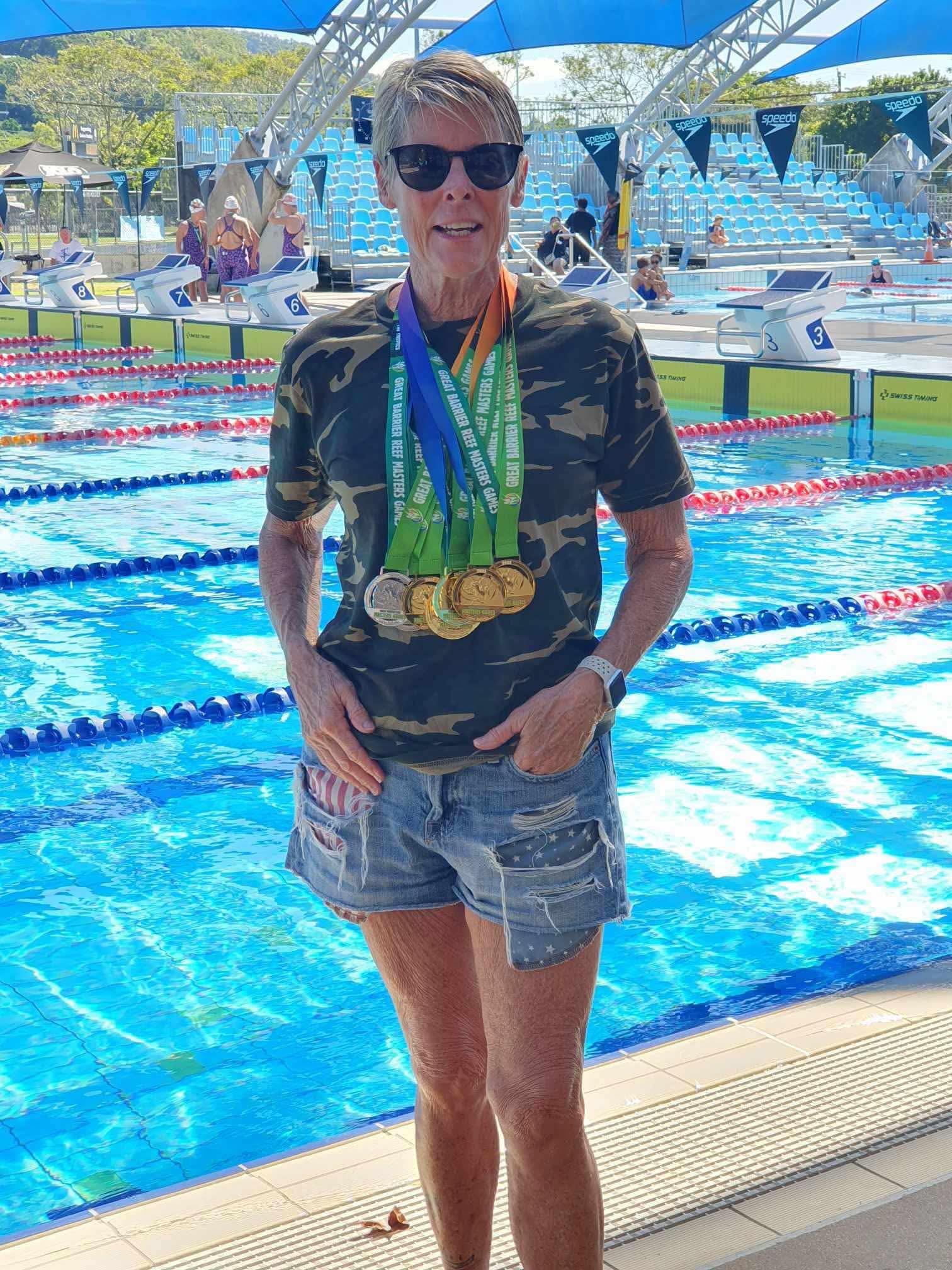
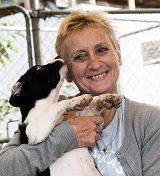 Monika's Doggie Rescue: In need of Good People with Great homes for Pets - Foster Carers
Monika's Doggie Rescue: In need of Good People with Great homes for Pets - Foster Carers Monika's Doggie Rescue
2 Cowan Road, Ingleside
www.DoggieRescue.com
www.facebook.com/doggierescue
www.twitter.com/monikadogrescue
www.instagram.com/monikadogrescue/
Although here are a variety of reasons people may give up a beloved pet, just as they were after Covid re-openings, pet re-homing facilities across Australia are currently full as owners surrender dogs and cats, this time stating they do so due to the cost-of-living impacts.
Across Sydney there has been an uptick in dogs aged just 12 months, not just older dogs whose owners may have passed away, who are being dumped. Although some flinch or avoid being touched by people, indicating they have been abused, owners being unaware how much a pet costs has become the primary reason there are a lot of homeless dogs.
According to the Australian Veterinary Association, the average dog owner spends more than $25,000 caring for their canine companion. Cat owners could spend $21,000 on average. The RSPCA states within the first year of dog or cat ownership, people could face up to $3,500 of expenses on vaccinations, vet visits, food, de-sexing, grooming, bedding, toys and treats.
This is also causing a massive slow-down on rehoming animals - and for shelters being able to take on new dogs and cats that need a home. Numerous full shelters are reporting a wait-list of people who want to surrender their dog.
RSPCA national data shows around 81,000 pets were surrendered in the 2023/2024 financial year, with only 27,000 finding new homes.
However, in Pittwater, for over a quarter of a century, Monika's Doggie Rescue has sought to find the homes for these pets.
Monika's DoggieRescue is a registered charity that believes in saving and re-homing as many pets as they can from the council pounds. For many years Monika Biernacki and a group of volunteers have been rescuing pets from death row and successfully re-homing them with permanent and loving owners.
Their motto at present is 'don't shop - adopt'.
- Sea Waters off NSW retaining sustained above average heat: BOM States May 2025 Sea Surface Temperatures are highest on record + ‘Like an underwater bushfire’: SA’s marine algal bloom is still killing almost everything in its path + As Antarctic sea ice shrinks, iconic emperor penguins are in more peril than we thought
- Northern Beaches Council Wins Award for Partnerships-Collaborations in Rethink-reduce-reuse Program - North Sydney Council Recognised for Innovative Citizenship Ceremonies
- Warriewood Community Centre Build: June 2025 Update - photos by Joe Mills
- Warriewood resident to receive Sport NSW Distinguished Long Service Honour - Collaroy Tennis Club Finalist in Inclusion Achievement of the Year Award
- School Excursion to the Surf Club by Year 2 Maria Regina Primary School during the Club's 100th Anniversary Year - Encouraging Future Surf Lifesavers & Promoting Surf Safety + June Reflections by Rogers Sayers OAM, ABSLSC Life Member
This species, and Posidonia australis, form an essential nursery habitat for various marine species, from our local seahorses and the Barrenjoey to Narrabeen Weedy Seadragons to commercially important species such as snapper and blue swimmer crabs.
See: Study shows what stresses Pittwater's seagrass meadows (and the fish that love this estuary habitat) + Jetty design review to protect seagrass and Weedy Seadragons Citizen Scientist Project Needs More Eyes On The Seas, Sands + Shores: The SeadragonSearch Project
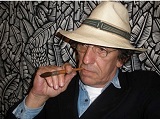 Bruce Goold August 12 1948 – June 16, 2025
Bruce Goold August 12 1948 – June 16, 2025Our community lost one of its favourite sons on Monday June 16. A lanky Puck natured icon of the Barrenjoey peninsula, Bruce Goold refined Australian Art through his own development and expanded its 21st century perimeters.
Renowned for bold graphic prints using linocuts and woodblock techniques, Bruce Goold’s instantly recognisable style established him as one of the most influential and celebrated artists in Australia. Goold was famous for his use of woodcut and lino techniques, which drew on the skill of hand cutting designs, using the positive and negative spaces to create beds for ink application. Once printed the designs come to life, with depth and texture.
For Bruce, Art is not just for the walls, it can be worn, and then it is not just about the style and cut of the cloth, it is about what the printed threads bring together; the colours, the subject, and with so many Australian birds, wildflowers, his designs were unapologetic celebrations of here and a call to immerse yourself in living Art.
There are not many locals who do not have a t-shirt, a cushion, a curtain, a Mambo shirt in his favoured themes of marine, flora and fauna, the tropical and those he called 'curiosities' - a kind of Edward Lear nonsense poem, only Bruce's acutely epitomised version.
Bruce was a joy-maker, who called all to allow themselves to be immersed. His smile, his dancing, were about sharing we are all living in a vision, knit currents of air, earth and water, and in these threads and their verses we too are all connected too to the Creative in all of us.
- 2025 NSW Architecture Awards Winners: Babylon House (Avalon/Clareville) Morning Bay House (Morning Bay) Lagoon House (Curl Curl) win - Sydney Metro City Stations Project Awarded the NSW Architecture Medallion
- NSW Budget green lights congestion busting Mona Vale Road West upgrade - Scruby delivers on Election Promise: Secures Funding
- Minns Government to amend Wakehurst MP's Northern Beaches Hospital (Voluntary Contract Termination) Bill
- Delay in New Home Care Packages Endangers Older Australians: Independent MP's
- Griffin Calls for a Crack Down on Tobacco Shops: Petition + Scruby Wants DA requirement + Parliamentary Inquiry into Illegal Tobacco Now Open for submissions
- E-Bike Safety Education Pop-up at Avalon Beach
- Climate Change Authority Report: Invest in climate adaptation now to save billions a year in recovery costs - Steggall's Climate Resilience Plan Launched
- Rise Festival Is Firing Up Manly's Winter - Runs Until June 29
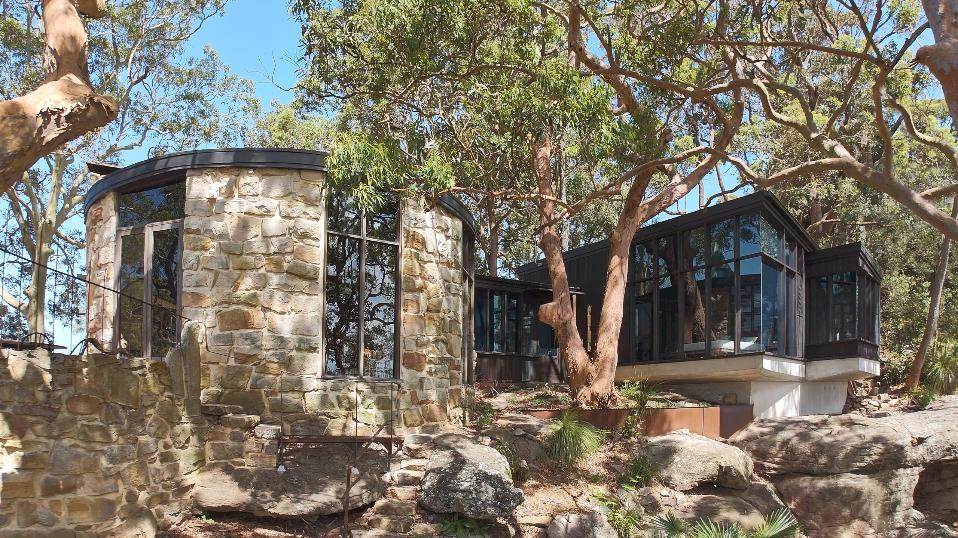
NSW teams respond to Canada’s call for firefighting support
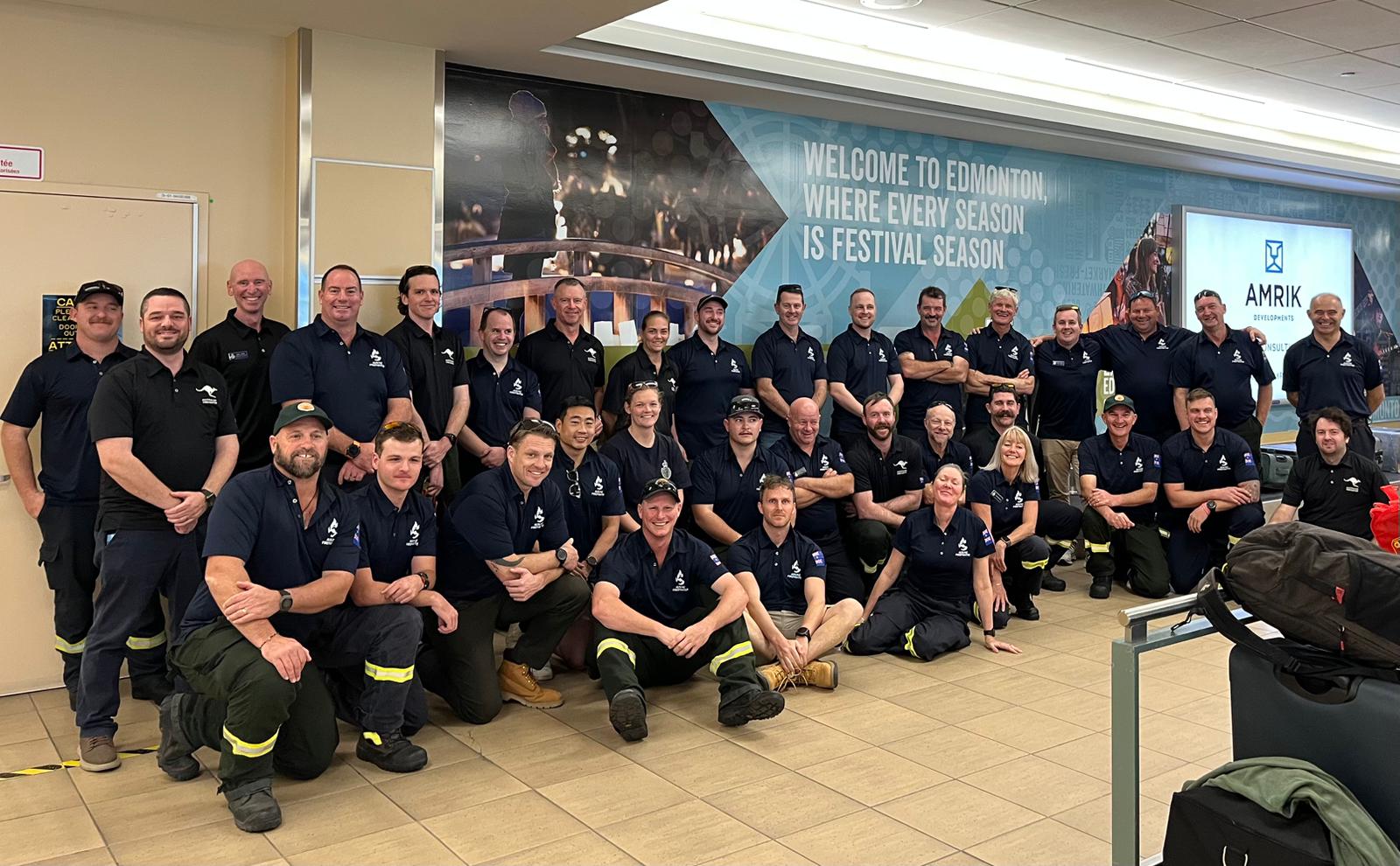

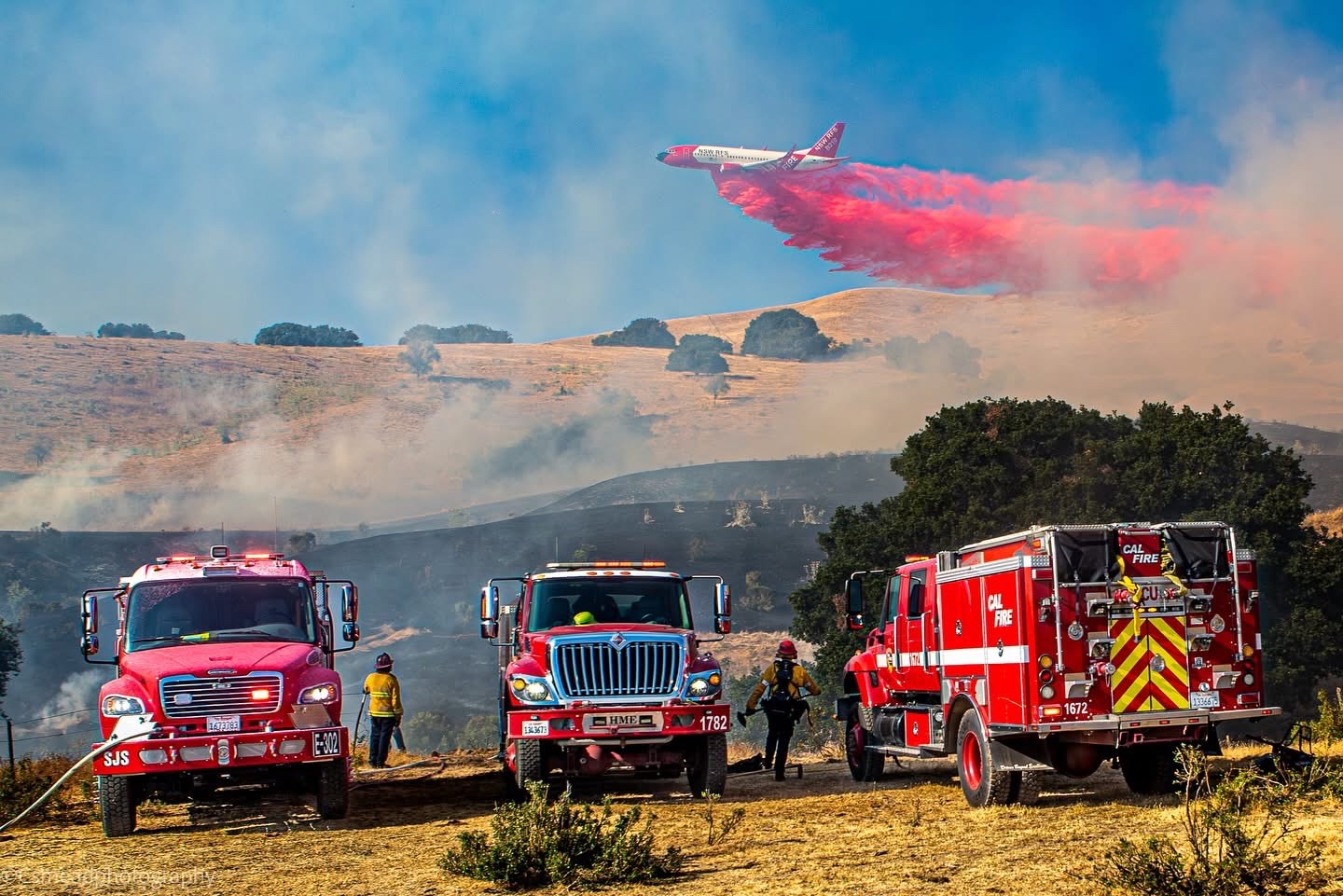
Double Callout: Marine Rescue Broken Bay assists two medical emergencies in one morning
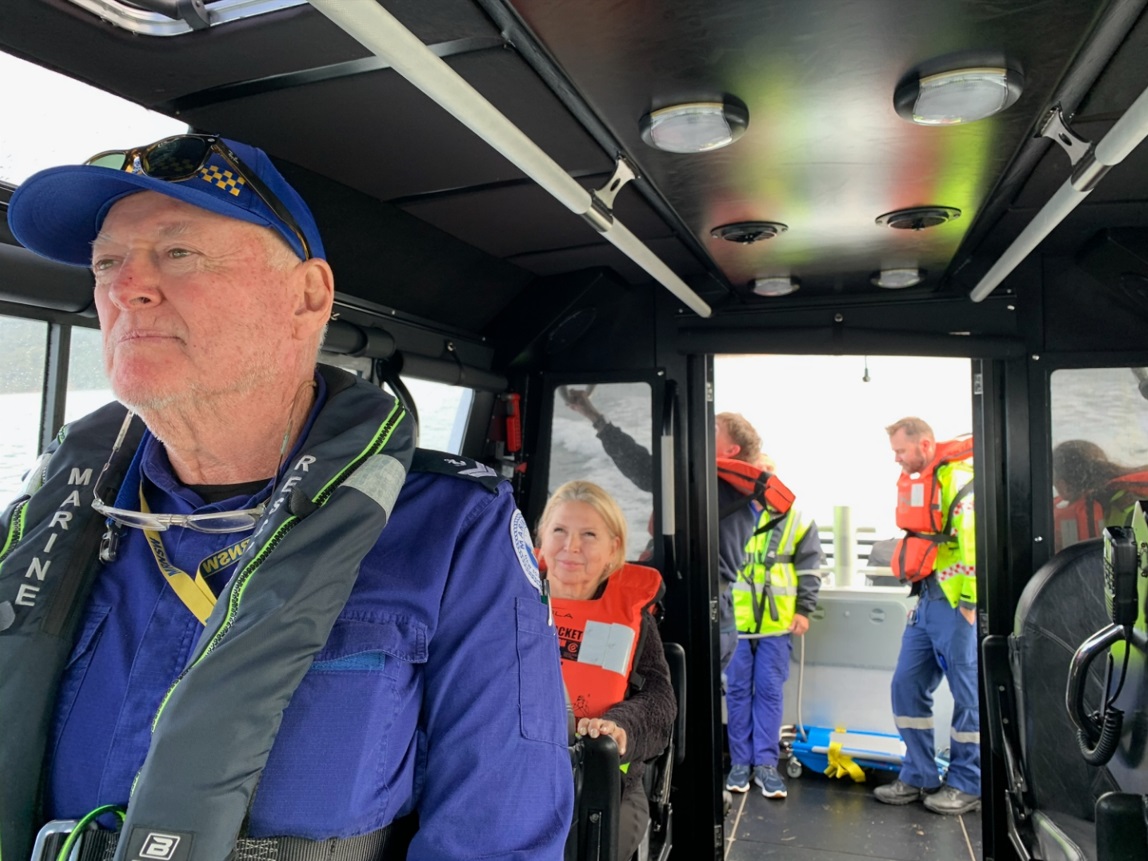
Marine Rescue NSW finalists announced for Rotary Districts of NSW Emergency Services Awards
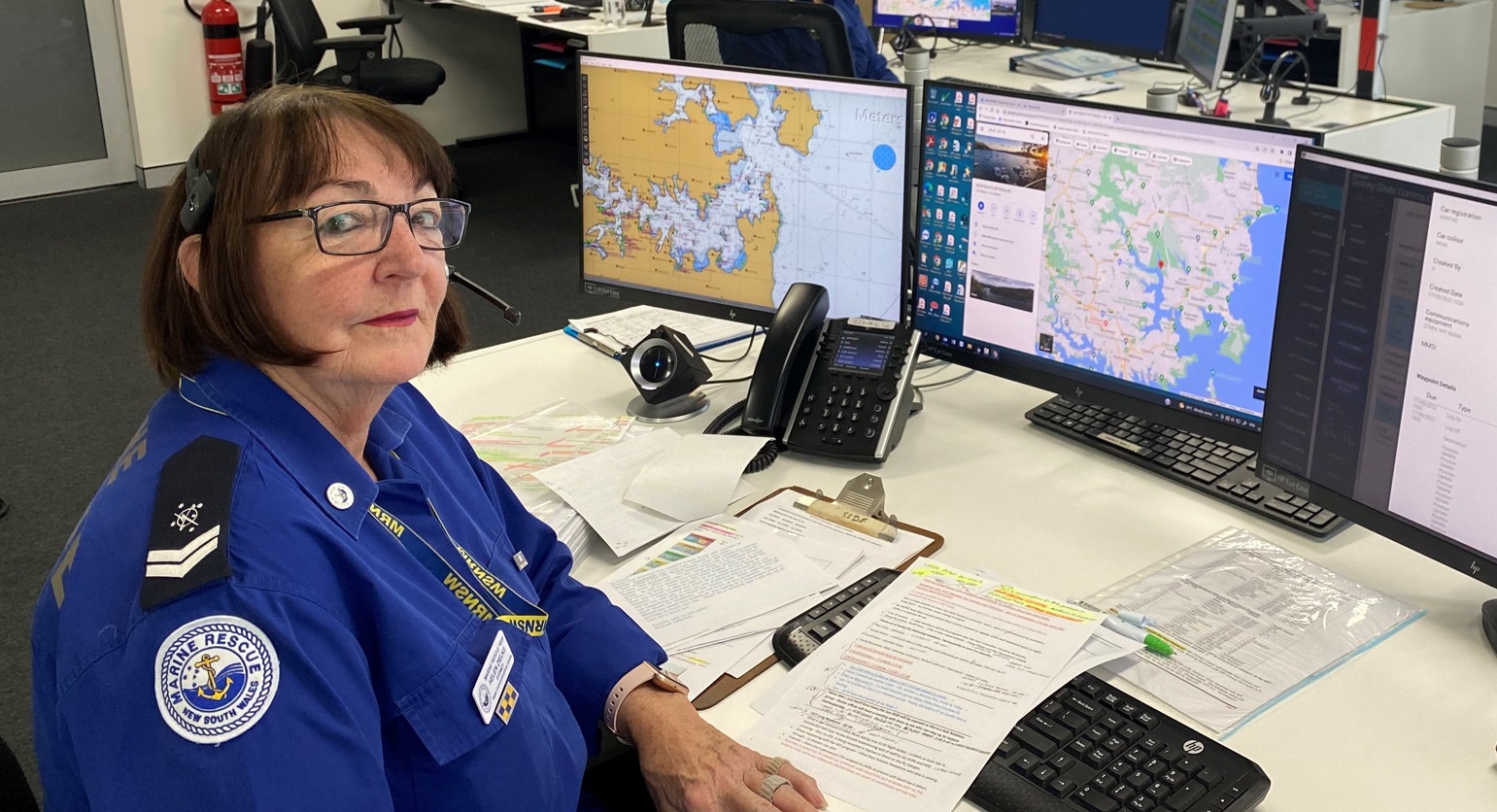
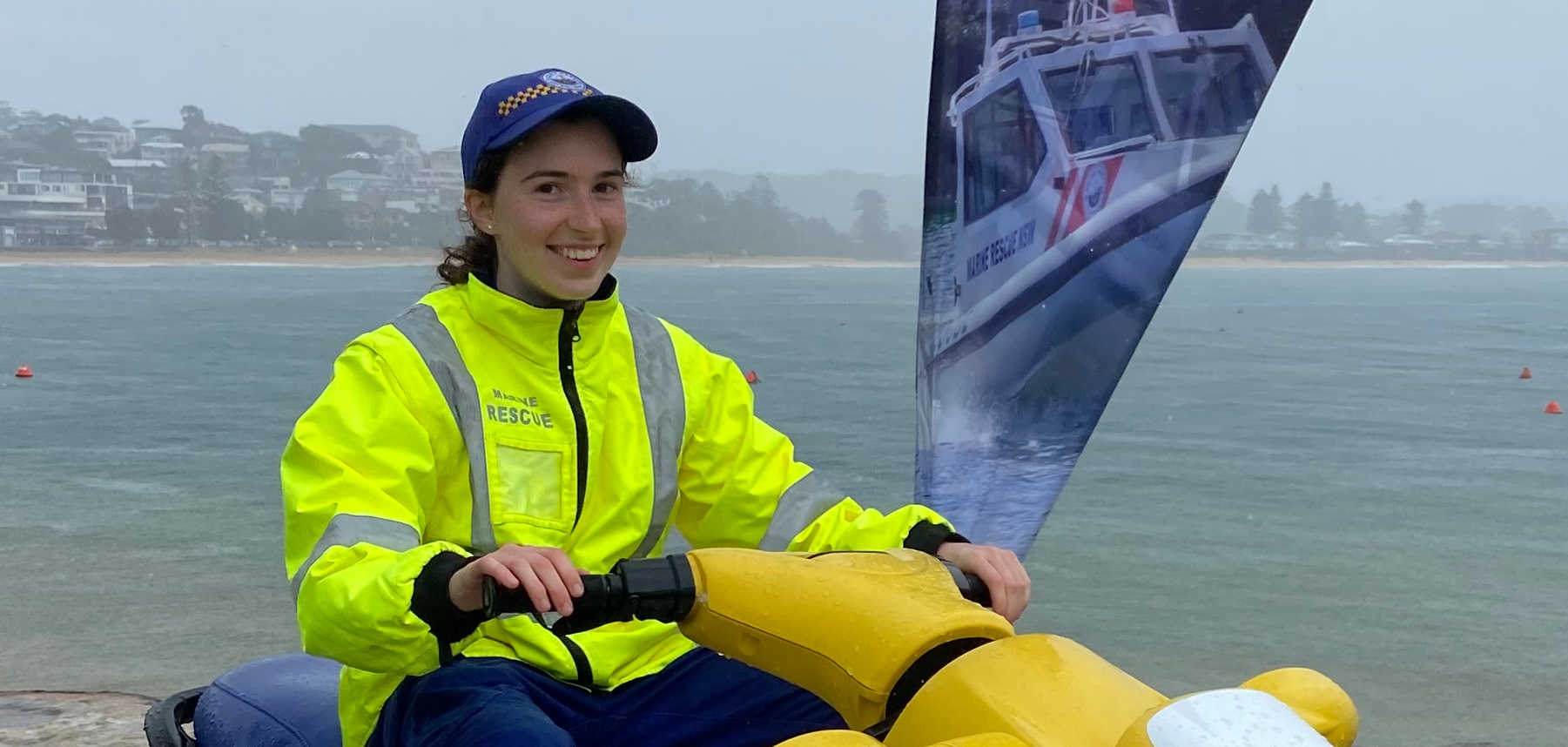
Mid North Coast Floods May 2025
Video by Julian Andrews of Davidson RFSPhoto-essay with descriptive captions from the deployment of a New South Wales Rural Fire Service 'Strike Team' from Sydney's northern beaches to the Mid North Coast (NSW) floods in May 2025.
Telling the story of the RFS involvement in the immediate aftermath of the floods through the crew of one fire truck.
Tumbledown Dick Rural Fire Brigade: BF Training
June 14-15: This weekend 14 new recruits from across the district did their Bush Firefighter (BF) training, the first step to being able to contribute as a firefighter in the NSW RFS.
Skills taught include safety, rolling and bowling, equipment knowledge and maintenance, drafting, shipping a stand pipe and overrun practise.
This great group of future firefighters will be back July 6 for their assessment. Thanks to all the instructors from Tumble, Terrey Hills, Belrose, Davidson and HQ.
Bonus: seeing the cutest little mum and bub brushtail possum who just wanted to see how good our district is!!!
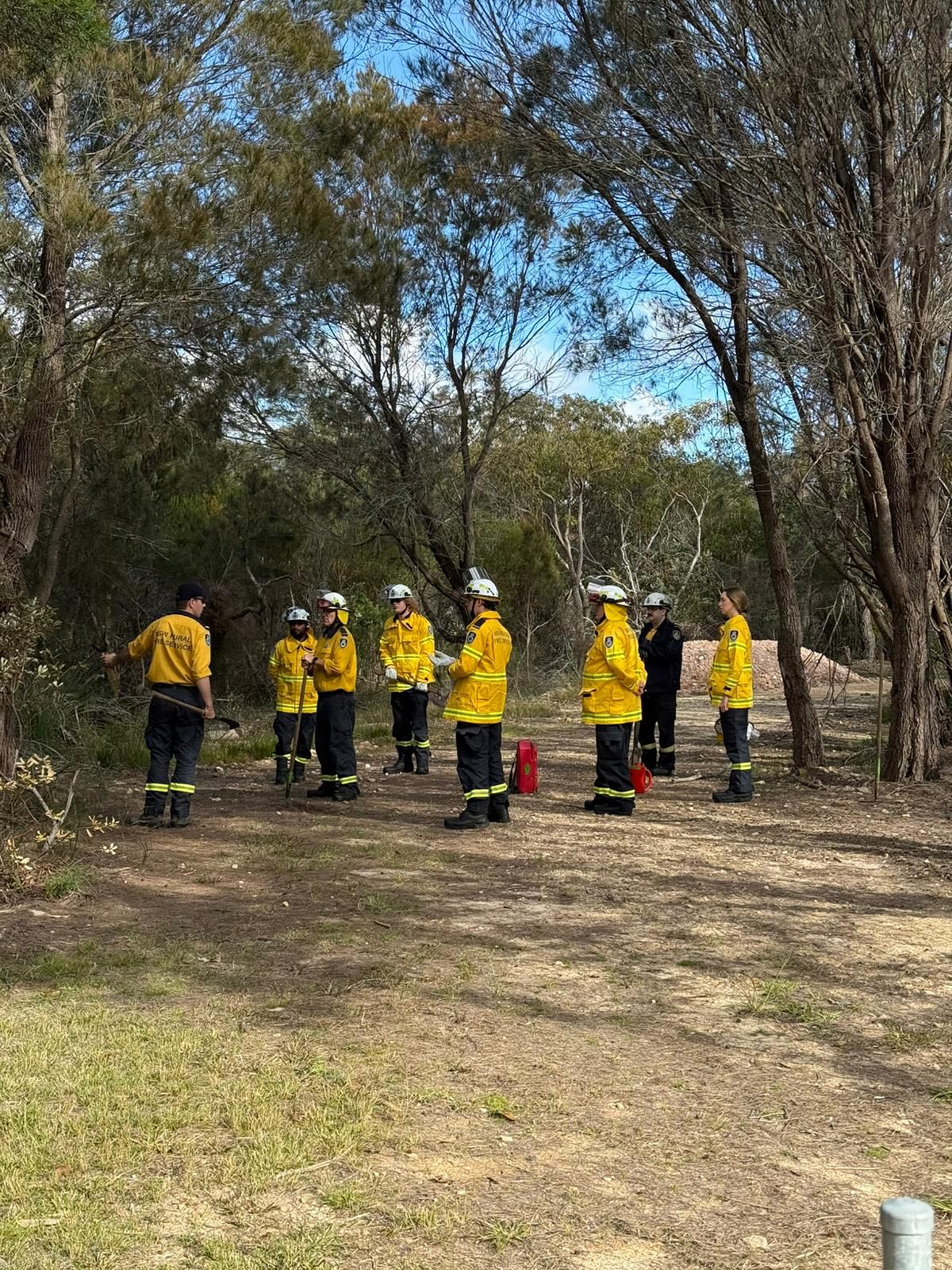
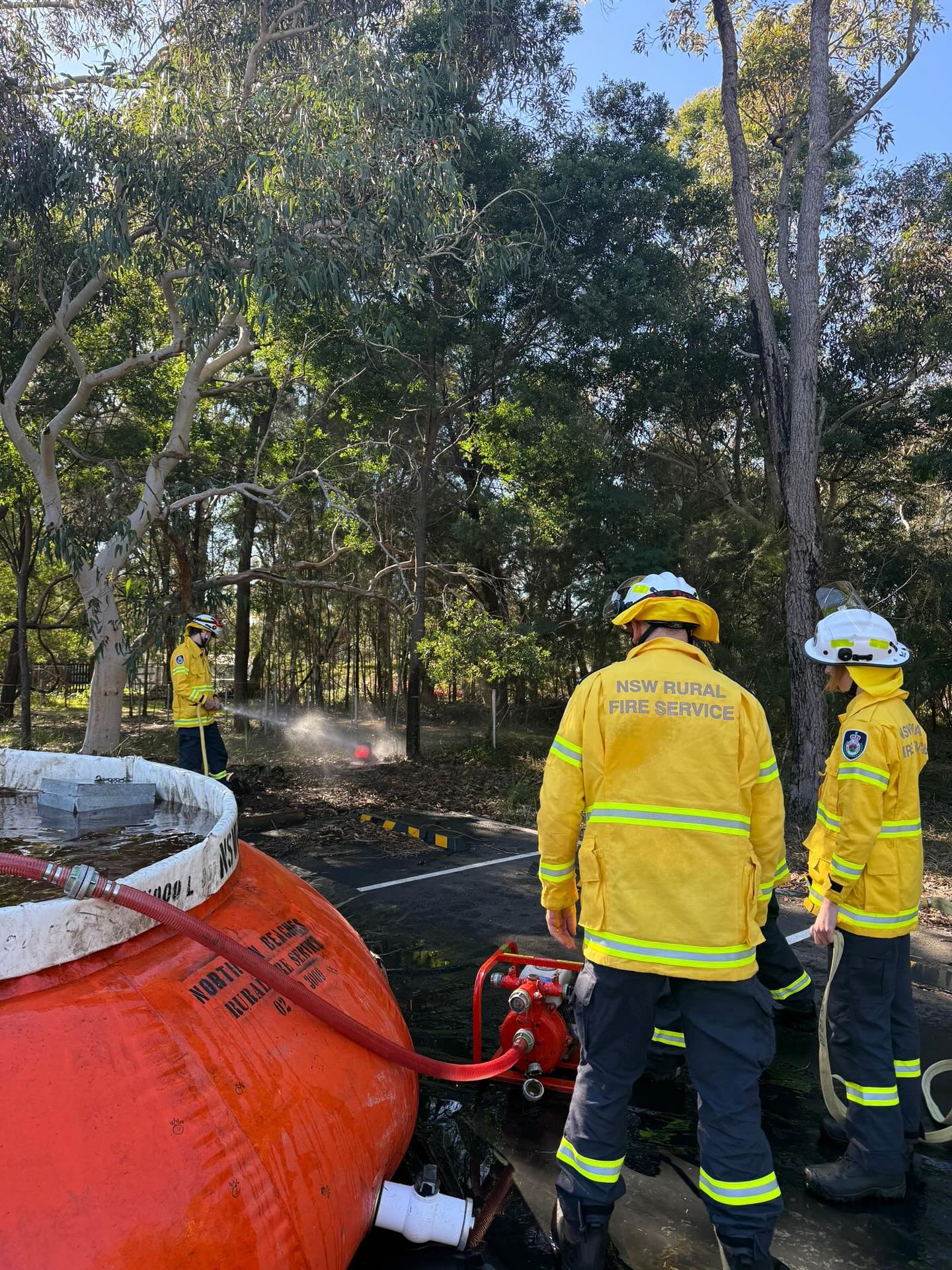
Photos: Tumbledown Dick Rural Fire Brigade


Pittwater Celebrates National Award-Winning Village Manager
Aveo’s Melinda Akehurst won the Programmed Award for Village Manager of the Year at the prestigious Property Council of Australia’s National Retirement Living Awards.
The 2025 awards were announced June 19 as part of the National Retirement Living Summit held at The Star, Brisbane.
Ms Akehurst, Village Manager at Aveo’s Bayview Gardens Retirement Living on Sydney’s northern beaches, was recognised for her outstanding leadership, innovation, and dedication to resident wellbeing.
Overseeing a flourishing community of more than 300 residents and 12 dedicated staff members, Ms Akehurst said she was humbled to receive the national accolade.
“It is an incredible honour to be recognised nationally for a role I truly love. Each day brings the opportunity to enrich the lives of Aveo residents, and I am fortunate to work alongside a talented team who share my passion for building a welcoming, connected community,” she said.
“I am proud to represent Aveo, a leader in Australia’s retirement living sector.”
Aveo’s Chief Executive Officer, Tony Randello, congratulated Ms Akehurst on her national achievement.
“Melinda embodies the very best of our industry. Her vision, empathy, and drive for excellence have created a thriving community at Bayview Gardens,” Mr Randello said.
“She brings her authentic personality and joy to work every day, takes a creative approach to resident wellbeing, and champions residents and staff.’’
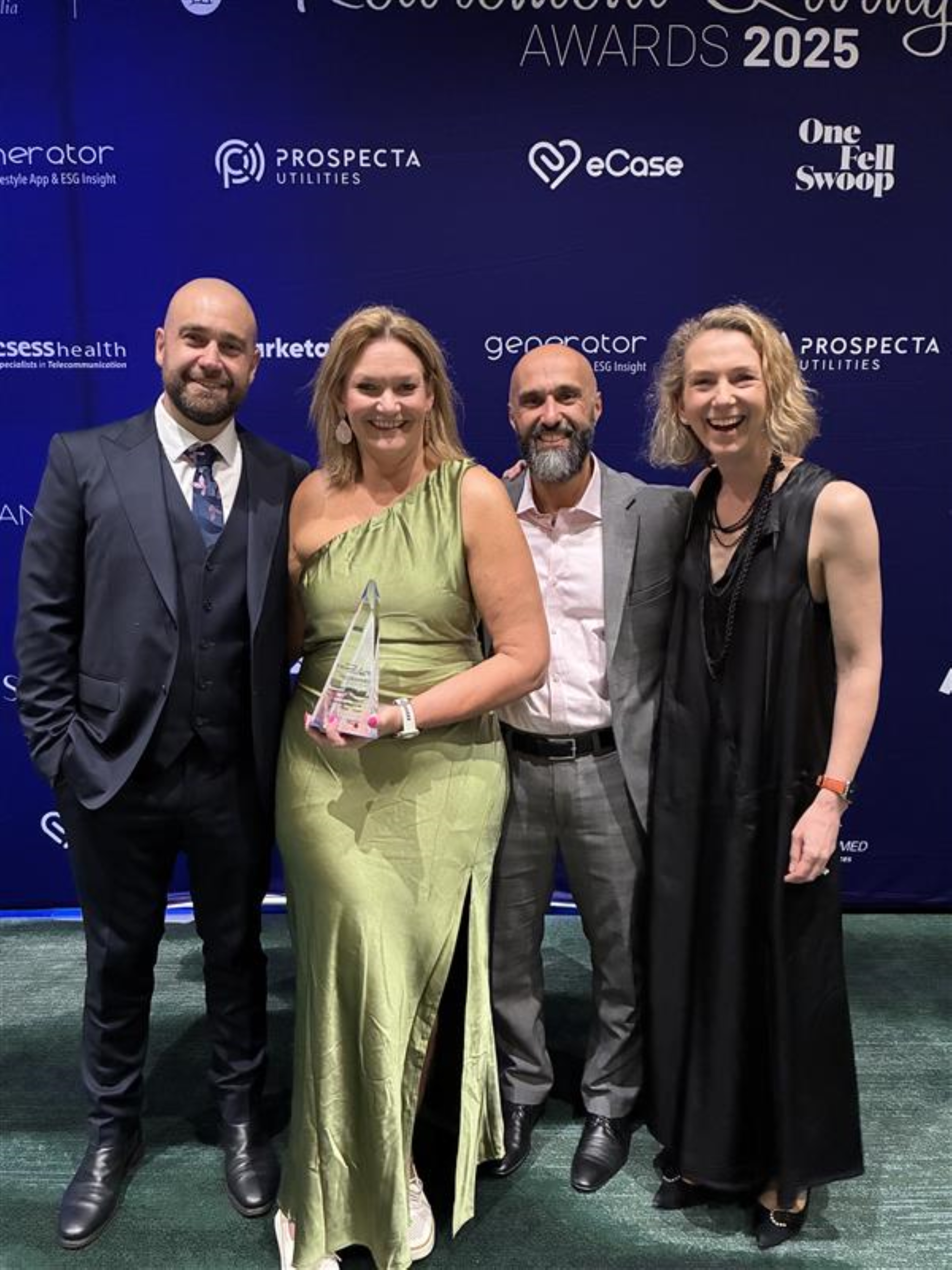 Pittwater's Melinda Akehurst (green gown) with Tony Randello, Mohammed Hage-Hassan and Natalie Patterson. Photo supplied
Pittwater's Melinda Akehurst (green gown) with Tony Randello, Mohammed Hage-Hassan and Natalie Patterson. Photo supplied
The National Village Manager of the Year Award is the sector’s highest accolade, reserved for those who demonstrate exceptional leadership and commitment to supporting residents to live their best lives in retirement communities.
Aveo’s Bayview Gardens Retirement Living is located at 36-42 Cabbage Tree Road, Bayview.

VALE - Graham Nock AM, OBE
Past RPAYC Commodore and Life MemberA Life of Service, Seamanship, and Integrity7. 1.1928 - 12.5.2025
The Royal Prince Alfred Yacht Club acknowledges with deep respect the passing of Graham Norman Nock AM, OBE— former Commodore, Life Member, dedicated yachtsman, and much-loved member of the Alfreds community.
Graham served as Commodore from 1963 to 1966, a time of significant growth and evolution for the Club. He oversaw the completion of A-Marina and the Green Point Hardstand (then known as the 5.5m Hardstand) and played an instrumental role in the publication of the Club’s Centenary History Book – a lasting tribute to the RPAYC’s rich legacy.
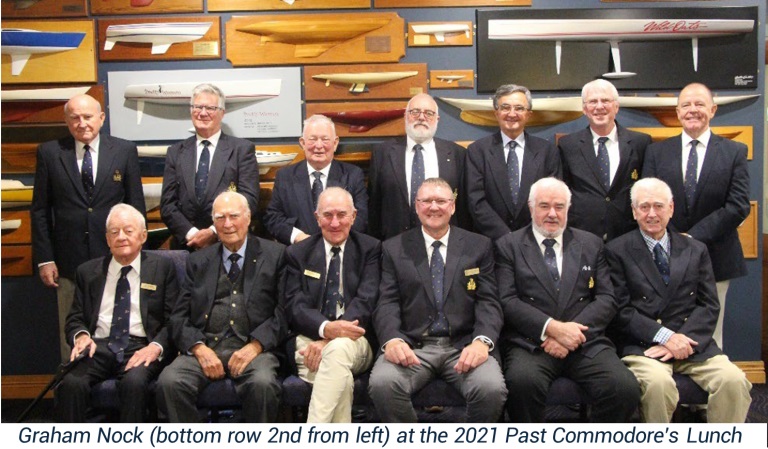
His steady hand on the helm helped modernise operations, guide membership expansion, and uphold the traditions that continue to define RPAYC today. In 1973, in recognition of his outstanding service, Graham was awarded Life Membership— one of the Club’s highest honours.
Graham’s generosity and ongoing support of sailing at RPAYC is reflected through his donation of two enduring trophies: The Alyth Trophy, awarded to the winning PHS boat in the Bluewater Pointscore Series, and The Commodore’s Cup, presented to the winning PHS boat in each division of the Commodore’s Cup Series.
A Passion for SailingGraham’s lifelong love of sailing was inherited from his father, Sir Norman Nock (acknowledged as introducing the Dragon class yachts to Australia in the 1950s), and passed down to the generations that followed. A true sailor in every sense, Graham raced extensively along the east coast and throughout Sydney Harbour.
For more than 35 years, Graham was most closely associated with the classic timber yacht CARESS, a Wally Ward design built in 1961. Purchased by Graham in 1982, CARESS became a regular and successful competitor in the SASC Classic Division, often seen surfing home ahead of the fleet.
He sailed most often with his son Rick—a formidable team whose skill and teamwork earned them admiration and many trophies. Even well into his 90s, Graham remained connected to the boat, and in 2023, was honoured with one last sail aboard the beautifully restored CARESS—a poignant tribute to a lifetime spent on the water.
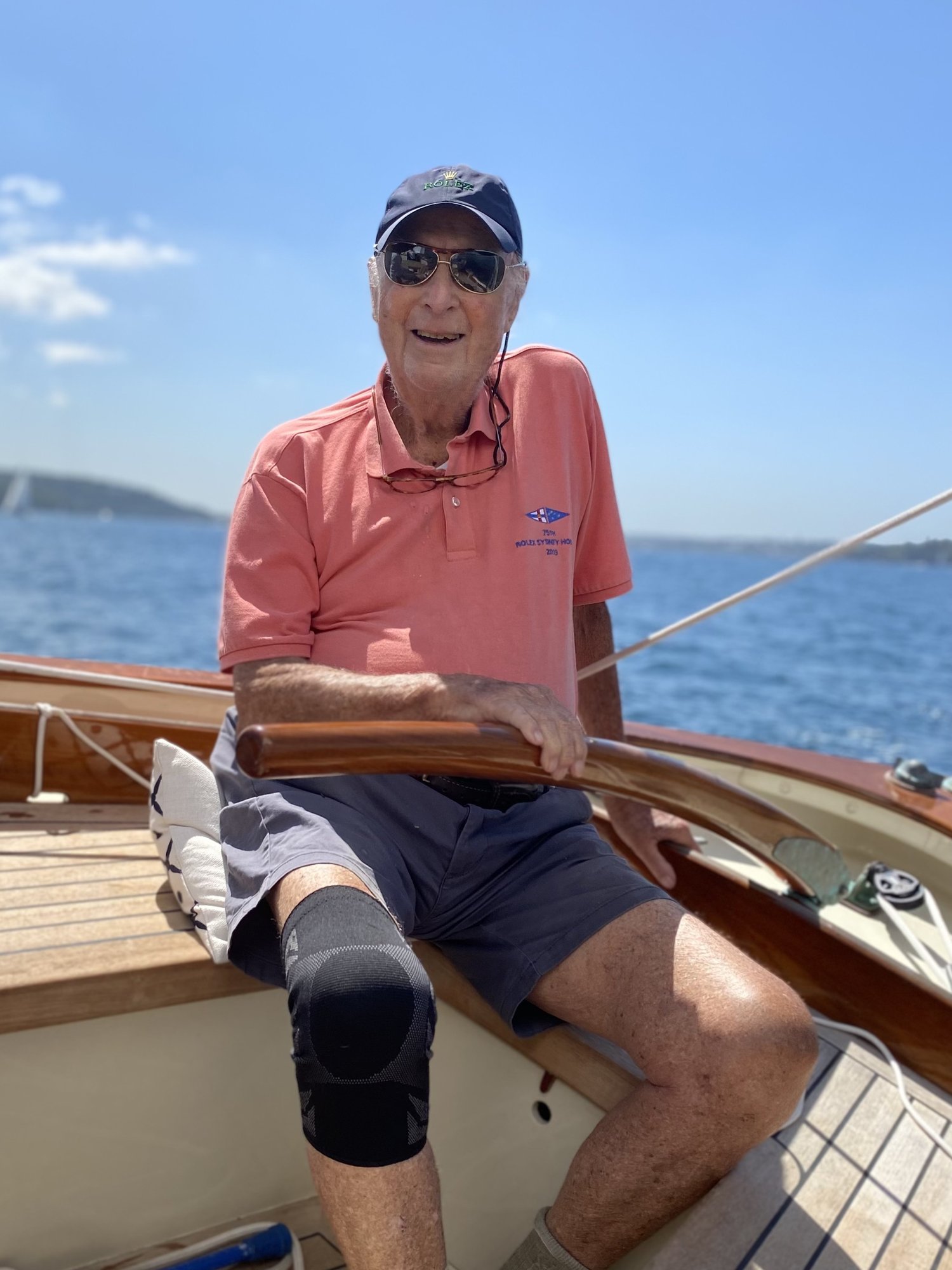
A Broader ContributionGraham’s influence extended far beyond the Alfreds. He was a director and chairman of the family retail firm Nock & Kirby and served on the boards of major Australian companies such as AMP, Carrier, and Rheem. He also held office as an Alderman for the City of Sydney, with a strong commitment to civic responsibility and charitable work.
For these and other contributions, he was appointed an Officer of the Order of the British Empire (OBE) in 1975 and made a Member of the Order of Australia (AM) in 1988. He was a lifelong supporter of The Smith Family, the Art Gallery of NSW, the Australia Day Council, and the Royal Prince Alfred Hospital, where he served as a Life Governor.
A Lasting LegacyGraham passed away peacefully at home on 12 May 2025, aged 96. He was predeceased by his beloved wife Pamela, with whom he shared 65 wonderful years, and is survived by their four children—Michael, Rick, and two daughters— and their many grandchildren.
He will be remembered at RPAYC not only for his achievements but for his quiet wisdom, gracious nature, and steadfast loyalty to the Club. His legacy lives on through those he mentored, the friends he made, and the enduring mark he left on our waters and our hearts.
Fair winds, Graham. You have crossed the bar with dignity. Your presence will always be felt at the Alfreds.
Commodore Robert McClellandRoyal Prince Alfred Yacht Club Newport, NSW
A few more insightsGraham Nock was born in Sydney on 7 October 1928, the son of former Lord Mayor Sir Norman Lindfield Nock and his wife Lady Ethel E Nock, nèe Bradford. He married Pamela, daughter of J and PA McCathie, on 26 January 1955 and has three sons and one daughter.
Graham Nock was educated at Sydney Church of England Grammar School and Scots College and the Babson Institute of Administration in the United States of America. He held a Bachelor of Science degree.
He joined his father in the family’s well-known hardware store Nock and Kirby Pty Ltd, being Chairman of Directors since 1950. He was a director and/or chairman of many companies including Carrier Air conditioning Holdings Ltd (1961–87), the AMP Society (1992–95), Rheem Australia (1987–88), Touraust Corporation (1995–) Emerging Markets Co Ltd (1995–), and Development Capital of Australia Ltd (1993–).
He was President of the Australian Retail Traders’ Association from 1978 to 1981. He was the non-executive Chairman of the Board of Hedge Funds Ltd (HFL).
Graham Nock inherited his love of sailing from his father and was a champion yachtsman.
He was a member of the Royal Sydney Yacht Squadron, Royal Prince Alfred Yacht Club, and the Royal Prince Edward Yacht Club.
Graham was a man of integrity and vision, who embodied the virtues instilled by his father, Sir Norman Nock. He leaves behind his children Michael, Richard, Jane, and Andrew, and grandchildren Camille, Lucy, Alex, Tom, and Sophie.
Known for his honesty, courage, and leadership, Graham's life was a testament to patriotism, kindness, and ambition. His spirit now rests with Pamela, united in eternal peace.
Family and friends are invited to a Celebration of Life at the Royal Sydney Yacht Squadron in July 2025.

Graham Norman Nock Alderman 1962-1967 (City of Sydney Archives, A-00025178)
Graham Nock was Alderman for Gipps Ward, 1 December 1962 to 13 November 1967 when the City of Sydney Council was replaced by City Commissioners. He was a member of the Works Committee and the Health and Recreations Committee from 1963 to 1967.
The partnership of Thomas Nock and Herbert Kirby began in November 1894. The original Nock & Kirby store was at Circular Quay, before the business expanded and moved to new premises at 417 George Street, Sydney.
By the 1950s, Nock & Kirby’s had become a household name in New South Wales. The shop sold everything from pots and pans to clothing, as well as hardware and gardening equipment. The company traded until 1983, when it was taken over by Burns Philp & Co and renamed BBC Hardware. Bunnings (Wesfarmers) bought the BBC Hardware chain in 2001.
ReferencesCity of Sydney Archives: Aldermen’s FilesWho’s Who in Australia 1997Royal Prince Alfred Yacht ClubRoyal Sydney Yacht SquadronNock family archives



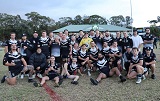 The Narrabeen Sharks Junior Rugby League Football Club A Grade Team for 2025
The Narrabeen Sharks Junior Rugby League Football Club A Grade Team for 2025- Bilgola Public School Celebrates 60th Birthday: The Anniversary Walk to recreate history
- Avalon Bulldogs Celebrate 50 Years of Friendly Coaching Youngsters + Kurt Stevenson's 350th Game
- NSW Budget 2025-26: Pittwater Allocations - Wakehurst, Narrabeen x 2 projects, Mona Vale Road West and ancillary roads Progress, Bus Fares Capped and 8 Bendys back for Term 3, New pool at Broken Bay Fitness Centre
- Regan's Northern Beaches Hospital Deed Termination Bill Passed
- Aquatics Young Whale Disentangled off Barrenjoey Underlines the Value of going Whale-Watching from our Headlands - Winter School Hols. Ideas
- VALE - Graham Nock AM, OBE
- New Commissioner, Trent Curtin appointed to lead NSW Rural Fire Service: Thank you for your Service Rob Rogers AFSM
- NSW RFS teams respond to Canada’s call for firefighting support
- Play Footy Time June 2025: at Lake Park, North Narrabeen + Hitchcock Park, North Avalon Beach
Cutting the Bilgola Plateau Public School 60 Year Birthday cake; Ross Montague, John Gray, David Watson and Di Page
John Davis, Past-President of Avalon Bulldogs, Pittwater MP Jacqui Scruby, Brian Friend OAM
Kurt Stevenson - another Doggies legend who played his 350th game this month.
July
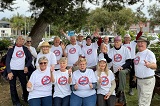 Say No To Plastics - Net Bags for Veggies while shopping
Say No To Plastics - Net Bags for Veggies while shopping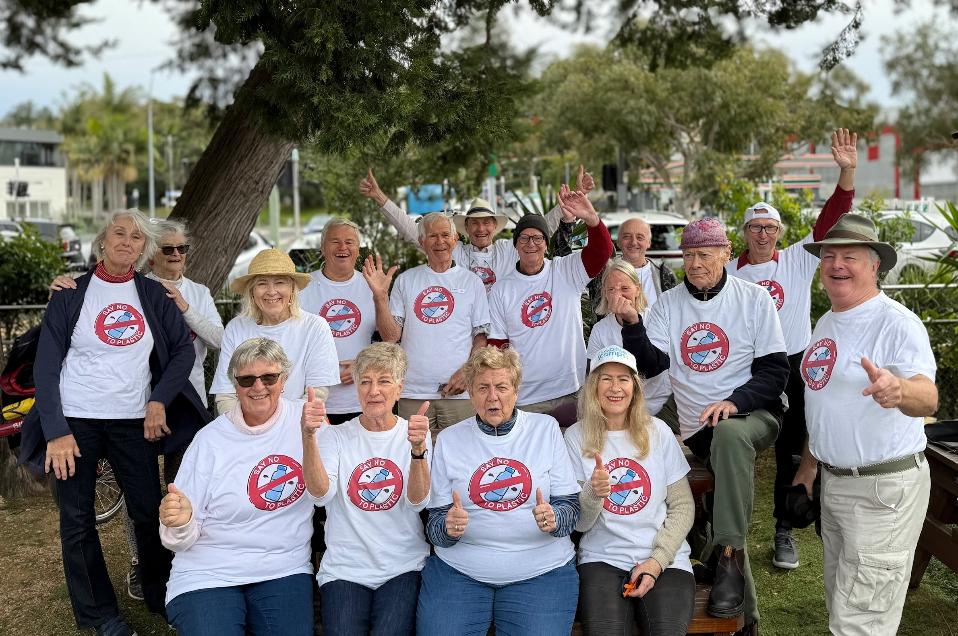
Jack's Paddle Out
We're fundraising for Bear Cottage!
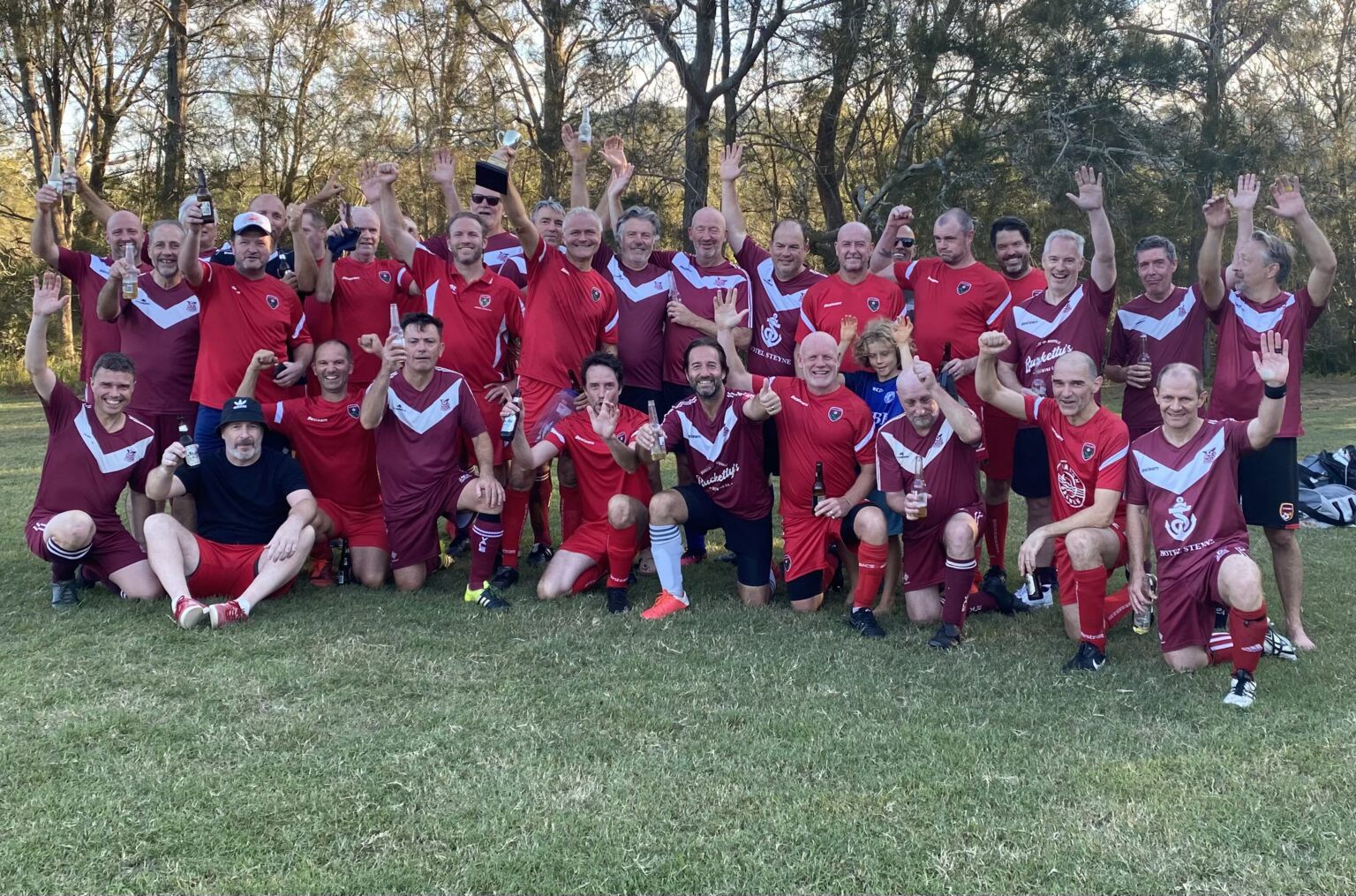
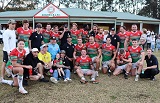 Avalon Bulldogs J.R.L.F.C. 2025 A Grade Team
Avalon Bulldogs J.R.L.F.C. 2025 A Grade TeamHome Ground: Hitchcock Park
The Avalon Bulldogs Junior Rugby League club is a family oriented community-based sporting club with over 60 years of heritage, commencing in the Manly Warringah District Junior Rugby League in 1962.
The club is a much-loved asset to the community with a large following of passionate supporters. The junior division and touch football competition attracts over 1200 players annually. Home games are played at Hitchcock Park on Saturdays from April to August, and touch footy games on a Friday night are THE place to be socially for around 700 families from toddlers to grandparents between October and December.
The organisation is committed to providing a fun and healthy environment for families to come together and get active. They follow the NRL values of Excellence, Inclusiveness, Courage, and Teamwork. From the youngest players at four years old to the team of 100 volunteers who give hours of their time to the club for the love of the game, the commitment is impressive. In the eyes of the youngsters, the club is the best thing since sliced bread. They wear their training shirts proudly everywhere they go!
This Winter Comp. Season the Doggies have 22 teams from Under 6's through to Opens (A Grade), including 8 girls teams playing in the rapidly growing Blues Tag comp.
This week, a chat with the 2025 A Grade Teams' Head Coach, President and Assistant Coach, who remembers when they were Under 6's, and Manager
- De-amalgamation news: Protect Pittwater Update - 'Fit for the Future' a ruse to effect Amalgamations
- Tree Management Policy Adopted
- Turimetta to Avalon Dunes Being Trashed: Young Locals Need Some Where to go - Something to do
- Aquatics Locana Cullen wins his Age division in 2025 Oz Grom Open: Posts only 10-Point Ride of Comp.
- Joe Lacey Scores Winning Goal for Sydney FC
- 2025 NSW Community Sports Award winners announced: Collaroy Tennis Club is Community Club of the Year, Warriewood's Distinguished Long Service Honouree; Mark Stephenson
- Topknot Pigeon Flock of 10-12 Spotted: Winter Visitors to Pittwater
- Crown Reserves Grants 2025 Announced: Local focus on Weeds + Repairs to Long Reef Boardwalk + some pictures of council's recent works at Hitchcock Park - Careel Bay playing fields - CRIF 2025
- Australian Longboard Titles Return To The Tweed Coast: 22nd - 27th July 2025
- New internship program seeking businesses and students to charge towards net zero: Opportunity at Blackmore's Warriewood campus Now Open
- Still no EV Kerbside Chargers for Postcode 2107 Despite 66 allocated for across the peninsula in latest grant funding announced: Mapping Photovoltaic installations Across Pittwater Postcodes - some More data
- 2025 Crackdown on illegal e-bike riders: 32 Local riders fined - Operation Kilowatt
- 80 years since Hiroshima and Nagasaki: Locals Impacted - Council again sidesteps Opportunity to Support Peace Accord
- Over 10 million vapes seized and fewer young people taking up vaping - Illicit Tobacco and E-Cigarette Commissioner Appointed
- Beachside musical partners dare to differ
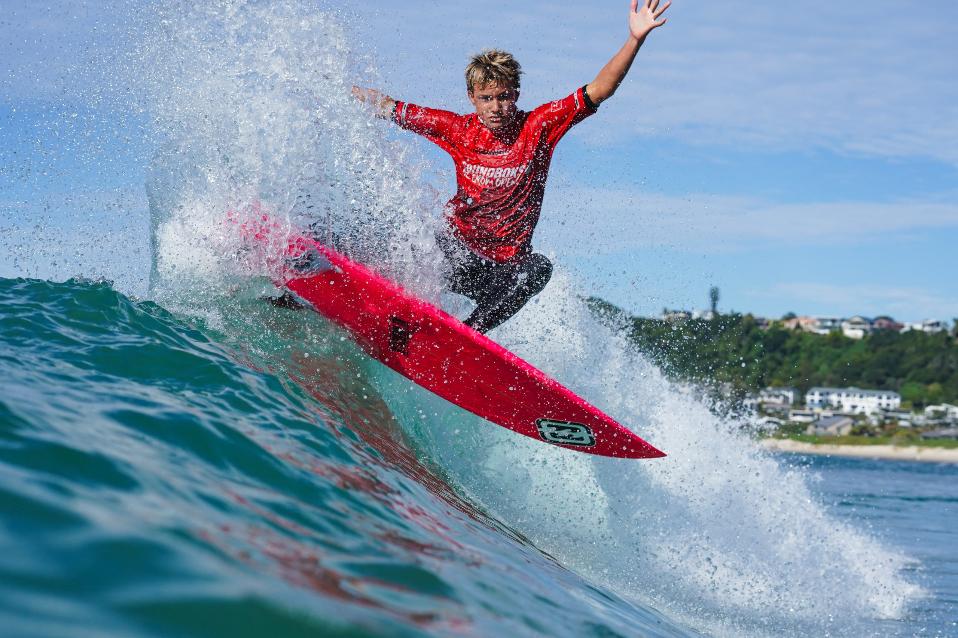

August
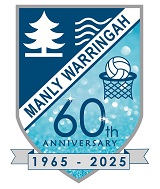 Manly Warringah Netball Association to Celebrate 60 years + Manly Warringah Sapphires Opens Wins 2025 Grand Final at Ken Rosewall Arena
Manly Warringah Netball Association to Celebrate 60 years + Manly Warringah Sapphires Opens Wins 2025 Grand Final at Ken Rosewall ArenaWebsite: www.mwna.com.au
Manly Warringah Netball Association (MWNA) is one of the largest and most vibrant netball communities in New South Wales. The Association had 17 affiliated local clubs and over 3000 players for its Winter 2025 Season.
With a rich history spanning over 60 years, MWNA is dedicated to fostering a love for netball at all levels—from grassroots to representative competitions.
The association proudly supports thousands of players, coaches, and umpires across all ages and skill levels, providing opportunities for development, teamwork, and community spirit. Whether you're new to the game or striving for elite performance, MWNA offers a welcoming and inclusive environment for everyone to enjoy netball.
The Manly Warringah Netball Association (MWNA) is about celebrating Community in Community Sport.
With the Manly Warringah Sapphires playing in the 2025 Grand Final this Sunday, August 3, the MWNA Semi Finals and Grand Finals to be played Saturday August 16 and Saturday August 23 respectively, and a 60th Anniversary Dinner and Celebration on Friday August 8, and their Spring 2025 Competition registrations now open, a few details on the Association and the Sapphires pathway to this year's Grand Final runs this Issue.
Pittwater MP Jacqui Scruby said:
“As a local MP and mum of a dedicated young netballer, I’ve seen first-hand the energy, joy, and community spirit that Manly Warringah Netball Association brings to the Northern Beaches. From early morning warmups to nail-biting finals, MWNA is where confidence is built, friendships are made, and life lessons are learned.
For over 60 years, it’s been the beating heart of weekend sport, and I’m proud to support everything it stands for – especially as we cheer on the Sapphires in this Sunday’s Grand Final. Good luck, girls!"
- Killing of Ruskin Rowe Heritage Listed Tree 'authoritarian'
- Trial to remove shark nets - NBC - Central Coast - Waverly approached to nominate a beach each
- The Top Predator by A Dad from A Pittwater Family of Dog Owners & Dog Lovers
- Turimetta Moods: Winter Visions by Joe Mills
- Avalon Beach SLSC's 100th Annual General Meeting by Roger Sayers OAM, Life Member ABSLSC
- Speed limit for Newport to Palm Beach Lowered to 50k from August 7: Pittwater MP calls for Review of decision + More than 183,000 school zone speeding offences recorded in NSW in the last financial year
- IPART Draft Report on the review of prices for Greater Sydney from 1 October 2025: Have your by August 25
- NSW cracking down on illegal vapes-tobacco shops on high streets + School OurFuture program prevents teen vaping - open to Secondary schools
- Man charged with allegedly producing child abuse material at six out-of-school hours care services in northern Sydney - council statement - NSW to Introduce Working With Children Check reforms this week
- Disaster-ready housing starts local: Landmark Inquiry from AHURI Urges fourth 'R' for Councils
- Watch out, Shorebirds are Permanently About and now building nests - With More Annual Visitors coming from this Month!! + CSIRO: We used tiny sensors in backpacks to discover the extraordinary ways birds migrate to find water
- Government to deliver 21-metre high-tech ‘thunderbird’ to protect NSW waters: will be a 'floating command centre'
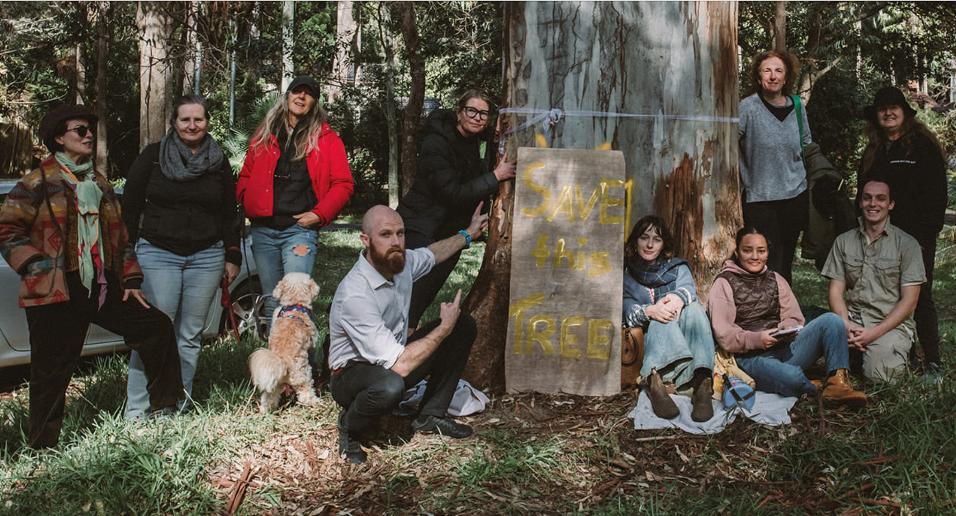
Ruskin Rowe tree vigil, June 2024. photo supplied
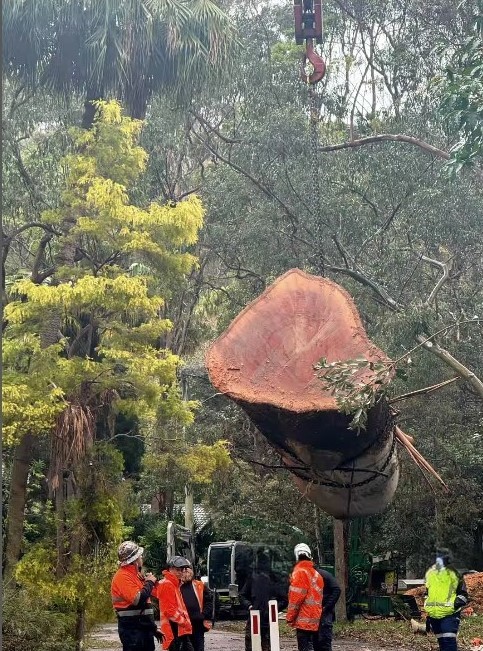
screenshot from CK video of the Ruskin Rowe gum tree trunk
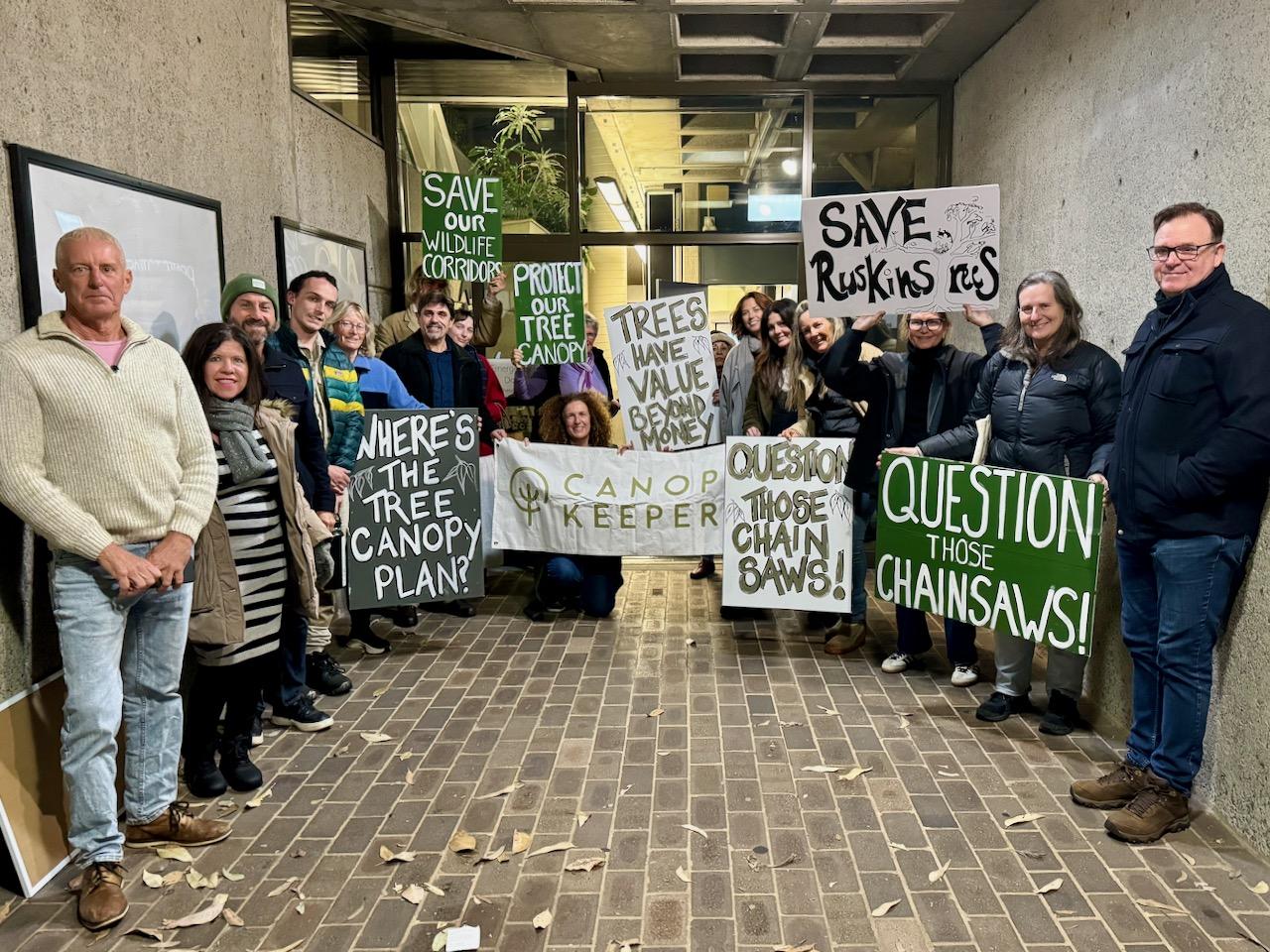
Mona Vale Hospital’s Urgent Care Centre Becomes first in NSW To Roll Out ECAT
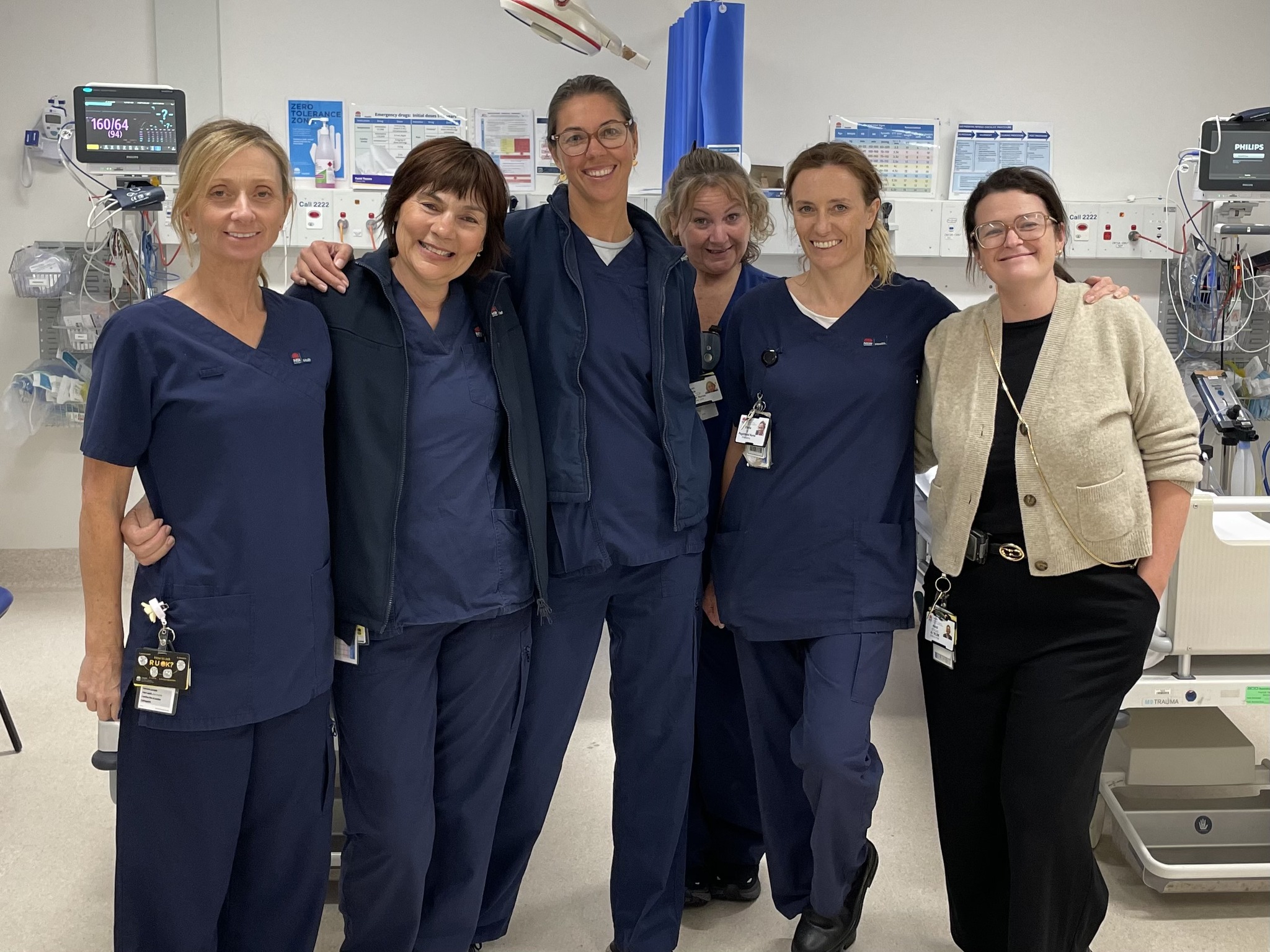
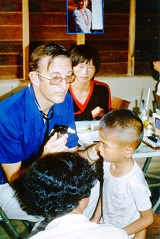 Dr Gordon Stokes, MB MS MD, FRACP, Dip Thl, 1935–2025
Dr Gordon Stokes, MB MS MD, FRACP, Dip Thl, 1935–2025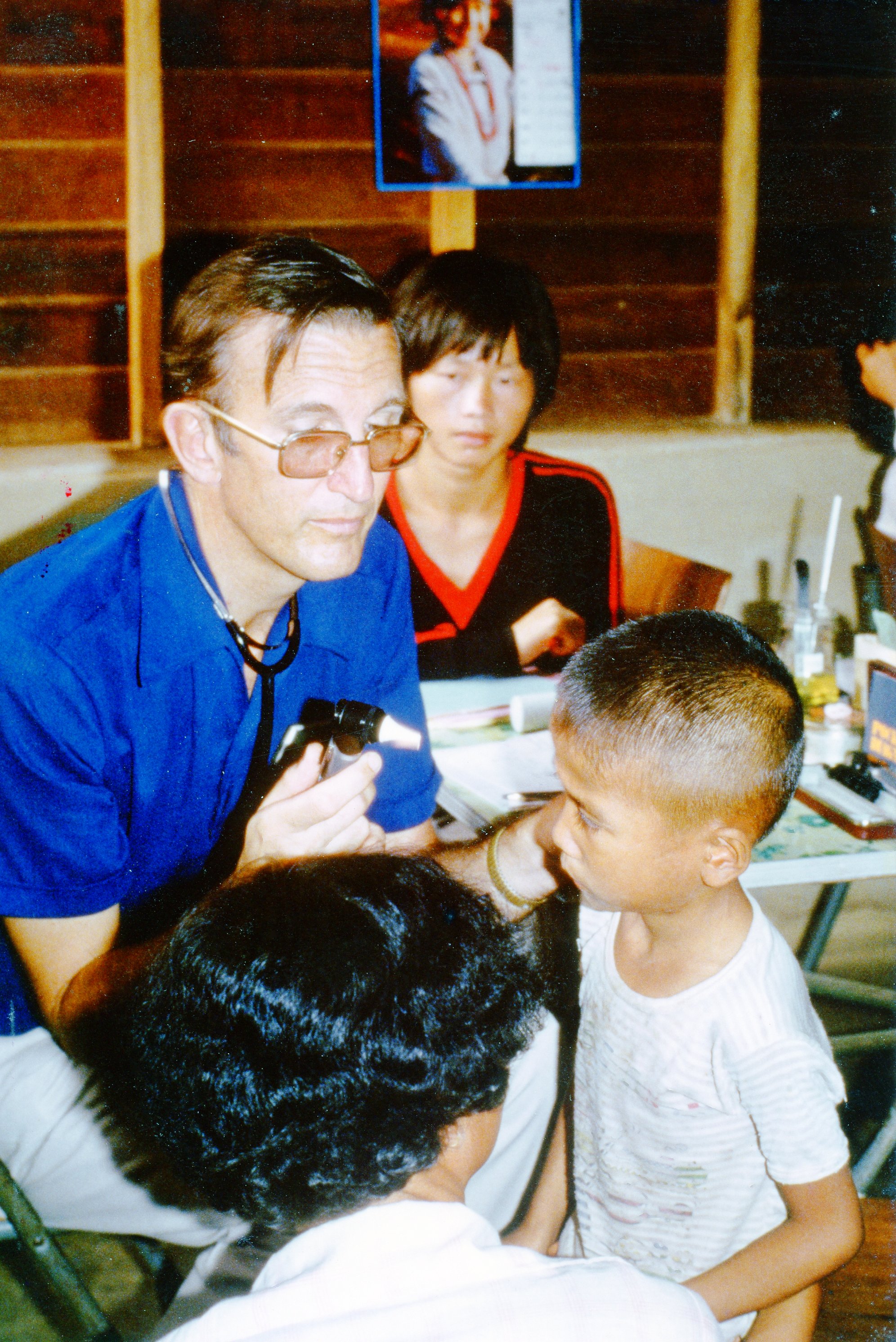
Gordon in Cambodian refugee camp
- Turimetta Beach Boulders Falling: 2m of Erosion by Joe Mills and John Illingsworth
- Mona Vale Hospital Still First in State in Health Care: NSLHD's NatureFix App Transforms Green Spaces + Mona Vale Hospital’s Urgent Care Centre Becomes first in NSW To Roll Out ECAT
- Seals Hauling Out Along Our Beaches: Register these on the NSW Haul-out, Call-Out seal survey
- Community Building Partnership (CBP) Program: 2025 Funding Announced - Pittwater to Manly
- Mapping microplastics in 120 NSW Estuaries
Community Tribute to Lisa Atkins for over Four Decades of Bushcare Dedication
July 2025 - By and courtesy West Pittwater Community Association - website Editors
Local Bushcarers, Northern Beaches Council and National Parks gathered this week to honour Lisa Atkins, whose remarkable commitment to bush regeneration has helped transform the landscapes of the Western Foreshores over the past 40 years.
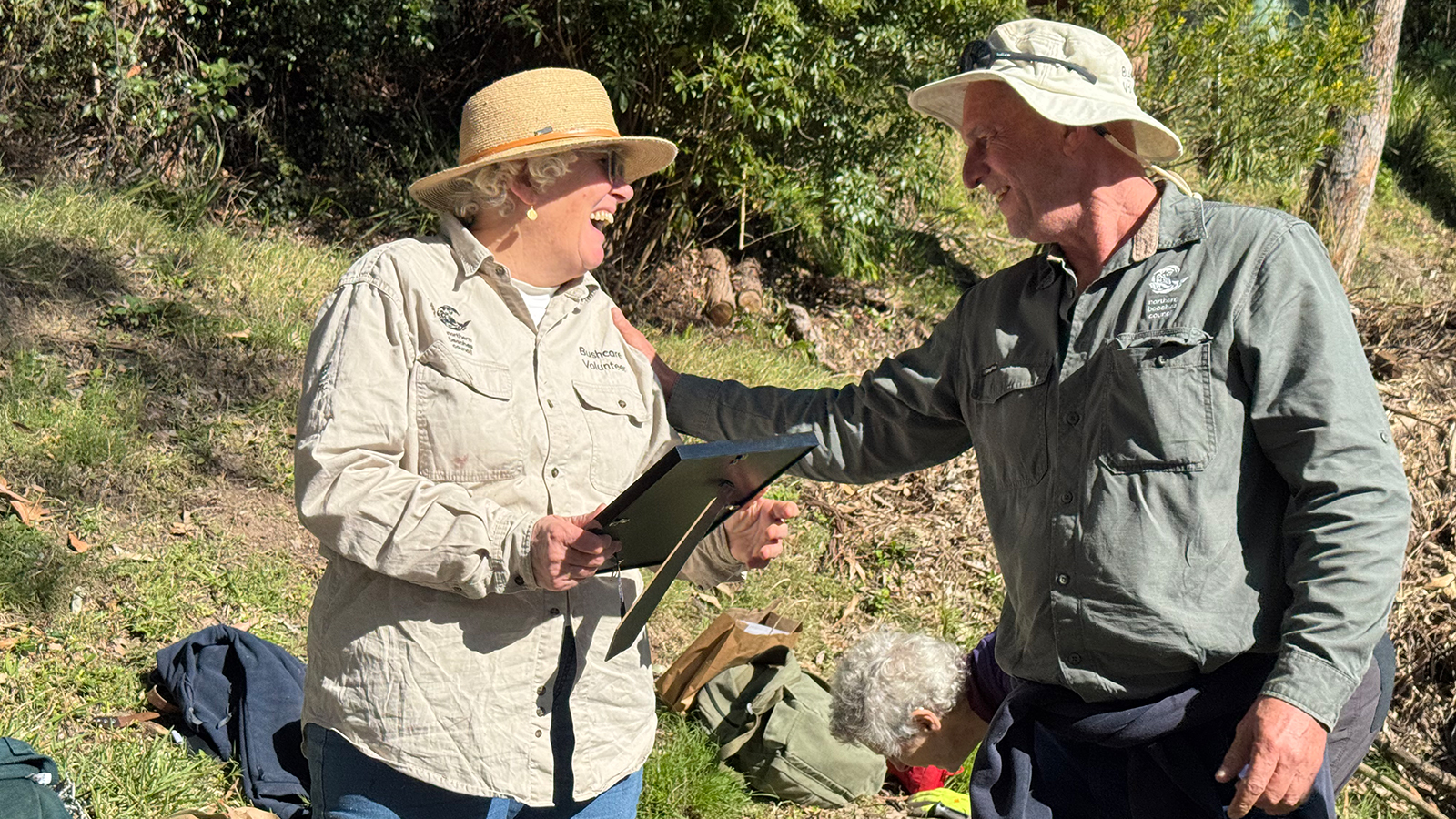
Lisa’s quiet determination and four decades of volunteer work have restored significant areas of native habitat in what was once a heavily weed-infested environment. Her efforts, carried out with little fanfare but unwavering dedication, have inspired a generation of bushcarers and left an enduring impact on the local environment.
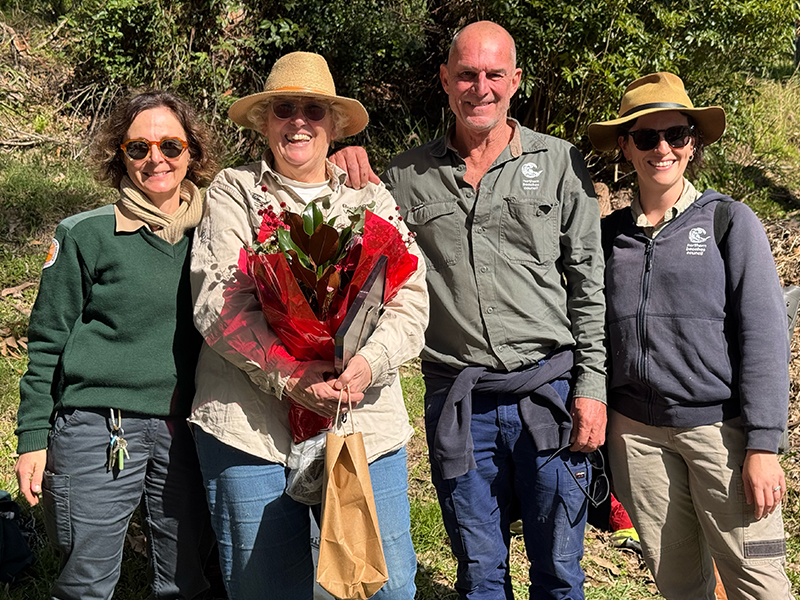
Left to Right: Bettina Tuerk-Rochl – National Parks and Wildlife, Lisa Atkins, Michael Kneipp & Georgia Williams – Bushcare Team: Northern Beaches Council.
Hosted by Rocky Point Bushcare, the gathering at Lovett Bay Beach was attended by representatives from National Parks and Wildlife, Northern Beaches Council, Morning Bay Bushcare and Elvina Bay Bushcare, all of whom came together to express their gratitude. Messages messages of praise, thanks, and best wishes also came from South West Lovett Bay Coastcare and the budding North Elvina Bushcare.
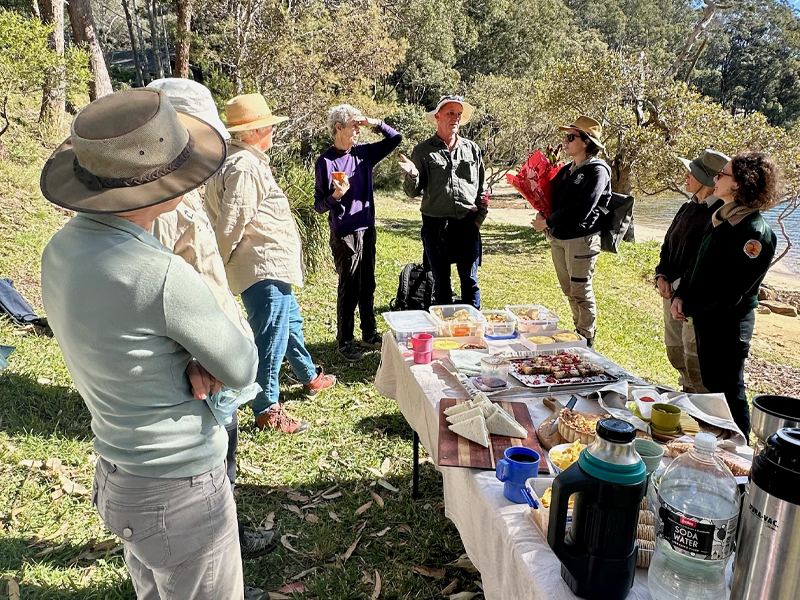
Bettina Tuerk-Rochl (National Parks and Wildlife) praised Lisa’s long-standing leadership and deep knowledge of the local ecosystem, while Michael Kneipp, (NB Council), recalled just how overgrown the area once was with lantana before Lisa’s intervention.
“She didn’t just pull out weeds,” Michael said. “She created space for native species to return — for the forest to breathe again.”
“Lisa also created the local belief that “No offshore event is complete without a cup of tea and something to eat’ — and always made sure we had both. Her warmth and presence at every possible occasion has made bushcare feel like special community.”
In recognition of her service, Lisa was presented with a Certificate of Appreciation, a bouquet of native flowers, Burrawang seedlings to plant in her own time, and a custom-engraved thermos — a nod to her reputation for never arriving at a bushcare day without a strong brew and something tasty to share.
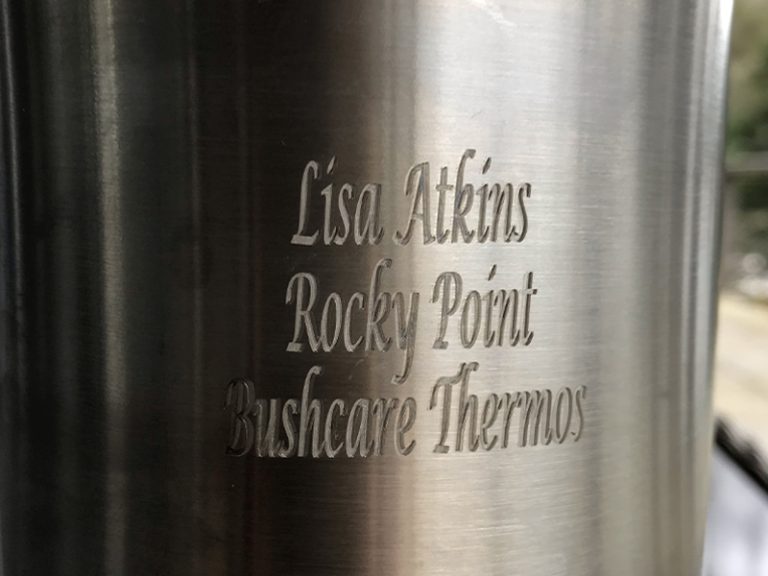
Newly Engraved Rocky Point Thermos
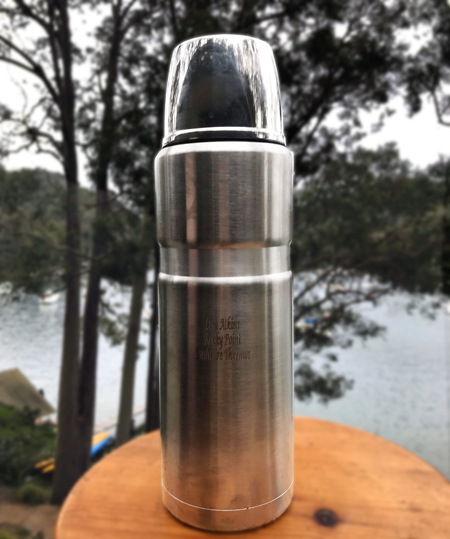
The event was informal but heartfelt, a fitting tribute to someone who has quietly given so much to the local environment and the people who cherish it. Lisa, true to form, responded with humility: “I’m just one of many. Nature does the real work — we’re just here to give it a helping hand.”
The Western Foreshores are greener, richer, and more alive thanks to Lisa Atkins. Her legacy, like the bush she’s helped restore, will continue to grow.
Warringah Rats News: Wallabies!
Rats into Wallabies - how good was that to see last night!!
Pek Cowan, Beau Robinson, Hugh Pyle, Mark Gerrard
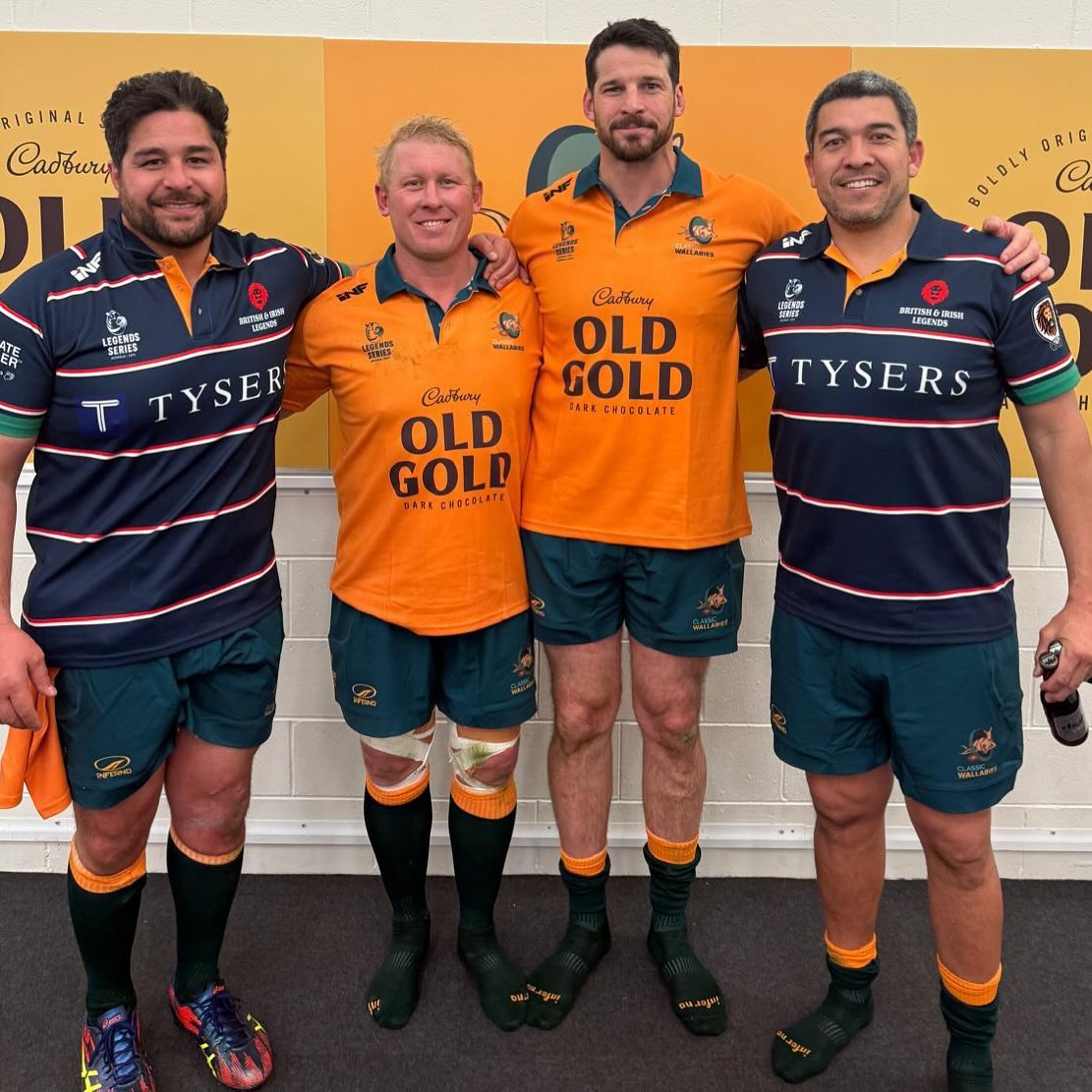
Refreshed Mobys this Summer
Whale Beach SLSC announced on Tuesday August 12 they are thrilled to share an exciting update on the transformation happening at the top of their clubhouse.
''Earlier this year, we leased the upper two levels of the club to the Merci Group, an experienced hospitality team behind beloved venues like Dunes in Palm Beach and Suki in Mona Vale.'' WBSLSC states
''Their newest venture? A complete reimagining of our historic venue – Mobys – set to open this summer. Mobys will be a vibrant, produce-led Italian restaurant and al fresco café, blending coastal charm with a modern twist. Expect handmade pastas, fresh seafood, perfectly grilled steak, and the kind of long, sun-drenched lunches Whale Beach is made for.
This exciting project wouldn’t be possible without you – our members. Your ongoing support has allowed us to secure a lease agreement that not only enhances our iconic building but also contributes significantly to the financial sustainability of the Club.
Merci’s investment, paired with the Club’s own cooperation, means we are realising a rapid and intensive fit-out and landscaping, creating a stunning new space for the community and a reliable revenue stream for years to come.
The new Mobys will include:- A standalone restaurant on Level 6
- A stylish alfresco café area on the front courtyard, with direct access to the restaurant
- A refreshed Level 5 hall for private functions and overflow dining
Beyond great food, we believe Mobys will add real value to our members, the Whale Beach community, and the Club’s future.
Stay tuned – we’ll continue to keep you updated as the project progresses. In the meantime, we can’t wait to see you upstairs this summer for a drink, a meal, or simply to soak up the view.''
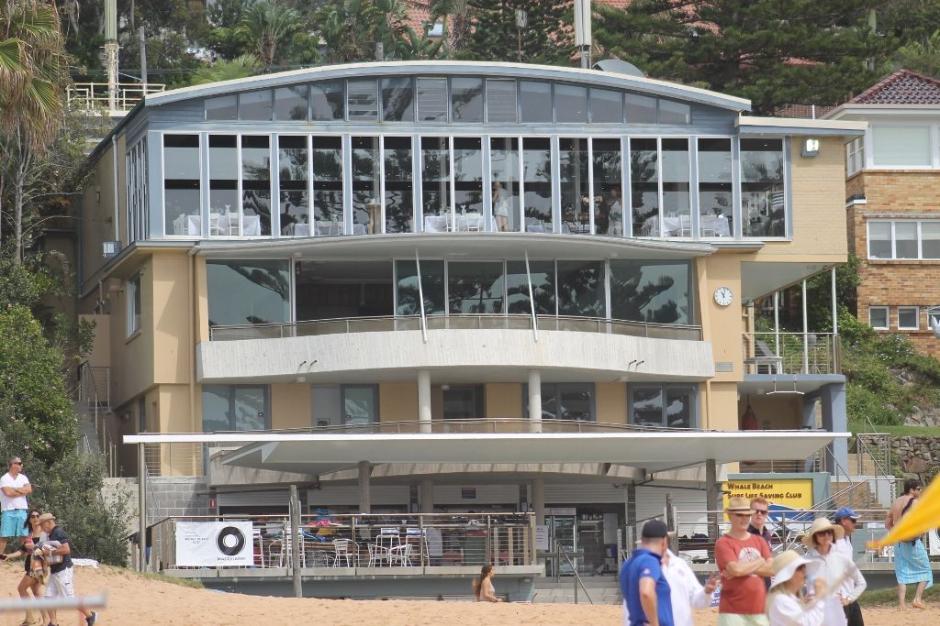
- A standalone restaurant on Level 6
- A stylish alfresco café area on the front courtyard, with direct access to the restaurant
- A refreshed Level 5 hall for private functions and overflow dining

%20logo%20160.jpg?timestamp=1755129818681) Peninsula Junior Cricket Club
Peninsula Junior Cricket ClubGary Searles, Club Treasurer and Registrar, states;
Peninsula Cricket Club is a large junior cricket club covering from Palm Beach through to Narrabeen.
Our Cricket Blast season commences Oct 15 ( Avalon), Oct 17 (Warriewood) and Oct 18 (Warriewood). Cricket Blast is our entry level cricket program designed to teach the kids the basics of the game before tackling competitive Cricket from U10s.
Competitive Cricket, for U12s and up (we go through to U16s) commences September 13 2025.
The Girls U11s / U13s and Boys U10s and U11s start October 18.
Registrations are now open at: www.peninsulacricketclub.com.au/registration
We are the only Cricket Club in the Barrenjoey Peninsula catchment area - Palm Beach to Narrabeen – and we are Not for Profit. Our primary focus is the children's welfare as they develop their skills, passion and a lifelong love for the wonderful game of cricket.
We have Cricket skill programs, designed to get kids into Cricket - so think Kindy, Year 1 and 2 - available at 3 locations. The cricket skills program runs at Avalon (Wednesday), Warriewood (Friday evening), Warriewood (Saturday morning).
We have modified games, so no helmets, pads etc. These re-designed for children for prior to getting into competition Cricket, for Years 3 and 4.
Then we also offer Competitive Cricket for U10s and Up for boys. We have 3 girls teams in the U11s, U13s and U15s – and are always wanting to build up more girls playing.
More details are on our Website
- Warringah Rugby Club's Ratettes Win 2025 Grand Final - All other Warringah Teams into Semi-finals
- Forced Plane Landing on Mona Vale Golf Club Course Not the First Time Local Golf Courses, Beaches used for Emergency landings
- VP Day 80 Years On - Our Area Remembers, Honours Those Who Served
- Northern Beaches Council recommends allowing dogs offleash on Mona Vale Beach
- Community Concerned Over the Increase of Plastic Products Being Used by the Northern Beaches Council for Installations in Pittwater's Environment
- Bilgola SLSC's 2025 Annual General Meeting
- Celebrating 25 years of the Aboriginal Heritage Office: Councils reaffirm commitment to caring for Country
- Brilliant News: Bayview - Mackerel - Currawong Wharves Allocated $3,173,117 for Upgrades under Boating Infrastructure for Communities Grant Program
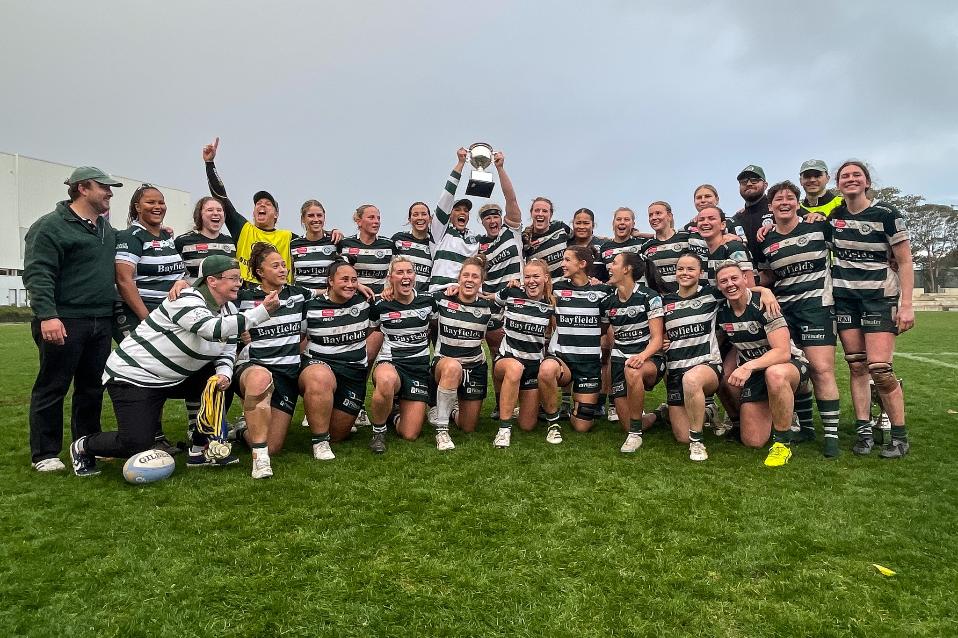
At the 2025 Bilgola SLSC AGM two members were also recognised. Romilly Madew AO in recognition of her commitment to the club was awarded Life Membership, the 15th member and first women in 75 years. David Madew’s commitment was also acknowledged, being awarded Distinguished Service.
We extend our heartfelt gratitude to the Executive Committee Members who have stepped down after an incredible 6–7 years of dedicated service: Peter Fenley (President), Adrian Wegrzyn (Director of Life Saving), Ian MacDonald (Administration Officer), and Mark Parsons (Operations). Their commitment, time, and energy have kept the lights on and the club thriving behind the scenes. It’s hard to overstate the importance of their tireless efforts, without volunteers like them, our club simply wouldn’t function.
A special mention goes to Tracey Rock, who continues her invaluable service as our Finance Officer. We are eternally grateful for her ongoing support.
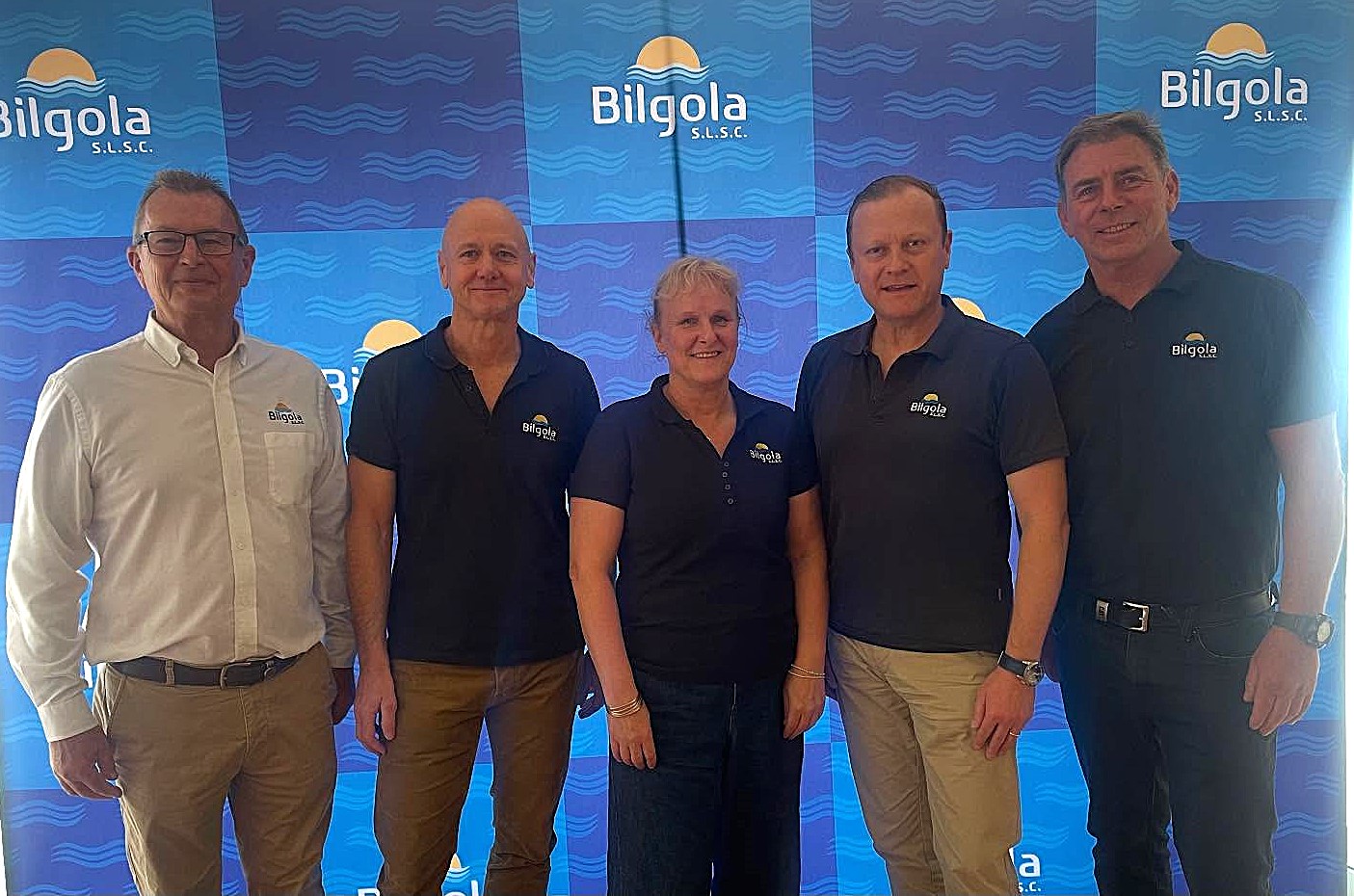
L-R: Peter Fenley, Ian MacDonald, Tracey Rock, Adrian Wegrzyn & Mark Parsons. Photo: Romilly Madew AO
Bayview wharf as it is at present - non-existent having being neglected to the point where it failed in 2024
2025 North Shore Volunteer of the Year
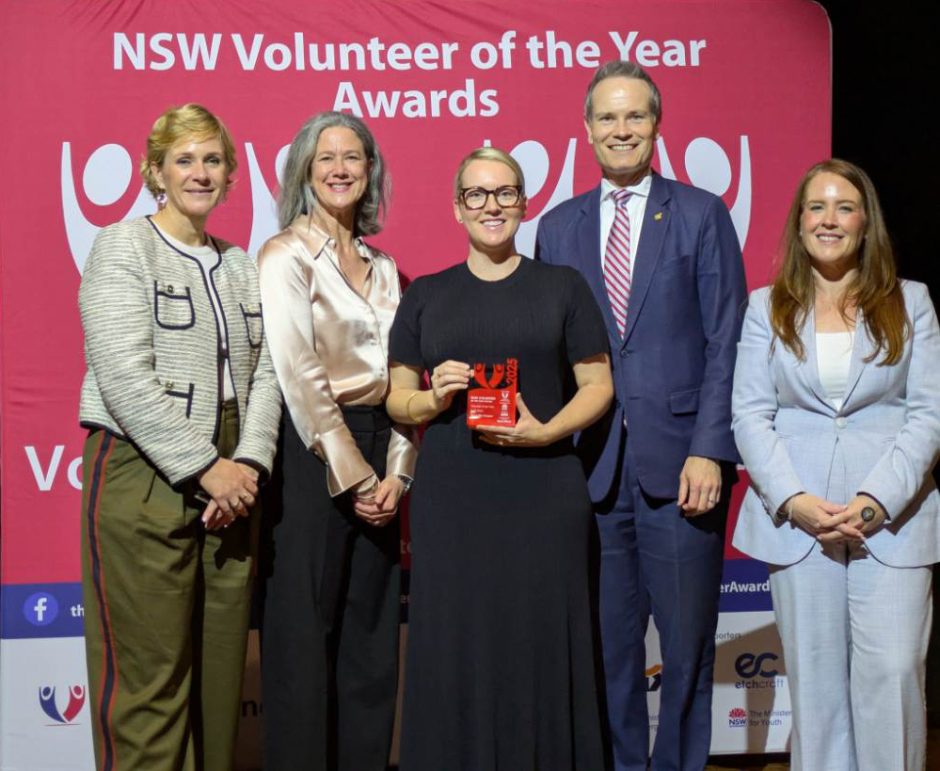
Marine Rescue NSW Commissioner Barrell accepts national appointment
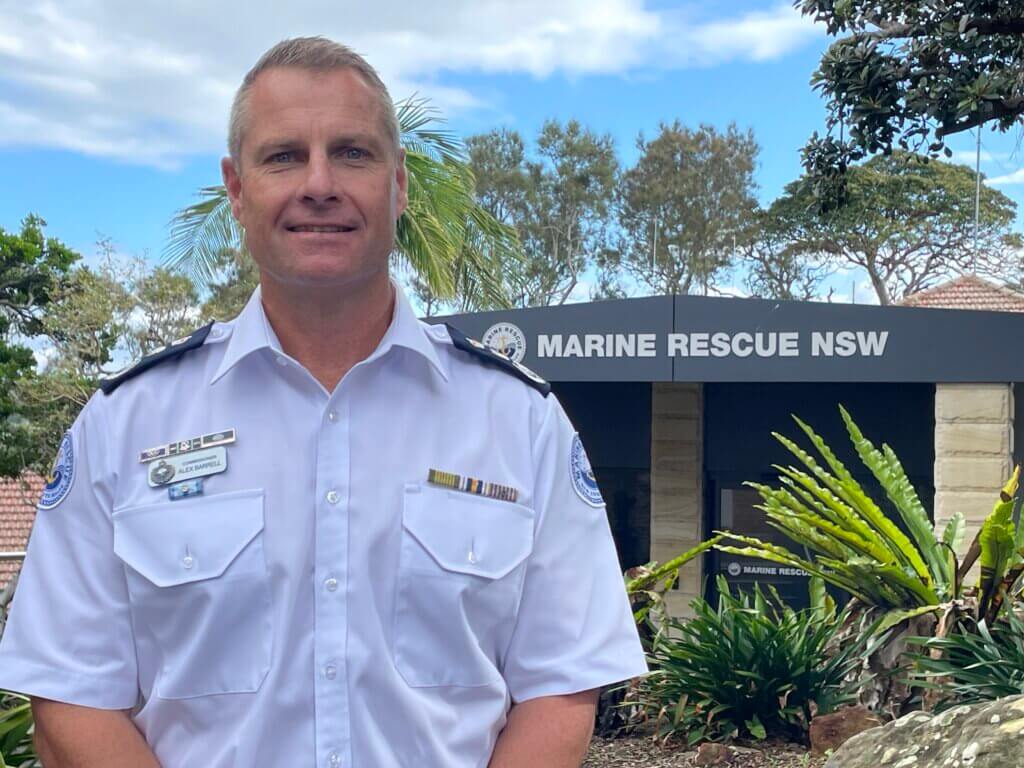
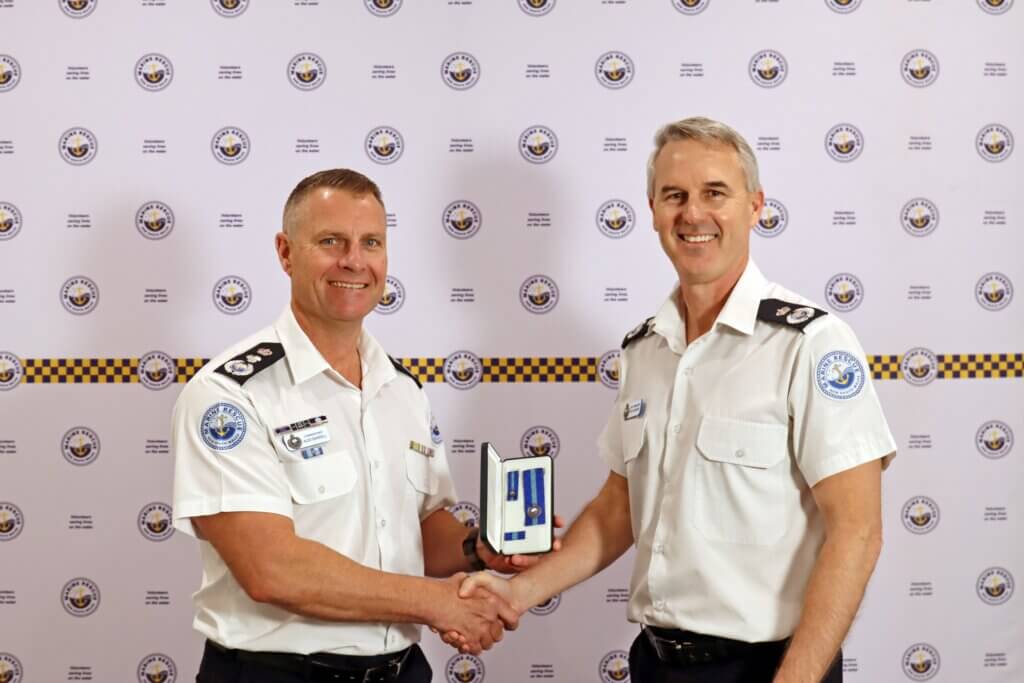
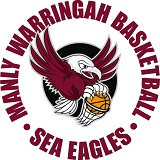 Manly Warringah Basketball Association Sea Eagles Under 14's to Represent NSW in the club's 75th Year: Fundraising Support + NBL1 East Women's Champions are Manly-Warringah Sea Eagles + Warriewood hosting Wheelchair Basketball Australia Finals Next Weekend
Manly Warringah Basketball Association Sea Eagles Under 14's to Represent NSW in the club's 75th Year: Fundraising Support + NBL1 East Women's Champions are Manly-Warringah Sea Eagles + Warriewood hosting Wheelchair Basketball Australia Finals Next WeekendHome courts: NBISC Stadium, Jacksons Road, Warriewood
Website: manlybasketball.com.au
Both of Manly Warringah Basketball Associations Boys and Girls Under 14s teams have qualified for Nationals, the Australian Club Championships, to be held in Perth this September.
These juniors have been working hard for this opportunity on the court and fund raising in their free time so let’s get behind them! This is more than just a competition. It’s a chance for these dedicated young athletes to test themselves against Australia’s best, grow as a team, and create memories that will last a lifetime. But getting to Perth isn’t easy—it comes with a big price tag. Flights, accommodation, uniforms, meals, and team logistics all add up quickly.
Club members, supporters and family are reaching out to our community—families, friends, local businesses, and basketball lovers—to help make this dream a reality. The boys and girls have also been fundraising locally, running bake sales at games and sausage sizzles when and where they can.
MWBA organisers (and mums) tell us: ''We’ve teamed up with the Australian Sports Foundation, so any donation over $2 is tax-deductible. Every contribution, big or small, brings us closer to the court in Perth. If you believe in supporting youth sport, teamwork, and opportunity, we’d love to have you on this journey with us.''
Girls Team Donations: https://asf.org.au/campaigns/manly-warringah-basketball-association/u14s-girls
Boys Team Donations: https://asf.org.au/campaigns/manly-warringah-basketball-association/u14-boys
The junior basketball event will see more than 700 participants from Australia's top 48 boys and girls' junior teams travel to Western Australia, along with nearly 100 officials and hundreds of family members and supporters. It is the first time Perth has hosted the six-day tournament, which will run from 27 September to 3 October 2025 at Willetton Stadium.
Having a Great 75th Year
The teams heading west are another Season highlight for the MWBA as it celebrates its 75th year. Manly Warringah Sea Eagles Women's team are champions of the NBL1 East and will now be focused on next weekend's NBL1 Nationals, taking place in Canberra from the 29th–31st of August, while 6 teams from MWBA took part in the 2025 Waratah Junior Premier League that ran last weekend with some great practice for upcoming games and great fun had by all.
Add to this, the nation's top 4 NWBL and WNWBL teams will battle it out for the Wheelchair Basketball Australia National Finals championship on their home courts from August 29-31, with the Manly Wheel Eagles among the action.
Manly Warringah Basketball Association has been catering for the basketball fraternity since its inception in 1950 and over the last 75 years has produced highly talented players many of whom have moved on to the professional ranks, representing State, Country and playing in the NBL & WNBL.
More in this week's Profile.
- Pittwater Residents Encouraged by Snowy Valleys Council being given support to hold referendum on de-amalgamation
- Marine Rescue NSW Commissioner Barrell accepts national appointment
- Scruby-Scamps Bring Community Together to Tackle E-Bike Safety
- Critical Care cameras being installed at Northern Beaches Hospital
- Plastic grass announced For Kamilaroi Park Bayview + Lakeside Park
- 190X Bus Turning up - Concerns students are still being left stranded
- Church Point boardwalk + seawall works to commence This September
- Warriewood Surf Life Saving Club's next phase of Renewal works to commence this month
- Volunteer Lifesavers Honoured at 2025 NSW Awards of Excellence + Local Surf Lifesavers recognised with National Medals
- 2025 Irukandji's Australian Surfing Team Announced: Pittwater's Milla Brown to represent Australia again
- Project Penguin 2025 + Surfing with a Penguin in South Africa + Pittwater's Penguins
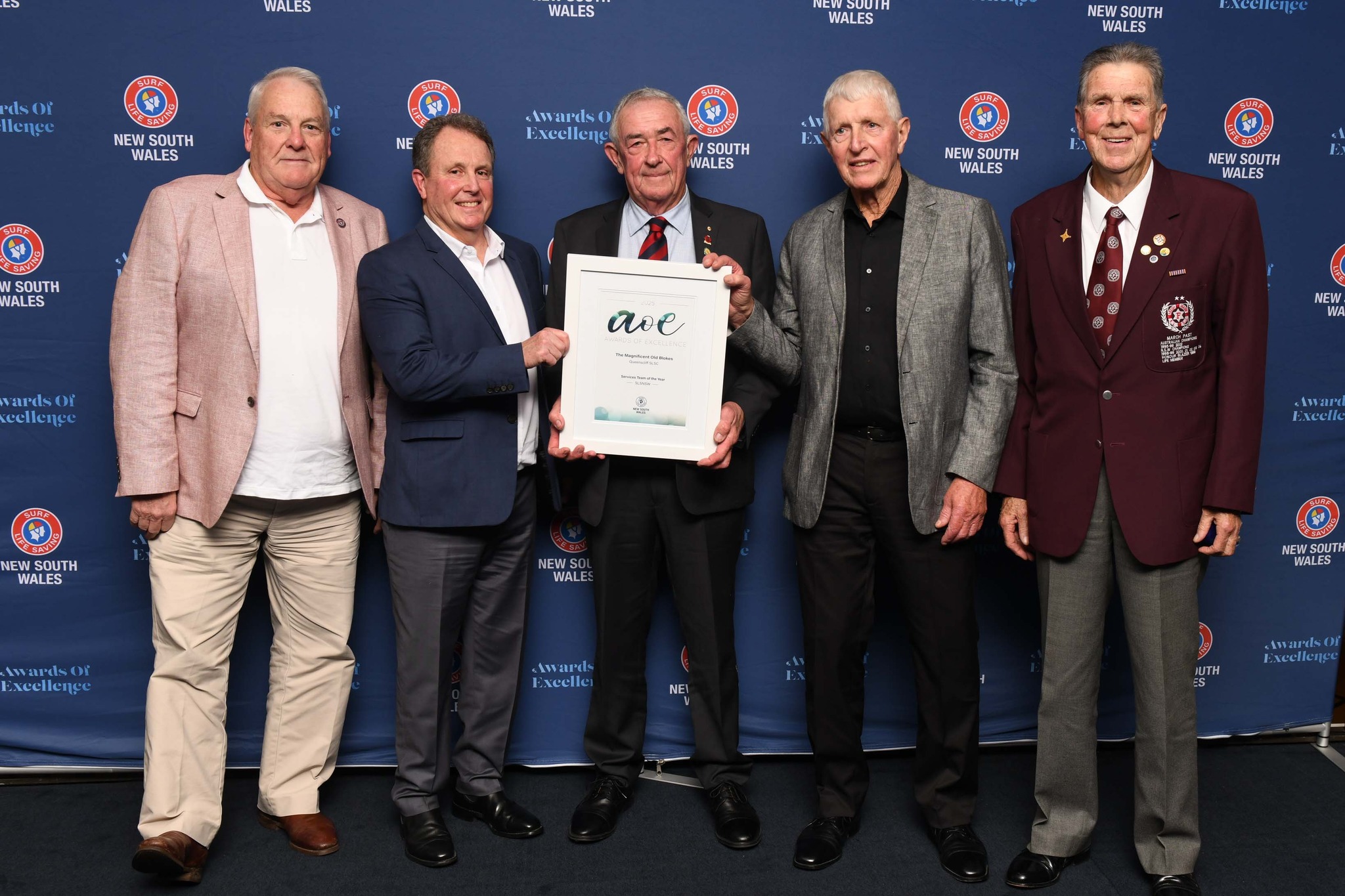
The Magnificent Old Blokes (Queenscliff SLSC)
Vale Geoff Clarke
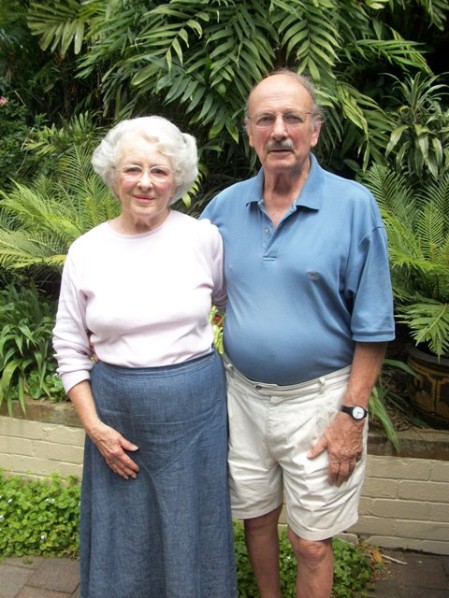
Above: Geoff and Shan in January 2012. Pic; AJG
Above: one of his pictures of Clareville Beach in 1961.
Mona Vale Boardriders' Andrew Gobbe on a Roll - Australian Shortboard Champion 2025
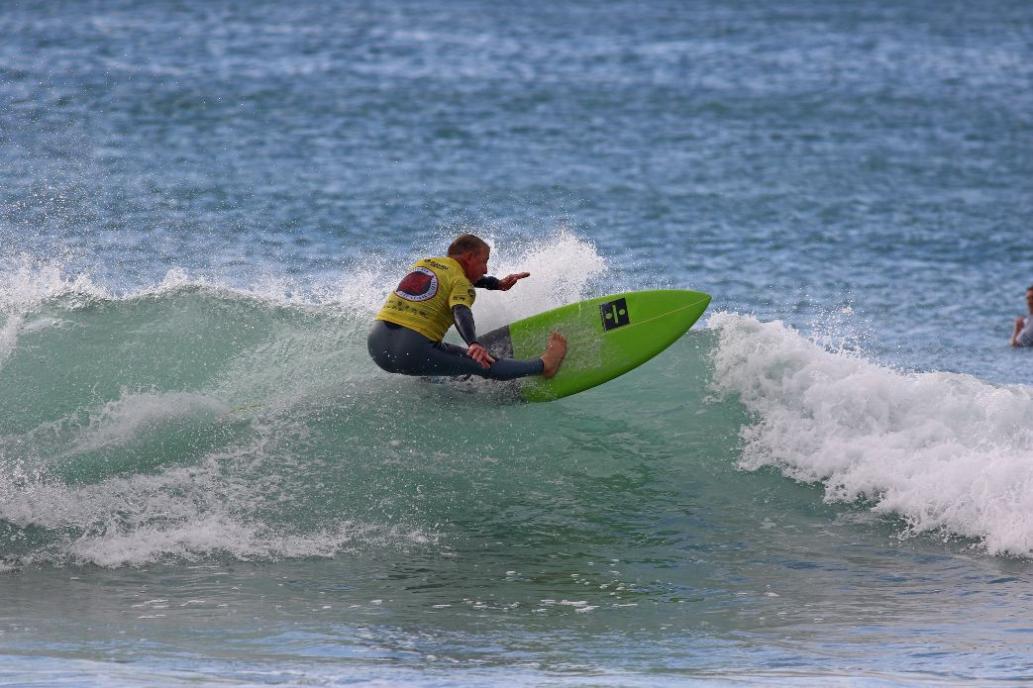
 TiARA Immunologist says “Freeze It – Don’t Squeeze It”
TiARA Immunologist says “Freeze It – Don’t Squeeze It”Website: www.tiara.org.au
A group of eminent professionals from TIARA, (Tick-induced Allergies Research and Awareness Committee) has developed a key communication strategy to help all those at risk of tick bites.
Although you may be bitten by ticks year-round in our area, as we head into Spring and residents go into their garden and outdoors to enjoy the season, please use these resources as a refresher on how to protect your family, yourself, and your pets.
- Front Page Issue 645 - Avalon Bulldogs Win 2025 A Grade Grand Final (Sunday August 31 2025 at Rat Park, Warriewood)
- Warringah Rugby Club Wins 2025 Shute Shield
- Surf Life Saving Australia Develops Innovative Lifesaving CPR: SLSA will host online Q&A sessions for members this Sept., Oct., Nov.
- National Drowning Report 2025: Tragic Surge in Drowning Deaths Prompts Urgent Call for Action Ahead Of Summer
- New rescue jet skis for Newport, Warriewood, Palm Beach, Bilgola - 2025-2026 Season
- Community Concerned: Warriewood DA Proposes removal of 11 Hectares of Vegetation, Bridge Over Narrabeen Creek to funnel 280+ extra vehicles into Warriewood's Back streets
- BreastScreen NSW clinic opens at Mona Vale Hospital
- Australasian Dark Sky Alliance Calls for National Legislation to Curb Light Pollution - Closes September 19
- Details released for Sydney Academy of Sport athletics track
- Pictures Avalon Beach Ocean swim fundraising legend named 2025 Volunteer of the Year - close to 100 locals recognised in the Centre for Volunteering 2025 Awards
- New Model Code of Meeting Practice for Councils Released: Commences from January 1 2026 - New one for Councillors on its way too
- Davidson High School revamped hall finished on time
- Fairy penguin found on Pacific Highway returned to Local Pacific ocean waters
- Young Local helps net illegal fishers: Narrabeen Lagoon
- New Study Shows Floods from Hawkesbury Causes Abundance of Reef Fish to Drop by 50%
- Protecting boaters from buying a lemon: Public Register of Vessel Statutory Notices Launched - Free to use
- ACYP Evaluation report shows impact of NSW Strategic Plan for Children and Young People
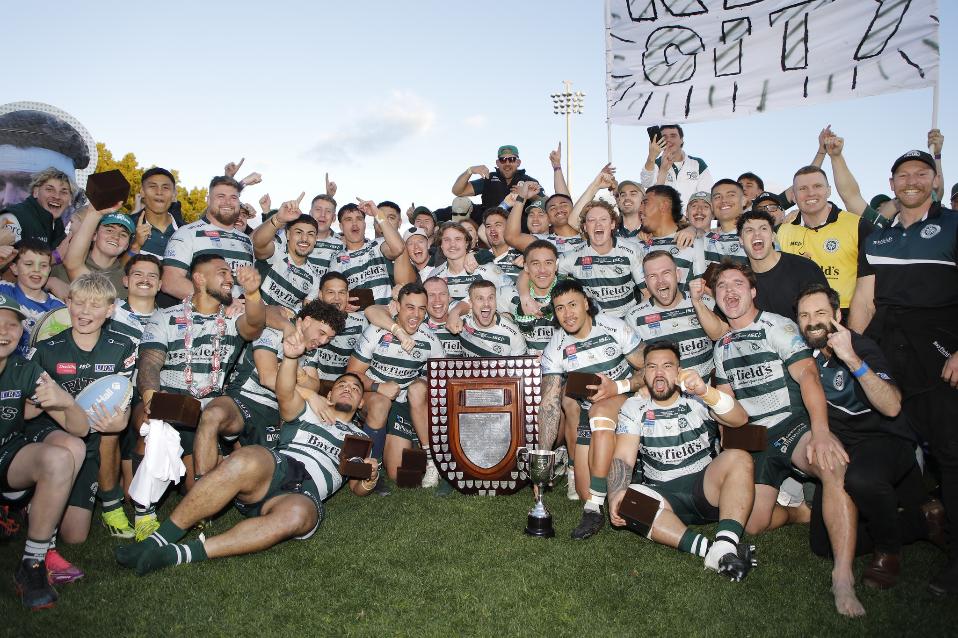
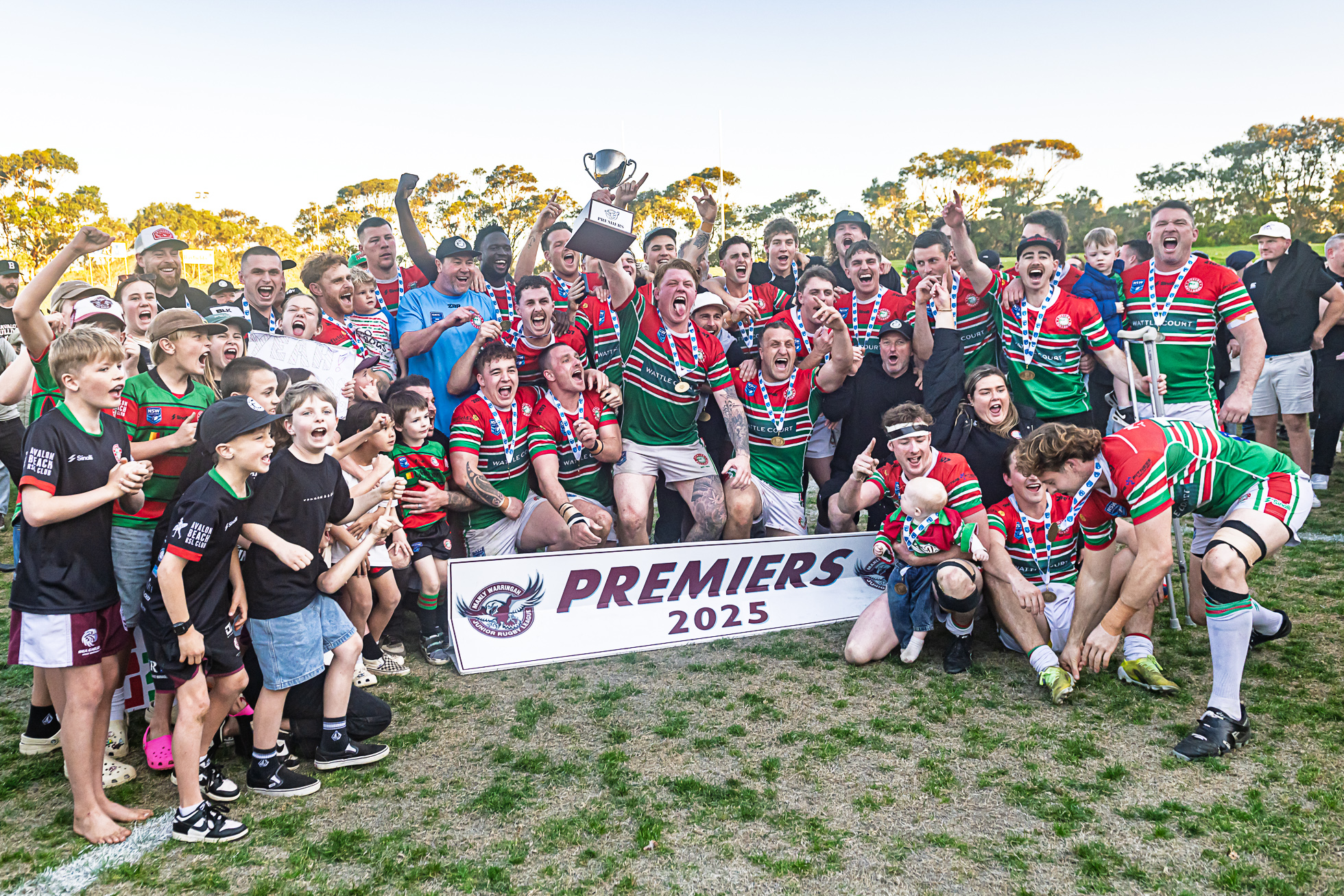
Avalon Bulldogs 2025 A Grade Premier Team - plus supporters!. Photo: Michael Mannington OAM
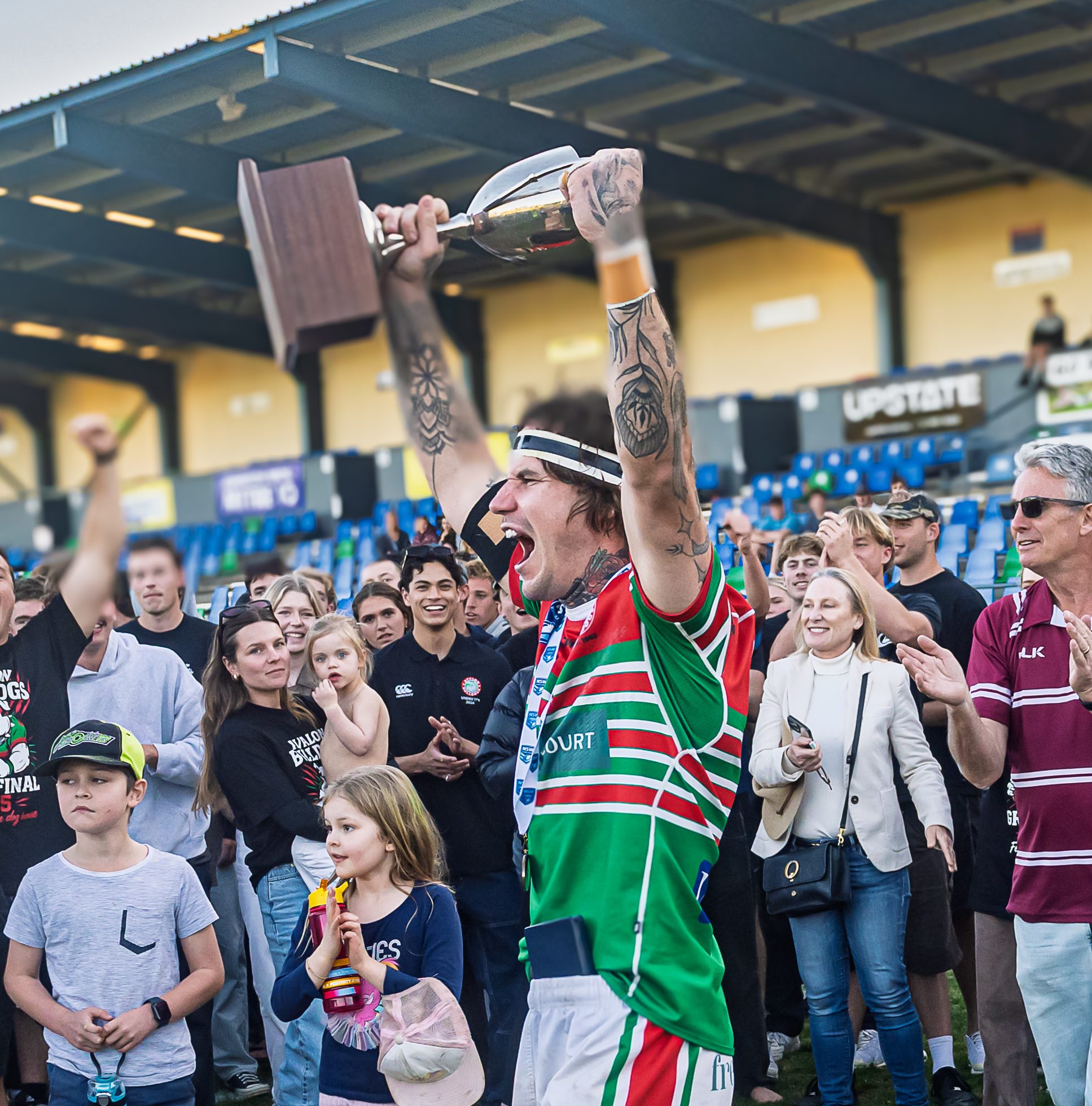
Grand Final Player of the Match and A Grade Captain, William Kelly. Photo: Michael Mannington OAM
September
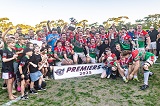 2025 A-Grade Rugby League Premiers: Avalon Bulldogs
2025 A-Grade Rugby League Premiers: Avalon Bulldogs- Narrabeen to Manly Beaches Closed After Fatal Shark Incident at Dee Why - Heartbreak for family and community
- Mackellar MP Dr Sophie Scamps Tables Safer E-Bikes Bill
- Narrabeen Sports High School’s New Performing Arts Hall Designs Revealed
- Bilgola Plateau Public School Celebrates 60 Years with Groovy Village Fete: Sunday September 14 - 10am to 3pm
- Bendy Buses Return to Pittwater
- Aquatics Champions Crowned at 2025 Australian Shortboard Titles: 5 Local Winners
- NSW Health transition team deployed to Northern Beaches Hospital
- Osprey Nest Platform Installed In Careel Bay Wetlands: Fingers crossed for a Spring Thing to happen...
- Molly Picklum - Yago Dora Crowned 2025 World Champions at WSL Finals Fiji
- Australian Boardriders Battle Returns for 13th Edition: North Narrabeen Qualifier Round Runs November 8
- NSW Councillors to face stronger penalties, faster hearings under proposed laws
- Park Bench Philosophers 2025 Australian Museum Eureka Prize winners announced: ocean research projects big winners
- Turimetta Moods: First Week of Spring 2025 - by Joe Mills
- Consultation begins on illegal tobacco offences for NSW landlords: Online Survey open until September 14
- Australasian Dark Sky Alliance Calls for National Legislation to Curb Light Pollution - Petition Closes September 19
- Community Concerned: Warriewood DA Proposes removal of 11 Hectares of Vegetation, Bridge Over Narrabeen Creek to funnel 280+ extra vehicles into Warriewood's Back streets - Exhibition period closes Oct. 1, 2025
Congratulations!
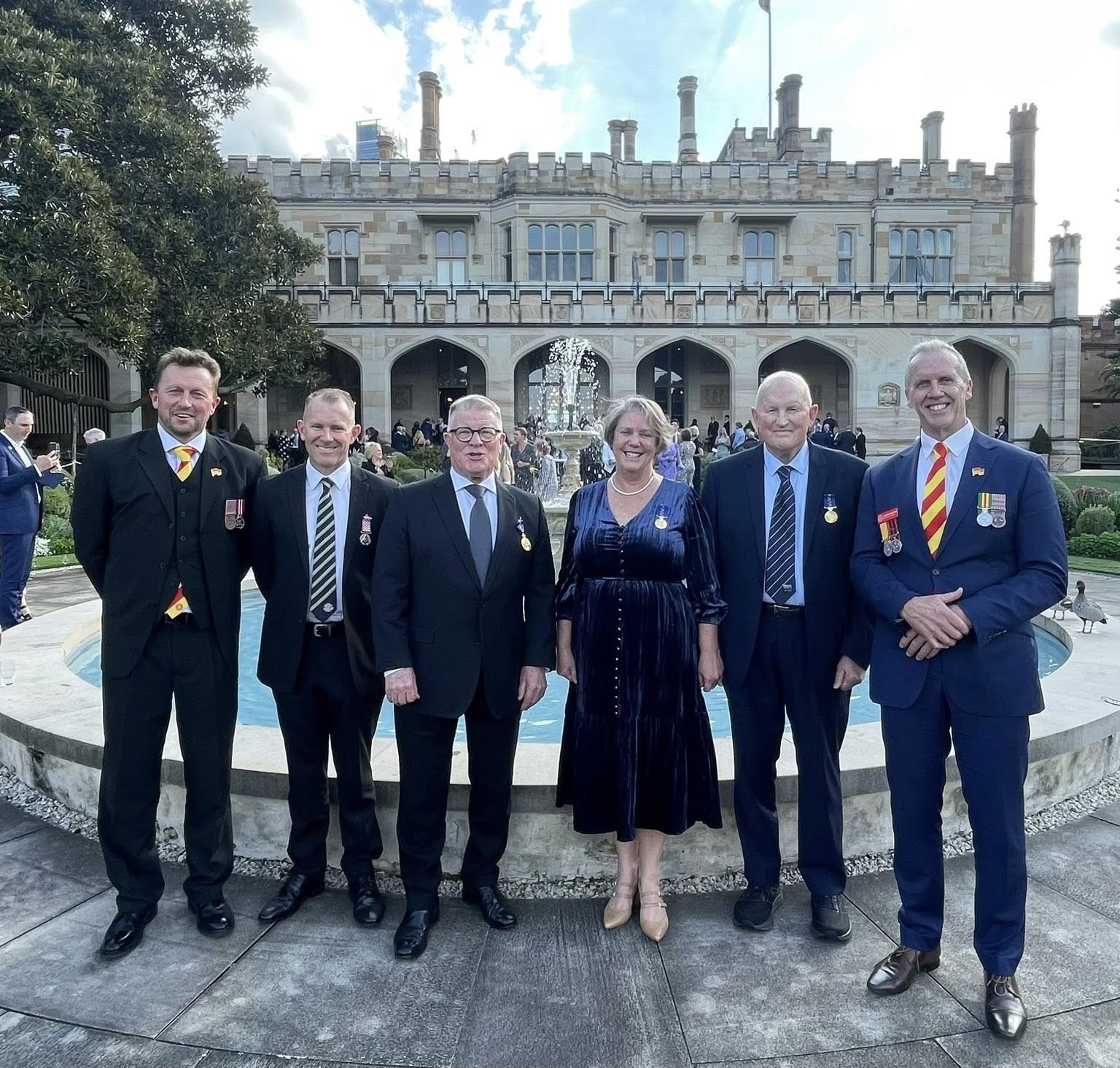
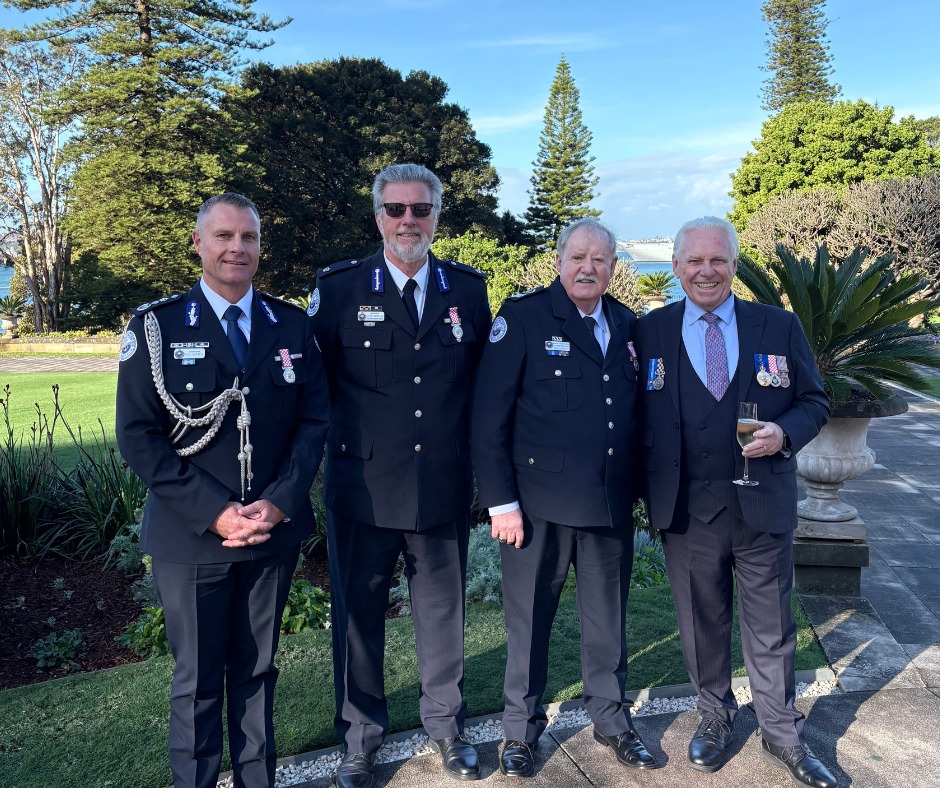
 Gotch4Life's 2025 24 Hour Row: Let's Row the Distance for Mental Fitness
Gotch4Life's 2025 24 Hour Row: Let's Row the Distance for Mental FitnessLet's all get behind this epic event. The 24-Hour Row started right here on the Avalon Beach surf club balcony, their crew page here for this year's Gotcha4Life 24Hour Row. Mel and Nathan Wellings put ideas into action and, with the support of our boaties, the 24-Hour Row fundraiser was hatched. Drop in to your local Surf Club this weekend, say hi, show your support and contribute if you can.
For more information on the 24 Hour Row or to donate to the cause to support building a mentally fit future, visit: 24hourrow.com.au
The donation function will stay open for a few weeks after Sunday, so please, chip in a bit if you can.
- Wilga Wilson Planning Proposal for 536 Dwellings at Ingleside: feedback Closes September 24
- Great Koala National Park Announced: Historic Win for Wildlife, Biodiversity, Community
- Royal Prince Alfred Yacht Club's 159th Opening Day A Celebration for All + What else is coming up at the Alfreds' this Spring
- Shark net removal trial cancelled for this year: Shark Meshing (Bather Protection) Program 2024-25 Annual Performance Report Released
- Currawong Wharf Upgrade: Draft REF Open for Feedback Closes October 6
- Johnson Bros Mitre 10 Mona Vale - Avalon 70th Birthday Celebrations: September 19 to 22
- NSW Government commits $10 million to Men’s Rugby World Cup Legacy Program
- NSW Mounted Police mark 200 years in the saddle
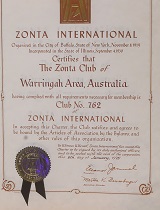 Zonta Northern Beaches Celebrates 50 Years Of Service and Advocacy: President's Address
Zonta Northern Beaches Celebrates 50 Years Of Service and Advocacy: President's Address- Australian Sailing Awards 2025 for NSW/ACT: RPAYC Wins Club of the Year, Volunteer of the Year, Youth Sailor of The Year - Lifetime Achievement Award for Ted Anderson + Club of the Year (Cat. B) is Saltwater Veterans
- First Manly Little Penguin Chicks for Spring 2025
- Aquatics Irukandji's Crowned World Champions at the 2025 ISA World Surfing Games
- Tom Myers Takes Out Men's Ride of the Year in 2024/25 Big Wave Challenge
- Greens to introduce cat containment laws in NSW: Empower Local Councils to Act
- Aussie Bird Count 2025 Runs October 20-26: BirdLife Australia Publishes 'What Bird is That?' Help for Participants - so do we!
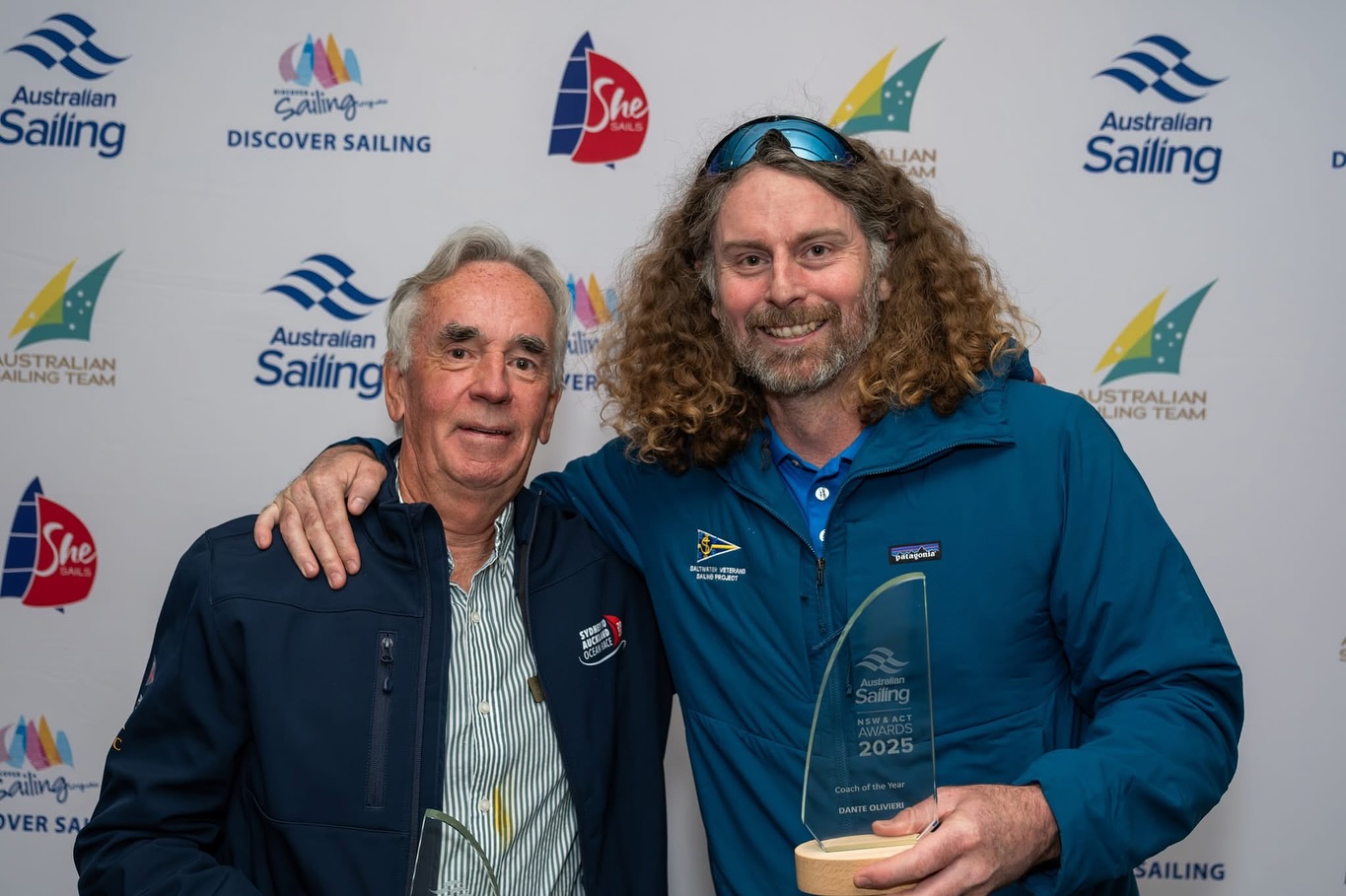
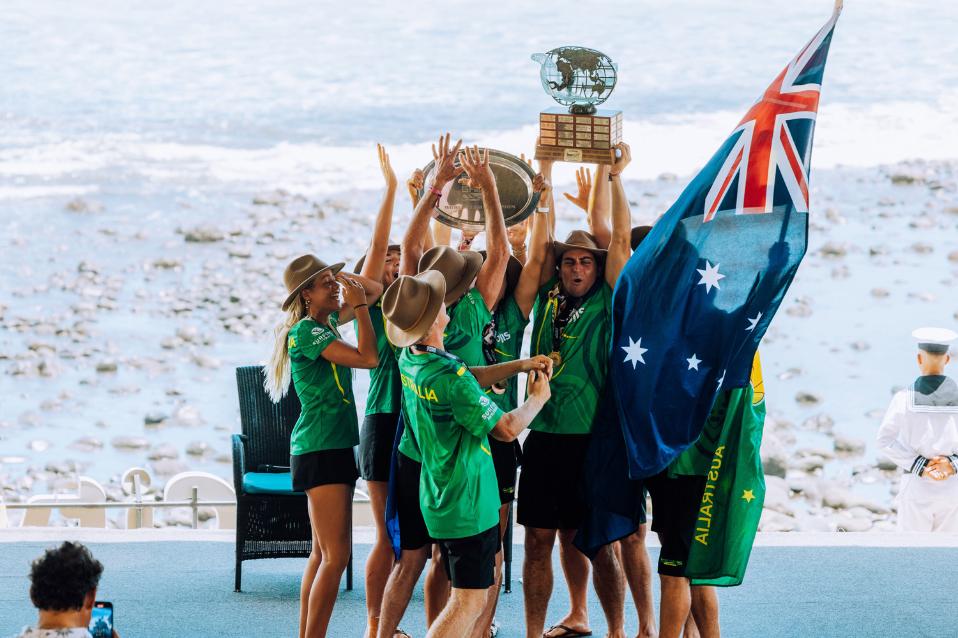
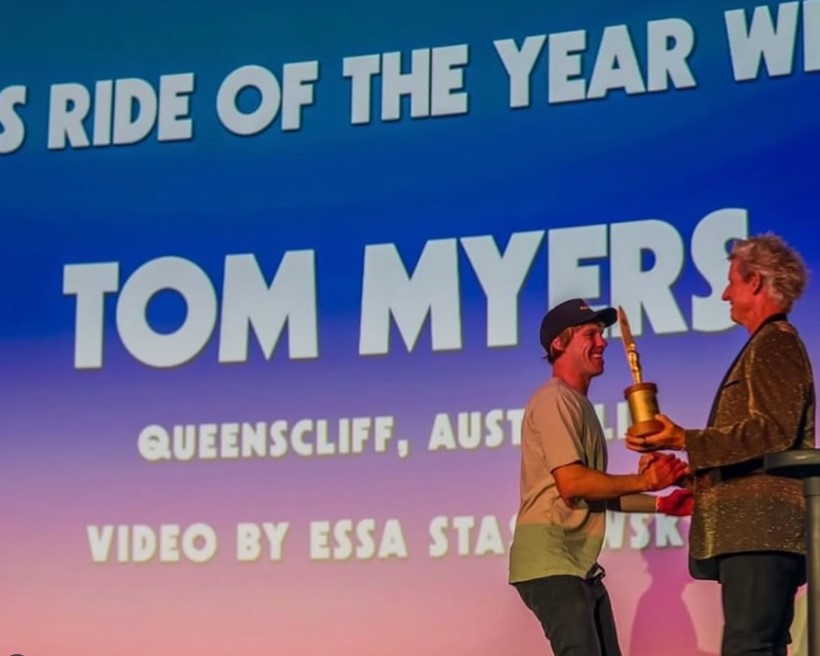
 Andrew Clark: President of Avalon Beach SLSC As the 2025-2026 Patrol Season Commences
Andrew Clark: President of Avalon Beach SLSC As the 2025-2026 Patrol Season CommencesAt the 100th AGM of the Avalon Beach SLSC Andrew Clark was formally elected a President for the 2025-2026 Season after Bernadette McKay stepped down from the role she has fulfilled since 2021.
Recently he has been among the first cohorts of the SLS SNB Branch to learn about progressions in resuscitation through Surf Life Saving Australia, and led by Branch CEO, Tracey Hare-Boyd, another outstanding leader, role model, mentor, and inspiration in our local surf lifesaving movement.
See: Surf Life Saving Australia Develops Innovative Lifesaving CPR: SLSA will host online Q&A sessions for members this Sept., Oct., Nov.
Andrew, known as 'Clarkie' to fellow clubmates, is a high energy intelligent gentleman, calm under pressure, with an appetite to learn all he can to save lives on our beaches.
He, alongside Karl Attkins, Mike Stanley-Jones, Blaze Roberts, Stuart ('Stretch') Cooper and Lucas Molloy, received an Award Of Excellence Meritorious Award in 2023, at State and National level, for their rescue of Mark Head.
Meritorious Awards are awarded to clubs, members or the public for outstanding deeds of bravery performed through lifesaving actions during and outside of patrol hours.
Mark said the support from his mates in the aftermath of the accident was critical to his survival.
“It’s not just the hour on the beach they spent with me, it’s the 15 months after. They’re the only reason I’m here tonight.”
The Avalon community gets to still see Mark's glorious smile and hear his laugh as a result. In fact, Mark was back to the club by November 25, 2023, still lighting up even overcast days with his inherent joy for Avalon Beach.
This Issue, as the Volunteer Patrol Season opens, a few insights into the 2025-2026 Season Avalon Beach SLSC President.
- Flags Up Across NSW as Record Number of Lifesavers Return to Coastline
- Marine Rescue NSW calls on boaters to make safety a priority these Spring holidays: Log on/ Log Off
- Max Weston Wins 2025 Bells Beach Longboard Classic
- Surfboat Brewery Wins Medals at 2025 Sydney Royal Beer & Cider Show as First-time entrants
- State Government's Latest Planning system reforms set off Alarm Bells in Community, Local Government, Environment Groups
- Prime Minister of Australia, The Hon. Anthony Albanese, Address to the 80th Session of General Assembly Debate - Plus a little about Lady Jessie Street and Dr. H V Evatt
- Bayview Public Wharf + Baths Restoration: Feedback on Draft Documents now Open - Closes October 23
- NSW Audit Office report on Coastal Management Finds Objectives of Coastal Management Act are not being met: Recommendations
Locals will have seen Max at the 2023 Manly Longboard Classic where he secured a run in the first WSL LT, and will recall he won the 2023 Noosa Longboard Pro in the lead into the Manly event.
Tour veteran Hiroka Yoshikawa (JPN) also broke through for a career-best result with a runner-up placing, with Kevin Skvarna (USA) matching his best finish by making his first Final in five years.
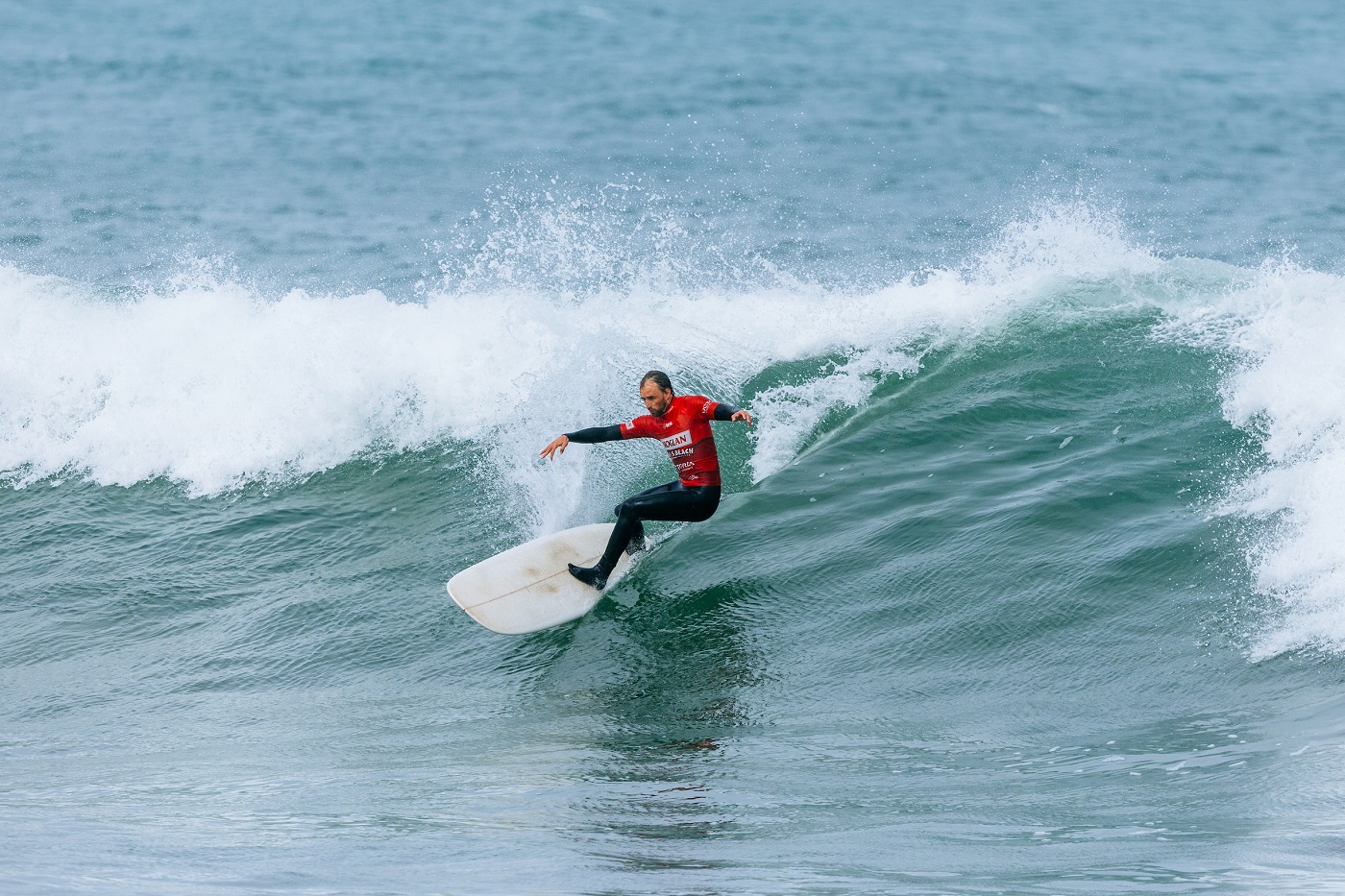
Max in action on Finals Day. Credit: WSL / Ed Sloane
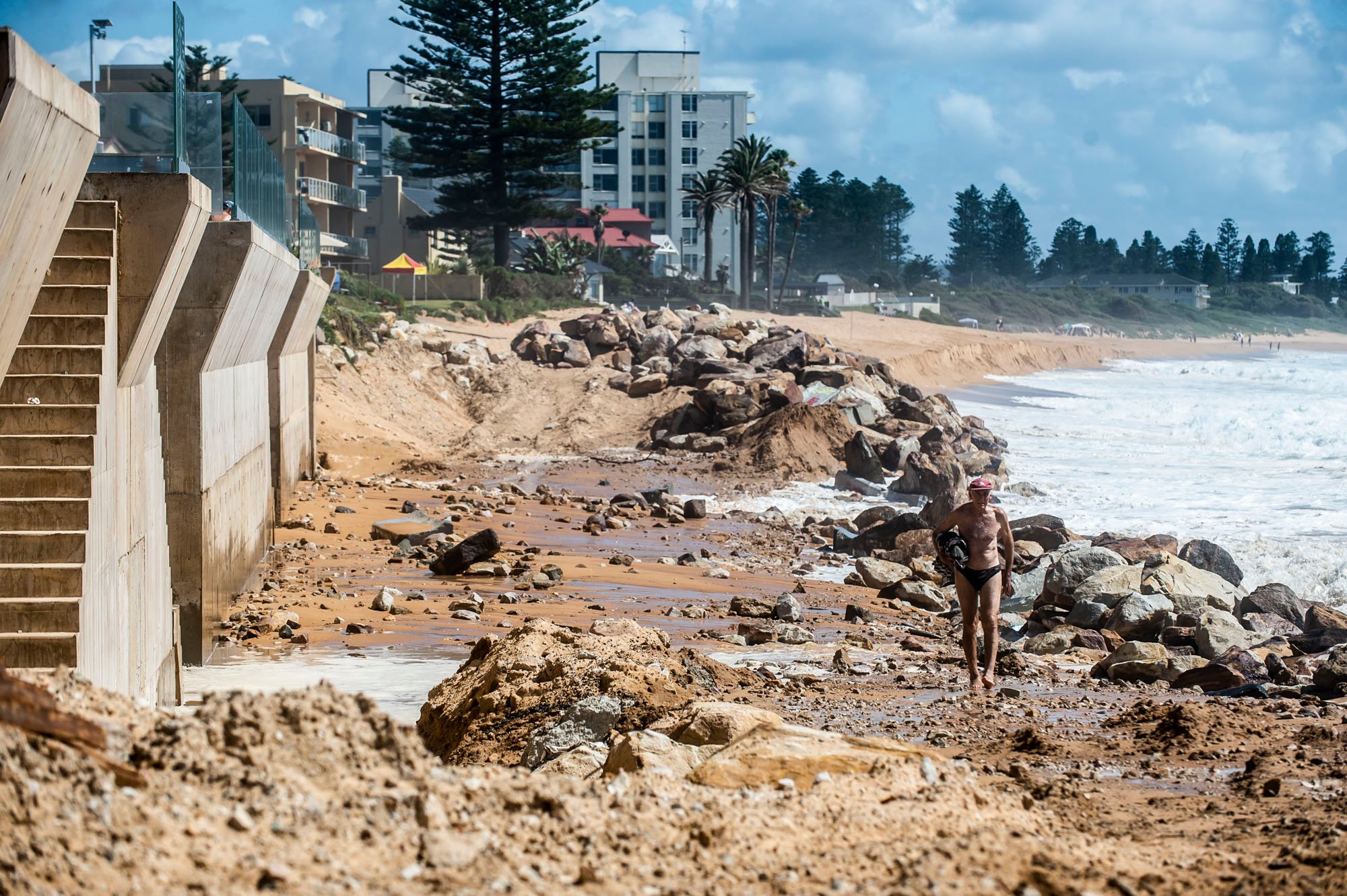
On September 10 2025 the NSW Audit released its findings into Coastal Management. The Office assessed effectiveness through examining the following audit questions:
- Are DCCEEW and DPHI effectively overseeing and facilitating councils’ implementation of the coastal management framework?
- Have the selected councils effectively developed programs and priorities for coastal management?
The audited councils were the Northern Beaches Council, City of Coffs Harbour Council, and Shoalhaven City Council. They were selected after an examination of factors relevant to the operational and coastal management context of local councils in the NSW coastal zone.
The coastal management framework under the Coastal Management Act 2016 (the Act), aims to deliver strategic and integrated management, use and development of the coast by state and local government for the social, cultural and economic wellbeing of the people of NSW.
The Department of Climate Change, Energy, the Environment and Water (DCCEEW) oversees and facilitates implementation of the framework by local councils in the coastal zone.
The Department of Planning, Housing and Infrastructure (DPHI) facilitates integration of the framework with the land use planning system.
Local councils are supported by DCCEEW and DPHI to develop coastal management programs (CMPs) that set out risk-based, long-term strategies for managing the coast.
This audit examined whether DCCEEW, DPHI and three local councils (City of Coffs Harbour, Shoalhaven City and Northern Beaches Councils) are effectively implementing the framework to manage the NSW coast.
In its Conclusion the NSW Audit office found that the coastal management framework is not being effectively implemented to manage the NSW coastal environment.
Seven years after the framework came into effect, most local councils are still in the process of developing coastal management programs (CMPs), and are not yet implementing CMPs to address risks and opportunities. DCCEEW is not effectively overseeing and facilitating implementation of the framework by state and local government.
As a result, the objectives of the Act – ‘’to manage the coast in an ecologically sustainable way for the social, cultural and economic wellbeing of the people of NSW’’ – are not being achieved.
‘The audited councils are developing CMPs to support coastal management and strategic land use planning. However, the process is taking longer than anticipated. As at April 2025 most of the councils’ CMPs had not yet progressed to the implementation stage.
Surfrider Foundation Northern Beaches stated it is dismayed, but not at all surprised, by the findings of the NSW Audit Office’s Performance Audit on Coastal Management.
‘The document states what we have voicing loudly for years.’ the organisation stated
‘The audit found poor coordination and a lack of oversight in how our beautiful coastline is being “managed”. It finds that state government departments and local authorities are not acting in concert. This lack of integration has resulted in the abject failure of the objectives of the Coastal Management Act.’
‘This spaghetti like admin system results in the destruction of beach public amenity as witnessed at Narrabeen/Collaroy, violence on the beach at Wamberal, and the approval of the beach obliterating projects like the expensive renovation of the Newport SLSC in a flood and tidal inundation zone.’
Surfrider Northern Beaches Branch President Brendan Donohoe said:
”We call on the Minister for the Environment, Penny Sharpe, to take immediate action and appoint a ‘Coastal Commissioner’ to oversee works and development on the precious NSW coast.
“We now have a “Building Commissioner” in NSW, we need the same for the coast.
“Australians love their beaches. It is well past time we acted accordingly by giving the beaches the attention they deserve.”
The report made a Recommendations. MORE HERE
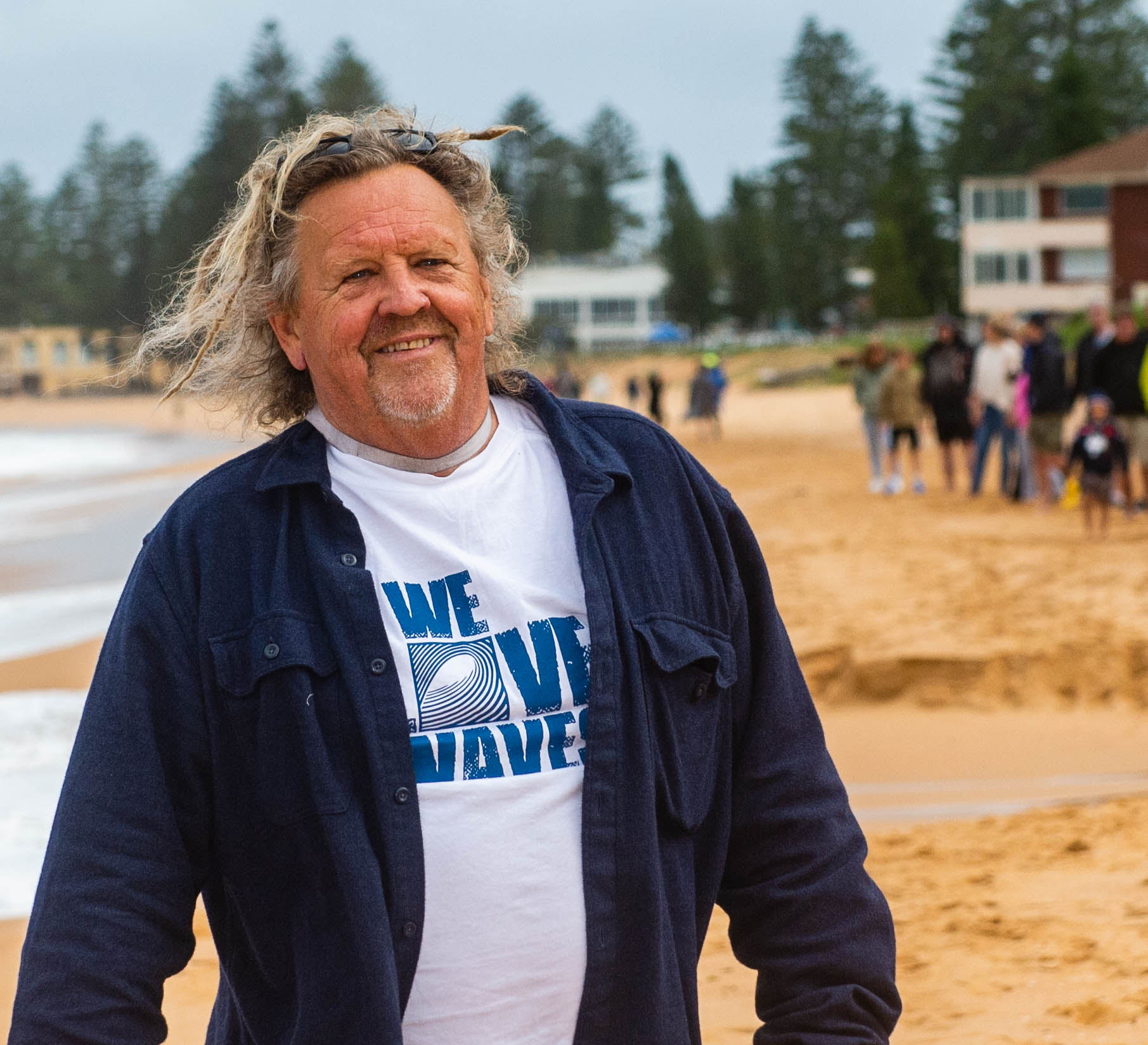
Brendan Donohoe, President of Surfrider Foundation Northern Beaches, at Line in the Sand 2021 at Collaroy-Narrabeen. Photo: Michael Mannington, Community Photography
October
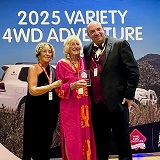 Beryl Driver OAM, at 92 Years Young, is looking forward to her 29th Variety The Children's Charity Long Drive in the Australian Countryside
Beryl Driver OAM, at 92 Years Young, is looking forward to her 29th Variety The Children's Charity Long Drive in the Australian CountrysideOn Monday October 13 Beryl Driver OAM, a former ‘Mermaid of Palm Beach’ and a Variety the Children’s Charity participant in the B to B ‘bashes’ since the Brickpit to Broome Bash of 1999, held a function to raise funds for her March 2026 4WD Bash.
The Club Palm Beach (Palm Beach RSL) room was dressed in red and gold to celebrate the 50th year of Variety in Australia (gold) and red for Variety’s big heart. Over the last 50 years, Variety - The Children's Charity, has touched the lives of over 2 million children in need, raising over $700 million for children and their families across Australia.
This week a few insights into the long road and lasting passion for looking out for and after Australia's children.
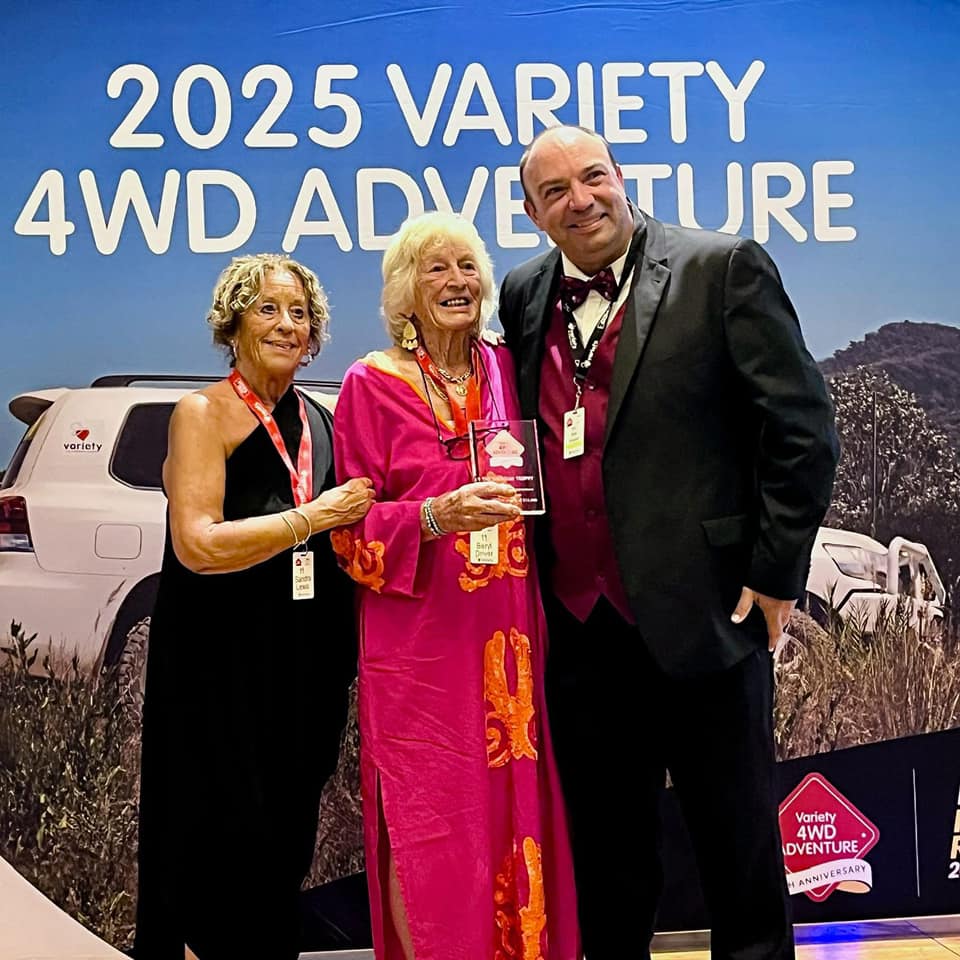
- The Rions Debut album, Everything Every Single Day, goes straight to Number One
- 2025 ISA World Para Surfing Championship Team Announcement: Call to Support our Athletes
- ABSLSC's Gala Centenary Long Weekend Celebrations A Celebration of the Club's History and Community by Roger Sayers OAM
- Stab Highs' Sydney Winners + North Narrabeen win Heavyweight Rumble 2025
- Central Trail: Ku-ring-Gai Chase National Park, Spring 2025 by Kevin Murray
- 2025 Manly Warringah Junior Rugby League Season Presentation of Volunteers, Awards, Competitions Winners
- U14 Club Championships in Basketball: Manly Warringah Sea Eagles Boys claim Silver medal + Australia’s ‘Golden Six’ clinch history
- Aquatics National Finalists announced for 2025 Australian Sailing Awards - RPAYC up for 3 National Awards, Saltwater Veterans Sailing a Finalist as well
- Wildlife Photographer of the Year 2025
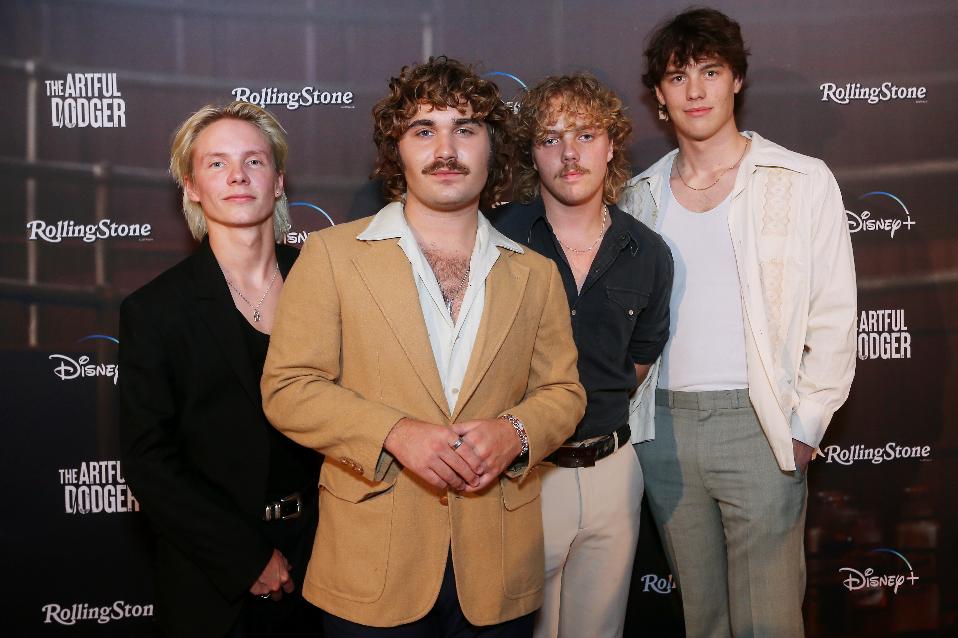
Synthetic turf: Myths vs the reality - Mona Vale forum
Currawong Wharf Upgrade: Draft REF Open for Feedback Closes October 6
Bayview Public Wharf + Baths Restoration: Feedback on Draft Documents now Open - Closes October 23
Australia's Waters Are Full of Plastic, and We Put it There
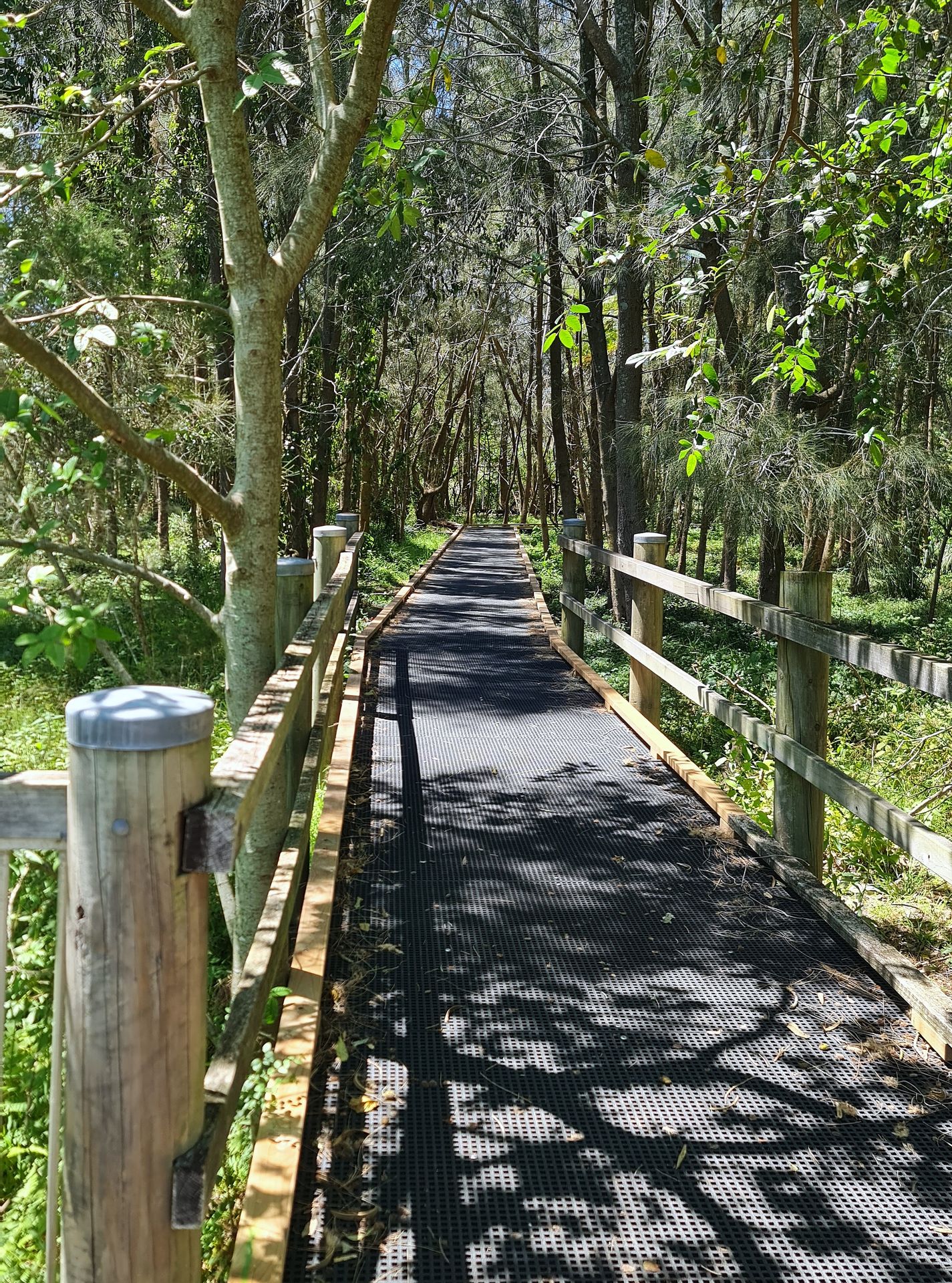
Warriewood Wetlands: this plastic product has been put into a marine/flood environment and becomes a pollutant, poisoning everything with microplastics. No resident can recall being consulted on whether this newly installed walkway product is appropriate here
 Avalon Sailing Club - for 8 to 88 years
Avalon Sailing Club - for 8 to 88 years Avalon Sailing Club's Try Sailing Day is Saturday 15th November. It's an opportunity for members of the public to visit the club, explore the facilities and try sailing on a yacht or dinghy.
Helena van de Linde, Commodore of Avalon Sailing Club, said:
''Sailing is a sport that can be enjoyed by people of all ages and at all levels.
At Avalon Sailing Club our purpose is to foster the love of sailing on Pittwater and we have members aged from 6 to 87 sailing in dinghies or in yachts.
So if you have ever considered trying sailing on that beautiful body of water bordering our peninsula then come to Avalon Sailing club on 15 November between 10am and 12pm.
You will be able to speak to members and experts about ways to get into sailing and sailing opportunities at Avalon for all ages and we will have volunteers assist to get you on a sailing vessel.
You can register you interest here: avalonsailingclub/events/321427
About
Avalon Sailing Club is a a family oriented sailing club, sited at Clareville, on Pittwater. We are known for our friendly and relaxed atmosphere with our purpose to foster the love of sailing on the waters of Pittwater. We are particularly proud of all those children who first learned to sail at Avalon and continue to enjoy our sport, along with those who have gone on to represent Australia at the Olympics, Americas Cup, Admirals Cup, Sail GP and other world class events like the Sydney to Hobart and Fastnet races.
The Centreboard division includes training and racing. Our classes are Manly Junior, Open Skiff, Flying 11, Spiral, Laser, Waszp and Puffin Pacer. Avalon Sailing Club is a Discover Sailing Centre starting with Children around the age of 7 or 8. Find out more about our Learn to Sail program here.
Our Yacht Racing Program is designed around three inshore and two offshore series allowing members to race between one Sunday to every Sunday a month during the season. Find out more about Yacht Racing here.
Avalon Sailing Club Website: com.au/avalonsailingclub/home
- Agreement reached to transition Northern Beaches Hospital to public ownership + Here’s why a plan to turn private hospital giant Healthscope into a charity is stirring debate
- 2025 State of the Beaches Report for the 2024-25 period: Mona Vale Beach Downgraded
- Council meetings: new rules Will End the Public Forum Address - Response to the council's draft closes Dec. 4 2025
- Council proposal to turn Boondah Reserve into a Sports Precinct: Consult feedback closes Nov. 23
- Pittwater Offshore Mens Shed, Scotland Island, Secures Australia Post Community Grant for 'Tides of Friendship'
- Roads Updates: 50K Speed Limit Saving Lives, Potholes - Council + State Government, Wakehurst Works to Begin in 2026, Mona Vale Road West
- September surge: Marine Rescue NSW volunteers complete record number of missions
- For the Good of their Wellbeing: Support for Australians to prepare for new social media minimum age laws
- Elite fleet for 80th Rolex Sydney Hobart Yacht Race confirmed: Richards Returns on Palm Beach XI
- Entries open for Nautilus Marine Insurance Sydney Short Ocean Racing Championship: 48th Edition by Di Pearson
- Surf Life Saving Australia releases National Coastal Safety Report 2025
- Kiteboarding Demonstration Session at North Palm Beach, Pittwater, Spring 2025
- Financial disclosure return information for the 2025 federal election published: Political Party Spends Not available until February 2026 + Misinformation was rife during the 2025 election. New research shows many people were unable to identify it: access to quality news matters
- Free Nature Photography Exhibition opens at the Australian Museum
- NSW Police supports Escape. Hide. Tell. critical safety advice
November
 John Ogden's 10th Book 'Stone Free' Shares insights from a world much-changed
John Ogden's 10th Book 'Stone Free' Shares insights from a world much-changedStone Free: From Choirboy to Ganja Kingpin, published through Cyclops Press, is available now at Bookoccino and Berkelouw Books.
The launch, a free event, takes place Thursday November 13 at Bookoccino with Nic Carroll MCing.
Stone Free: From Choir Boy to Ganja Kingpin unravels the true story of Warren Anderson.
Warren was a Californian misfit who turned his back on the American Dream. Reforged as James “Abdul” Monroe, he emerged from the psychedelic haze of the 1960s not as a compliant citizen but as an outlaw fugitive.
What began as a search for meaning morphed into one of the boldest Thai-stick marijuana smuggling operations of the later 20th century. But living untethered had a price.
Betrayed by a former friend and convicted on major conspiracy to import marijuana into America, Abul was shackled and shuffled through 25 federal prisons, doing time alongside outlaw ghosts like surfing’s dark prince, Miki Dora, and the infamous Stopwatch Gang serial bank robber, Paddy Mitchell.
Oggy recently shared a few insights into this new work.
- SLSA National Awards of Excellence 2025: Youth Surf Lifesaver of the Year is Nic McGibbon, Bungan Beach SLSC
- Saltwater Veterans Sailing Project Gains an Elliott 7
- Whale calf killed by NSW shark net reignites calls to urgently remove them
- Pictures Turimetta Moods: October 2025 by Joe Mills
- Some Ruskin Rowe Trick or Treaters by Joanne Seve
- Byron Bay Writers Festival 2025 by Robyn McWilliam
- Zali Steggall MP OAM celebrates rising Local sporting stars
- SLSA welcomes New President as membership reaches historic milestone
- James Griffin MP Launches ‘Future Manly’ - Putting the Community at the Centre of Decision-Making
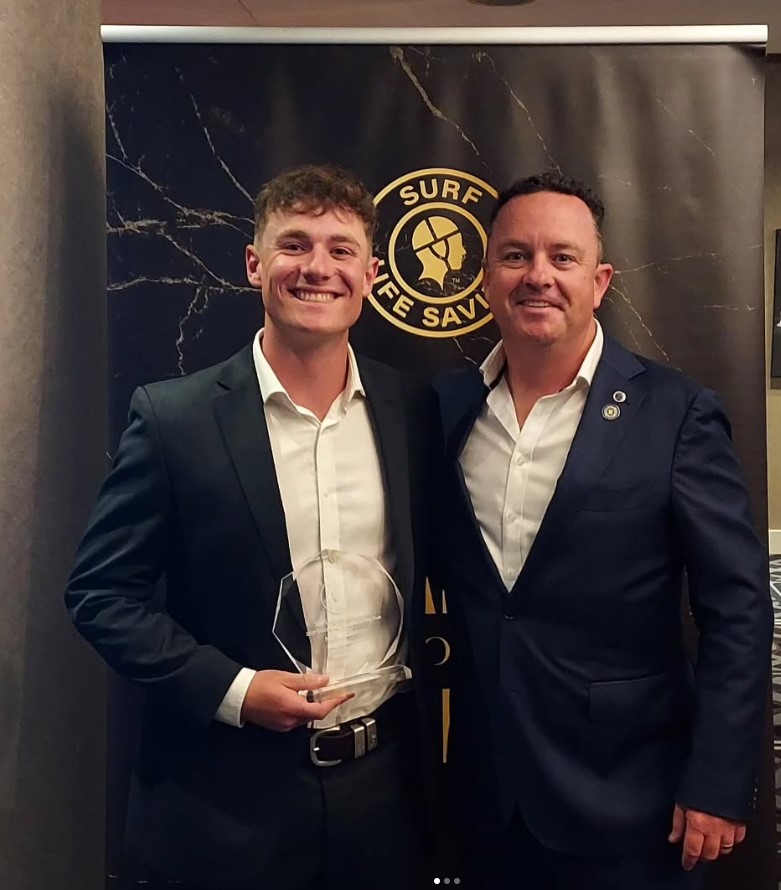
Nic with proud dad and SLS SNB Branch President and fellow Bungan Beach SLSC member Rod McGibbon. Photo: Bungan Beach SL:SC
 Peter Watson, Founder of Men's Kitchen: Nominee for 2026 Senior Australian of the Year for NSW
Peter Watson, Founder of Men's Kitchen: Nominee for 2026 Senior Australian of the Year for NSW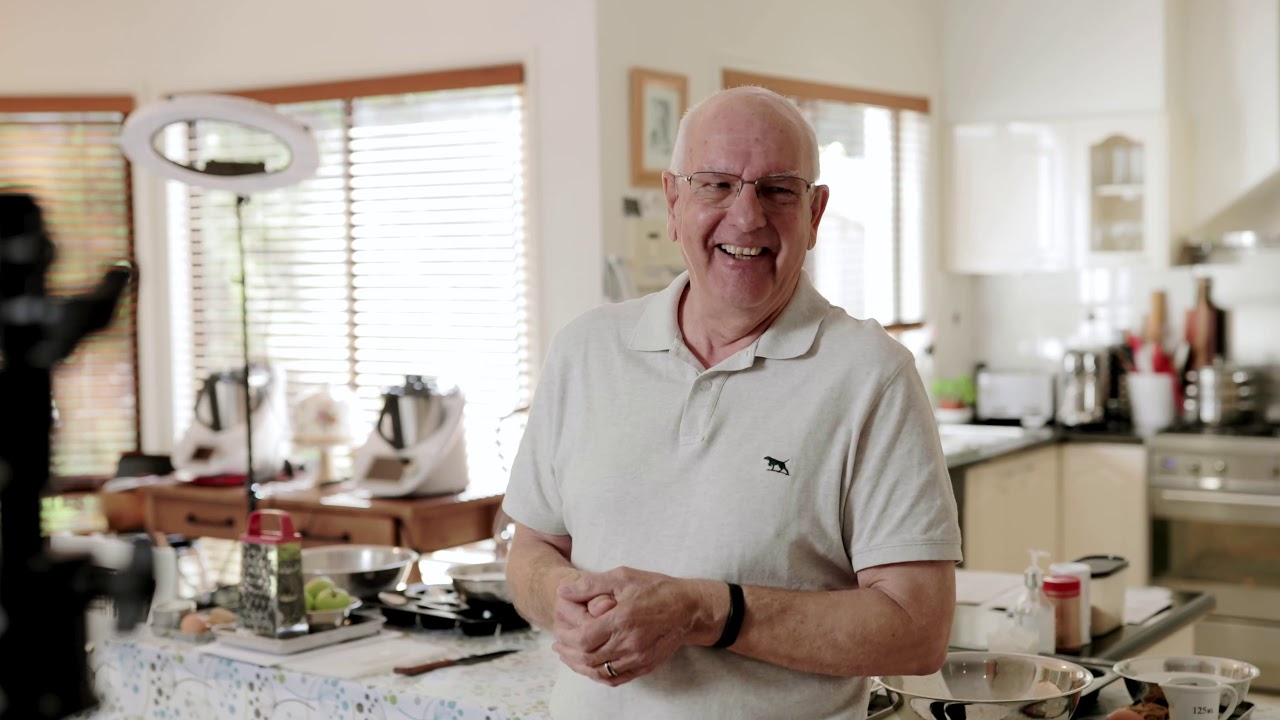
- 2025 National Architecture Awards: Local Projects among Winners Include Babylon House
- 2026 Australian of the Year Awards Nominees for NSW Announced: includes Peter Watson - Dr. Jennifer Matthews
- Australian Boardriders Battle Narrabeen Qualifier: 8 Teams into Final
- Rotary NSW Police Officer of the Year Awards 2025
- Kai Ellice-Flint and Rachael Tilly Crowned 2025 World Longboard Champions Declan, Tully and Max get great wrap
- Over the Top Narrabeen DA Draws Large Crowd to Peaceful Protest: 'This is about Community Standing up For Community'
- Council's Open Coast & Lagoons Coastal Management Program (CMP's): Scoping Study Feedback until Dec. 14
- Labor's Pro-mining - Pro-Logging 'Environment Protection Reform Bill 2025' passed by house of representatives - Mackellar - Warringah MP's addresses
- Minns Condemns neo-Nazi rally: Calls Residents to reject neo-Nazis - Community Leaders ask all to reject hatred, division, extremism
- Bill to Stop Politicians Harvesting your Data Via Postal Votes Introduced: Petition to support Bill
- Scamps Urges Minns Government to Urgently Engage with NBH Medical Staff on Private Services
- New Pittwater Pathways films - Latest on NSW Planning Law Changes: Pittwater MP + Assoc. Prof. Tanya Latty on 'Saving the little critters that run the world' at PNHA AGM + Synthetic Turf: Myth Vs. Reality - Community Forum at Mona Vale by John Illingsworth
- Park Bench Philosophers Art exhibition celebrates Veterans’ Transitions Beyond Service
- Aquatics Graham "Sid" Cassidy to be inducted into the Australian Surfing Hall of Fame

peaceful protest at Narrabeen over DA submitted to the state government's Planning Dept.
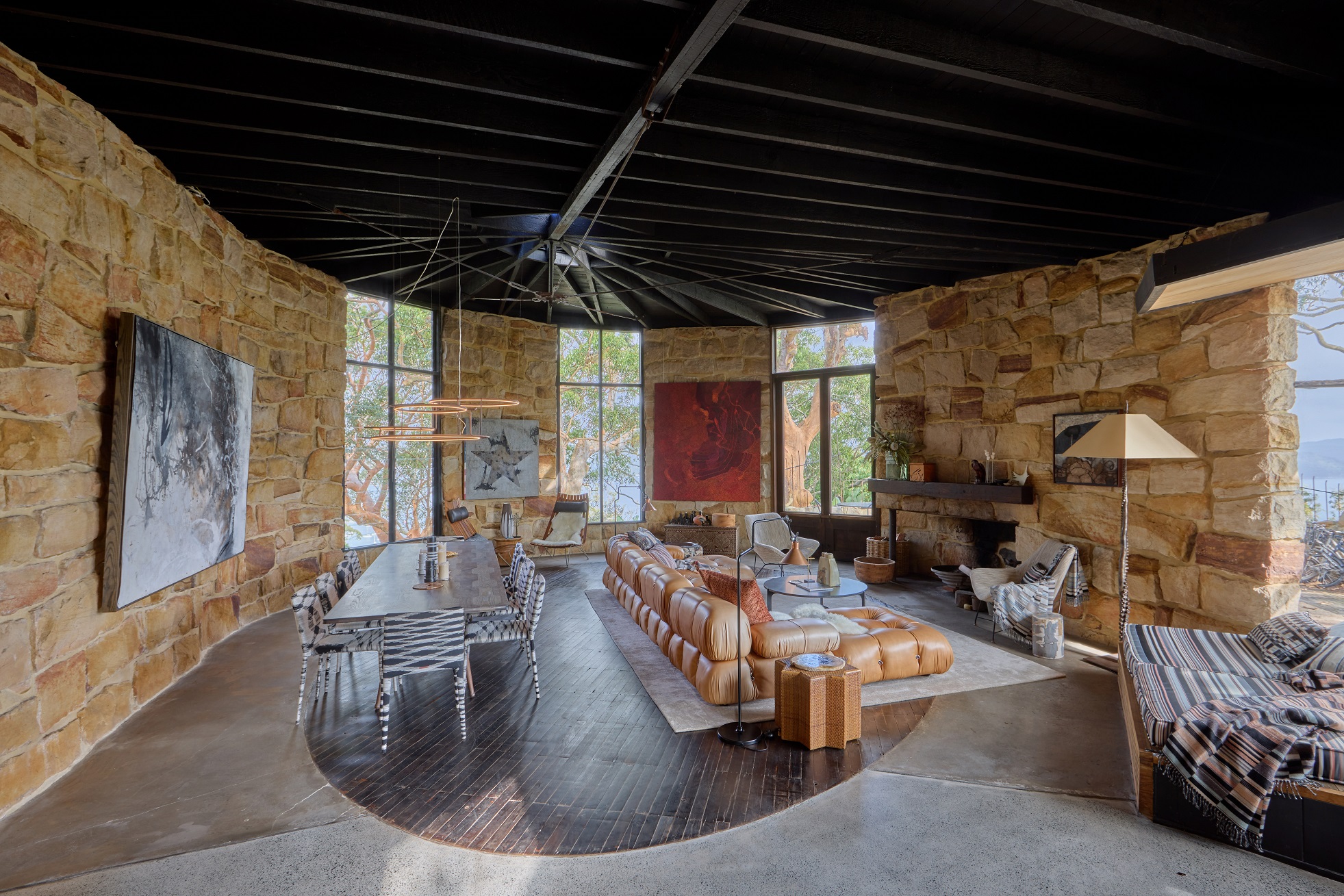
Babylon House Interior | Casey Brown Architecture | Photographer: Zella Casey Brown
 Australian Sailing Awards 2025 National Winners: RPAYC's Julia Hornsby Volunteer of the Year, Saltwater Veterans Sailing Project Club of the Year, Australian Sailing Lifetime Achievement Award to RPAYC's Ted Anderson
Australian Sailing Awards 2025 National Winners: RPAYC's Julia Hornsby Volunteer of the Year, Saltwater Veterans Sailing Project Club of the Year, Australian Sailing Lifetime Achievement Award to RPAYC's Ted Anderson“It’s a great surprise because I’ve been volunteering for a long time and I meet the most wonderful people and athletes doing it,” said Hornsby.
“It’s wonderful that my club are so supportive of everything, and it’s something I would just keep on doing regardless because I love it.”
Sailors who attended the 2025 championships across the world sent their congratulations via social media, thanking Julia for her efforts earlier this year and the club for being such wonderful hosts.
The other big local recognition went to the Saltwater Veterans Sailing Project who were awarded the Club of the Year - Category B, while RPAYC's Ted Anderson was honoured with an Australian Sailing Lifetime Achievement Award.
- Scruby slams government and opposition teaming up to make it easy for developers as NSW Planning System Reform Bill passes - community asks: who are these elected Representatives actually representing?
- Palm Beach Sailing Club's 2025 Beware the Bullets Regatta
- The Irukandjis WIN Eight Medals and Team Copper at the ISA World Para Surfing Championships!
- Remembrance Day 2025: Commemorative Service at Palm Beach RSL Cenotaph
- Marine Rescue NSW volunteers record busiest ever start to boating season + Marine Rescue Cottage Point, Broken Bay, Hawkesbury conduct joint Training Exercise
- Where is Surf Life Saving going World-Wise? by Warren Mitchell OAM
- Newport Pool to Peak Kicks Off Pittwater Ocean Swim Series 2026
- Avalon Baptist Peace Church kicked out of NSW Baptist Association over Marriage Equality
- 2026 Australians of the Year for New South Wales announced
- Yule have a great time in Sydney this Christmas - lots of Free Family events, what's on where and when
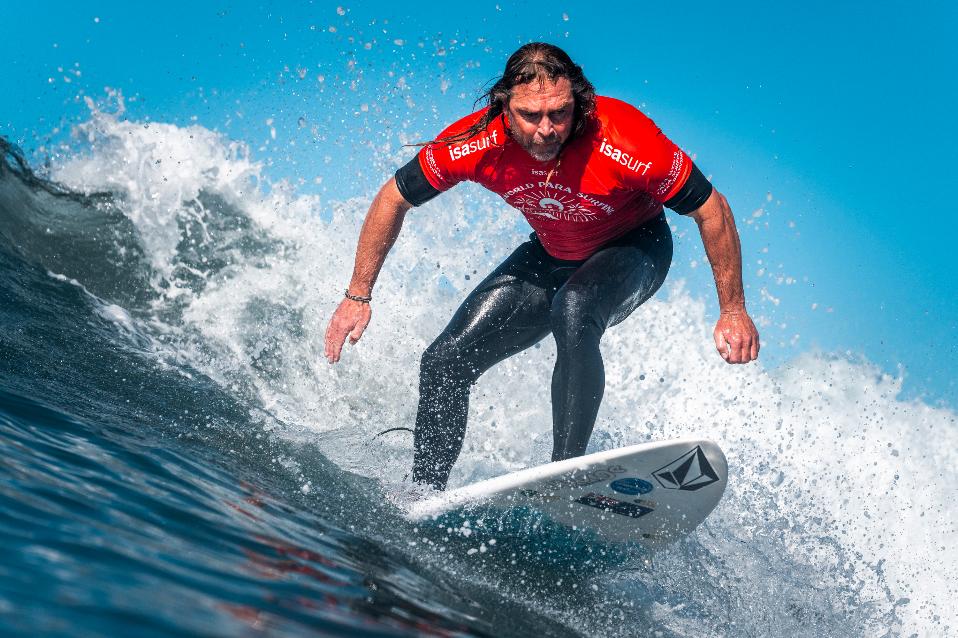
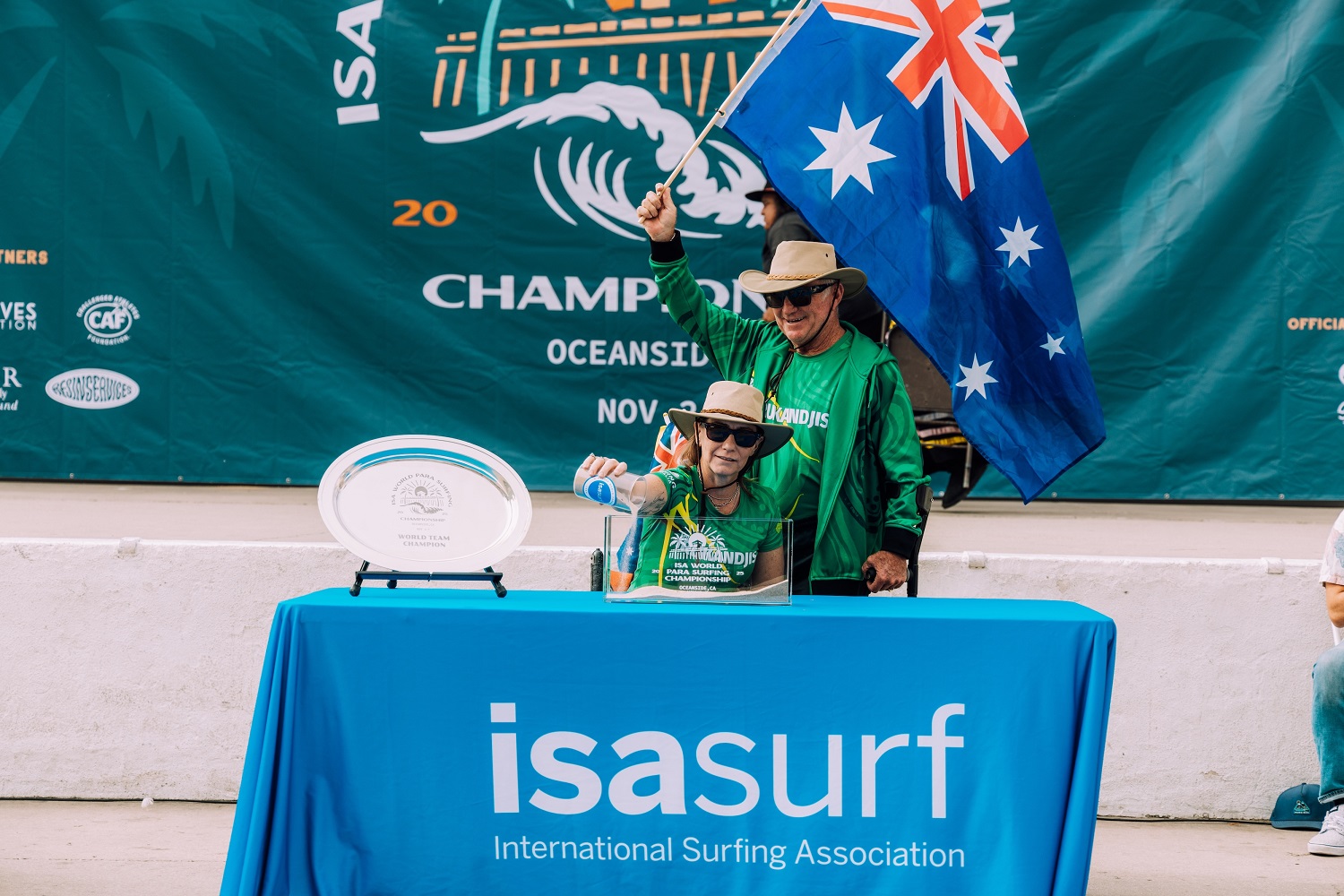
Australia's co-Captains, Emma Dieters and Mark 'Mono' Stewart. Credit: ISA /Jersson Barboza
Congratulations Layne!
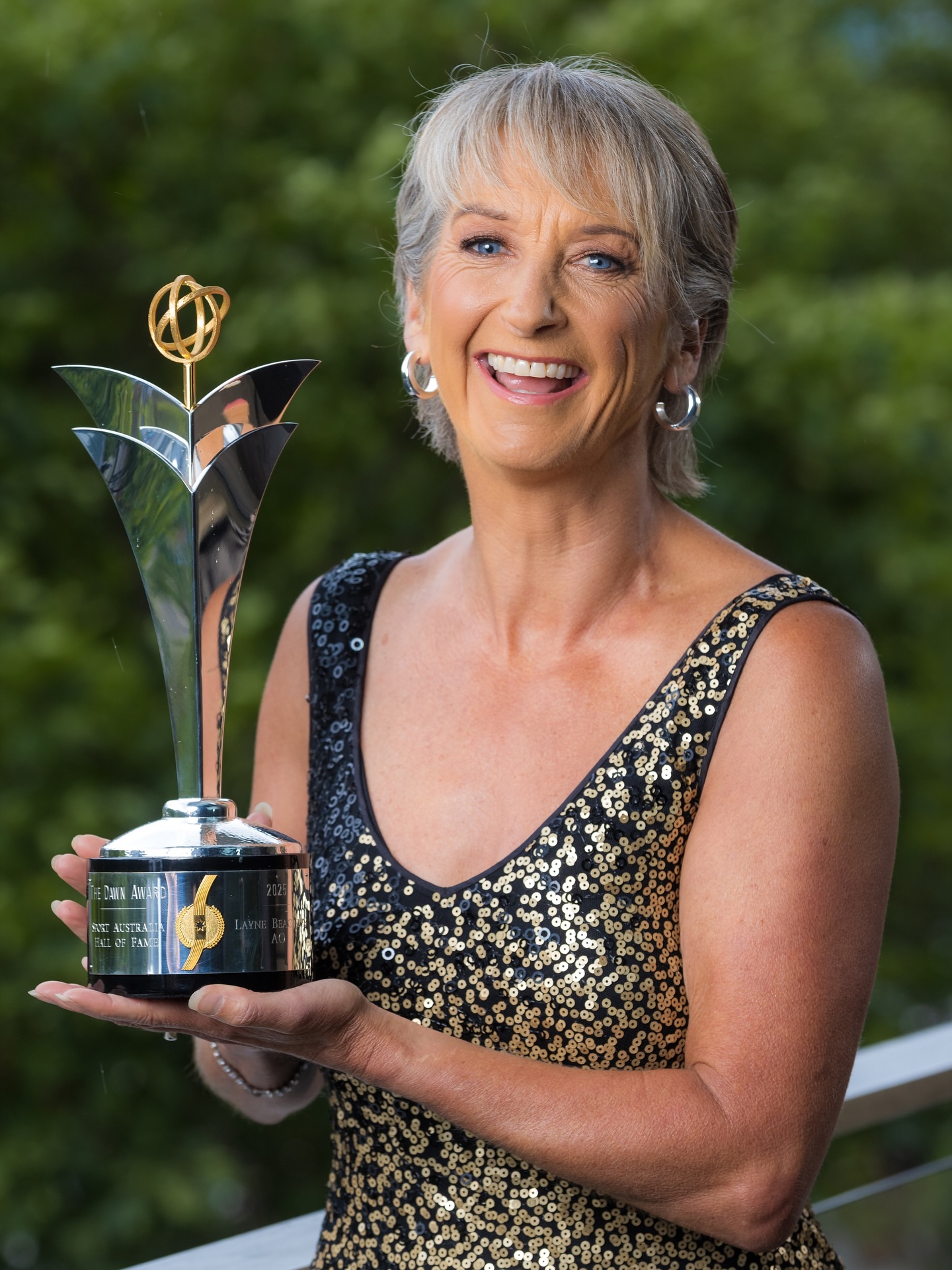
 Deep North: Invites you to Dive into the First Weekend of Summer through a Music-Food-Talk-Activities-Art-Festival in Celebration of here
Deep North: Invites you to Dive into the First Weekend of Summer through a Music-Food-Talk-Activities-Art-Festival in Celebration of hereThis December, Avalon Beach and surrounds will transform for a weekend of music, art, dance, creativity and fun. The Deep North welcomes both locals and visitors to a destination of culture and connection.
A three-day festival, from 5–7 December, this is a weekend of music, art, wellness, and connection.
This is where culture meets coastline.
Compiled by Terry Cook, current President, with extracts from "A History 1975 - 2010" written by Greg Ennis and back-up research/+ 2011-2015 photos by A J Guesdon
Photos of 50th Celebration, AGM, and Christmas Toy Drop off Day November 15 2025 by Michael Mannington OAM of Community Photography, and Donna Cliff, Kimbriki Resources
- Community Calls for Narrabeen Seniors Proposal to be Referred to IPC - Mona Vale Save Our Suburb Residents Group Formed - 2 Motions passed at council meeting
- Regan Tables Development on Bushfire Prone Land Protection Bill 2025
- Warriewood Community Centre Build: November 2025 Update by Joe Mills
- Another memorable Bullets Regatta! by Dick Clarke, Commodore of Palm Beach Sailing Club
- Oscar Piastri and Layne Beachley Win the Don and Dawn Awards - Australia's Most Prestigious Sporting Honours: 2025 Sport Australia Hall of Fame Gala
- Parli-Flicks Short Film Award 2025: Local Youngsters Film among Winners
- Avalon PS Re-Opens Nura Djaroba by Geoff Searl OAM
- Strata overhaul reaches 'final milestone' as fourth reform bill is introduced to NSW Parliament: Double-hit fees-council rates still not addressed - Issues Paper for review into strata managing agents Open for feedback (Until December 14)
- CSIRO Announcement it will Cut more Staff sparks Concerns Over Future of Science in Australia with the loss of 20% of workforce in just 18 months - CSIRO Job Cuts Undermine Australia’s Future Prosperity and Security: Scamps
- Kellie Sloane elected NSW Liberal Leader as Mark Speakman steps down
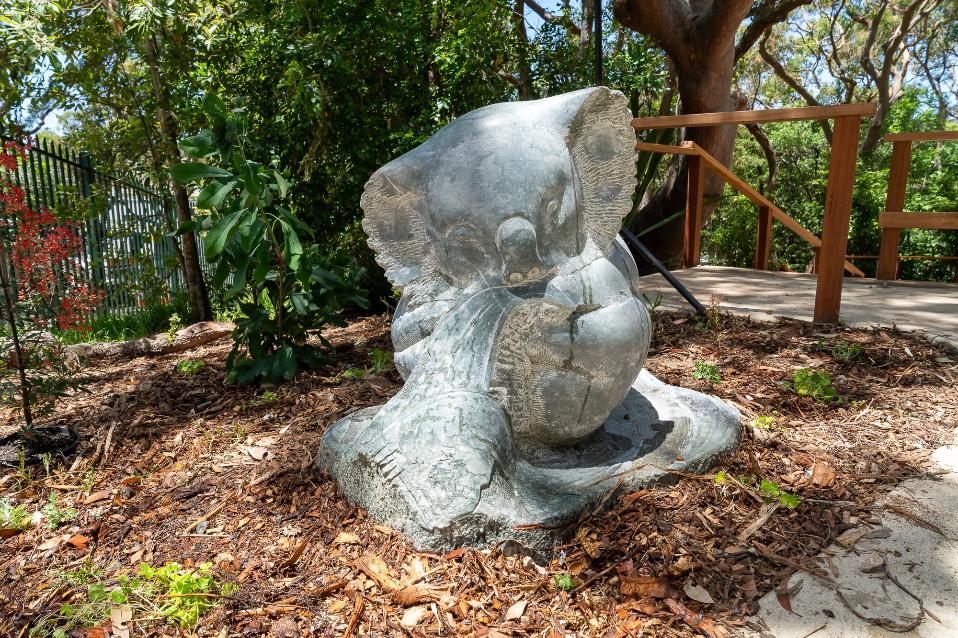
 Tom ''Turbo'' Trbojevic appointed Captain at Manly
Tom ''Turbo'' Trbojevic appointed Captain at ManlyOn Monday November 24 2025 the Manly Warringah Sea Eagles proudly announced that Tom Trbojevic has been appointed Captain for the 2026 NRL season.
- Narrabeen's Mo'onia Gerrard Inducted To NSW Hall of Champions
- NSW Inquest examining whether meat allergy caused by Tick Bites Caused teenagers death: Pittwater has Highest Number of people living with this allergy
- Jacqui Scruby - Council - Long Reef Boardriders - Maria Psillakis Call for Expanded Drone Surveillance to Improve Safety at Beaches
- Council Stands With Community on Objections to State Significant Development at Ocean Street Narrabeen - Culturally Significant Black Bean Trees to be destroyed - Site is Adjacent to Former Grave of 'Narrabeen Man'
- Australia Post Dog Attack Warning as Christmas Runs Begin - deliveries to a property or street will Cease if a Postie is threatened or injured by an aggressive dog - 2024-2025 Dog Attack Statistics for NSW Not Released + South Australia's Tougher Penalties for Dog Attacks Begin
- A new lens on rock fishing safety through AI camera trial: Barrenjoey to Manly high risk rock fishing declared areas map - Lifejacket required
- Independent MP Zali Steggall calls for urgent action to support Warringah’s Craft Brewers and Distillers: Excise Tariff Amendment Bill Falls short
- State Government's Ticketless Parking Fines Data reveals Northern Beaches Council issued 11,658 Fines in September 2025 Quarter
- Warringah Rugby Club female-friendly change facilities Opened: Caps off a HUGE Year for WRC
- Narrabeen Ambulance Station Site Redevelopment Confirmed
- SLS SNB Premiership 2025-2026 Surf Boat Series Round 2 hosted by Palm Beach SLSC: The Boaties Family Continues to Thrive under Historic Barrenjoey Headland
- Zali Steggall MP pays tribute in Parliament to Manly gender-equality trailblazer Sara Dowse
- Wind gods in force at Nautilus Marine Insurance Sydney Short Ocean Racing Championship by Di Pearson
- Manly's Beauty Features in 2025 Underwater Photography Competition winners Images
- Council Appeal on Oxford Falls Seniors DA Successful: Errors on Questions of Law Grounds
- Employer action drives drop in gender pay gap for 2025 - Women still earning 21% less than Men + Men earn nearly $10,000 more than women in bonuses and overtime pay, fuelling the gender pay gap: new data
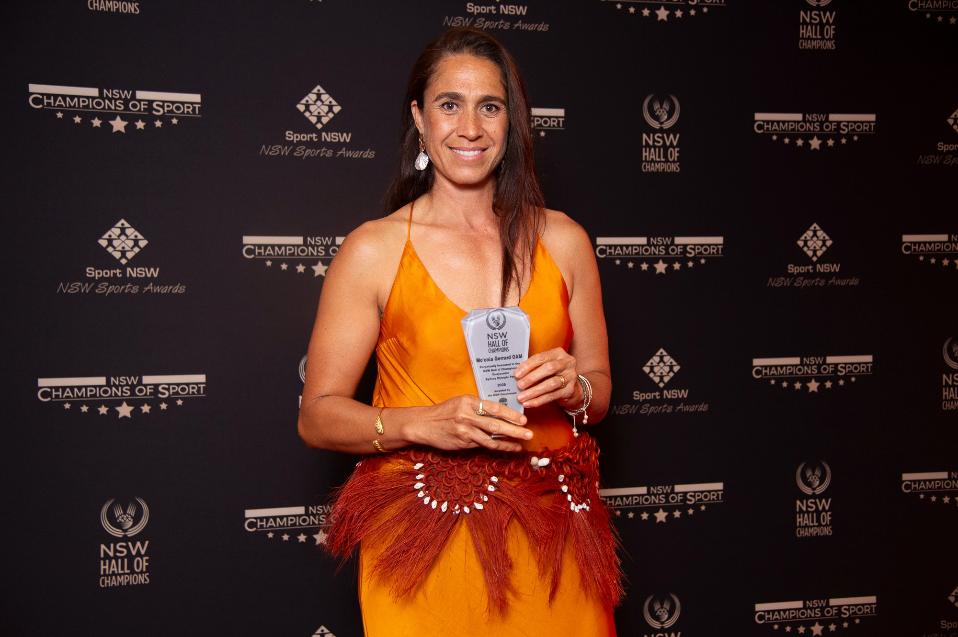
Mo’onia Gerrard with her NSW Hall of Champions award. Photo supplied
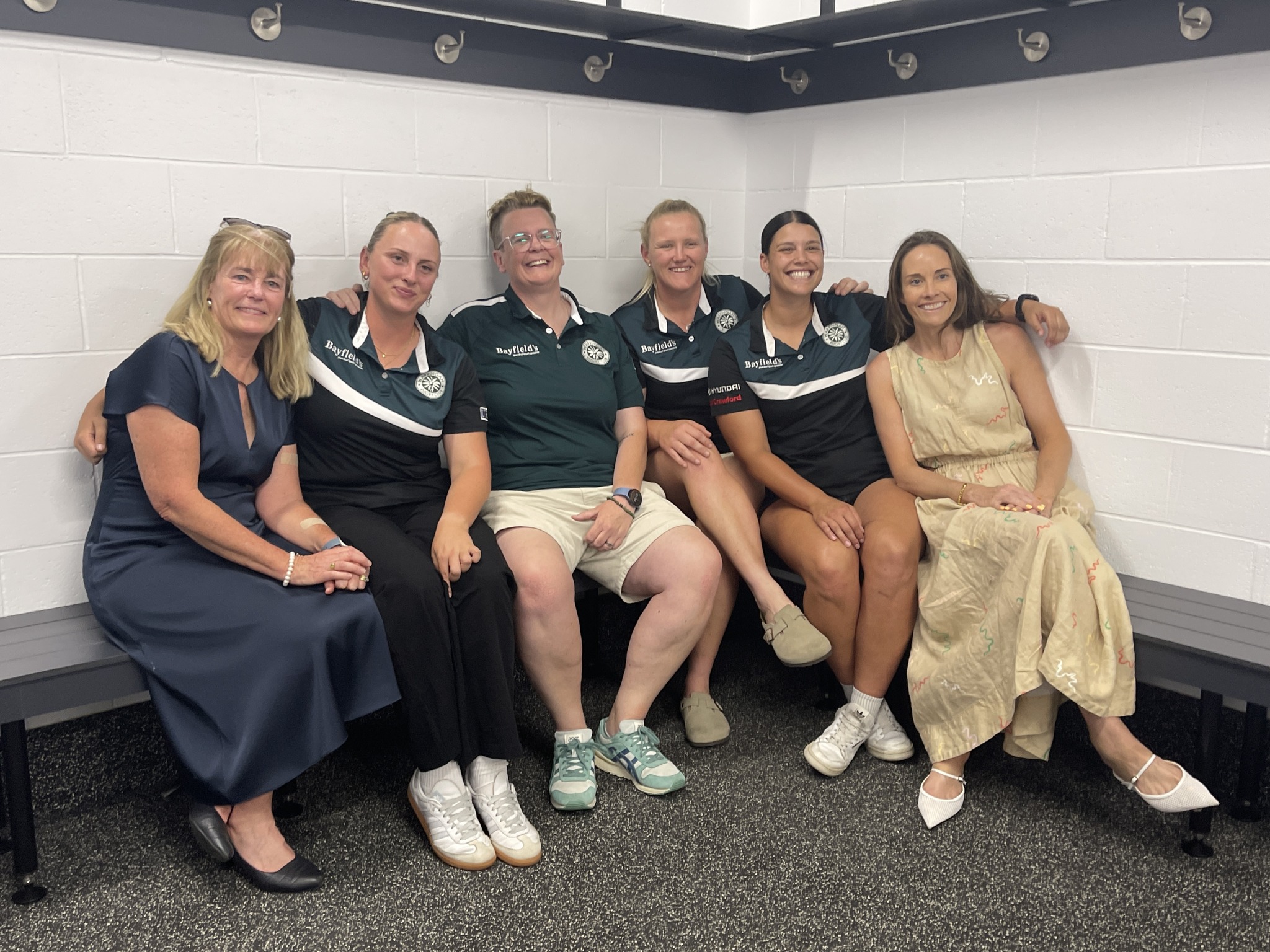
Warringah Rugby Club President Sue Barry-Cotter, Pittwater MP Jacqui Scruby and WRC women players check out the new change rooms
Surf Boats: 2025-2026 Season
SLS SNB Premiership 2025-2026 Surf Boat Series Round 2 hosted by Palm Beach SLSC: The Boaties Family Continues to Thrive under Historic Barrenjoey Headland - Saturday November 20, 2025- Friday December 12, 2025::Australia Life Saving Team selected for the 2026 Trans-Tasman Surf Boat Test Series: Collaroy, Curl Curl, Palm Beach Currumbin to represent Australia
Surf Boats at Palm Beach: A Historic Tradition
With Barrenjoey headland in the distance, the place where lifeboats were launched from the Broken Bay Customs Station on Station Beach, Pittwater, and later Barrenjoey Lighthouse to rescue those in peril at sea, and which was passed by early Palm Beach SLSC boaties on a long row to Newcastle to compete, there's no better place than current surf boat crews to test themselves and each other in a great early 2025-2026 Season carnival.
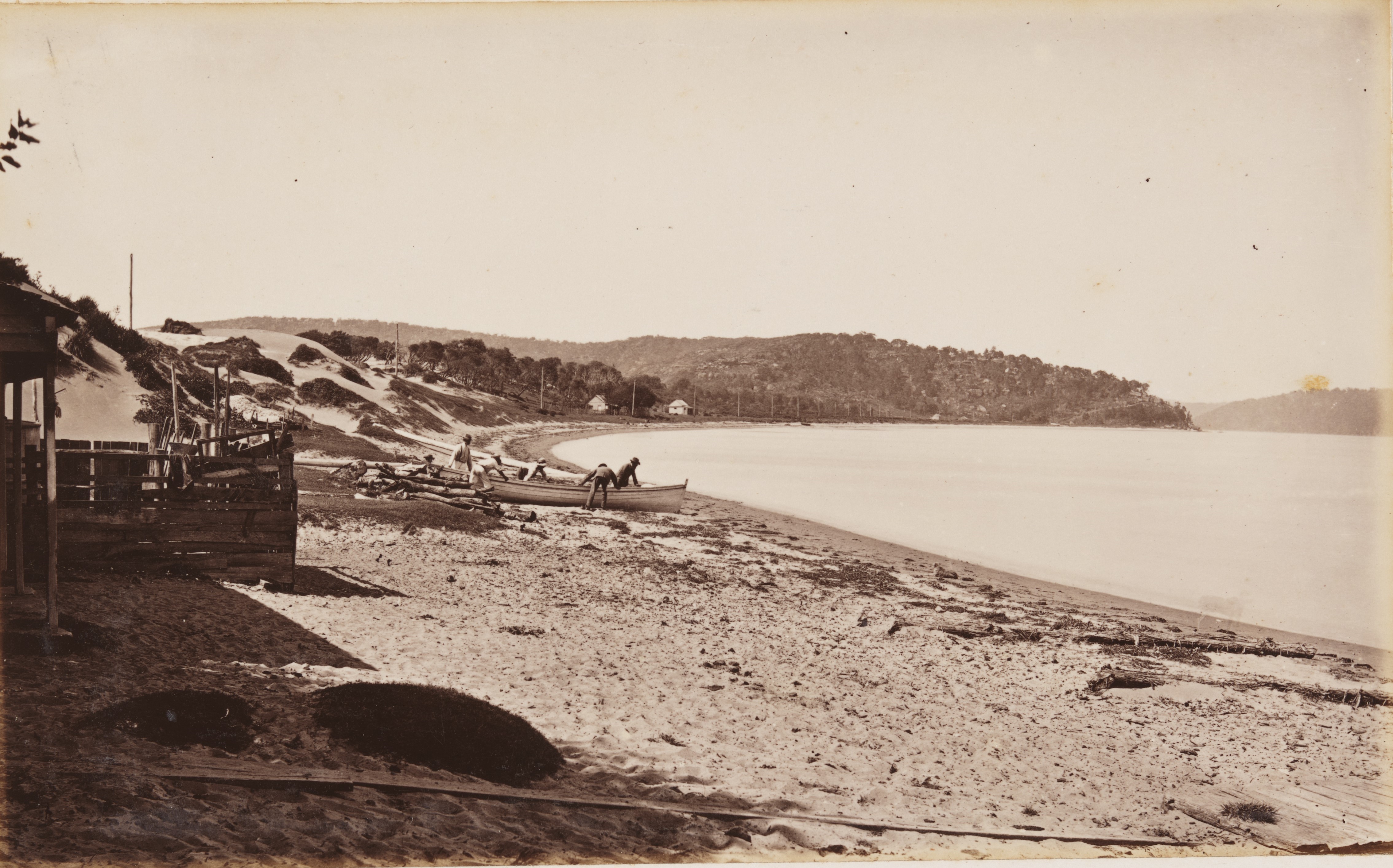
.jpg?timestamp=1707416322130)
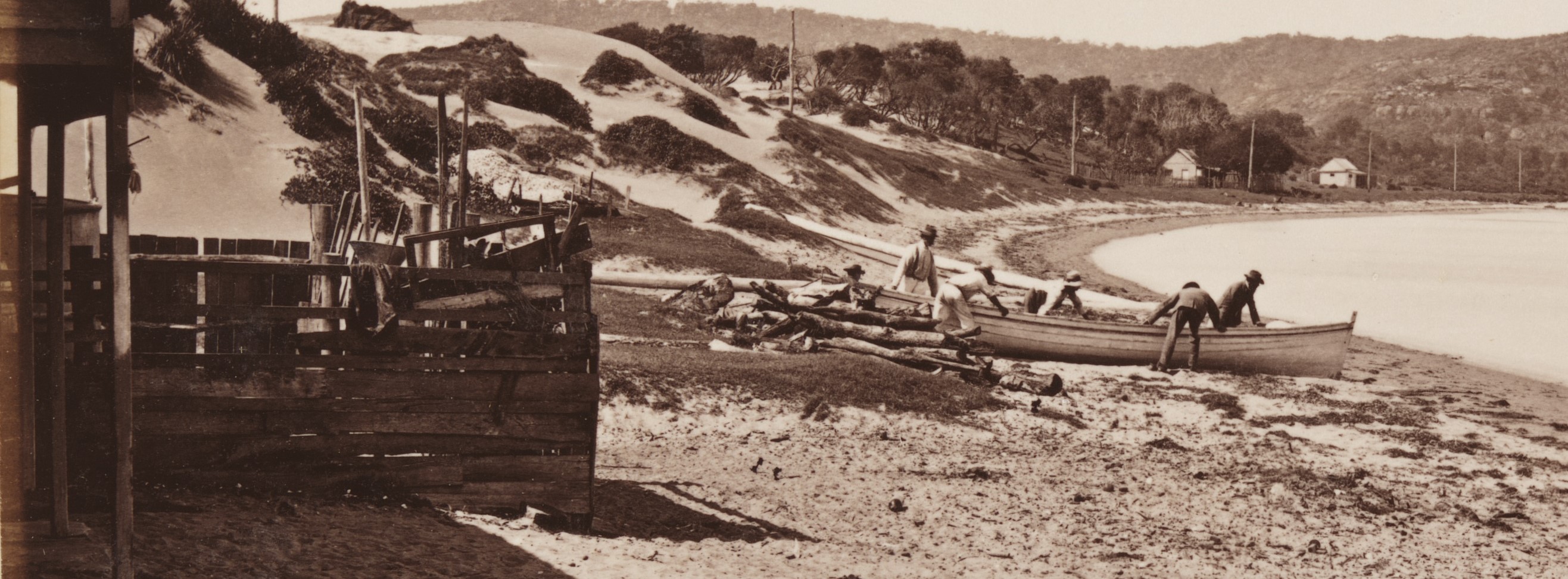
Station Beach, Pittwater, circa 1879-1880, photos courtesy State L:ibrary of NSW
Palm Beach SLSC Foundation Members Rowing to Newcastle
Early PBSLSC 'boaties' built yachts, launches and opened a shop. These foundation members were year-round permanent residents who also went out to rescue others during the off-season when called on to help.
These were real 'men of the sea' who thought nothing of rowing up the coast to be part of surf boat races in carnivals at Newcastle, where one of their number had family connections and where his father had formed part of those who went out to rescue those in peril there as had occurred under Barrenjoey.
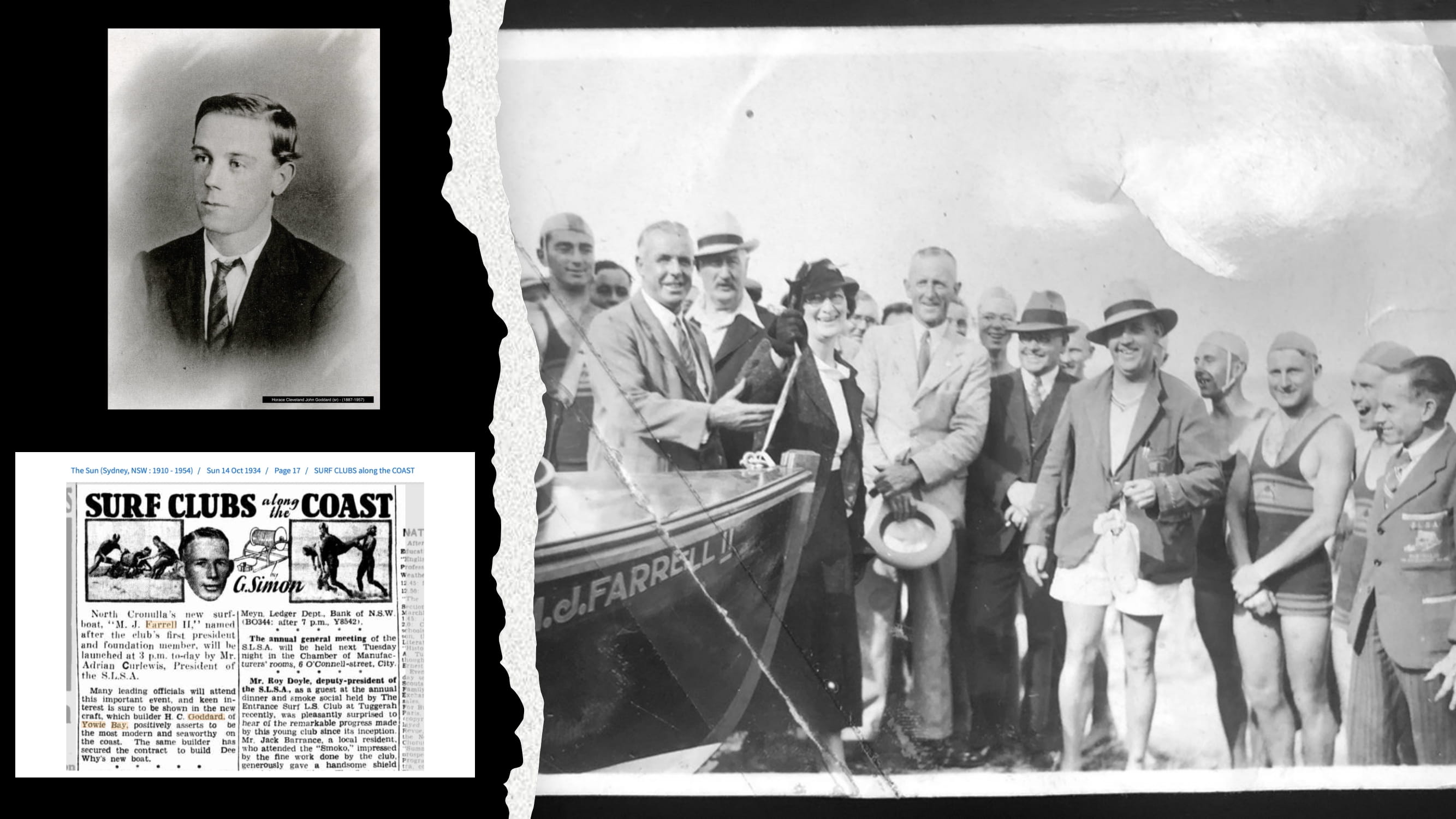
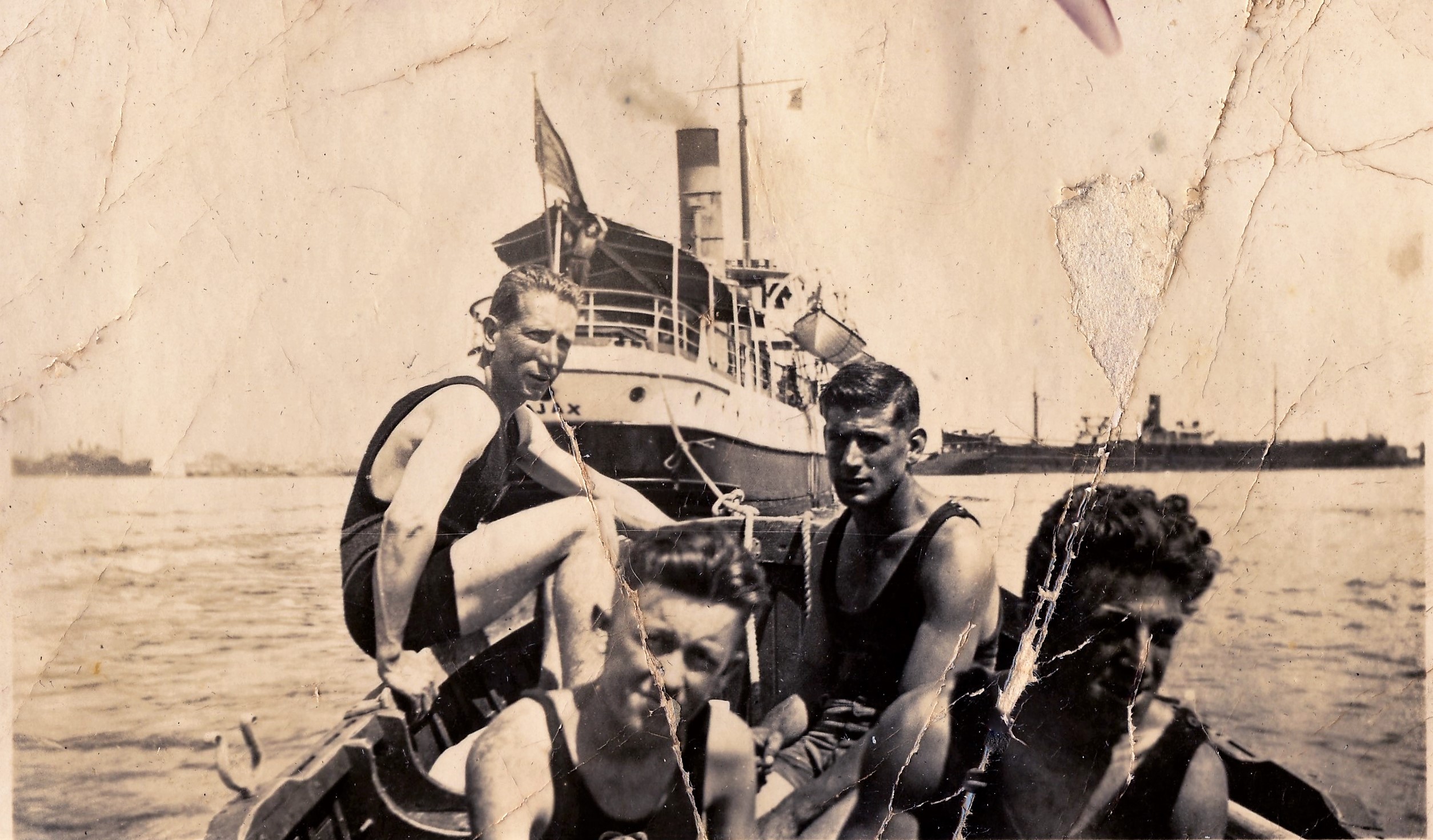
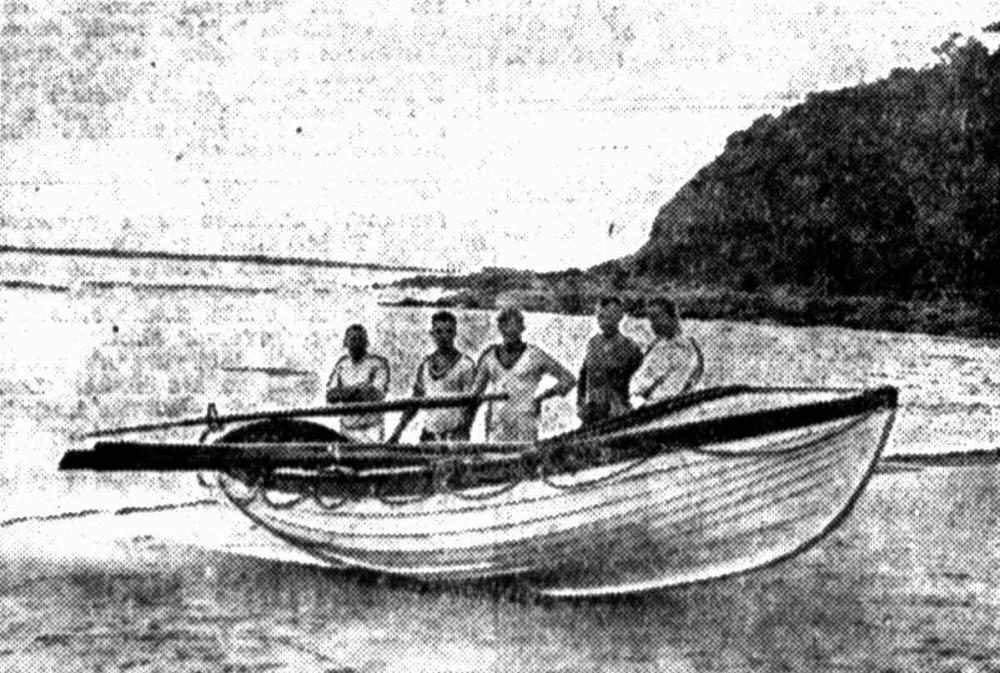
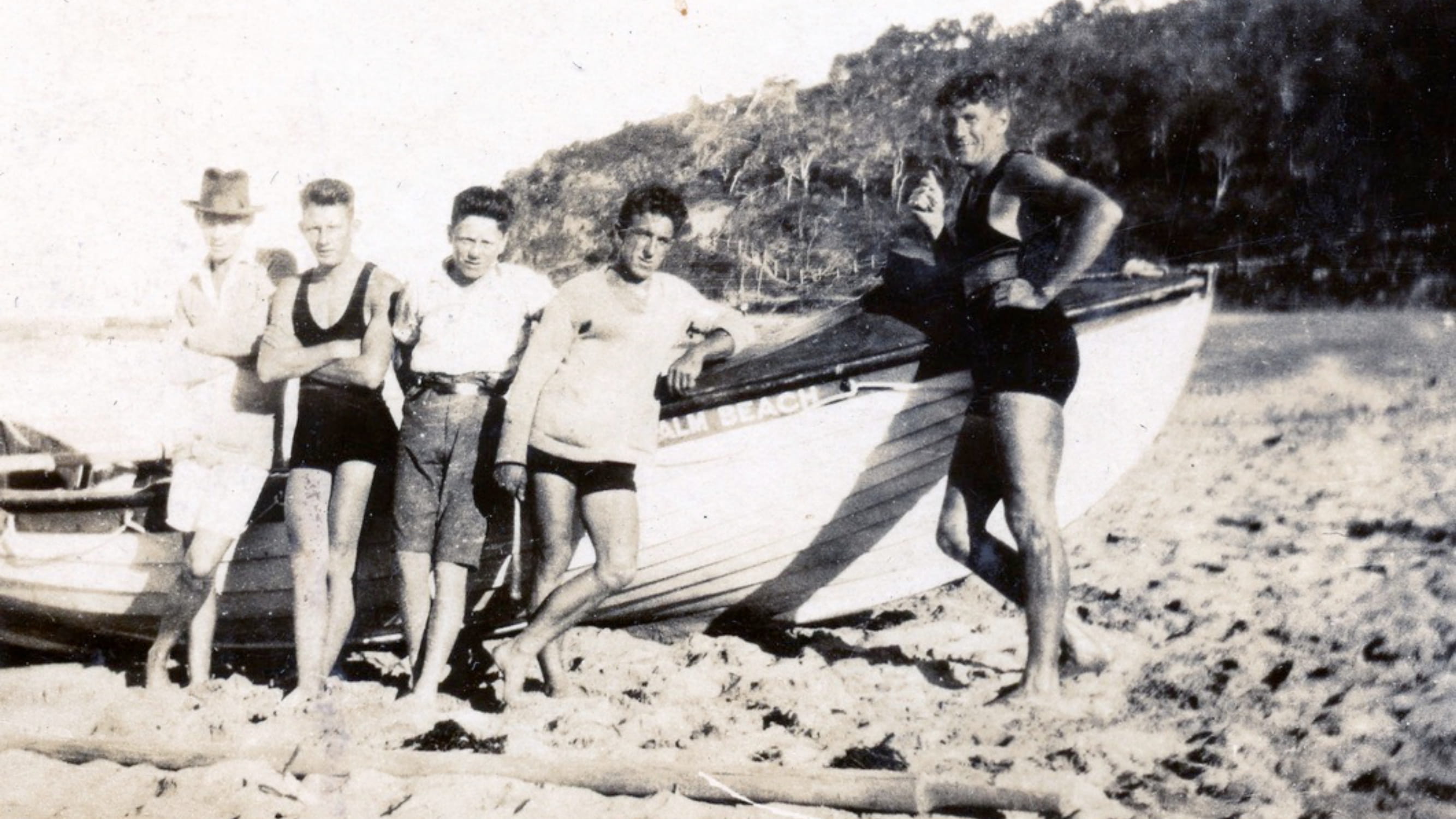
December
 Tilly Rose Cooper's Debut Children's Book is set to Inspire a New Generation of Nippers
Tilly Rose Cooper's Debut Children's Book is set to Inspire a New Generation of NippersTeen and youth leader Tilly Rose Cooper has announced the launch of her debut children’s book, A Day of New Adventures — an uplifting story inspired by her own journey as a young Nipper at Mona Vale Surf Life Saving Club.
The story follows Emily, a child experiencing her first day at Nippers, capturing the excitement of joining the surf club while exploring themes of trust, courage, friendship, family values, and water safety. Illustrated by Mona Vale SLSC member Richard Perry, the book aims to inspire families to discover the Nippers program together and help children build confidence in and around the ocean.
Tilly, who continues to make a positive impact through several community initiatives — including My Fijian Clothes Drive and The Electric Way to Pedal, an e-bike safety awareness project — says the book is her way of giving back.
“Surf lifesaving has given me confidence, courage, and a second family,” Tilly said. “I wanted to create something that helps other kids feel the same sense of belonging and bravery. This book is for every child stepping into the waves for the first time.”
A dedicated champion of community spirit, Tilly recently received the Global Leadership Network’s Next Gen Step-Up Challenge for her work supporting children and families in Fiji through her My Fijian Clothes Drive. The Global Leadership Network’s Next Gen Step-Up Challenge invited young people to share their leadership impact in 60-second short films, capturing what it means to step up, make tough choices, and lead for others.
Tilly also proudly serves as an Ambassador for the Kimaya Brighter Minds Program, promoting youth leadership and positive decision-making across Fiji and Australia.
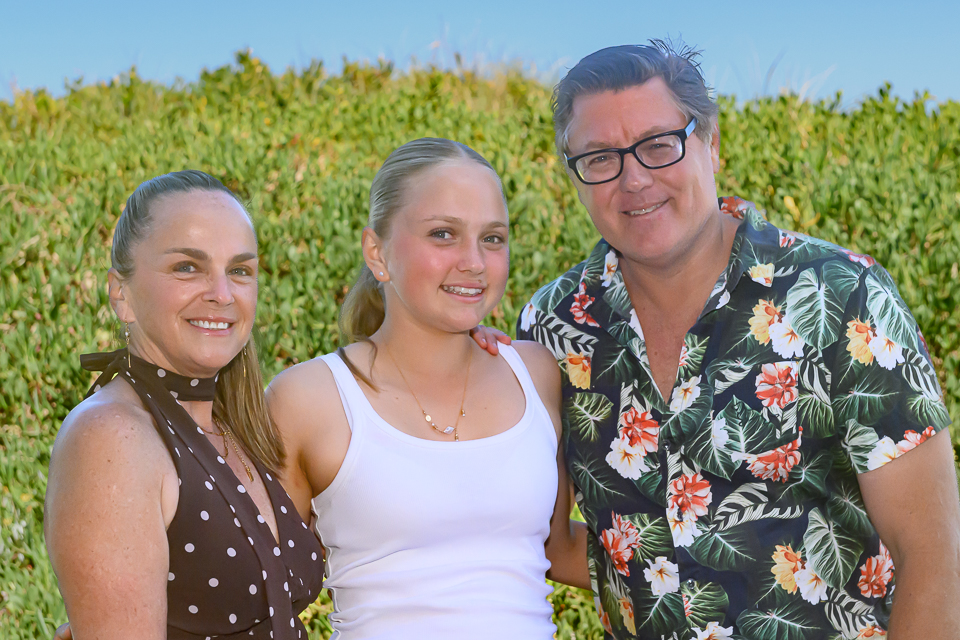
The Cooper family. Photo: Michael Mannington OAM

Tilly Cooper with her debut children’s book, A Day of New Adventures. Photo: Michael Mannington OAM
Natalie Scott Shares her First Memoir, at 97
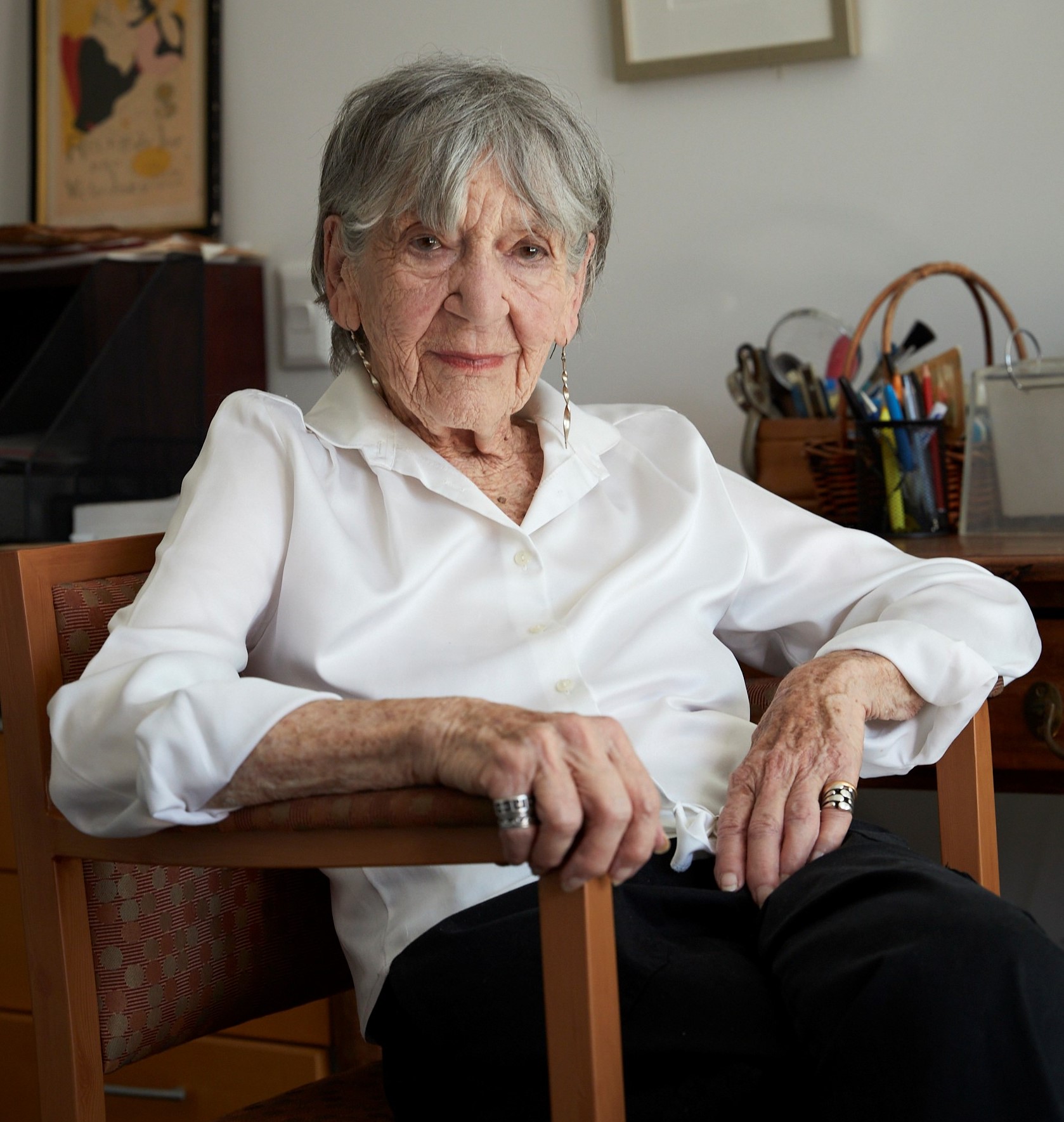
Warriewood resident Natalie Scott is a writer of novels, short stories, non-fiction, and books for children, many of which have been published internationally.
Now 97 years young, the ex-journalist is turning the spotlight on her own life. Born to middle-class parents of European origins, Natalie’s memoir, A Secret Grief, centres around the formative years of her childhood which was shaped by beauty, fear and fierce emotional undercurrents in 1930s and 1940s Australia.
Affectionately nicknamed ‘Natasha’, Natalie’s childhood was over-shadowed by her complex and brilliant mother, Nina, whose first act of motherhood teeters on the edge of tragedy. Her father, Marcus, is warm and sociable but torn between loyalty to his wife and love for his daughter. In an effort to protect Natasha, he sends her to a conservative boarding school in the Blue Mountains.
There, under the rule of two stern spinsters, one English, one French, Natasha enters a world of strict routine, silence and subtle cruelties. Beyond the school gates, the Depression and World War II reshape the world; within them, Natasha faces her own struggles; loneliness, loss and the pressure to conform.
In time, she runs from the school and towards her own developing sense of self.
Unflinching and lyrical, A Secret Grief is a meditation on memory, survival and the forces that shape, and sometimes fracture, our earliest bonds. With exquisite honesty, Scott captures both the fragility and resilience of the human spirit.
A Secret Grief is an incredible insight into not just Natalie's own childhood, but also a vivid, detailed and beautifully written depiction of life in an era gone by.
A columnist for The Sydney Morning Herald, Natalie has written for television and radio and has contributed to many literary magazines, including The Griffith Review, Southerly, Westerly and Meanjin. She has also conducted courses in creative writing at both NSW and Macquarie Universities.
Her debut novel, Wherever We Step the Land is Mined (1980), published in Australia, the UK and USA, explores a woman’s struggle for independence, while her second, The Glasshouse, examines the anguish of old age and the guilt of selfish choices. The late Ruth Cracknell recorded The Glass House for the ABC, and also narrated Scott’s Eating Out and Other Stories, which won both the National Library TDK Audio Book Award for Unabridged Fiction and The Women Writers Biannual Fiction Award.
And that's just the tip of the iceberg of a literary and journalism career that spans decades and places Natalie among Australia's Women of Letters.
Pittwater Online recently spoke to Natalie to try and find to where it all comes from and more about her newest work. More in her Profile: Natalie Scott Shares her First Memoir, at 97
- 2025 Australian Surfing Awards Honourees: Long Reef Boardriders Win Simon Anderson Boardrider Club Award - Locana Cullen receives Mick Fanning Rising Star Award - Tom Myers Wins Heavy Water Award - More Positive News on the Way
- Sunday December 7 announcement: Minns Government announces $2.5 million boost to summer beach safety with immediate extra shark surveillance drones
- 2025 Australian Junior Surfing Titles: Local Winner Ben Zanatta Dedicates His Australian Title Triumph to Mercury Psillakis – Kincumber’s Talia Tebb wins back-to-back Australian Junior Surf Titles by Suzie Leys
- Maximum legal power output of e-bikes in NSW to be reduced to 250 watts - Federal Government reinstating EN-15194 standard: Scamps Welcomes changes, Scruby calls for NSW to lead with e-bike licensing and registration
- Fledging - Baby Birds coming to ground: Please try and Keep them close to Parent Birds - Please Put out shallow dishes of water in hot weather
- Work Experience: Y10 - Mobile Photography lesson by Joe Mills in a stroll through Warriewood Wetlands
- Australian Government Appointments Framework Released alongside Briggs 'Report of the Review into Public Sector Board Appointments Processes; No Favourites'
- NSW Health: residents urged to take care this mosquito season - Visitors-Residents of 60 LGA's urged to guard against JE Virus
- Christmas-New Years 2025-26 Checklists: Preparing The Garden & Home - Entertaining - Gift Ideas For Every Budget

The 2025 Australian Junior Surfing Titles has run this past week, with a number of local surfers making the NSW Team.
Featuring the nation's best junior surfers, the Australian Junior Surfing Titles encompasses individual divisions for U14-U18 junior men and women, as well as a school surfing division for U16-U19 (MR Shield) junior men and women. The seven-day competition took place between November 29th and December 5th, 2025.
U16 and U18 winners earn a spot on the Australian National Surfing Team, The Irukandjis team, for the 2026 ISA World Junior Surfing Championships.
Dee Why surfer Ben Zanatta won the 2025 Australian Title, taking out the U18 Men’s Division.
During the U18’s Final between Ben and Queensland’s Will Martin, commentators of the live broadcast shared Ben was riding a Psillakis surfboard, crafted by Mike Psillakis of Psillakis surfboards at Brookvale. Mike is the twin brother of Mercury, a Long Reef Boardriders member, who our community recently lost on his home break at Long Reef-Dee Why through a fatal shark attack.
Pittwater MP Jacqui Scruby, as well as Longy Boardriders and Maria, Merc’s wife, called for more drone surveillance to increase safety at popular metro surfing and swim spots as Summer commenced, a call backed up by the council.
Ben and his fellow team mates were jumping all over the oceans' edge when it became apparent he'd won - just before they chaired him back up the beach.
Immediately after winning Ben said: ‘’I was frothing to get chosen for the NSW team and then chosen as Team Captain. And now I’m frothing to be part of the Irukandjis Team and represent Australia at the 2026 World Junior Surfing Championships.’’
‘’I’d like to thank my mum and dad and girl and Dee Why Boardriders and especially Mike Psillakis and Merc – this is for Merc Psillakis, he has definitely helped me achieve goals. During the last few months I’ve felt like he (Merc) was by my side.’’
Competing in the Australian Junior Surfing Titles is a huge achievement, and the whole community has been behind the NSW Team and the young surfers from the peninsula who were chosen to represent the state, following the comp over its 7 days.
Team NSW. Photo Credit: Surfing Australia / Andrew Shield. More in: 2025 Australian Junior Surfing Titles: Local Winner Ben Zanatta Dedicates His Australian Title Triumph to Mercury Psillakis – Kincumber’s Talia Tebb wins back-to-back Australian Junior Surf Titles by Suzie Leys
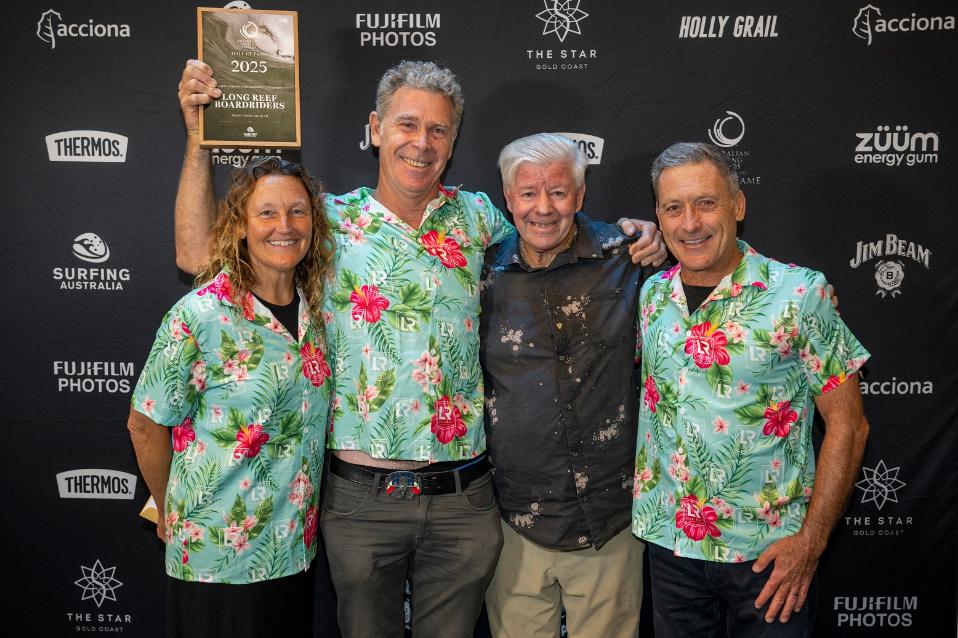
Long Reef Boardriders take out the BIG ONE AROUND HERE Award - for Community. Pictured here with Wayne "Rabbit" Bartholomew AM. Photo: Surfing Australia / Ethan Smith
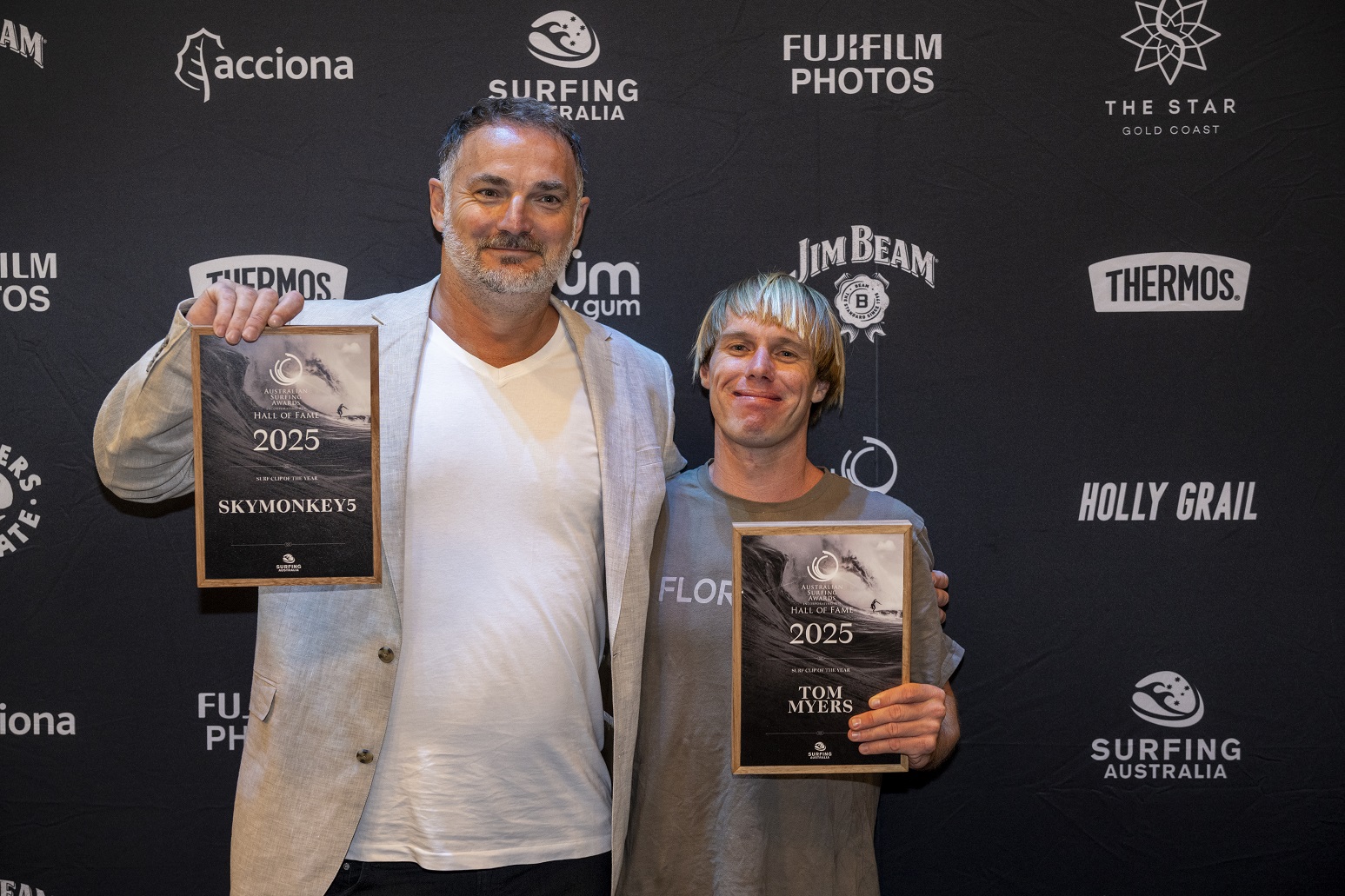
Simon and Tom - a great way to close a great year. Photo: Surfing Australia / Ethan Smith
%20Loci%20Cullen%20win.jpg?timestamp=1765041319556)
Loci with his Award. Photo: Surfing Australia / Ethan Smith more in 2025 Australian Surfing Awards Honourees: Long Reef Boardriders Win Simon Anderson Boardrider Club Award - Locana Cullen receives Mick Fanning Rising Star Award - Tom Myers Wins Heavy Water Award - More Positive News on the Way
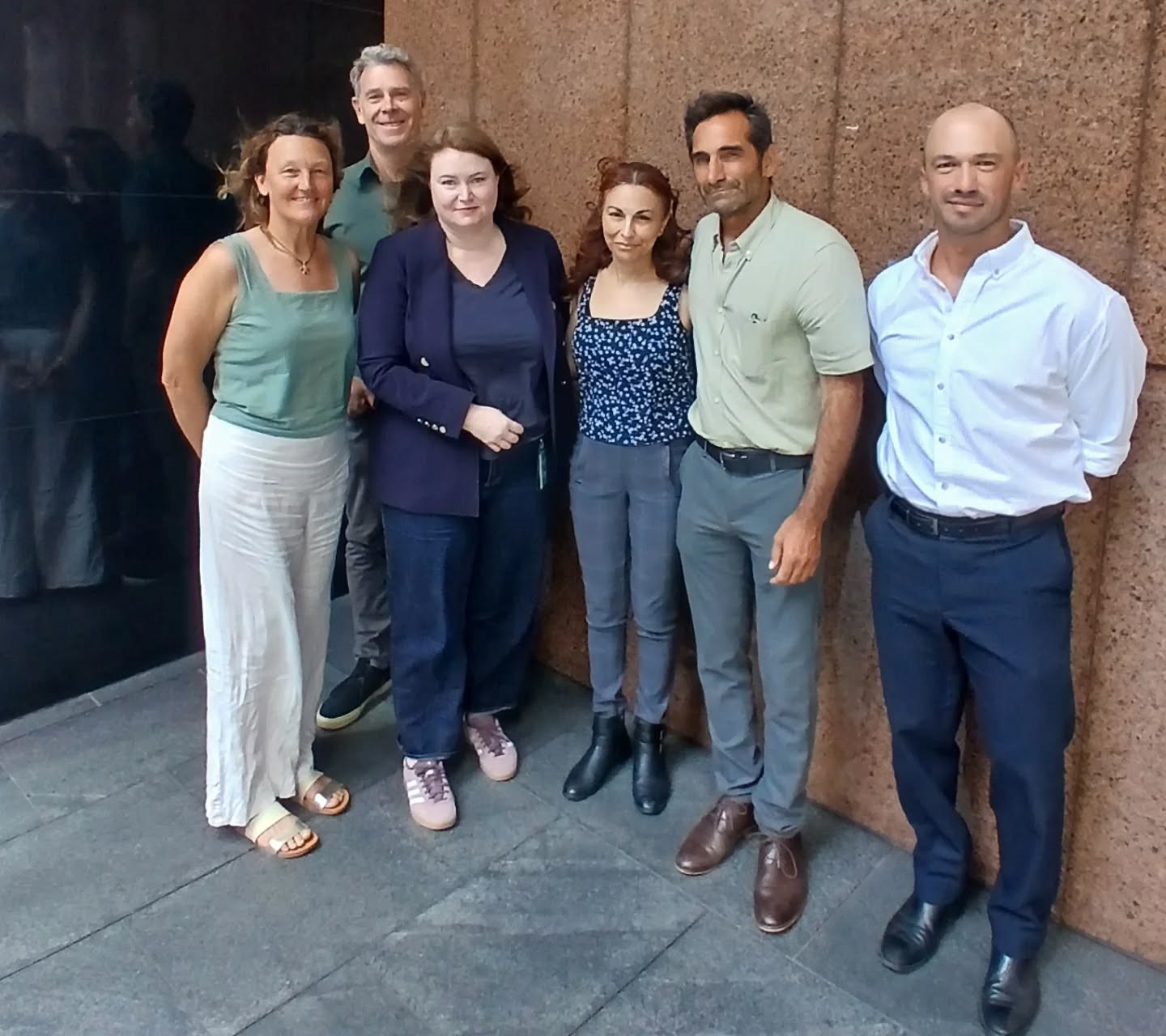
Current Long Reef Boardriders Association President Natasha Gee and Carlos Blacksmith The Hon Tara Moriarty MP, NSW Minister for Agriculture, Maria Psillakis, widow of Mercury, Mike Psillakis, Merc's twin brother, and Lucas Townsend, CEO of Surfing NSW . Photo: LRSA. More in: Sunday December 7 announcement: Minns Government announces $2.5 million boost to summer beach safety with immediate extra shark surveillance drones
A/Professor Richard West, is stepping down as President of the Palm Beach Whale Beach Association (residents group) at the end of this year after ten significant years during which there have been many successes.
A/Prof West AM took over the reins after previous President of the PBWBA Storm Jacklin stepped down
Never forgetting the Association’s main objective to preserve and enhance the natural beauty of the area and protect its residential amenity, Professor West has worked tirelessly representing the Association across all levels of government. He has focused on achieving the most important safeguards and directed the Association’s efforts in the most practical ways.
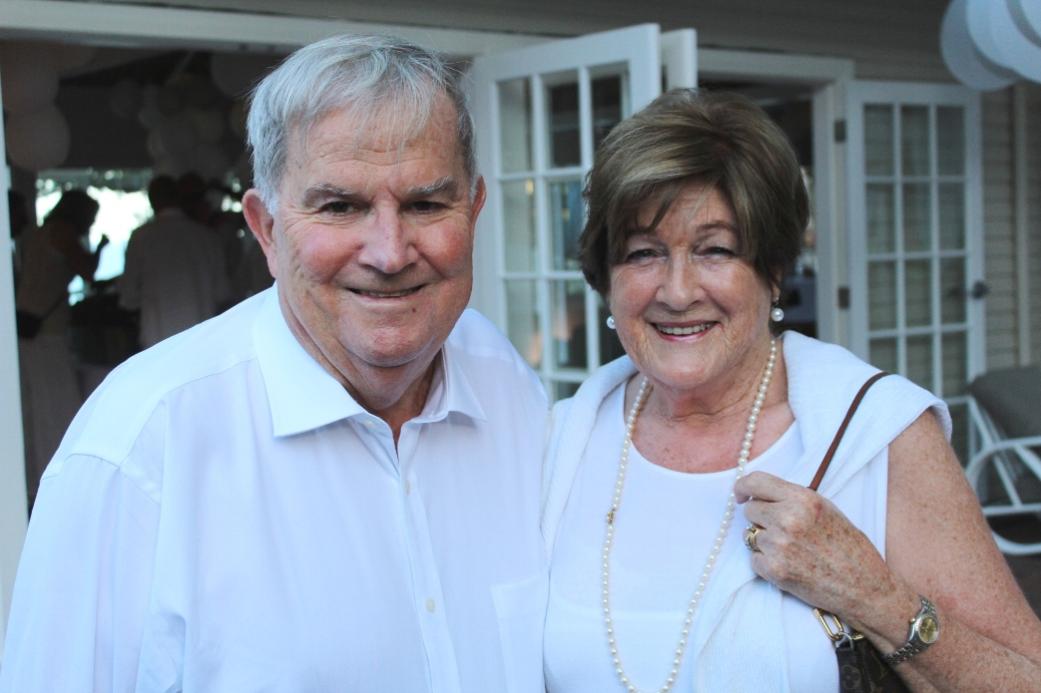
Richard and Anne West at the 2016 Pacific Club's Blanc de Blanc Fundraiser for Palm Beach SLSC
%20160.jpg?timestamp=1763755511567)